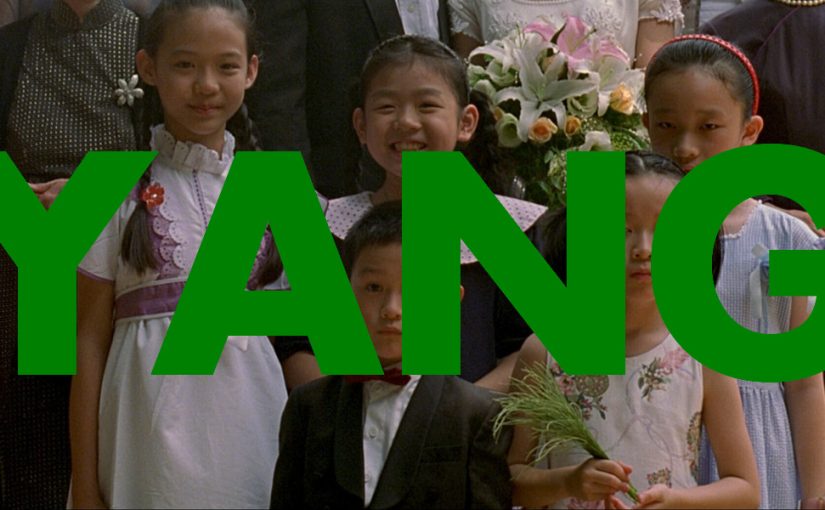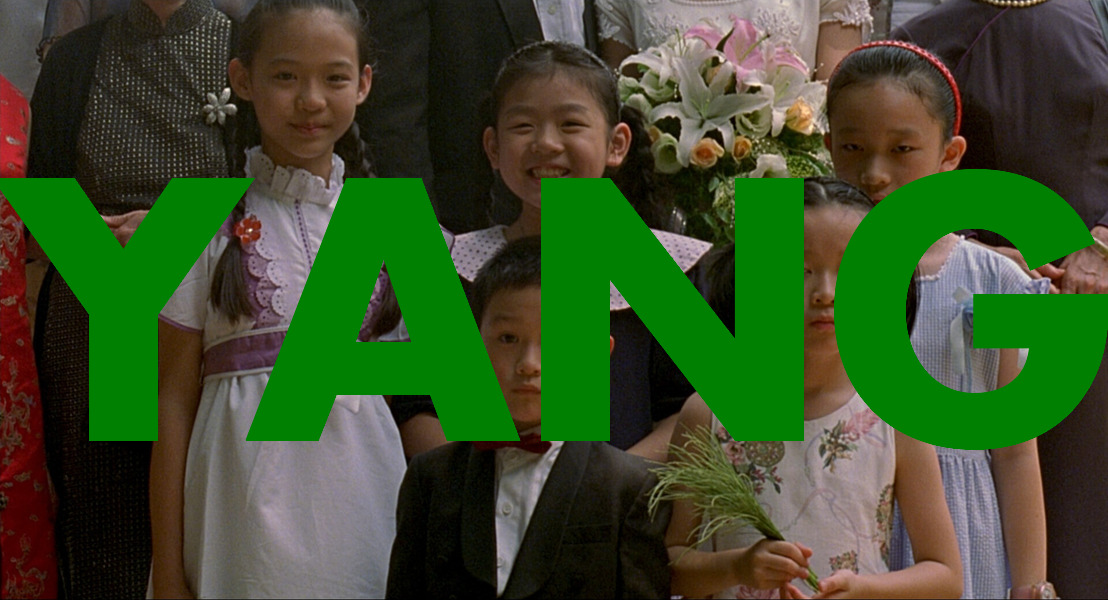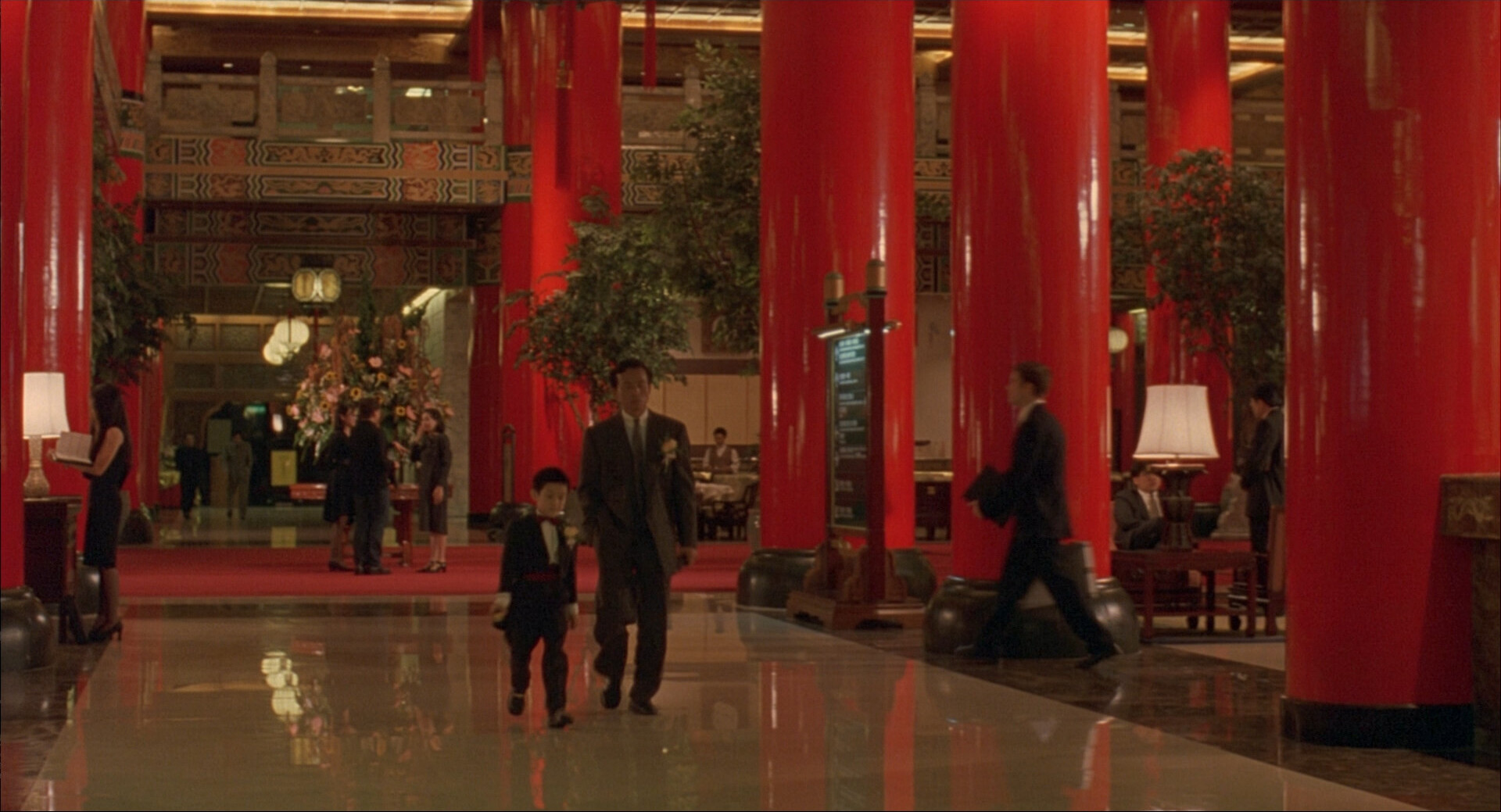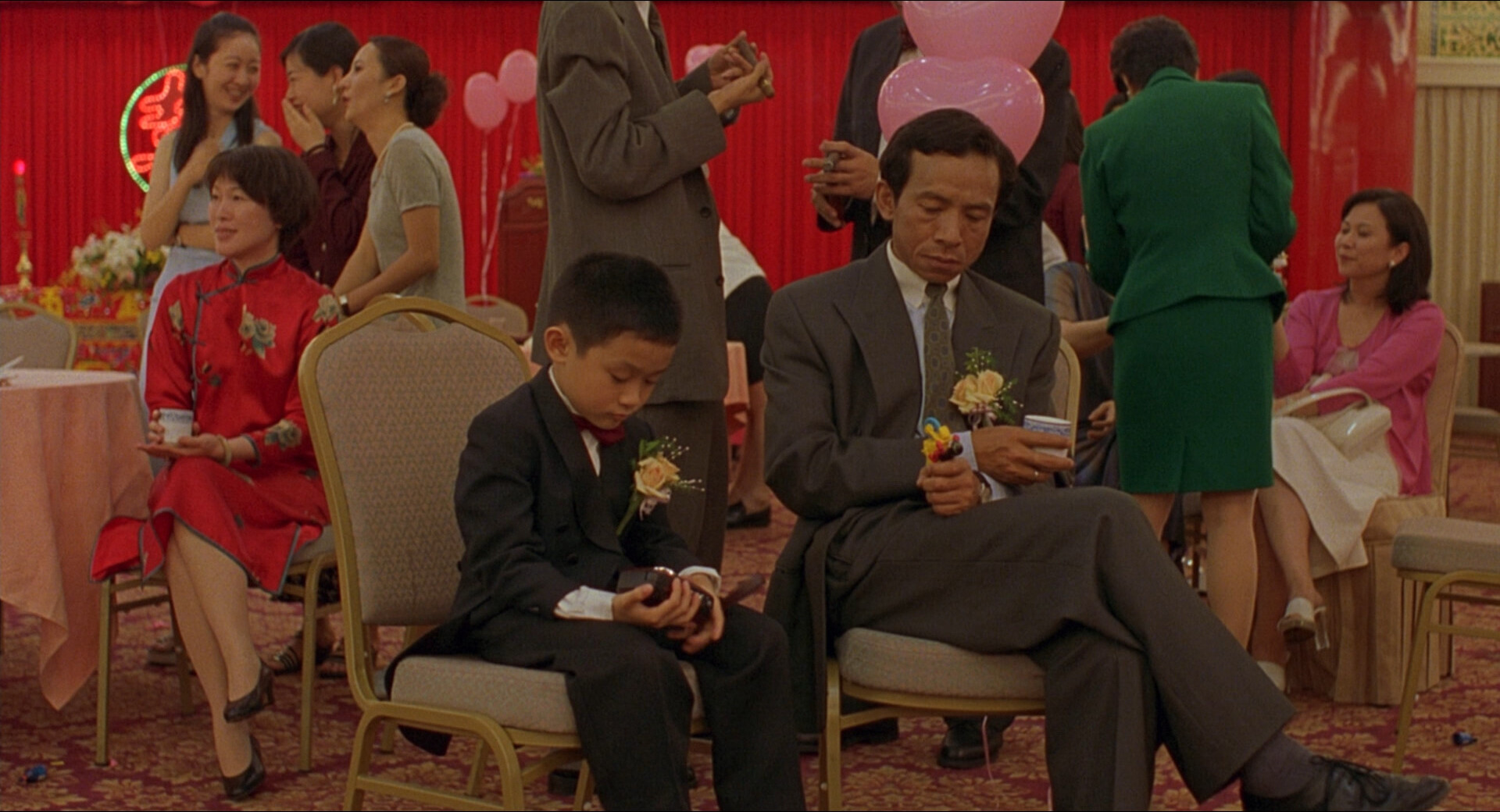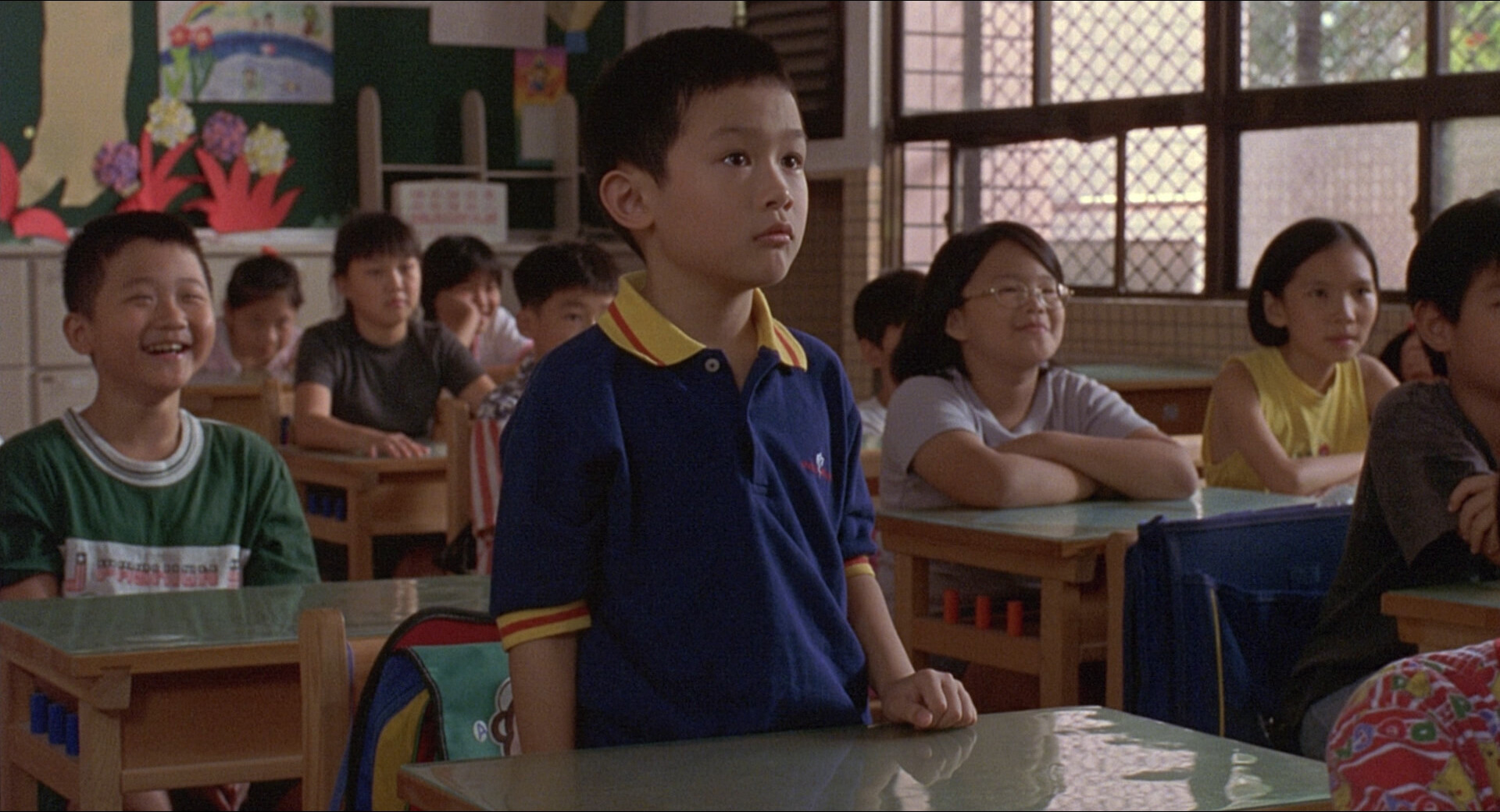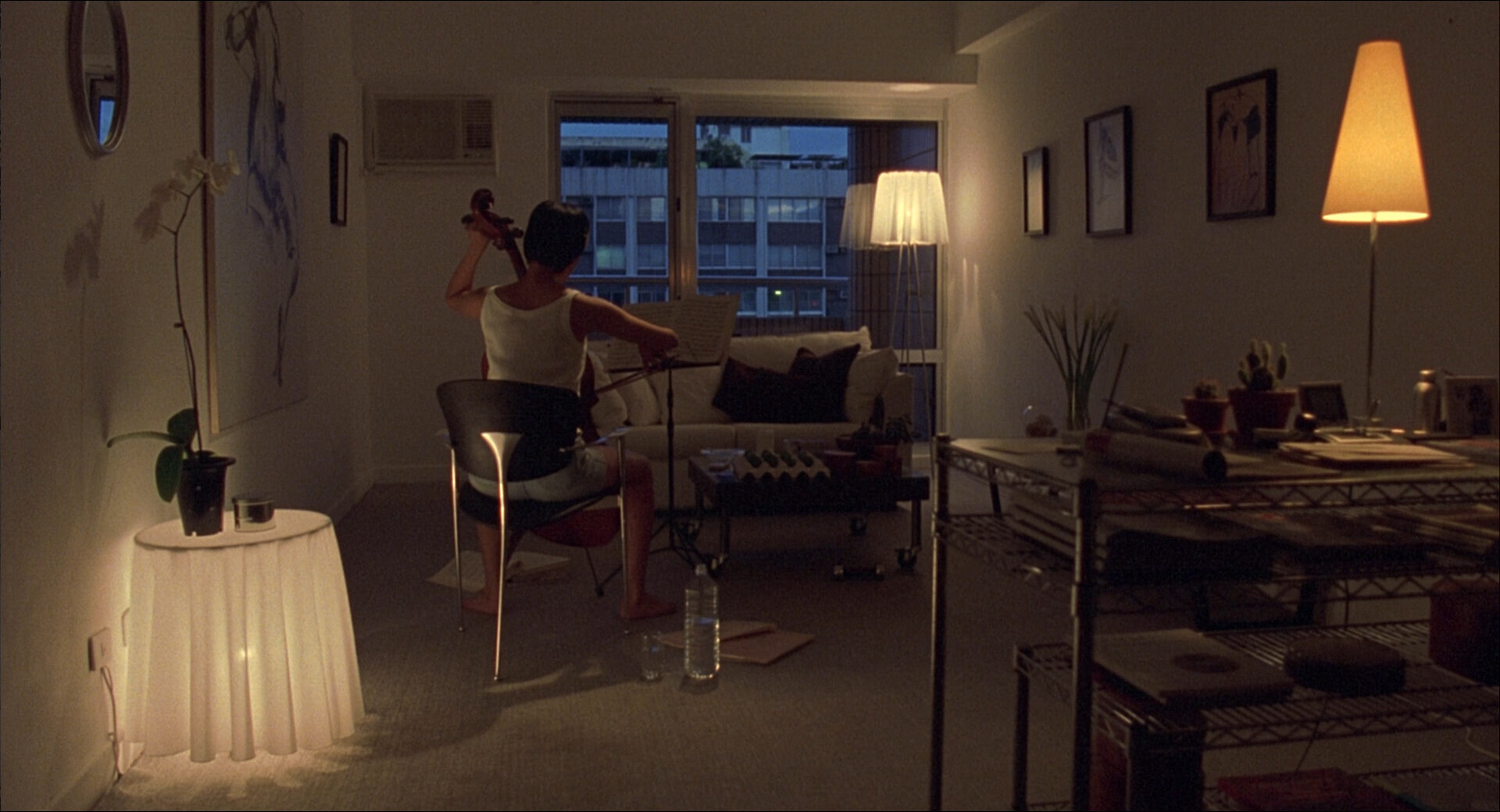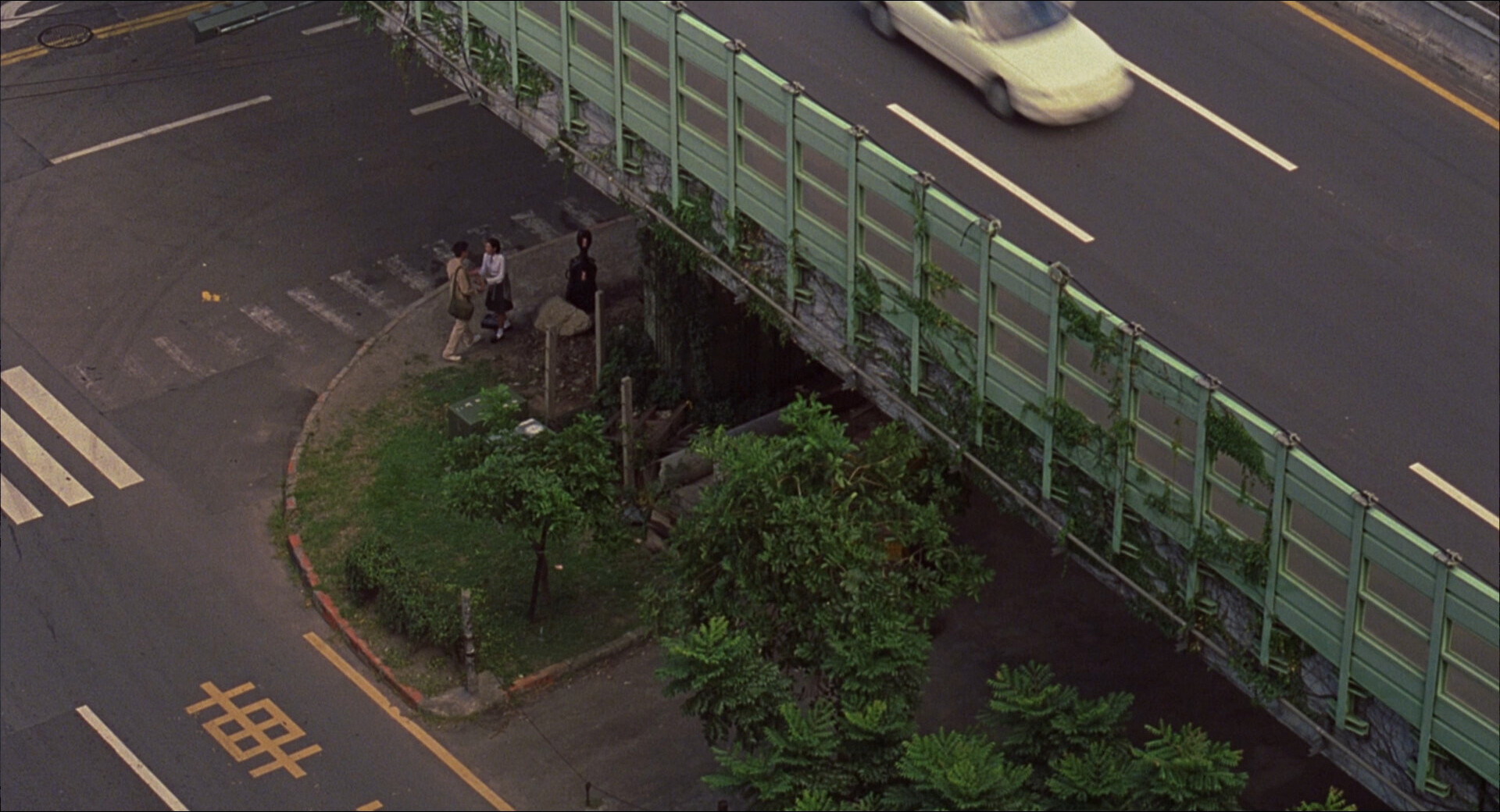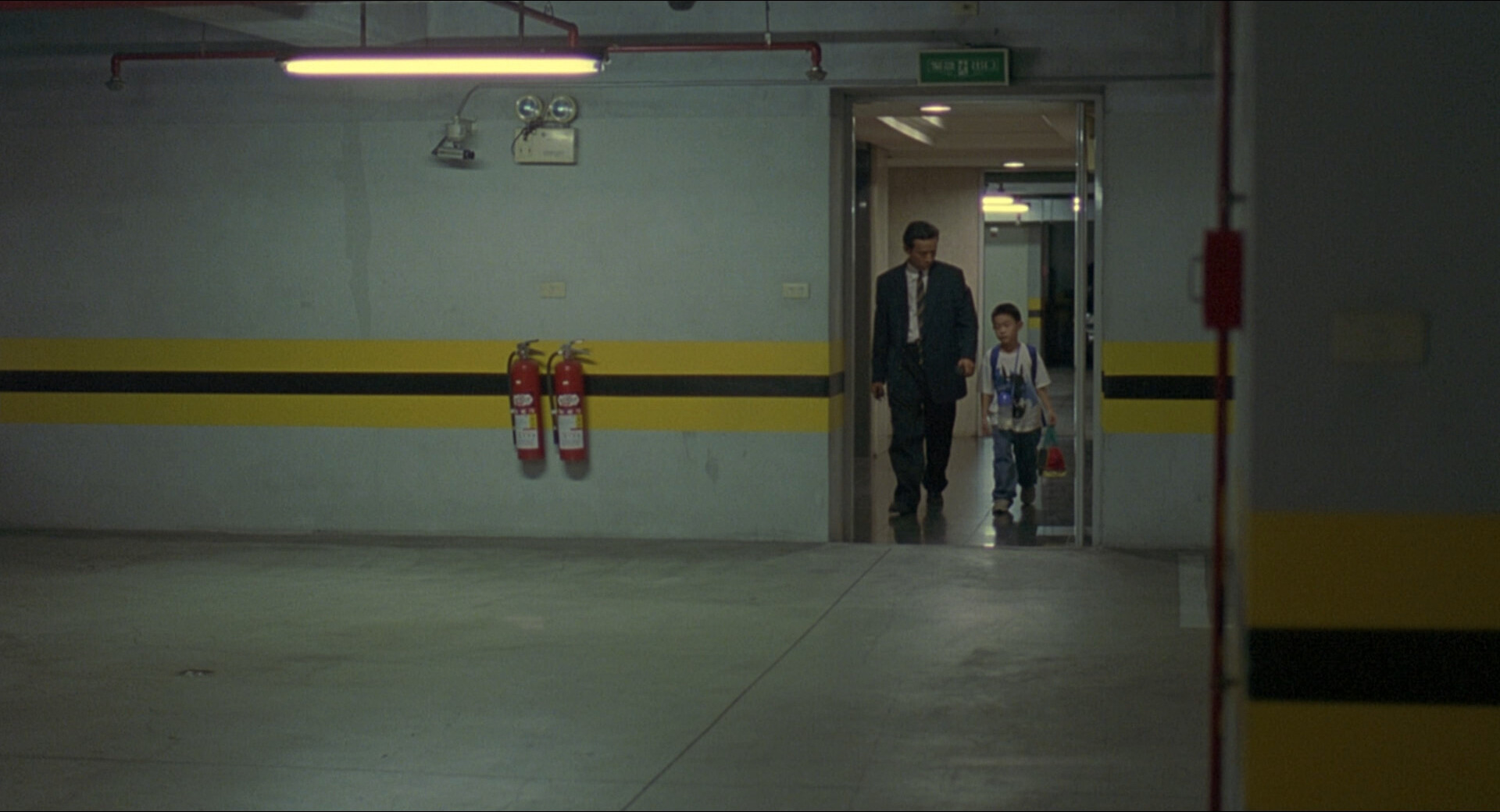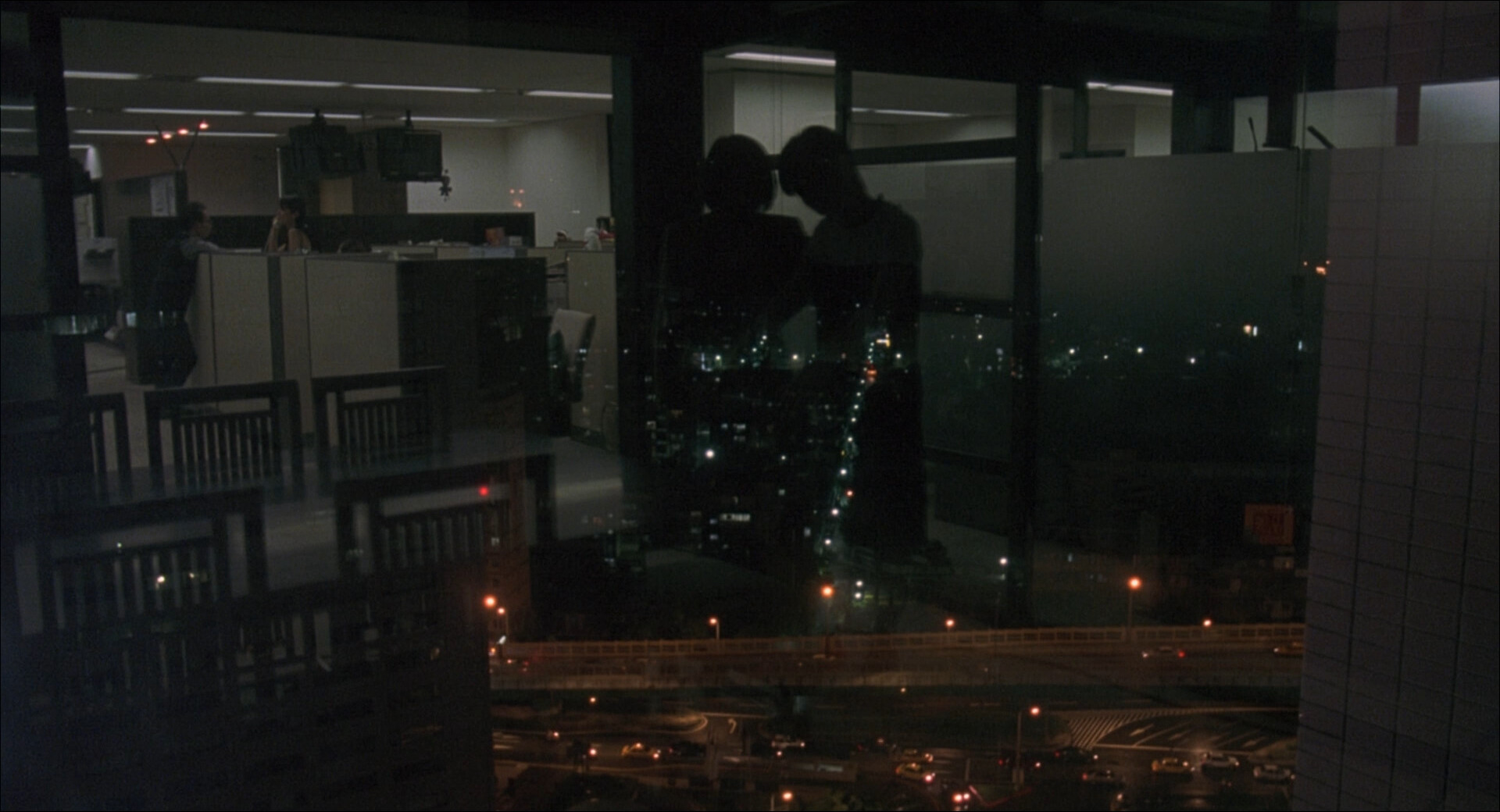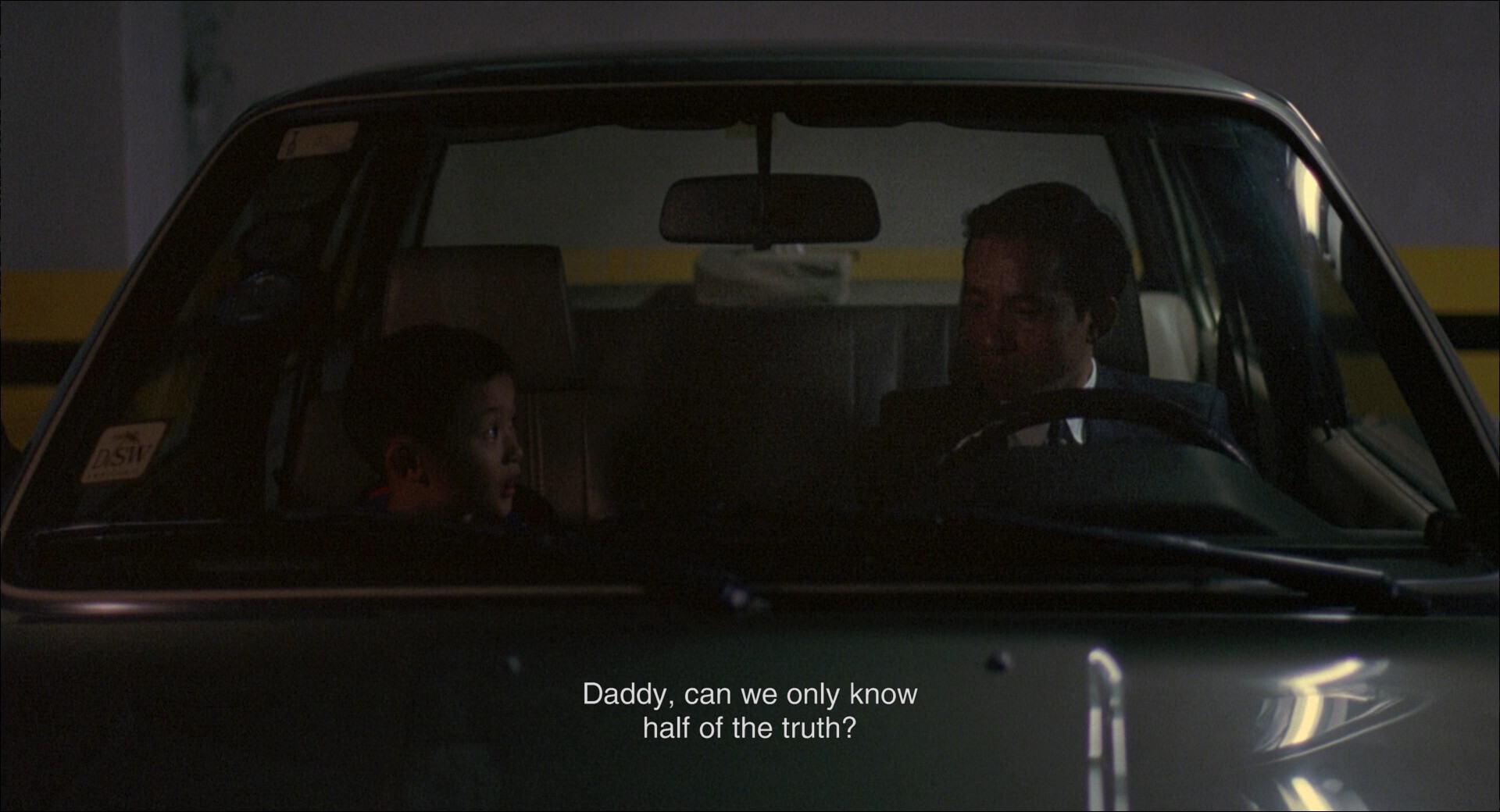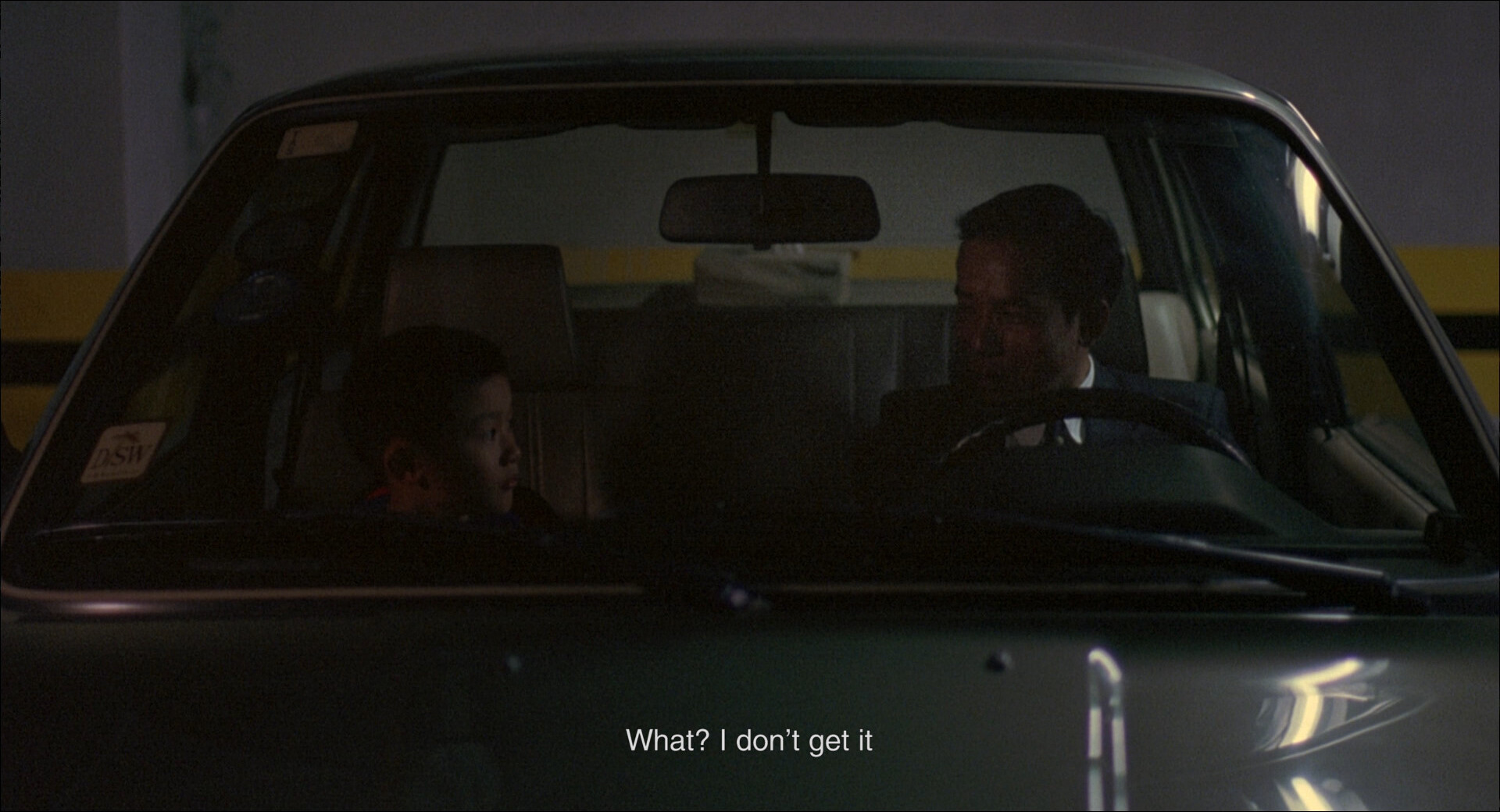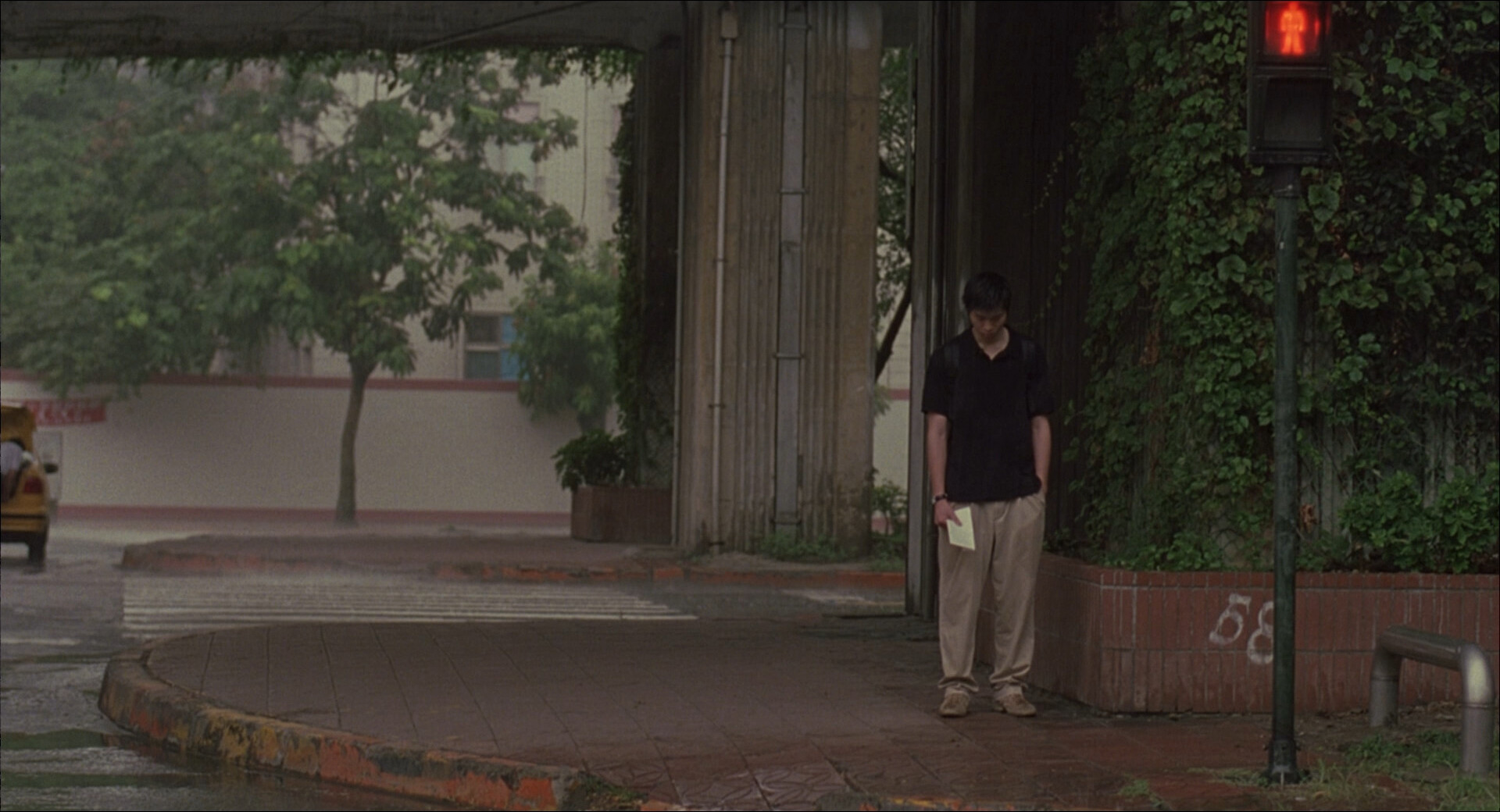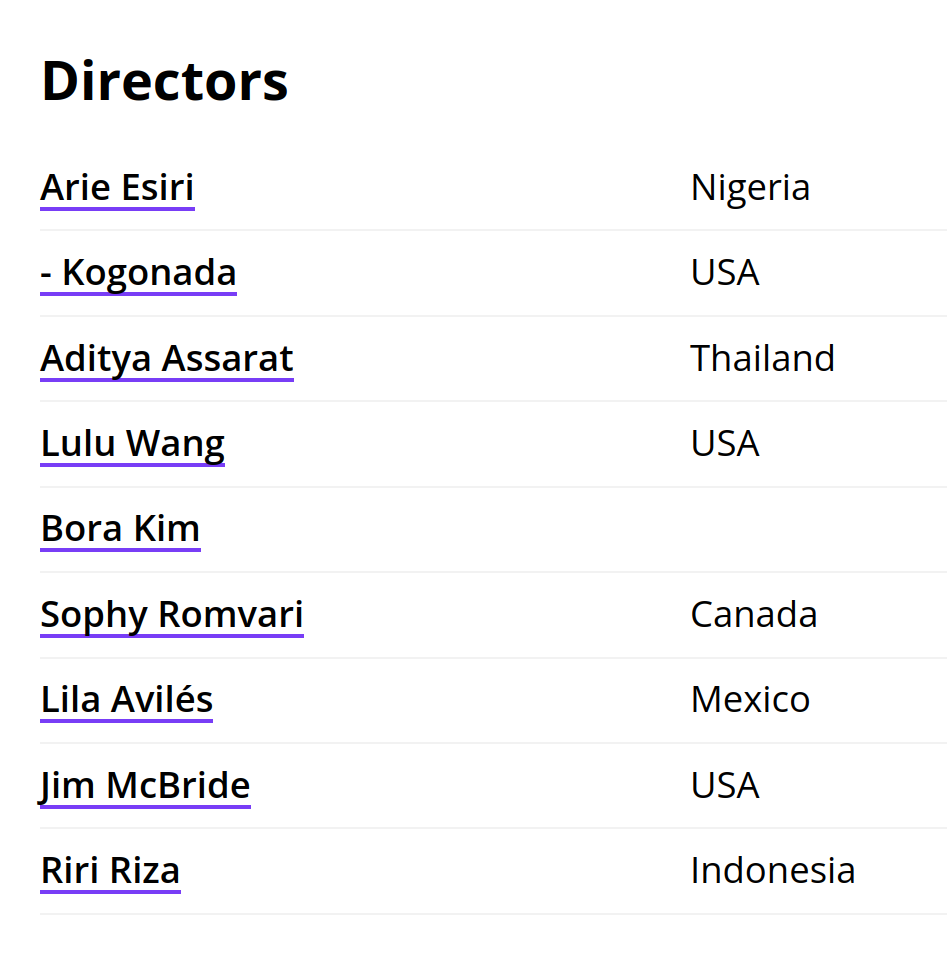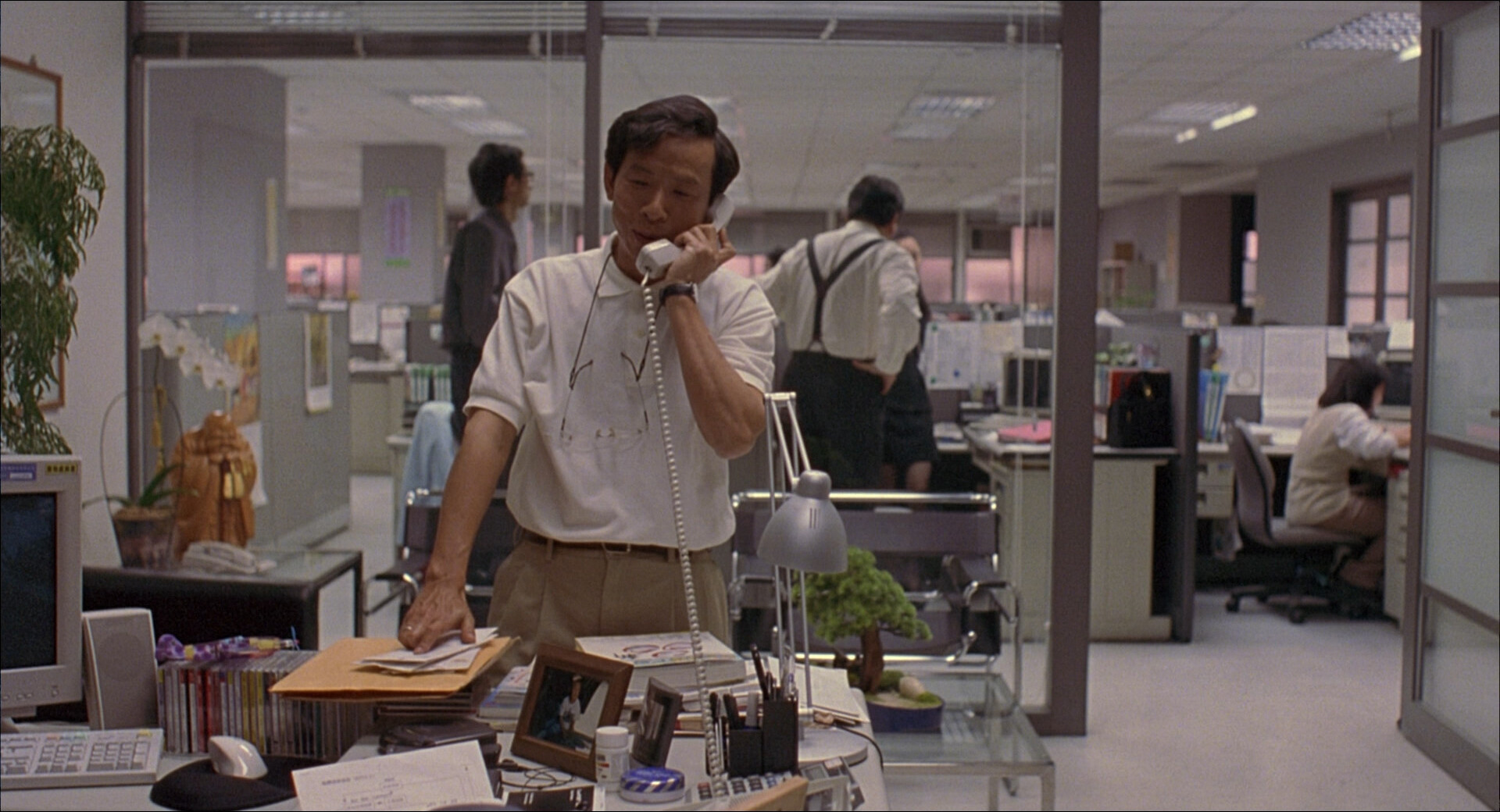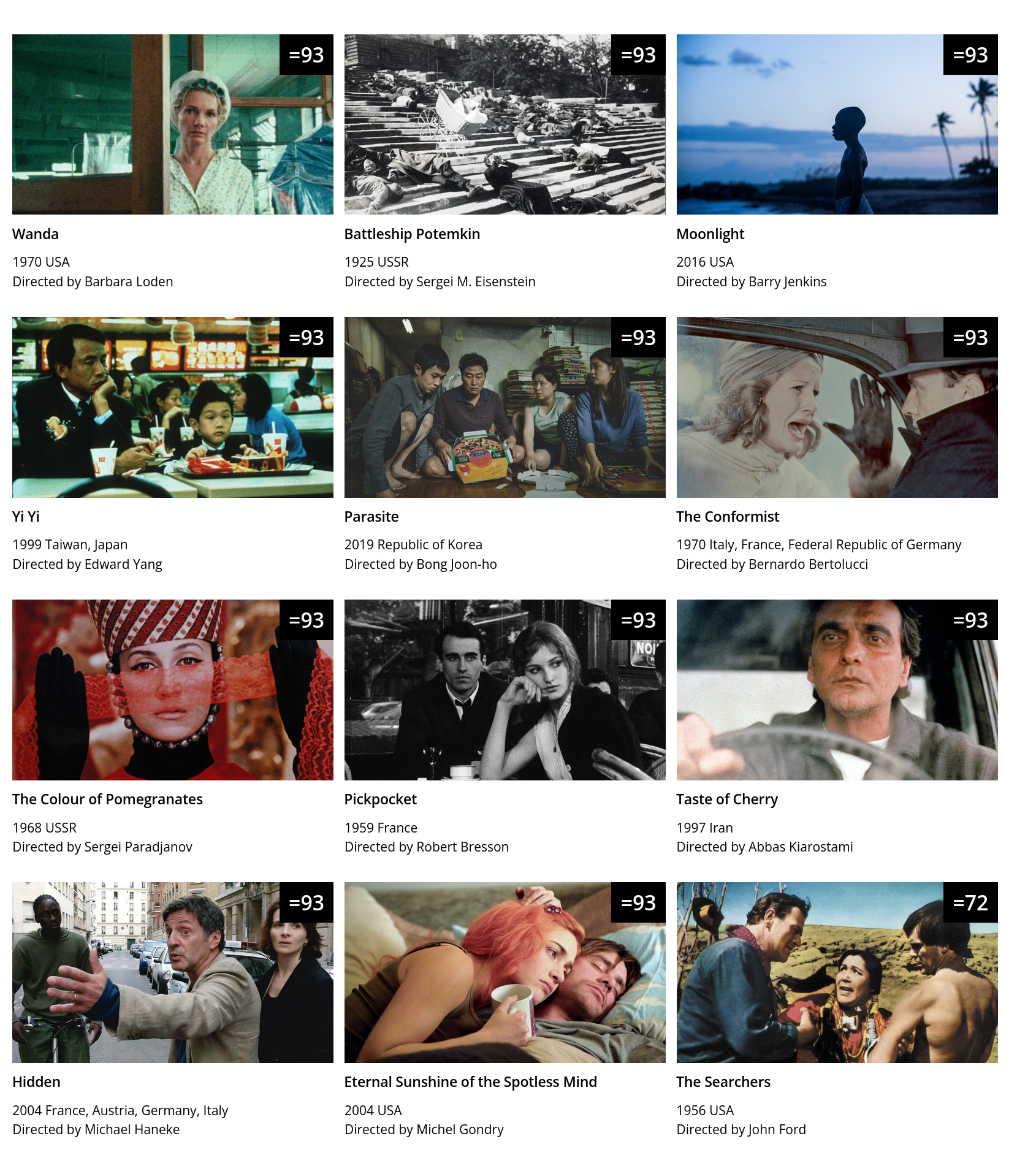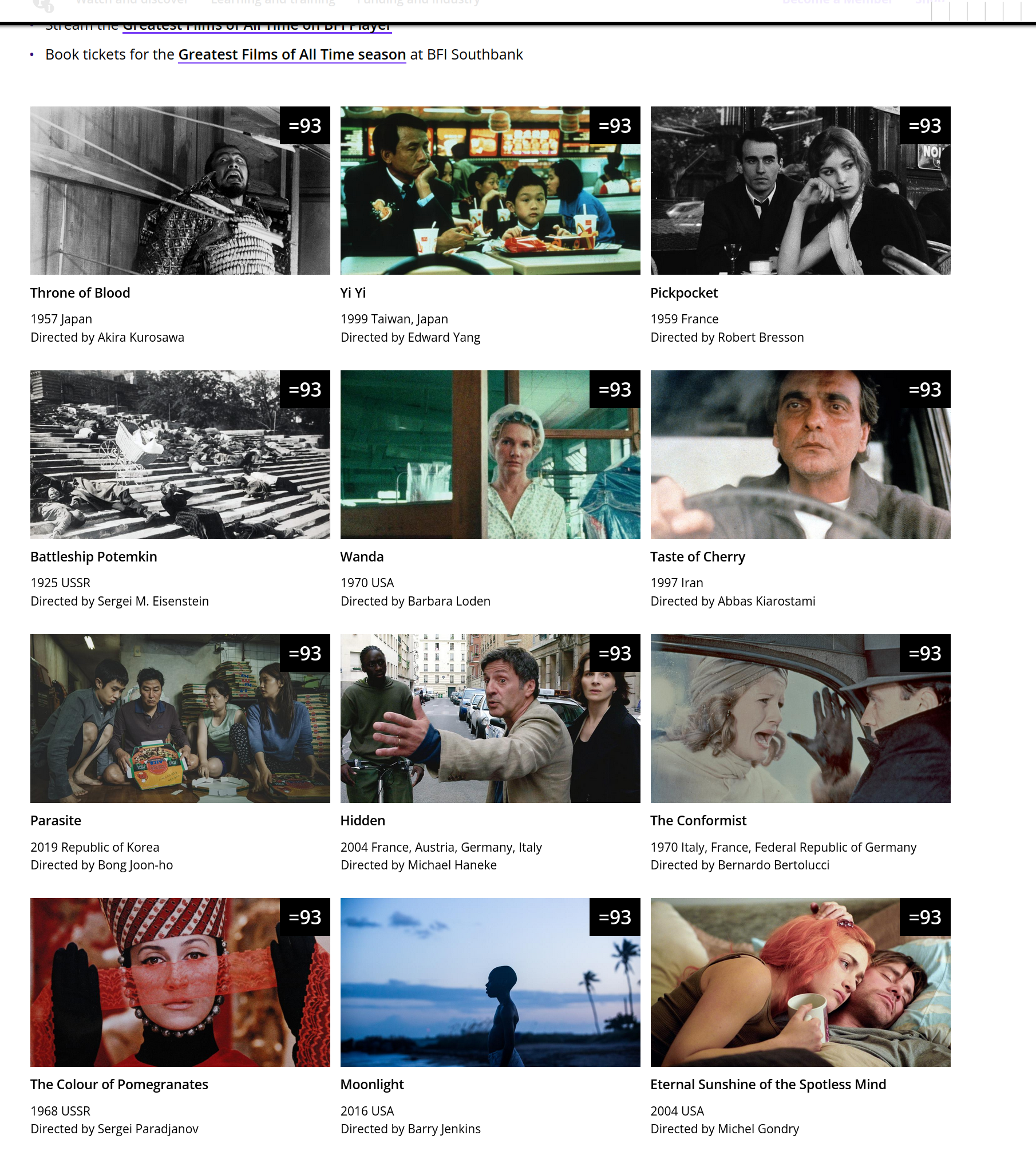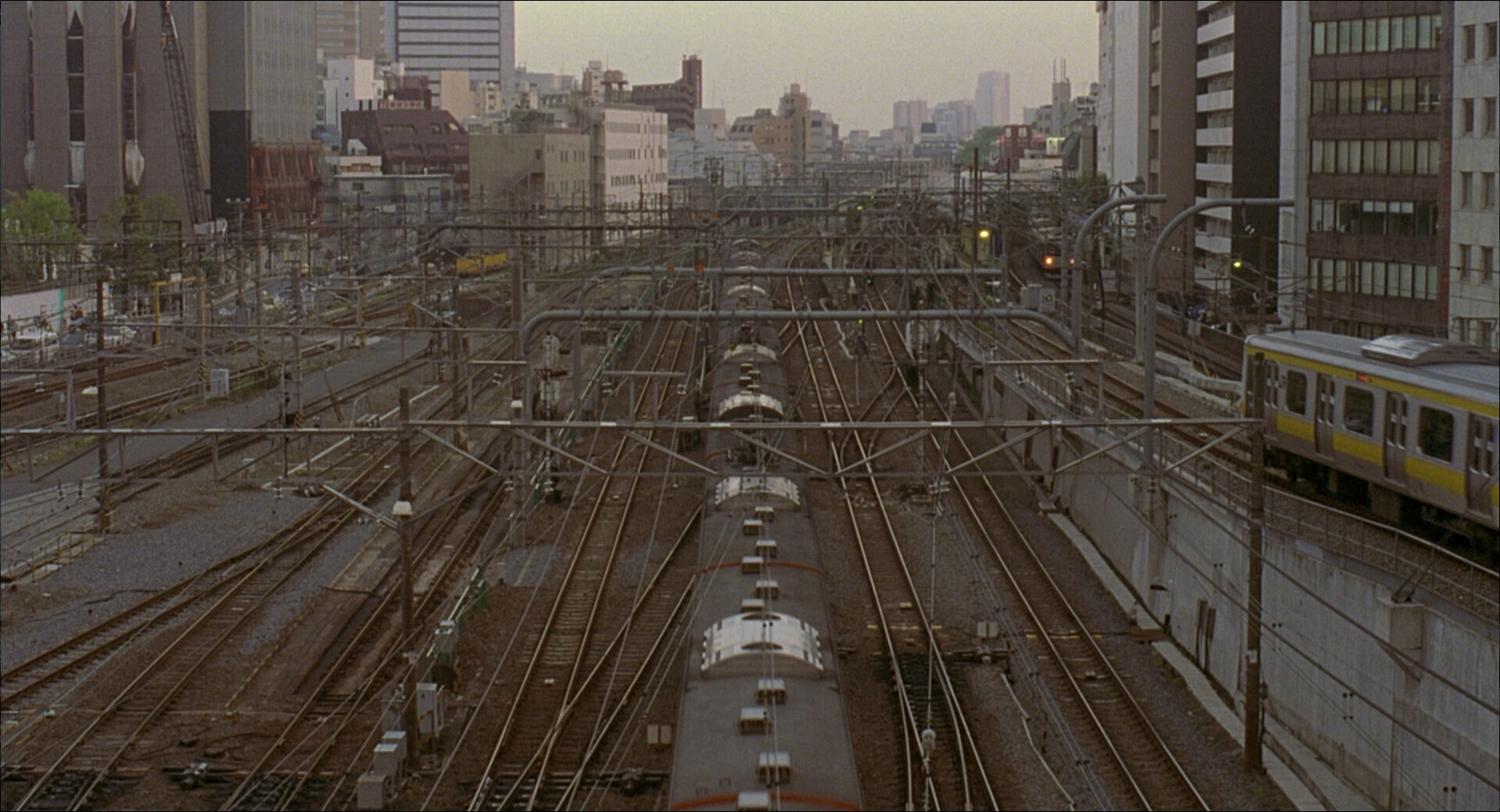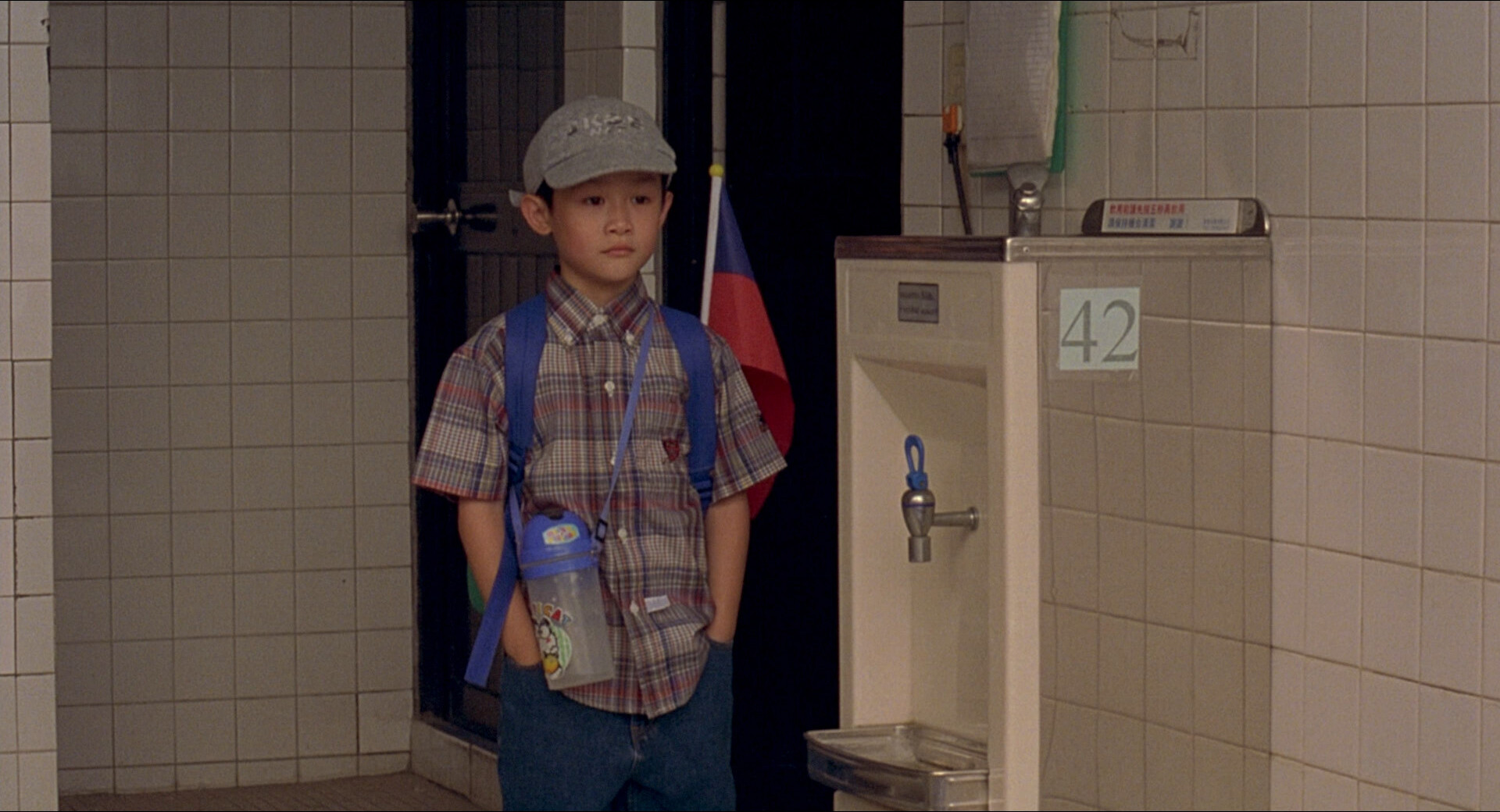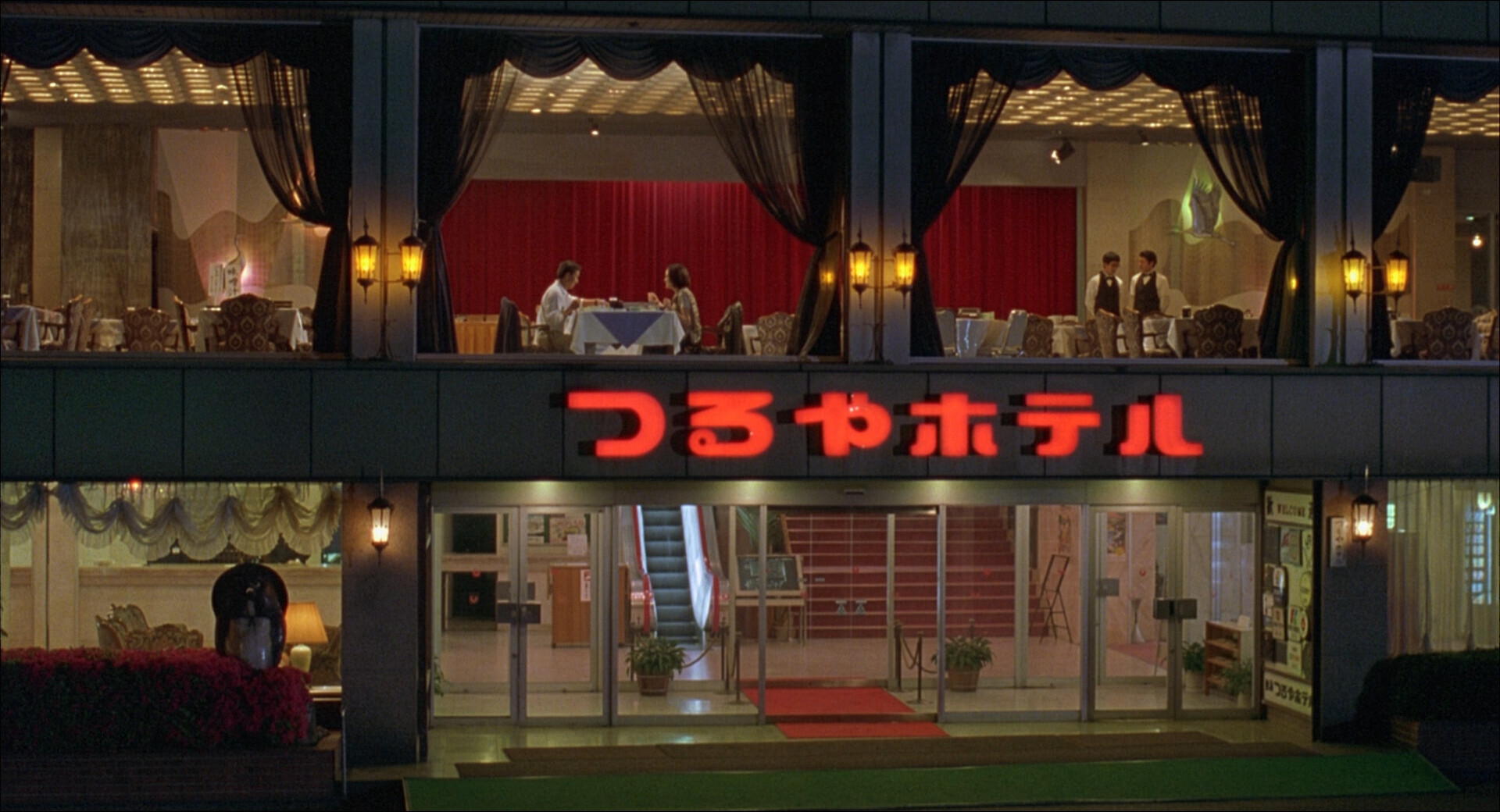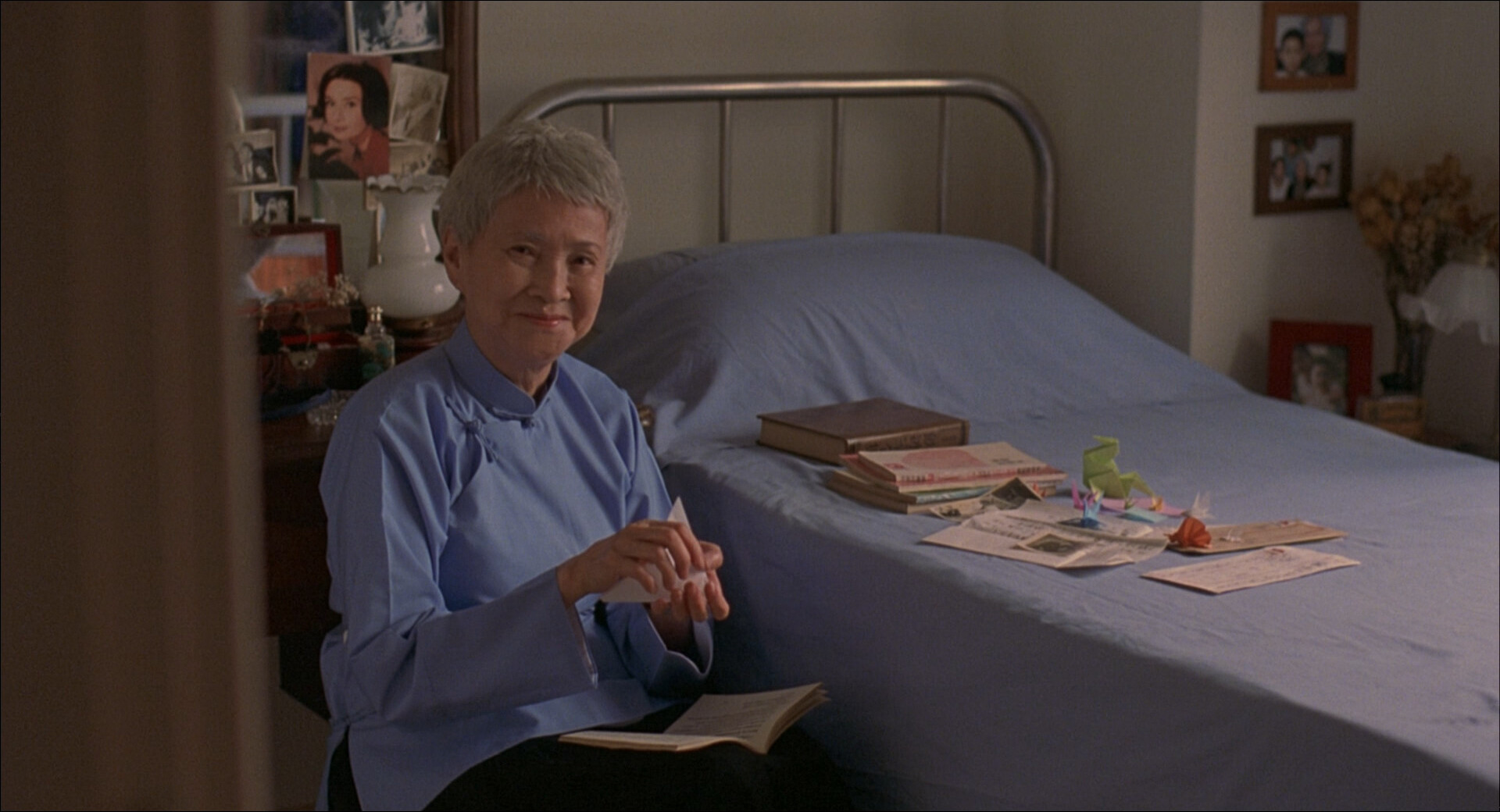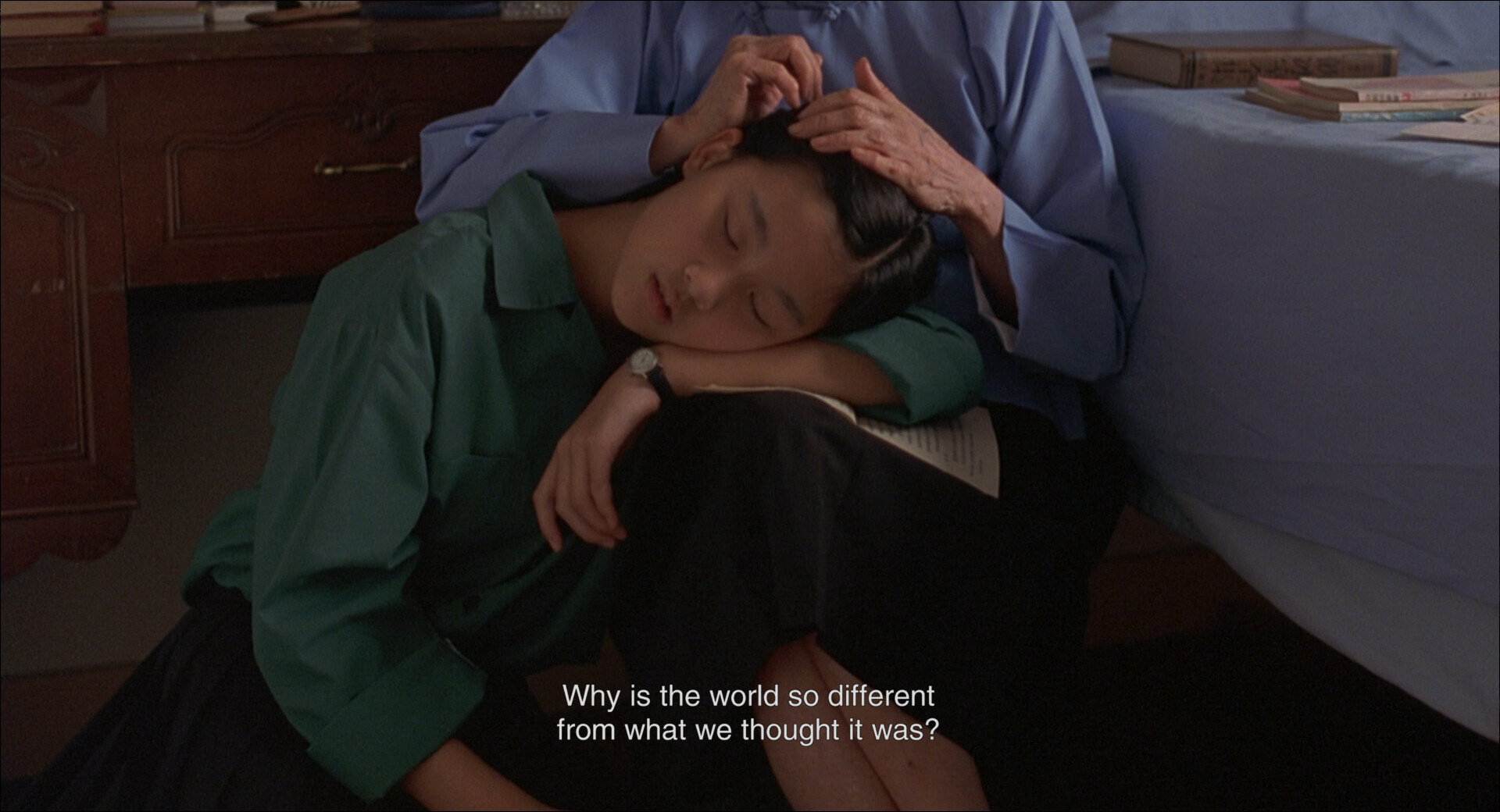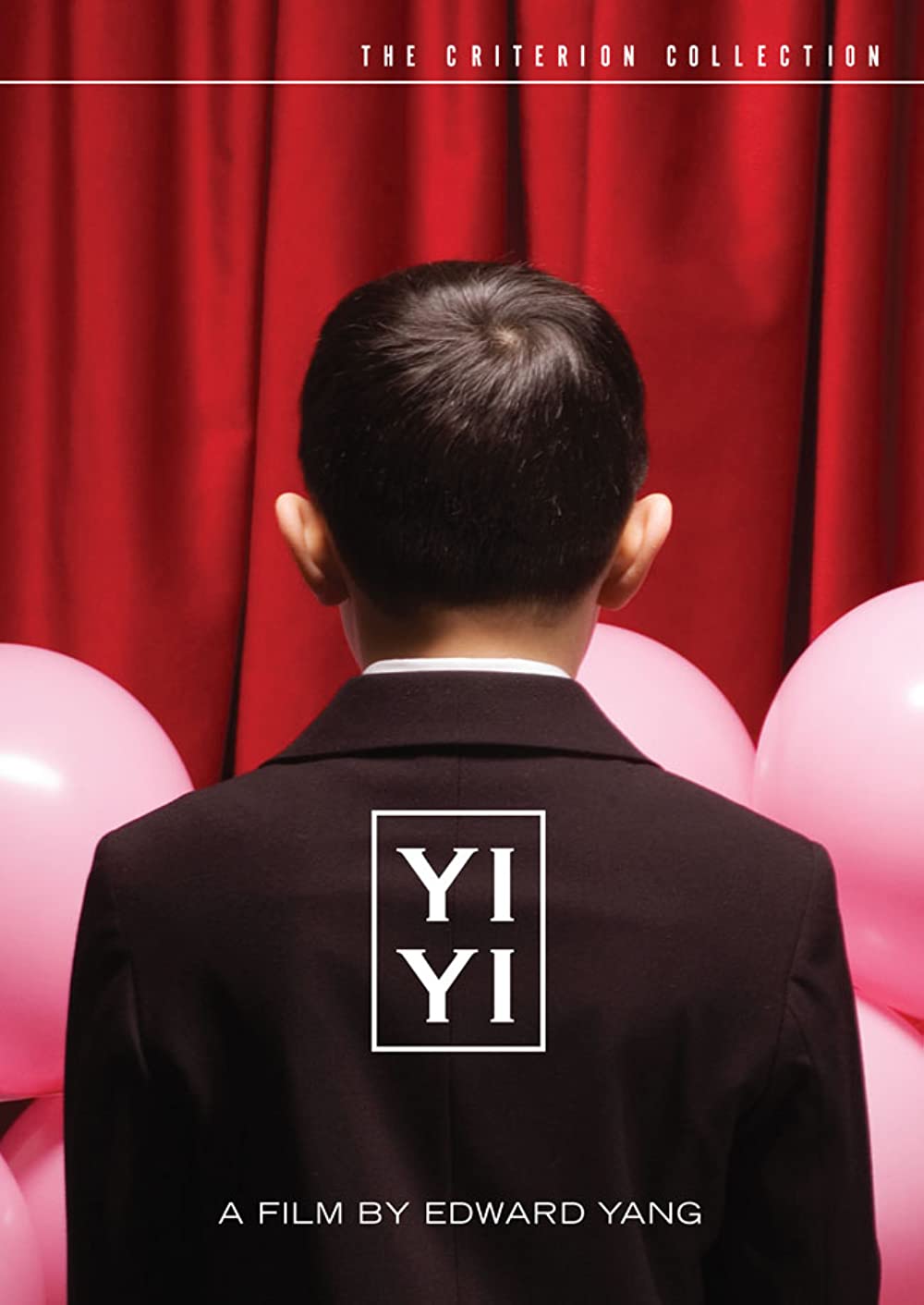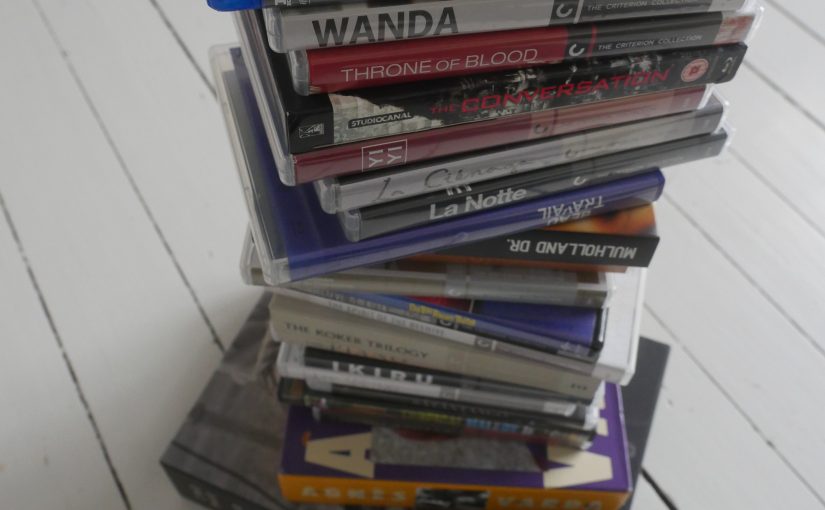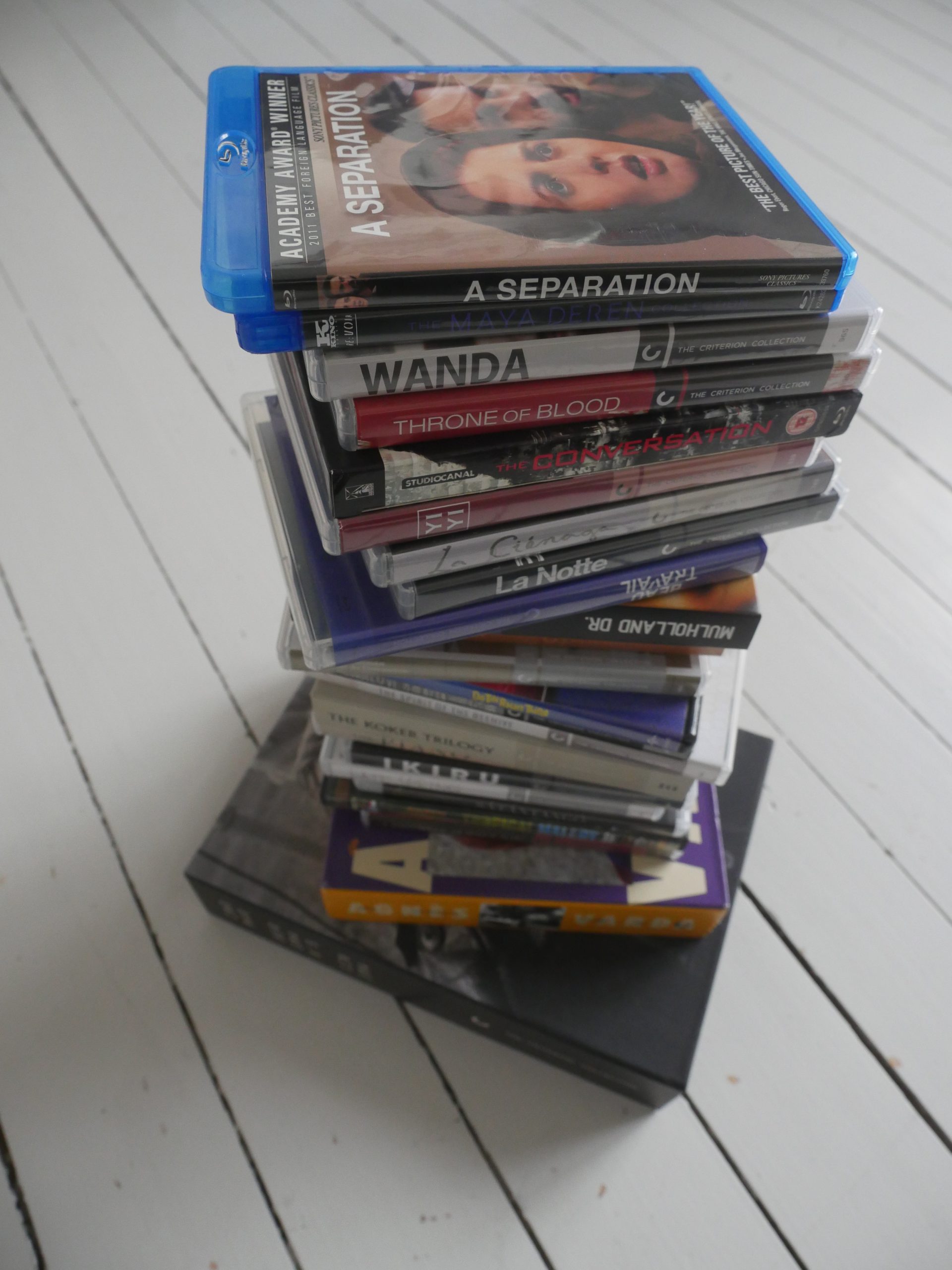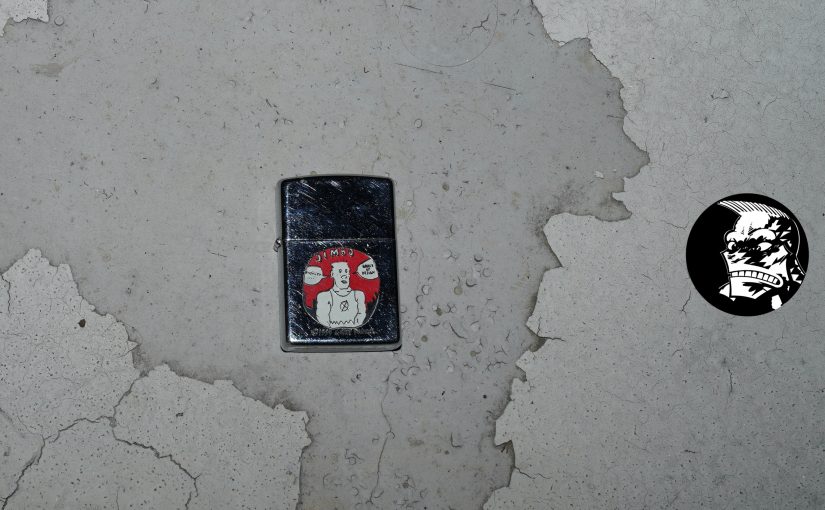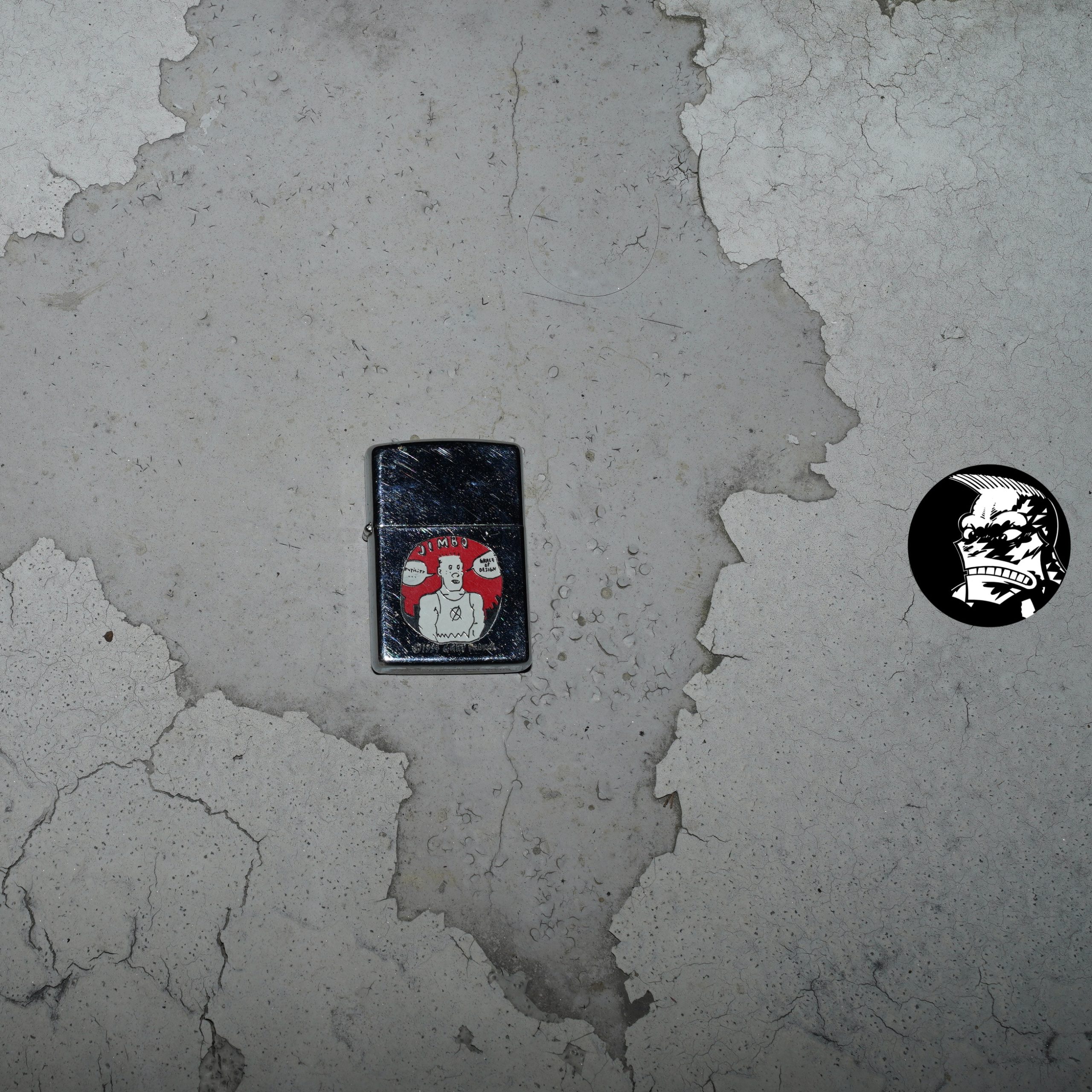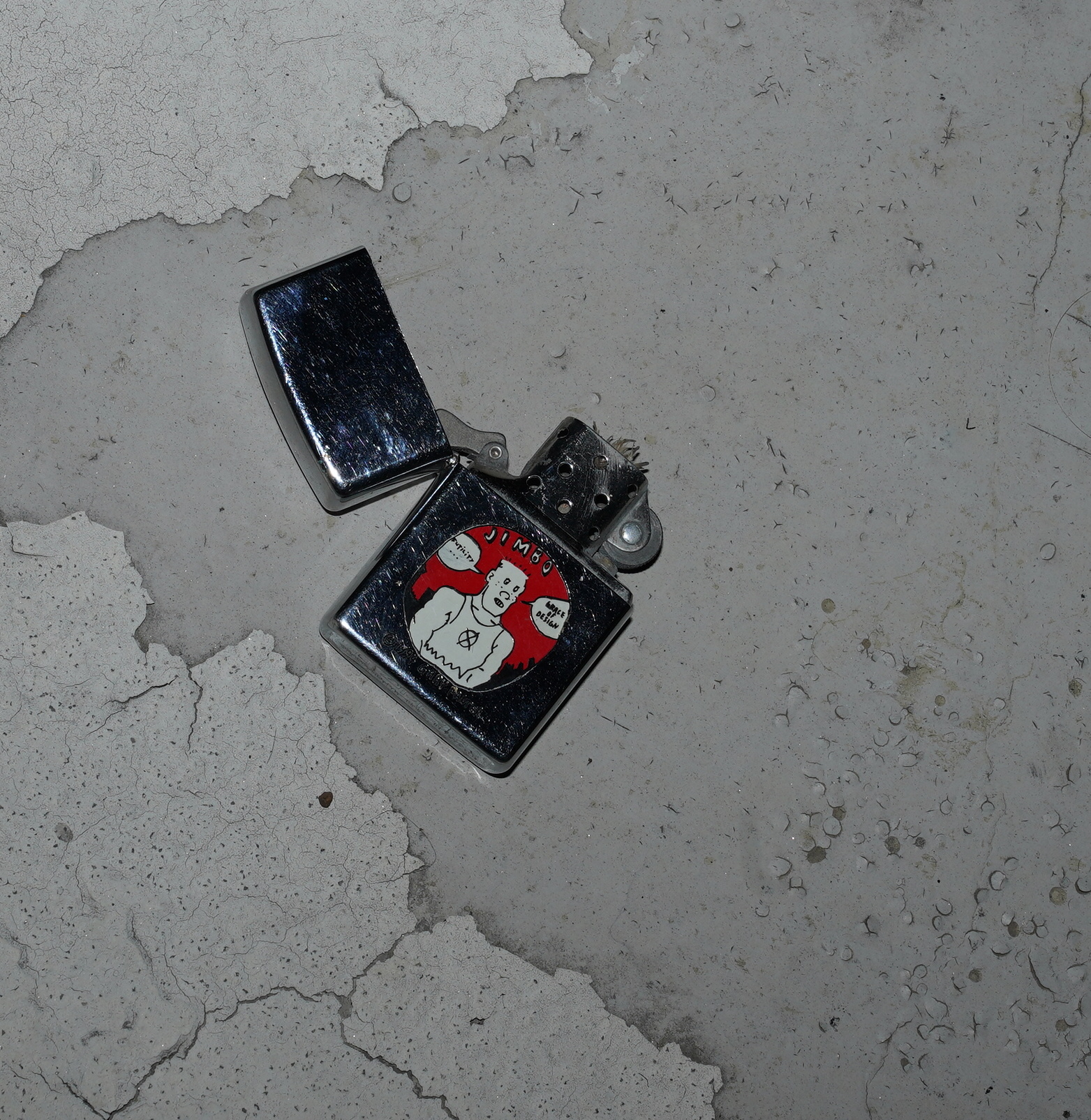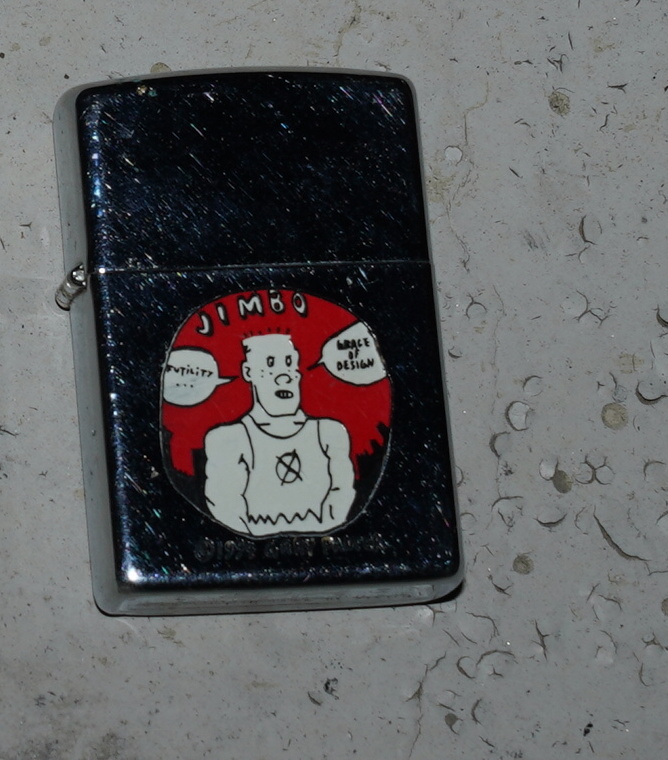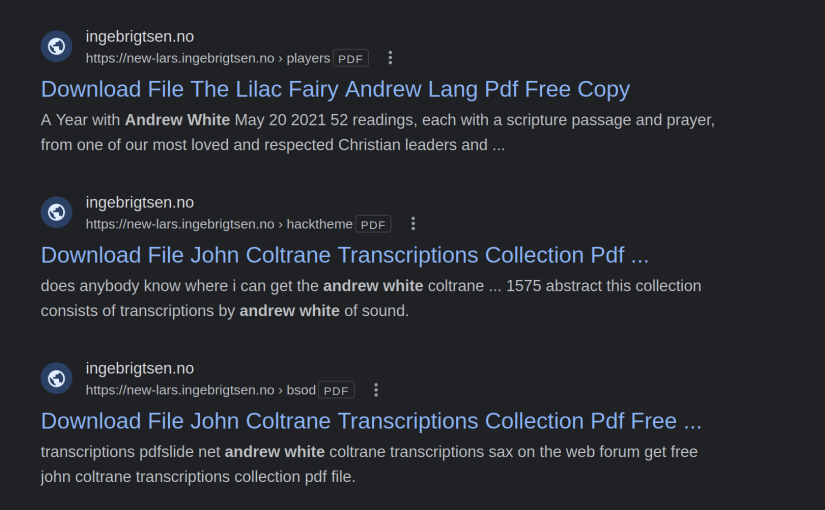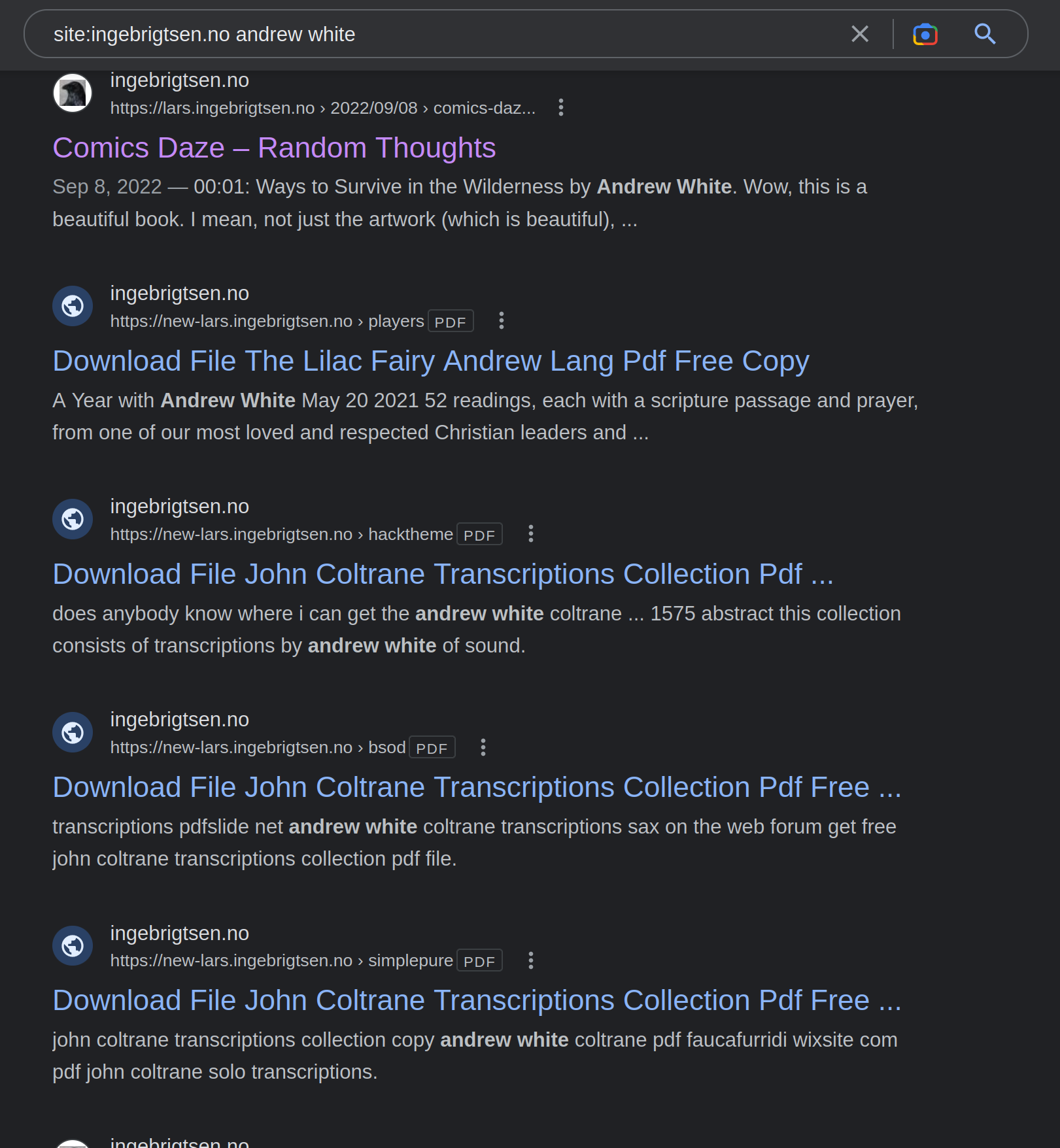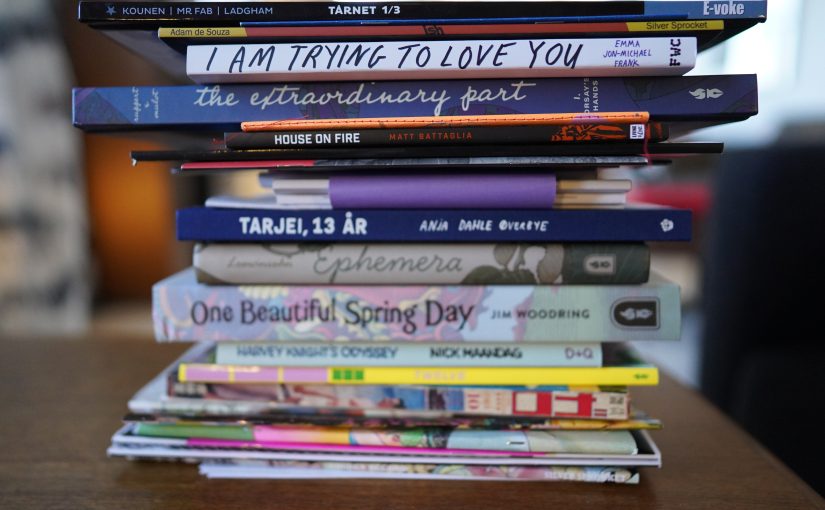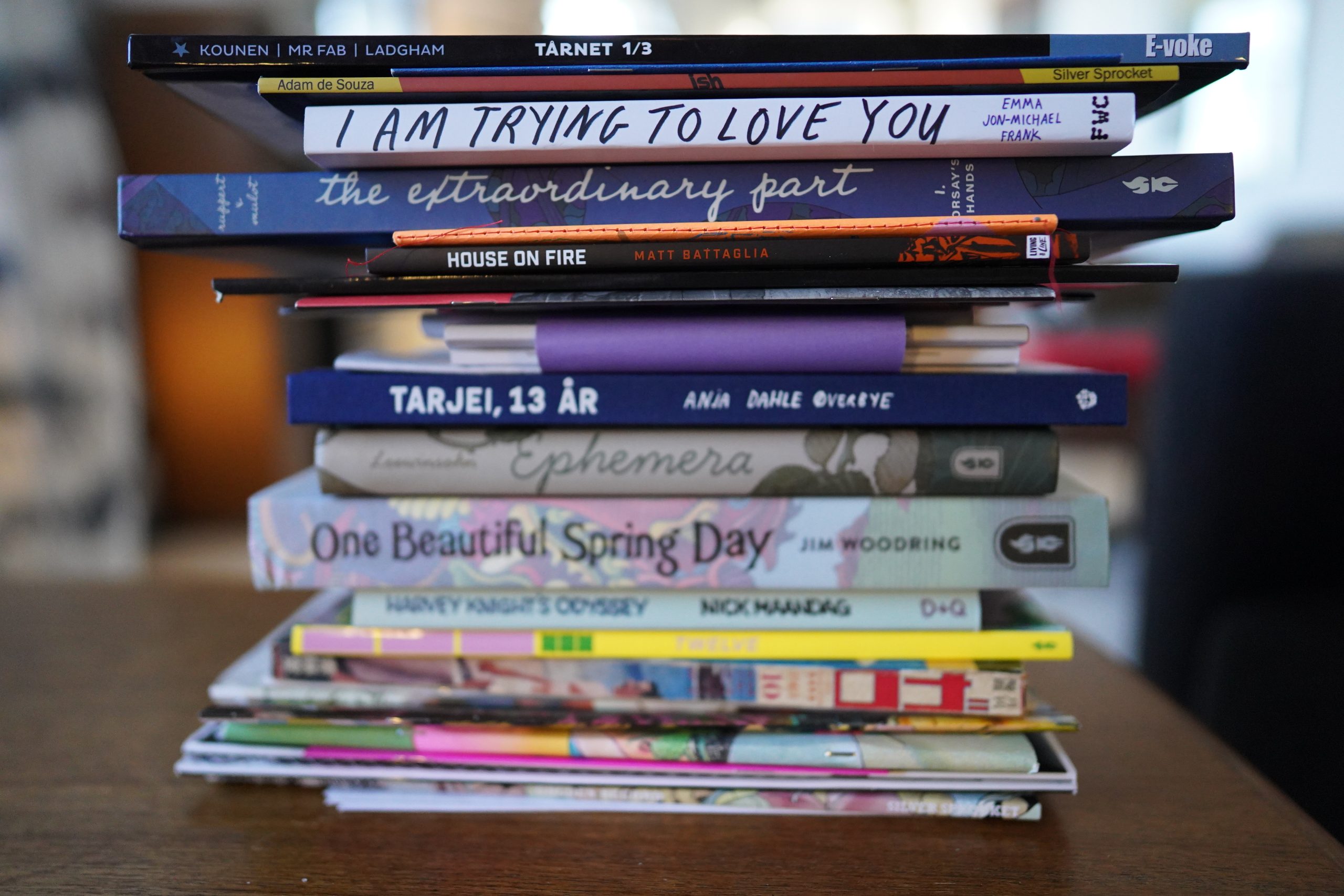
What? Another Comics Daze already? I dazed just a couple days ago, but my foot is still sprained, so I’m still on the couch, so I might as well get some reading done…
The other day, my mentis wasn’t all compos, so I just read mainstream comics. Which means that today, it’s gonna be heavy on art comics, because that’s what I’ve got left. Except that I got another shipment of comics yesterday, so it’ll probably be more mixed…
Many of the books I’ll be reading today I’ve bought as a result of the wonderful Alternative Comics web site. I love the format — one post per book, so it’s easy to use it as a basis for doing shopping. And I also like that they include interior pages — a cover tells me virtually nothing, but I can take a millisecond long glance at an interior page and say whether that’s something I’m interested in reading. (The glance doesn’t tell me if the book’s good or not, of course, but just whether I’m interested in finding out.)
And music today… enough with the nostalgia already! New albums only! (Well, new to me, that is.)
| Hieroglyphic Being: There Is No Acid In This House | 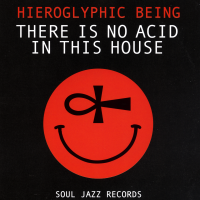 |
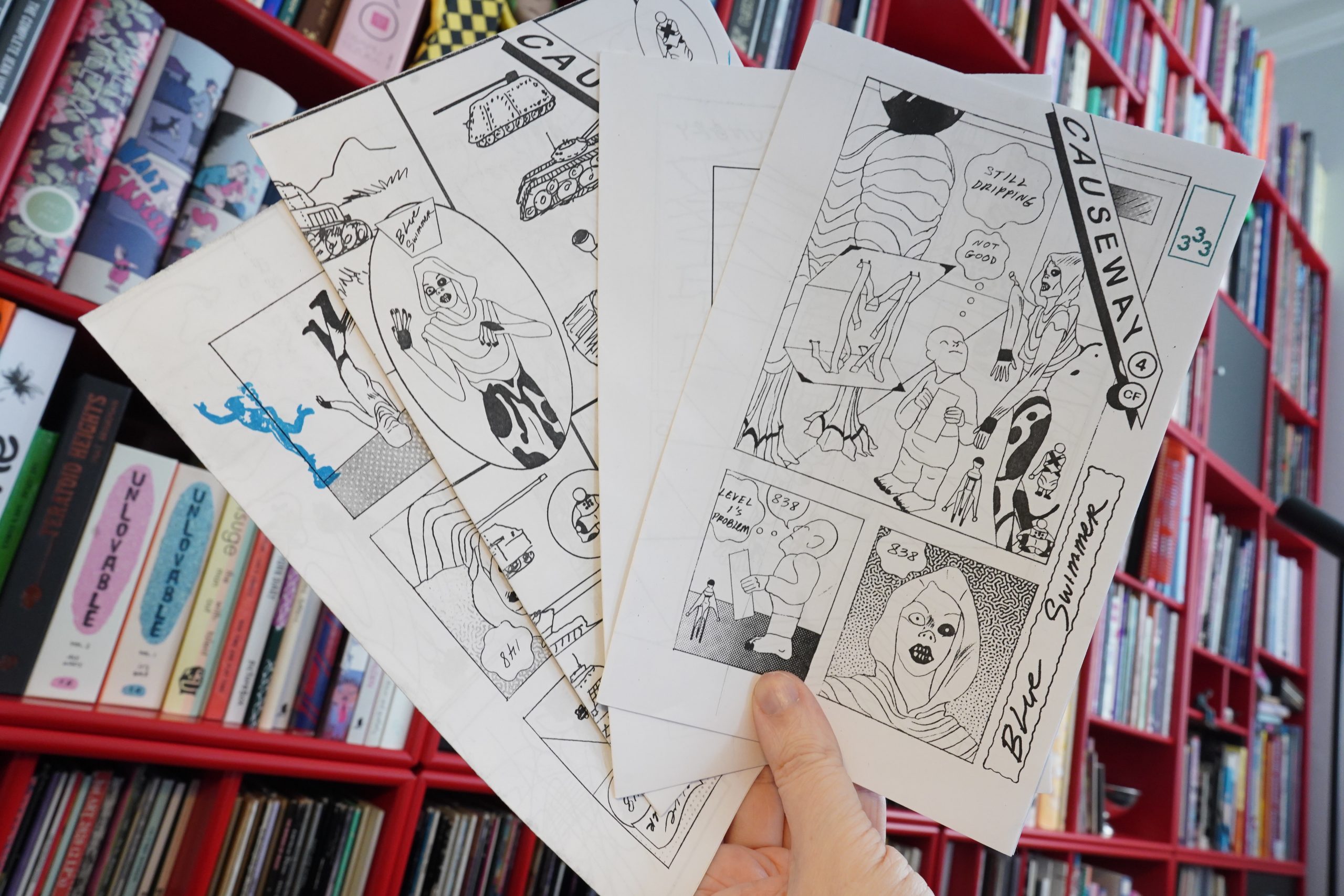
09:15: Causeway #4-7 by CF
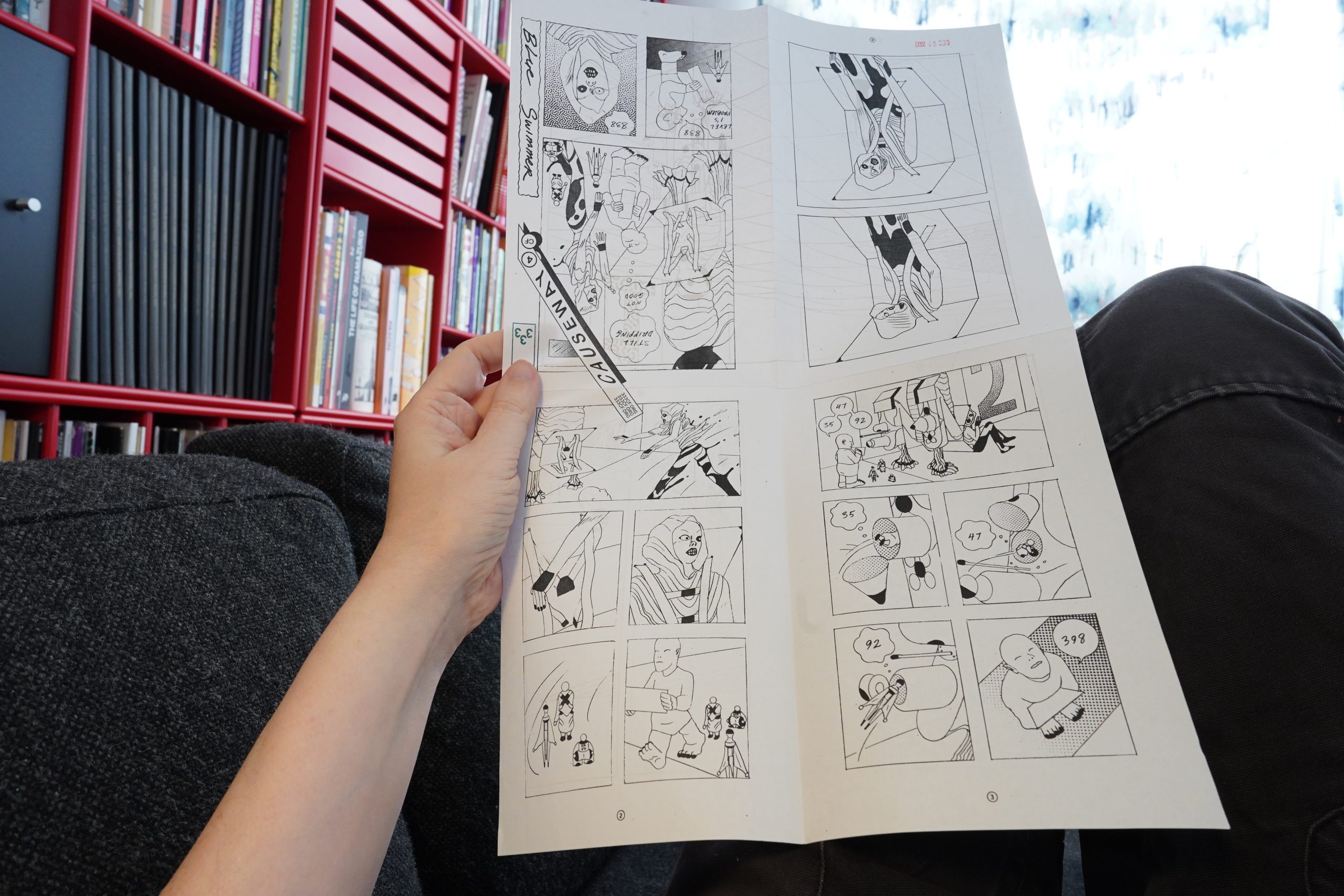
Like everybody else, I love CF’s comics, so finally getting some new ones is an event.
This series is printed on a large sheet, and the individual pages helpfully have numbering.
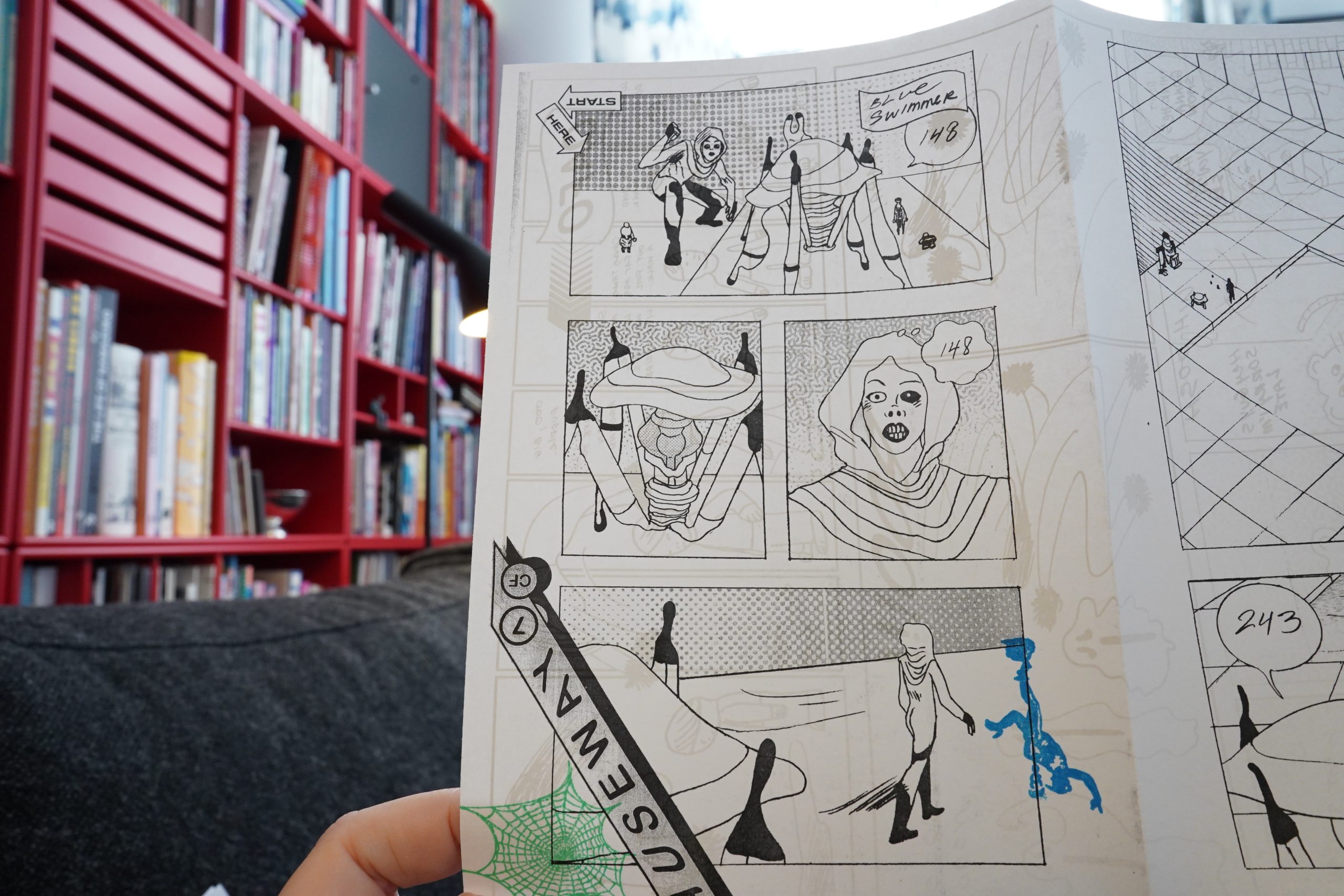
I’m not quite sure what the storyline here is, but it’s absolutely thrilling to read anyway. I love everything about this.
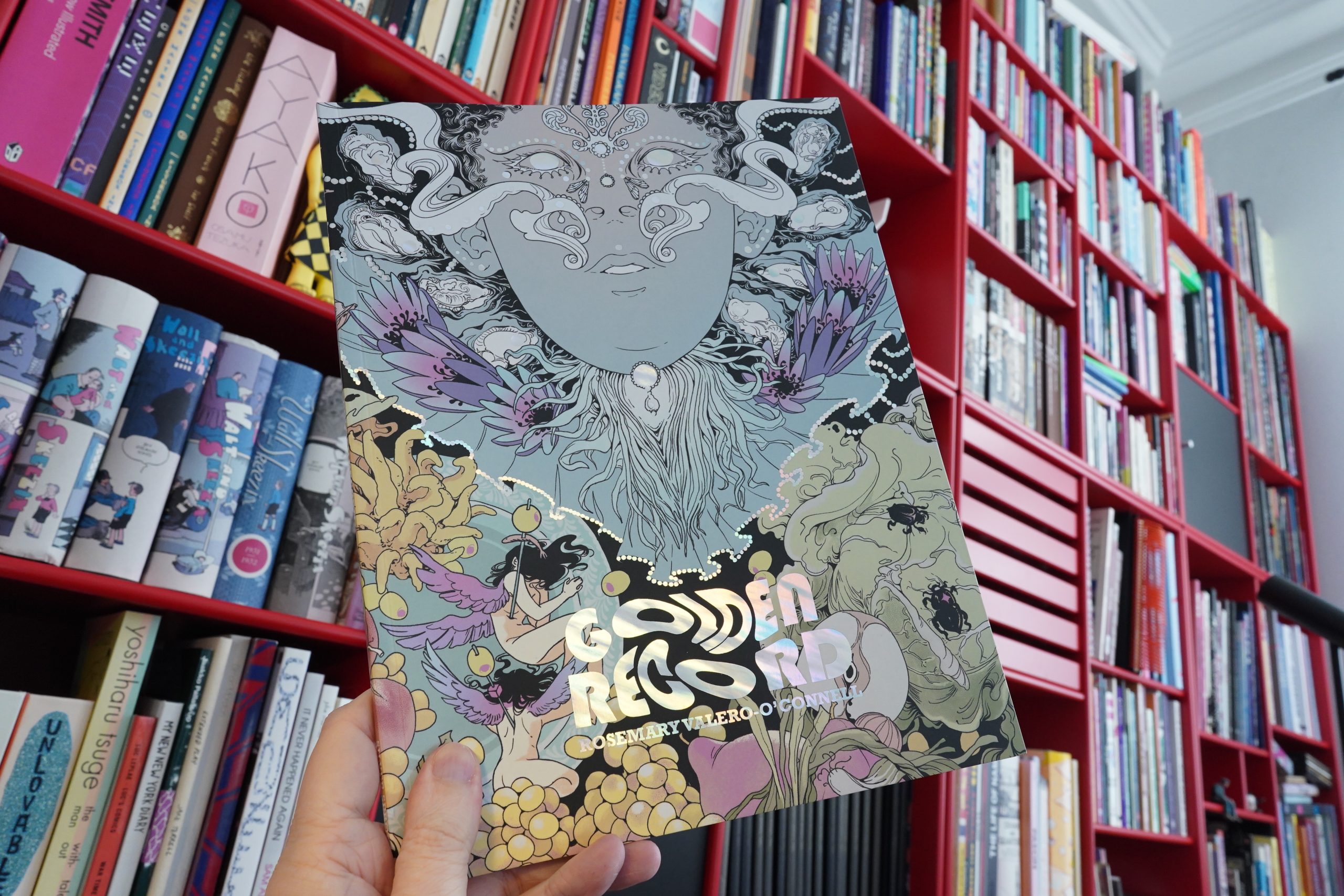
09:22: Golden Record by Rosemary Valero-o’Connell (Silver Sprocket)
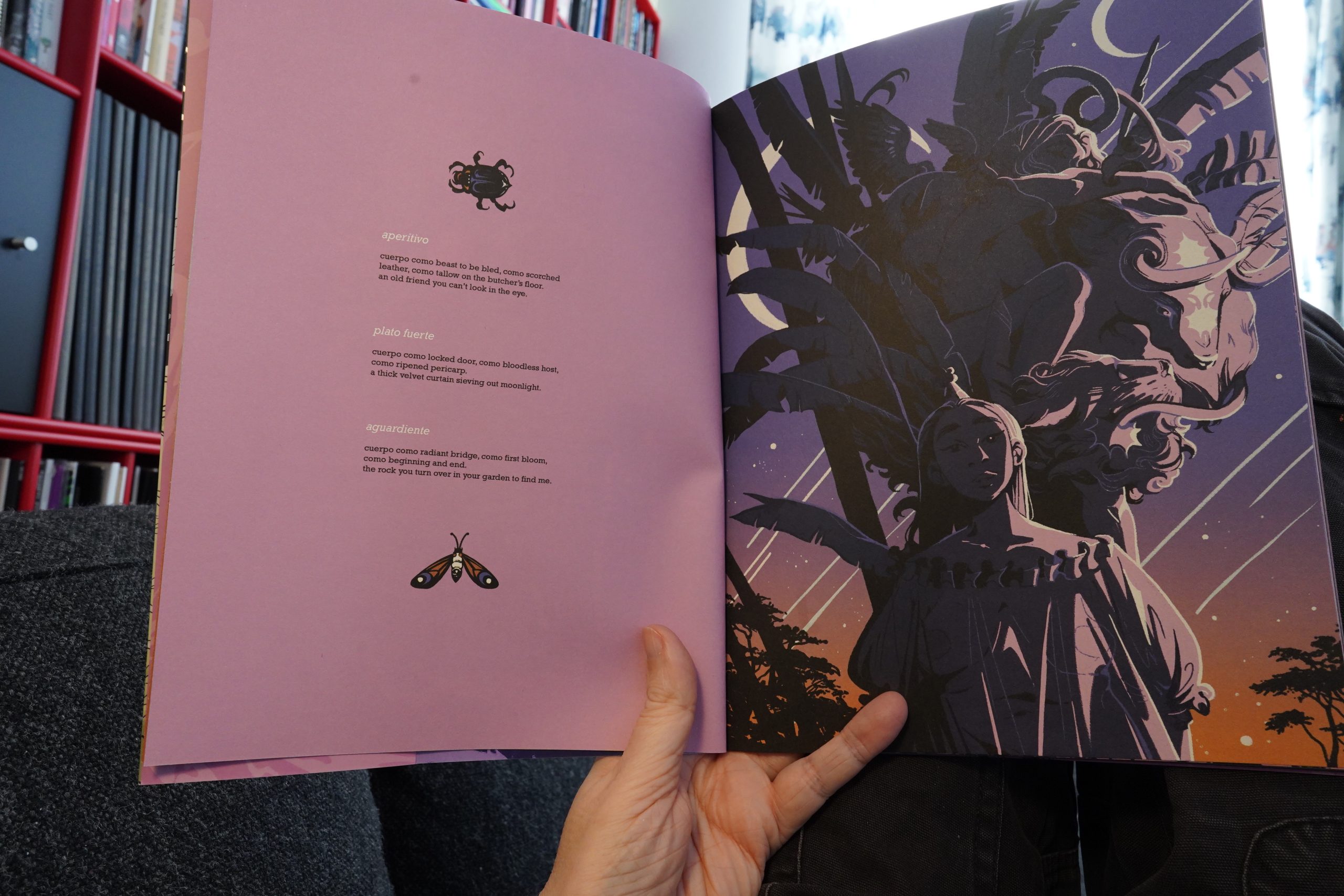
This is an illustrated book of poems and not a comic book, I guess.
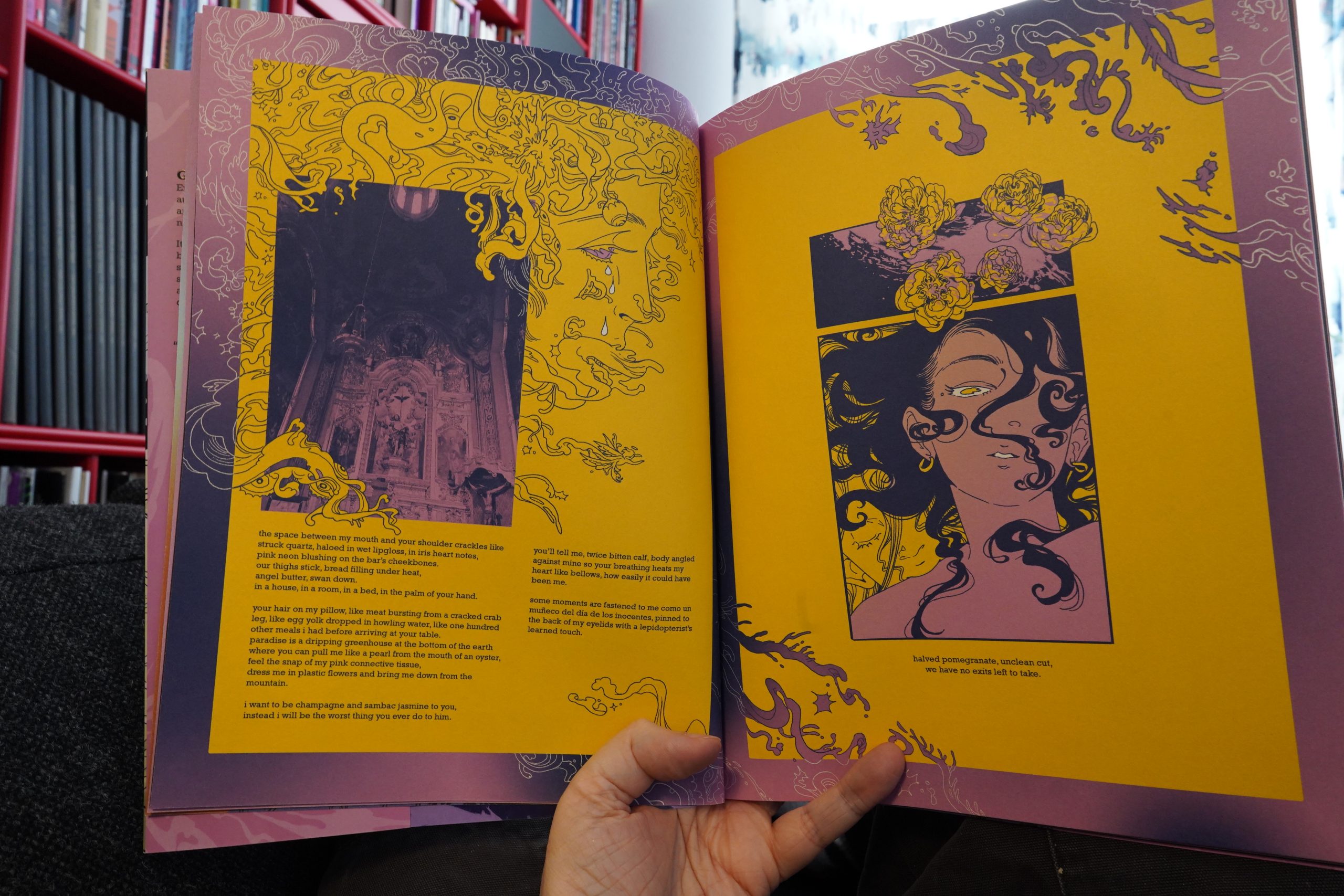
It’s nice. Confessional/visceral poetry isn’t really my cup of tea, though.
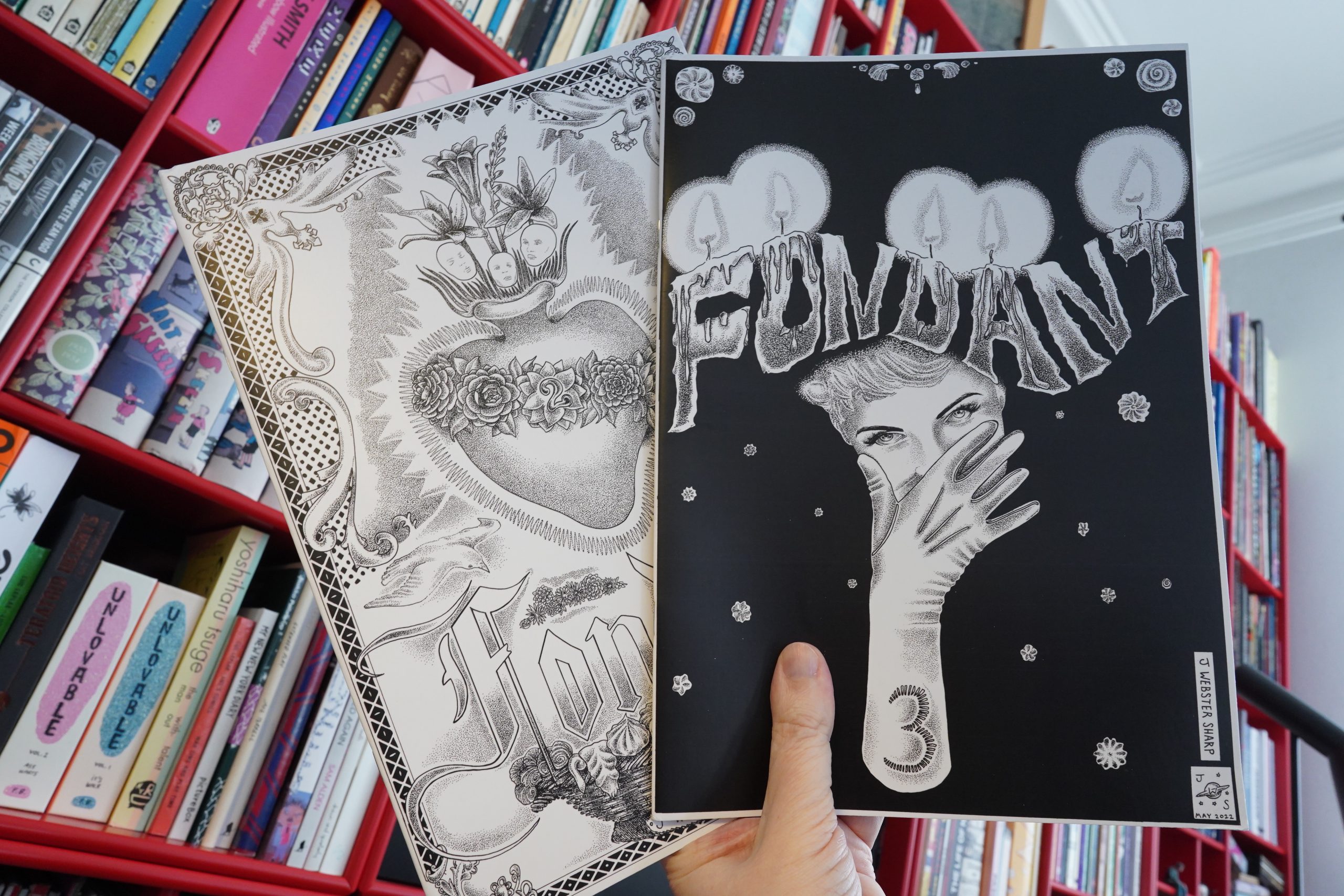
09:54: Fondant #1, 3 by J. Webster Sharp
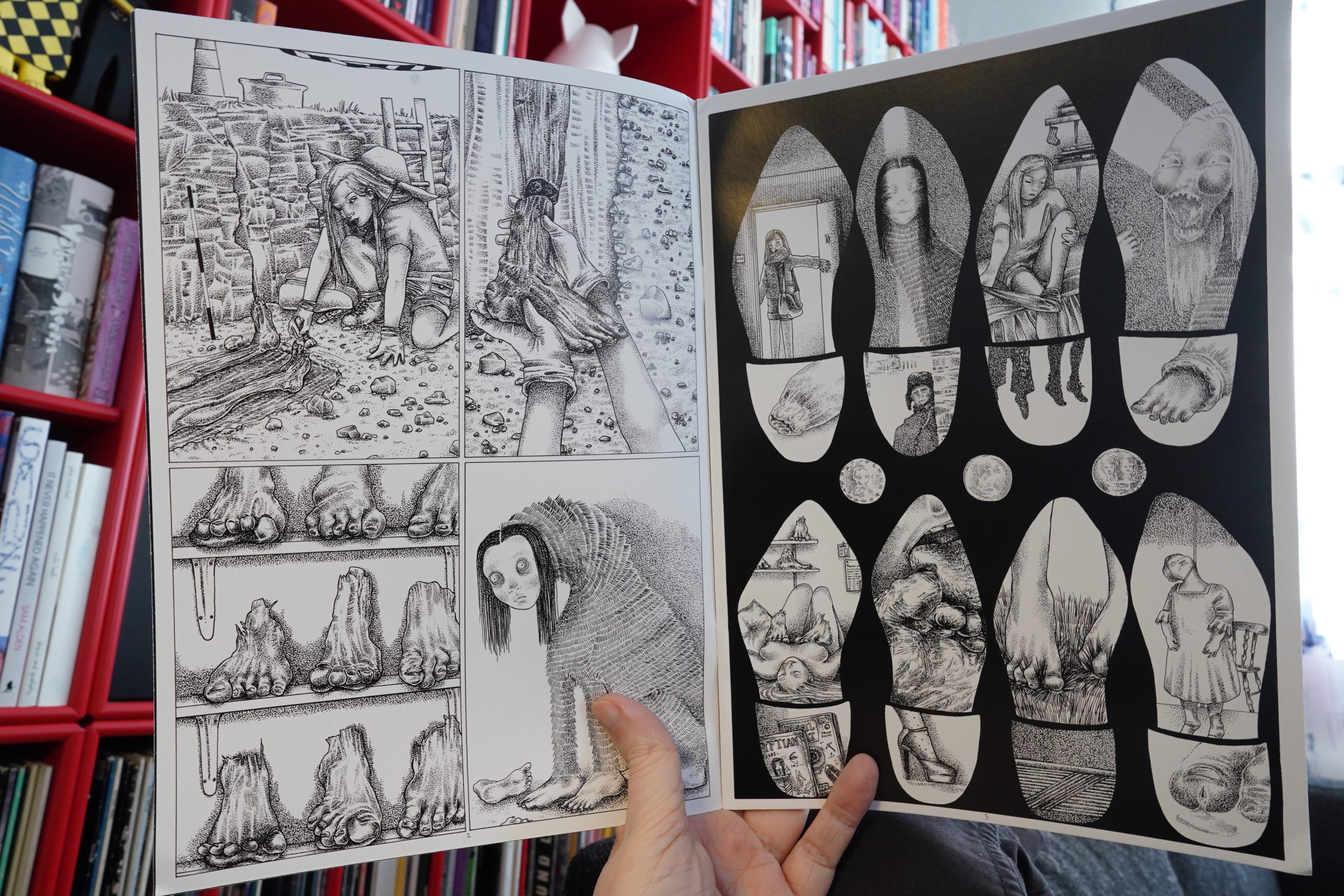
The rendering here is very accomplished, but I guess it’s mostly based on photo reference? Which also makes me guess that the creator here spends all his time hanging out on Something Awful or one of those other torture pic web sites?
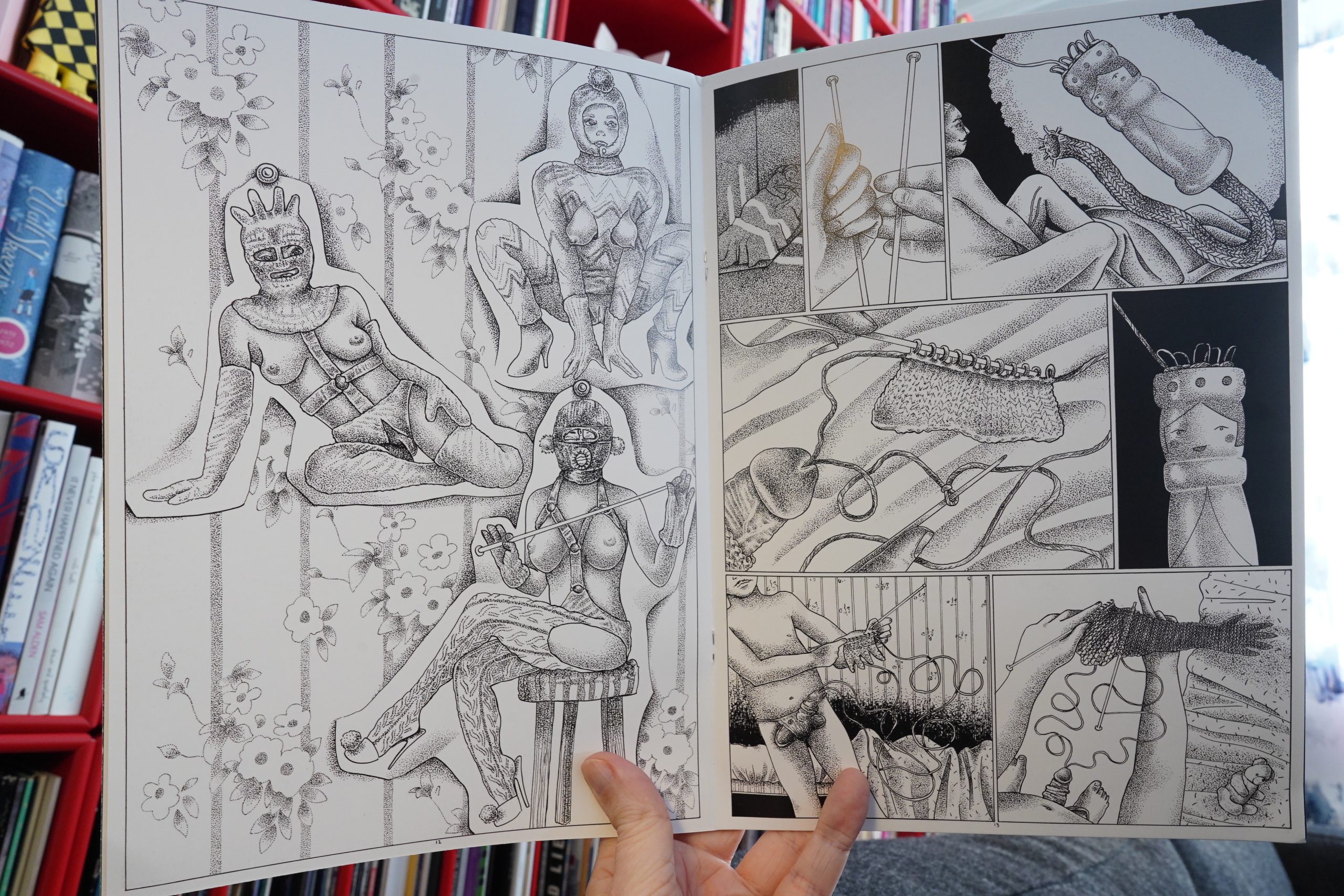
I’m basically snapping the two least horrific spreads here — the artist is obviously talented, but these books are *throws up a little*.
OK, I also got two shipments from the Desert Island Mystery Package Club… and…
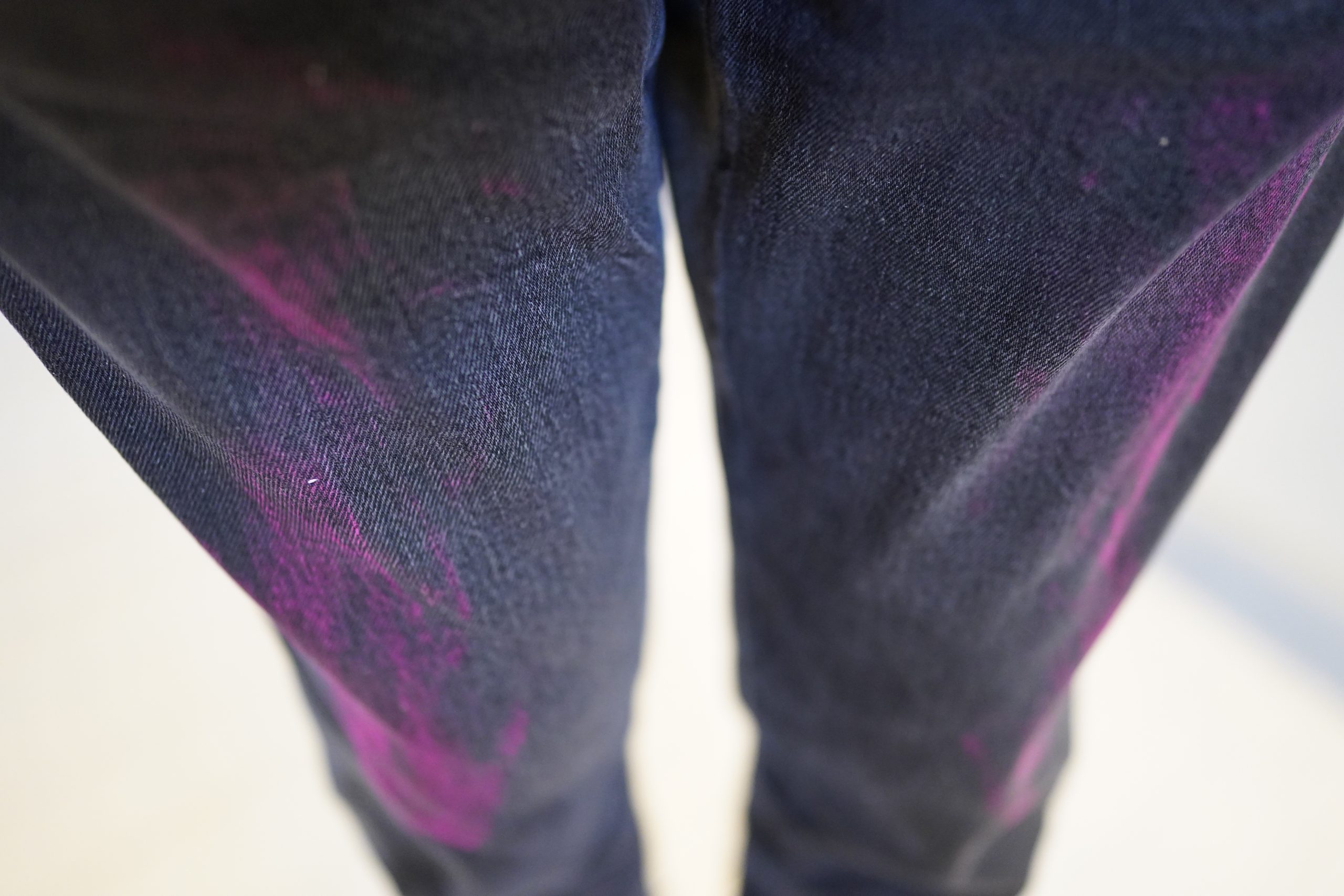
How come my jeans are pink all of a sudden!?
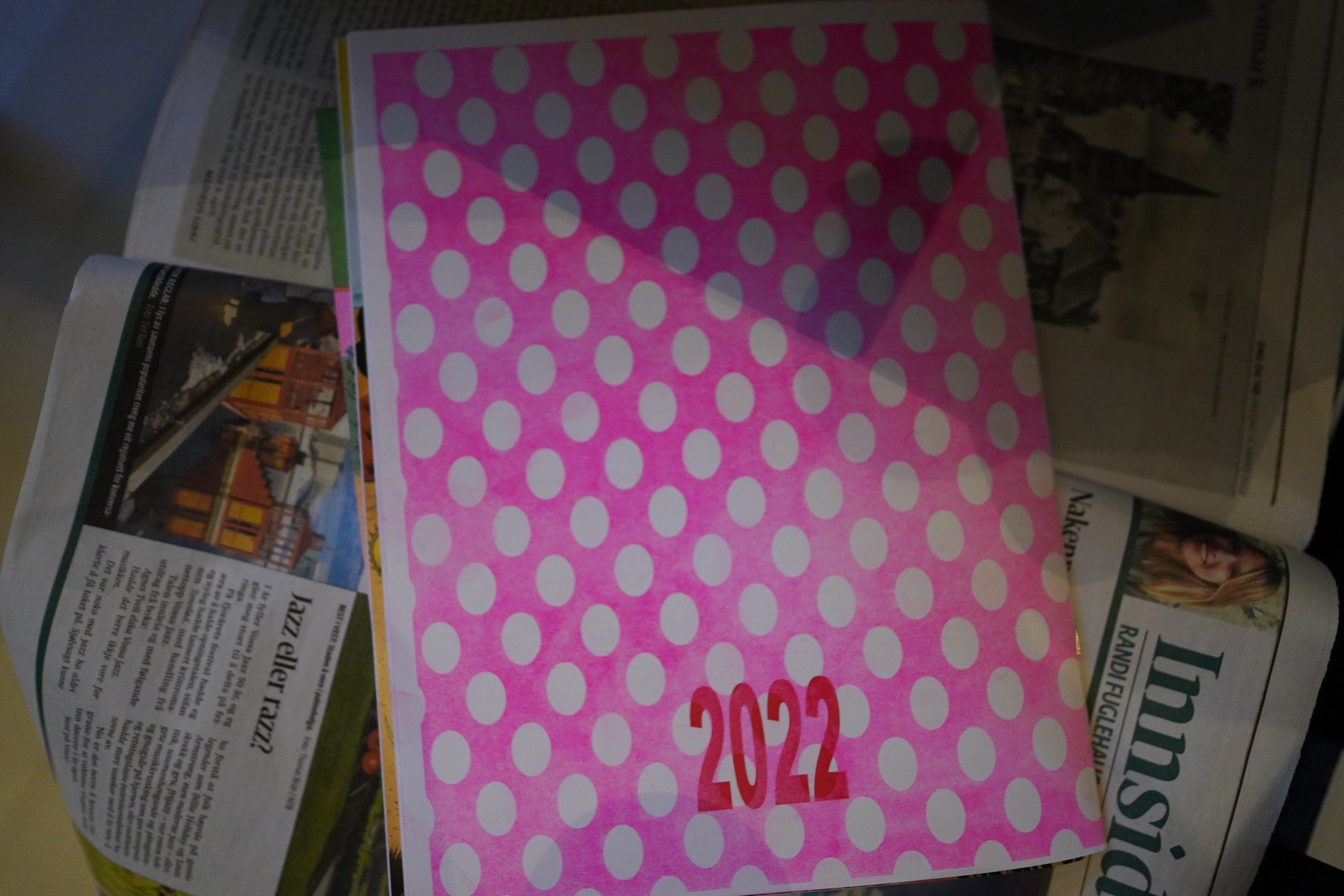
The package includes Blah Blah Blah #2 (which I already have), which is of the same pink hue…
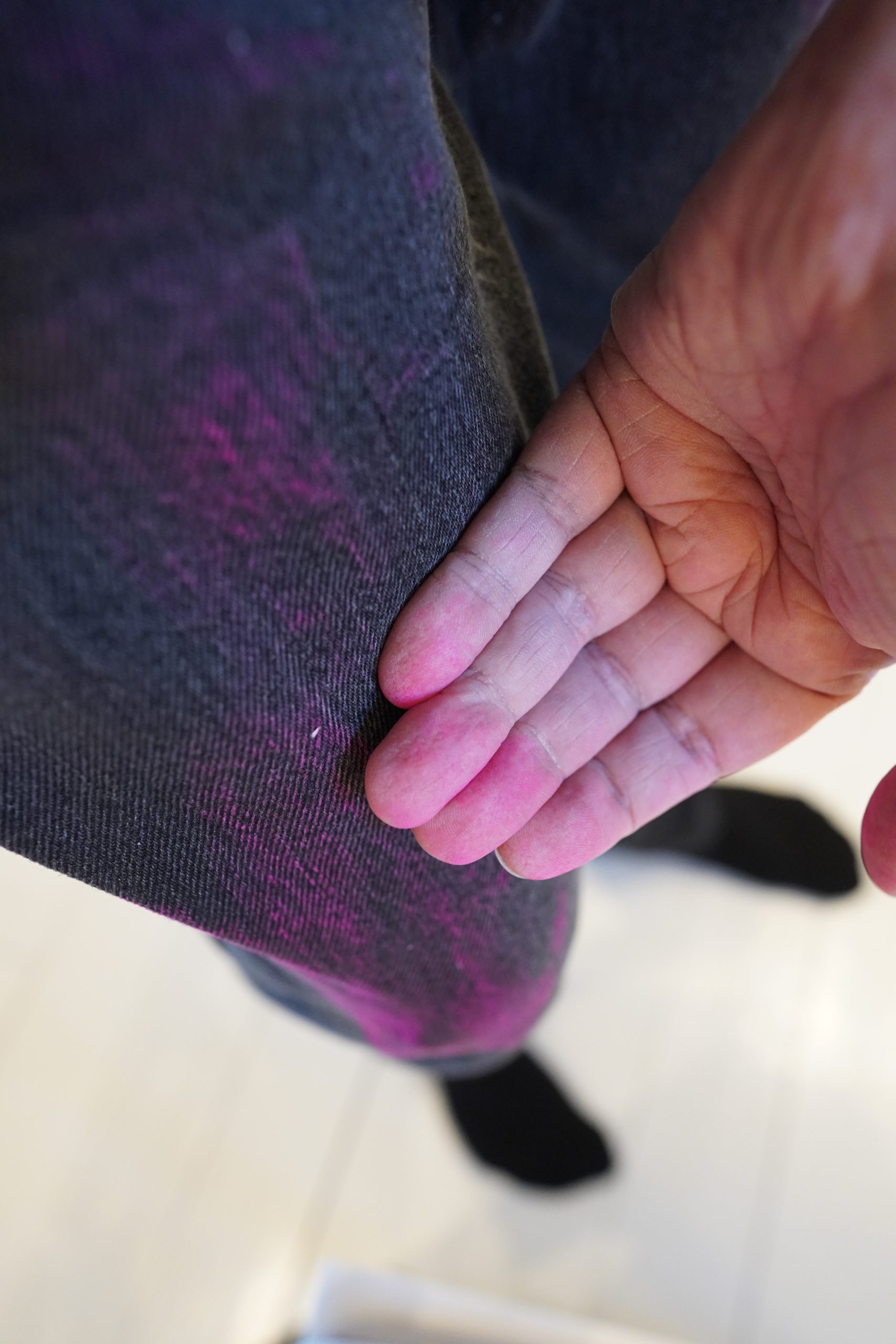
Eek!!!
I think something didn’t go quite as planned when printing that cover. Or was it supposed to turn everybody pink? Fortunately, it seems like the colour washes off easily enough…
Reading comics is a dangerous game! Not only do I have to vacuum myself and all my environs after opening packages from Domino Comics (he uses these envelopes with these itsy bitsy recycled paper shreds inside), not I have to do laundry, too…
| Morphine: Good | 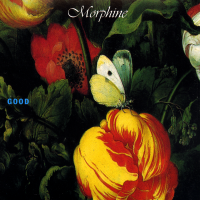 |
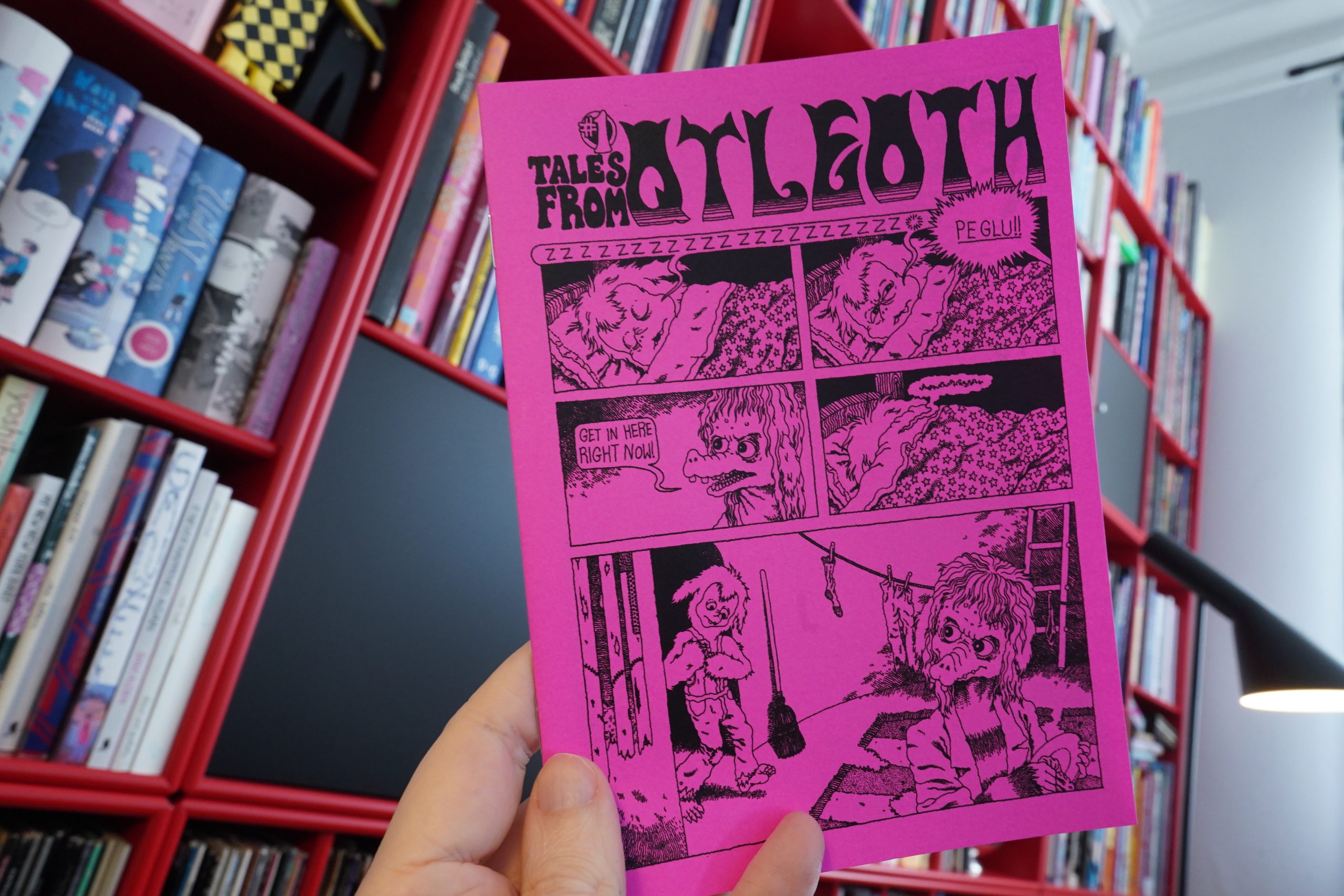
10:02: Tales from Qtlgoth by Yaxam (?)
But after all that drama, let’s read the other books from Desert Island.
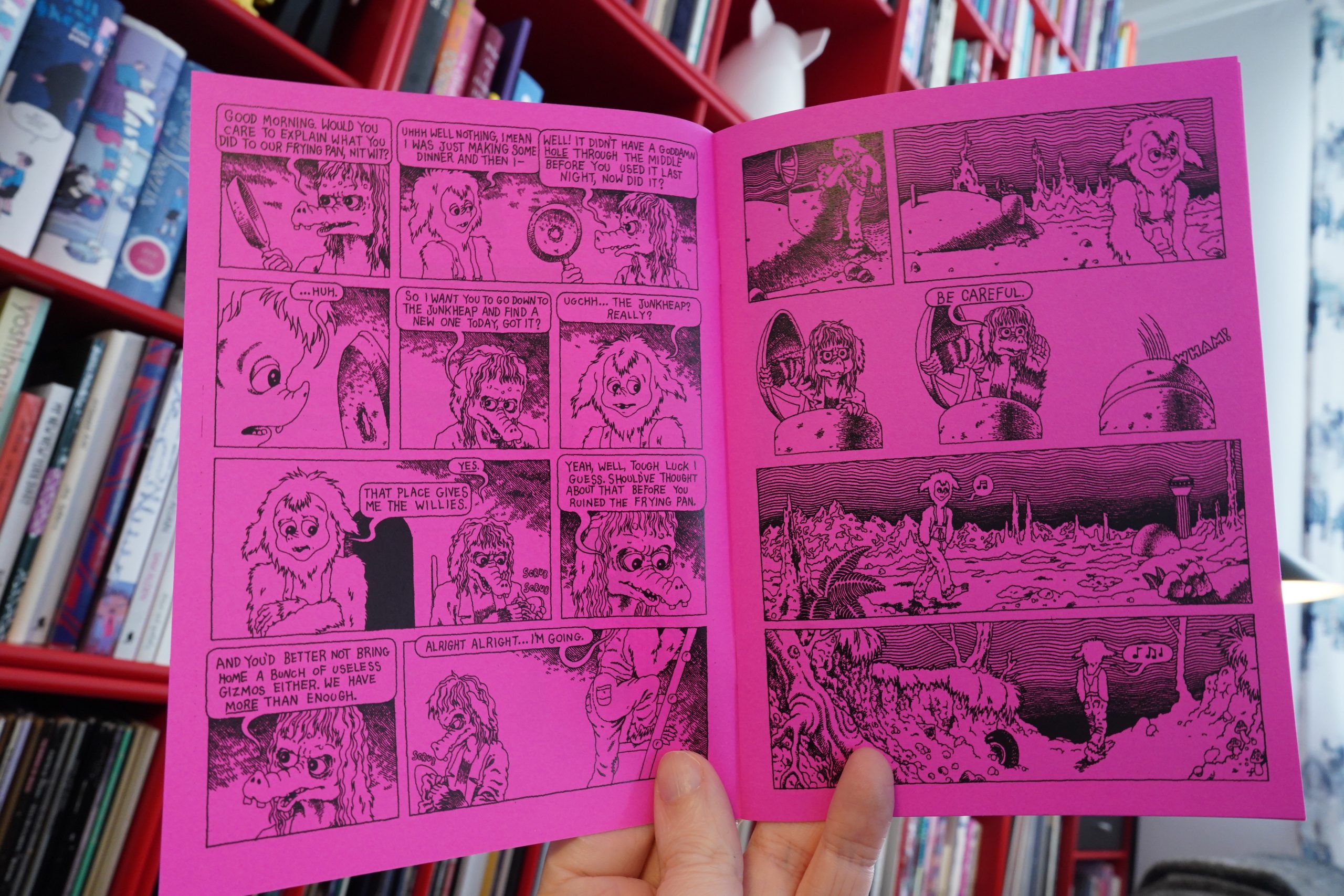
I really like this. It reminds me of 90s indie comics — it’s got some good dialogue going, and an interesting story, and charming artwork. My only complaint is that it’s too short — it feels like it could be, like, a 200 page story, but we only get the introduction. I wouldn’t mind spending a lot more time with these characters.
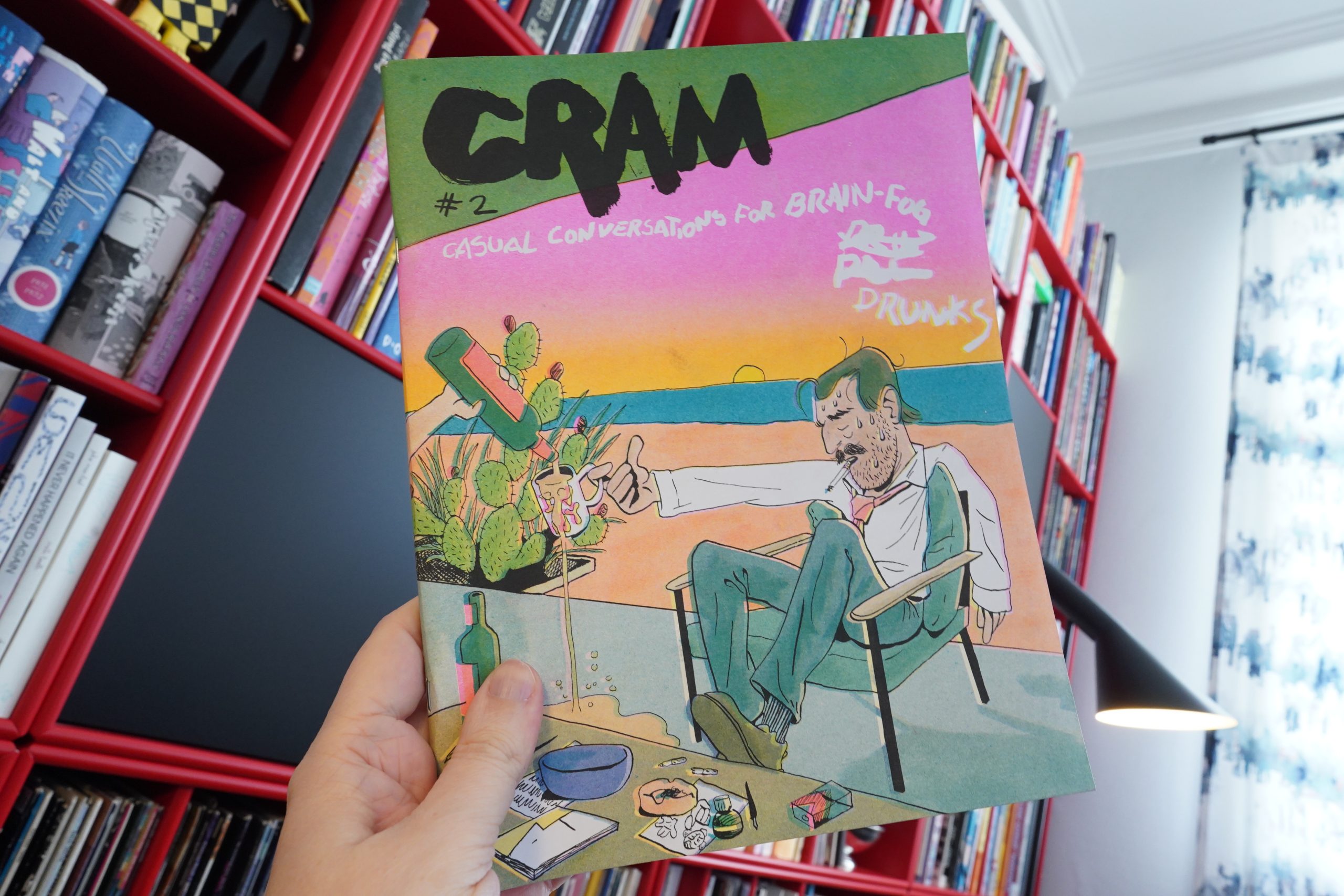
10:15: Cram #2
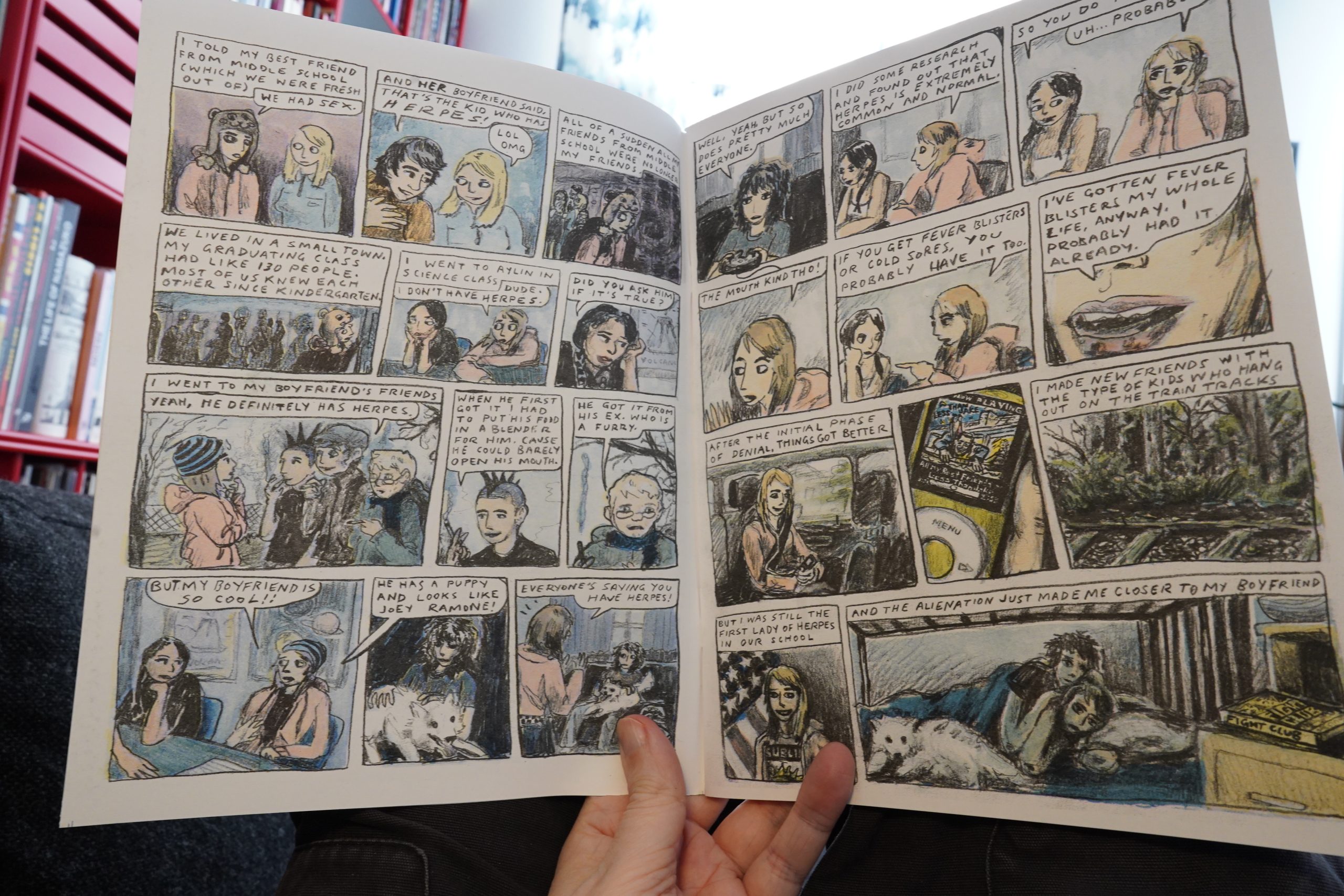
This is an anthology of autobio and adjacent stuff. Is it riso? Anyway, it’s a solid, solid anthology, and I particularly enjoyed Allee Errico story about herpes.
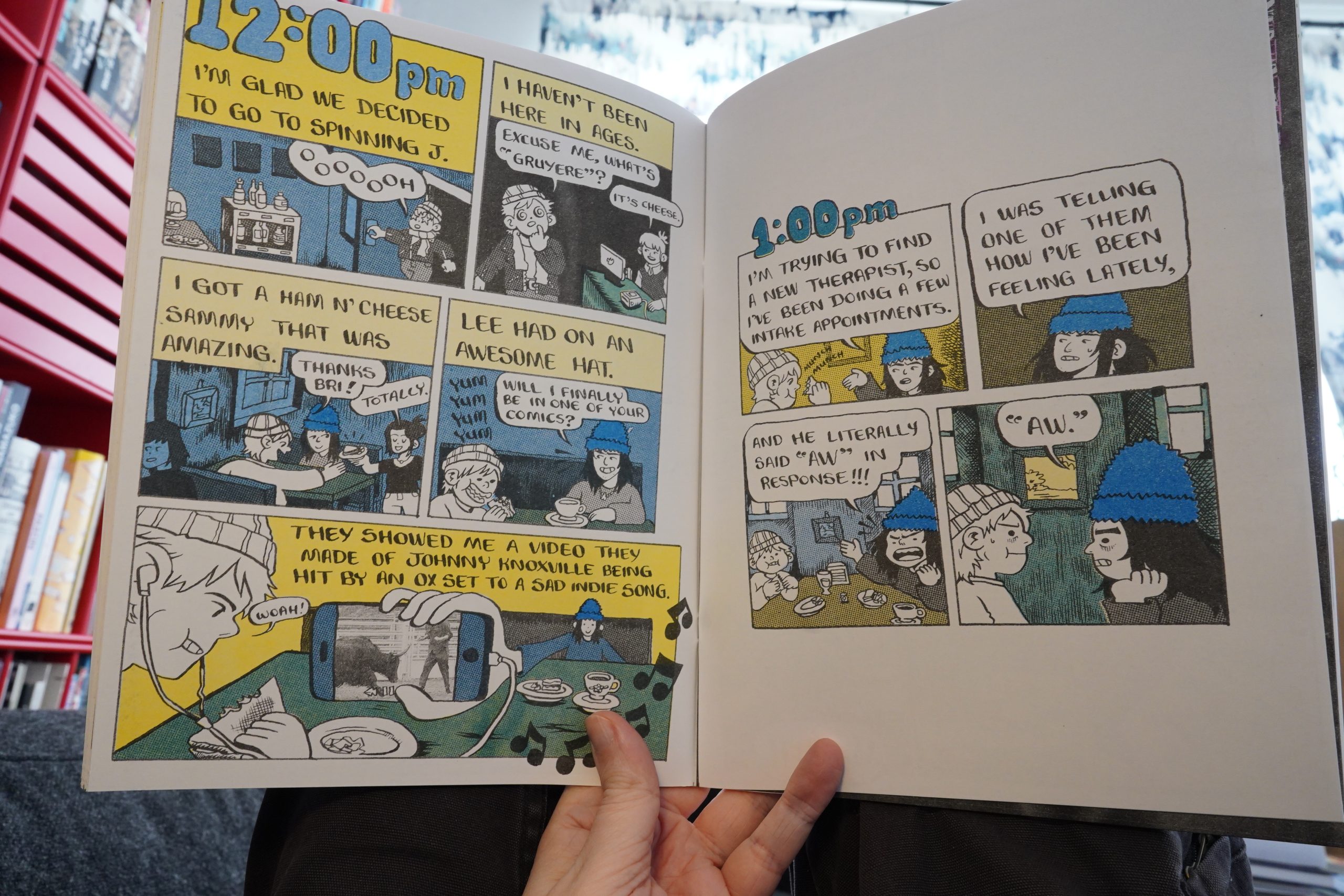
But it’s all good stuff, like this “hourly comic” thing from Caroline Cash.
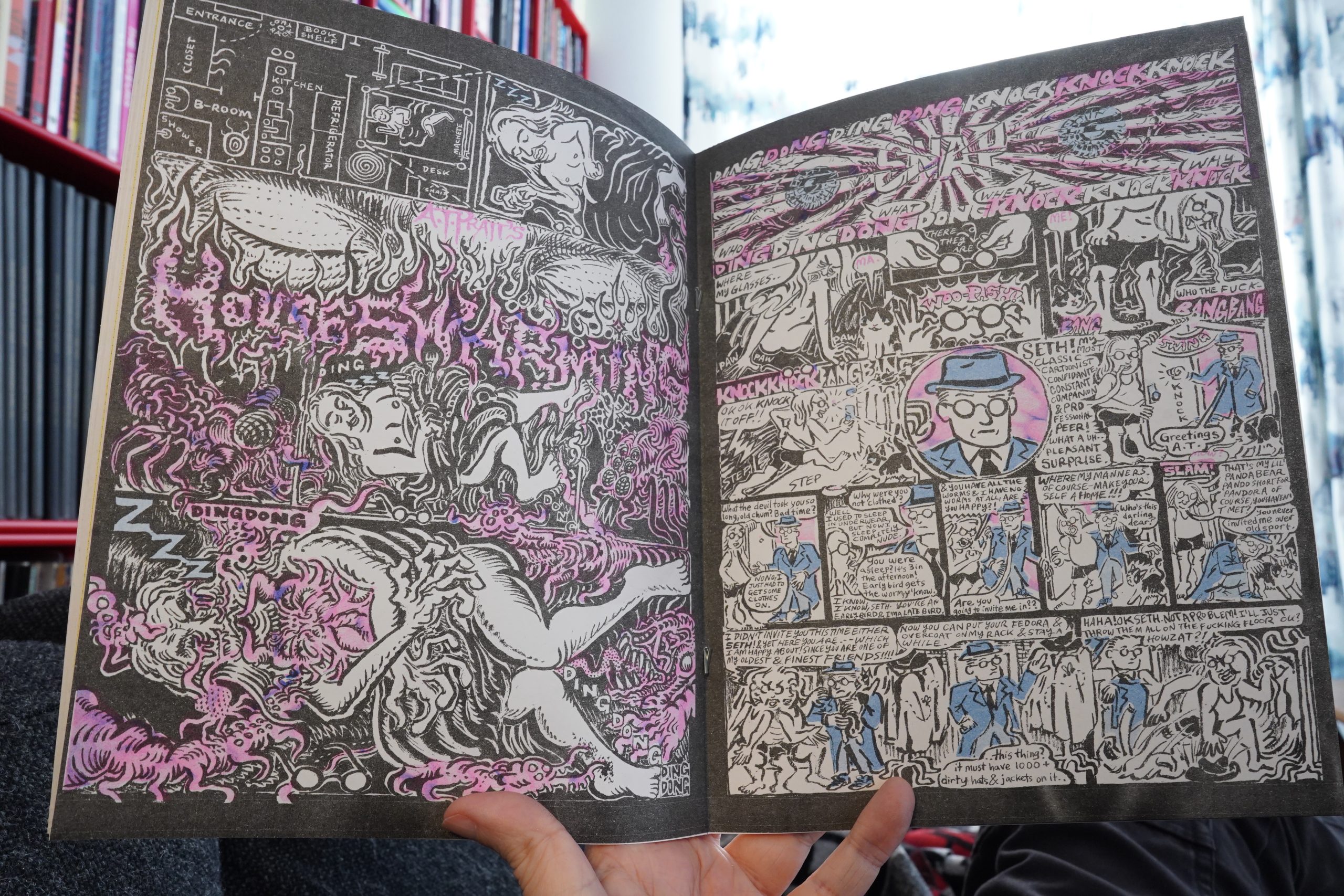
As this is mostly autobio, A. T. Pratt’s piece goes kinda totally meta, featuring Seth, Joe Matt and Chester Brown coming over for a visit (and then all getting killed by Pratt (and his cat)). Tee hee.
| Blaine L. Reininger: Ocean Planet | 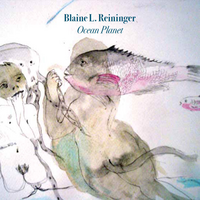 |
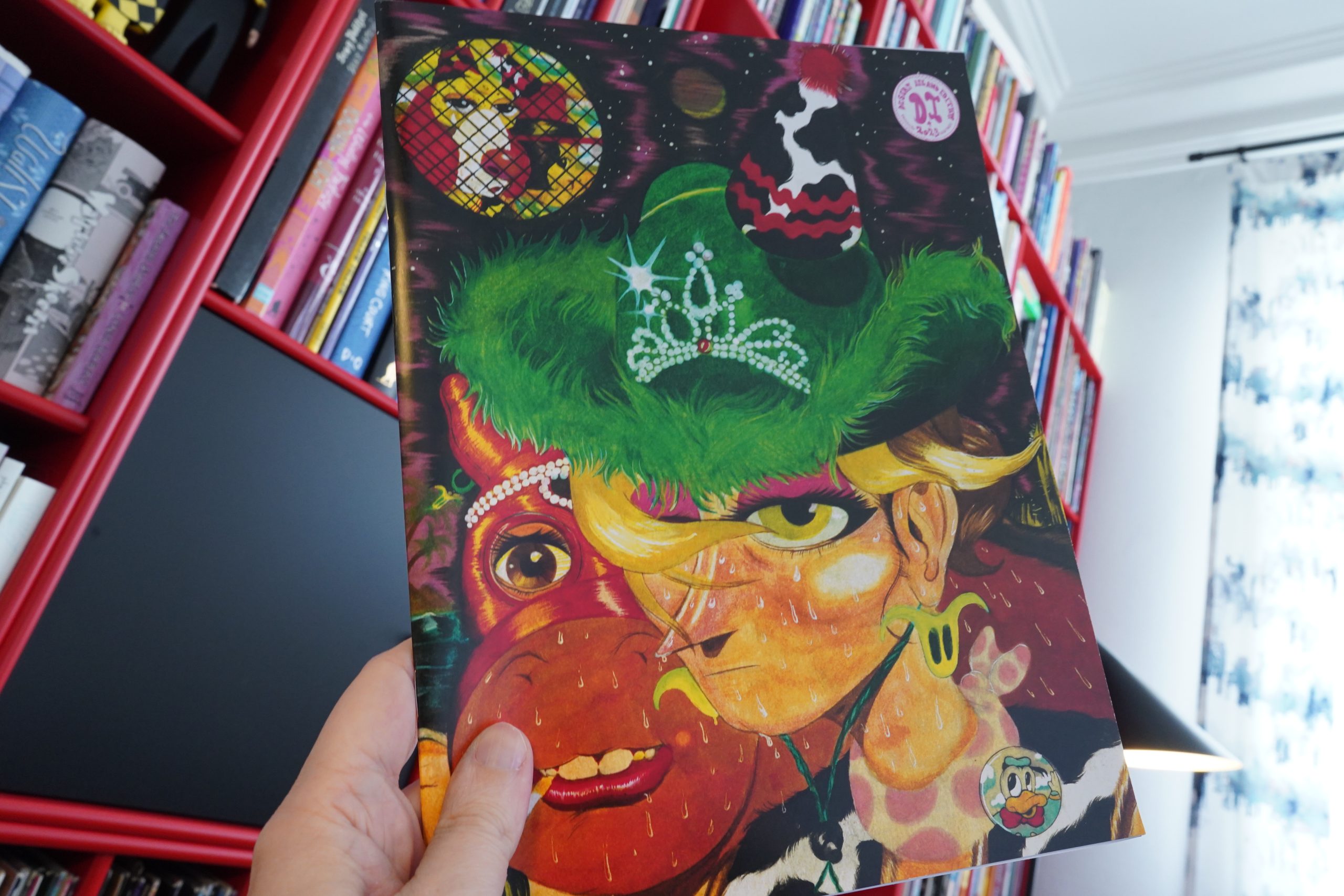
10:40: Plum Pocket by Nate Garcia
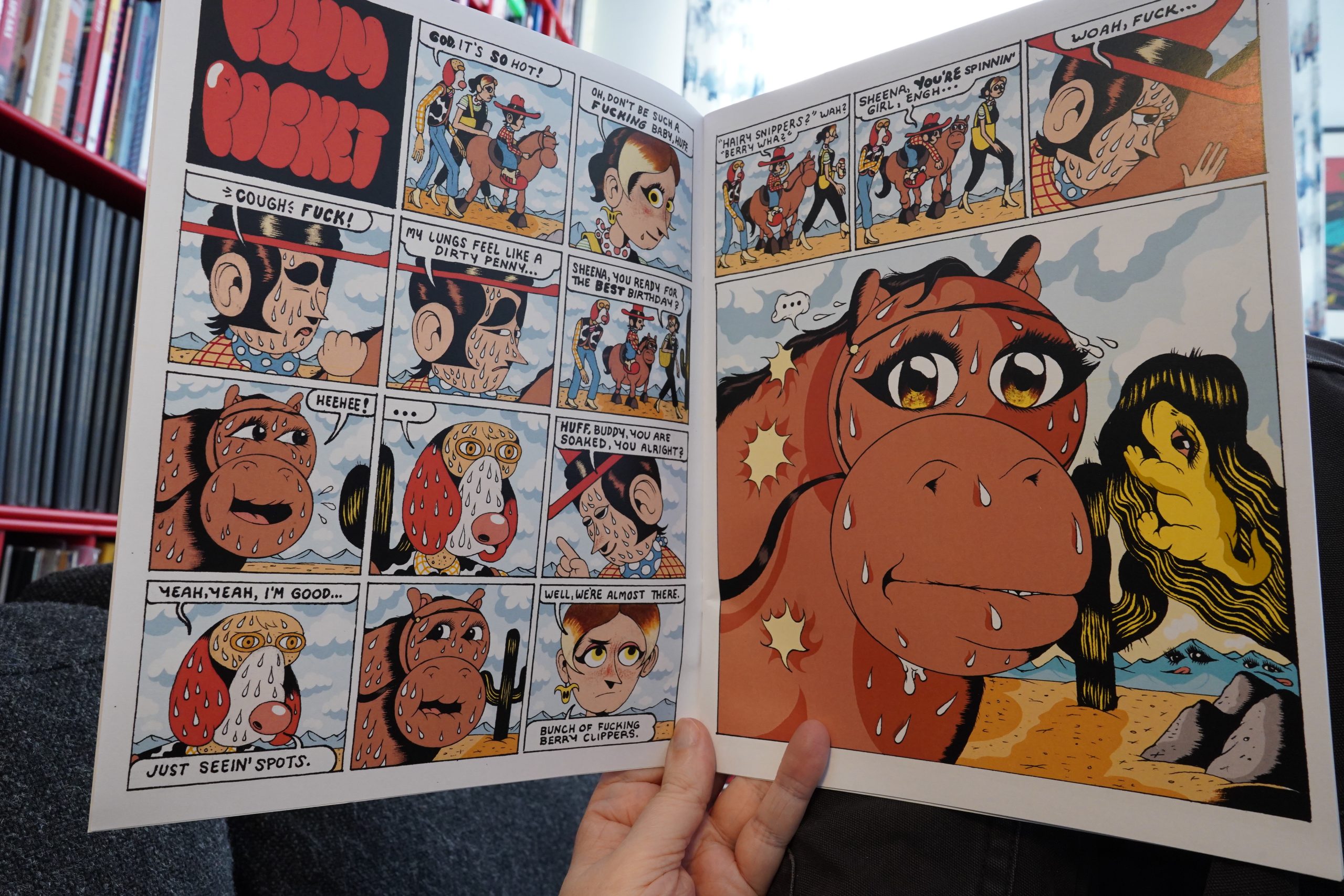
If ever a comic book needed a shower, it’s this one. This is the stickiest, sweatiest book ever.
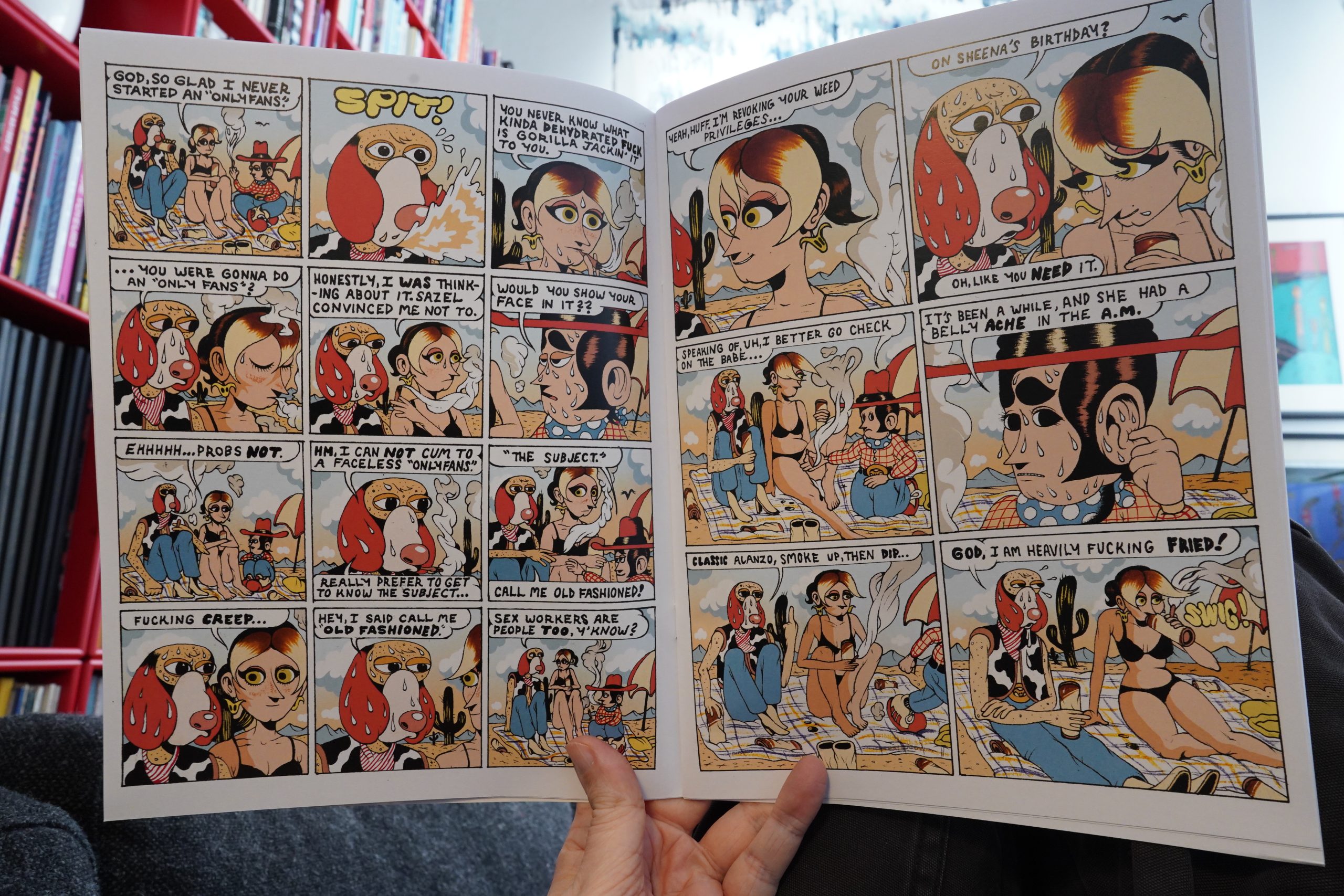
I like it, but I’m not all sure where Garcia is going with all this.
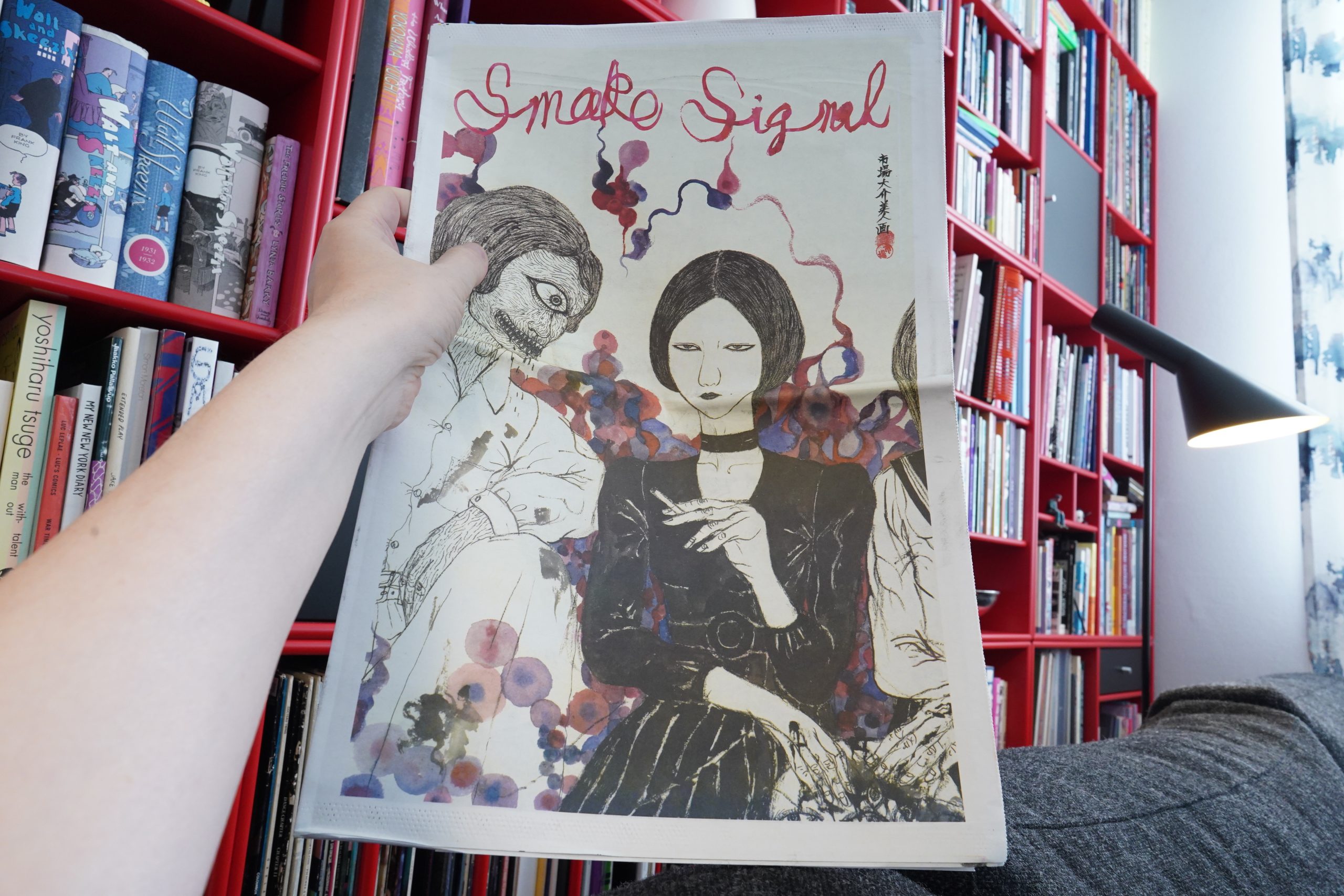
10:53: Smoke Signal #40 by Daisuke Ichiba
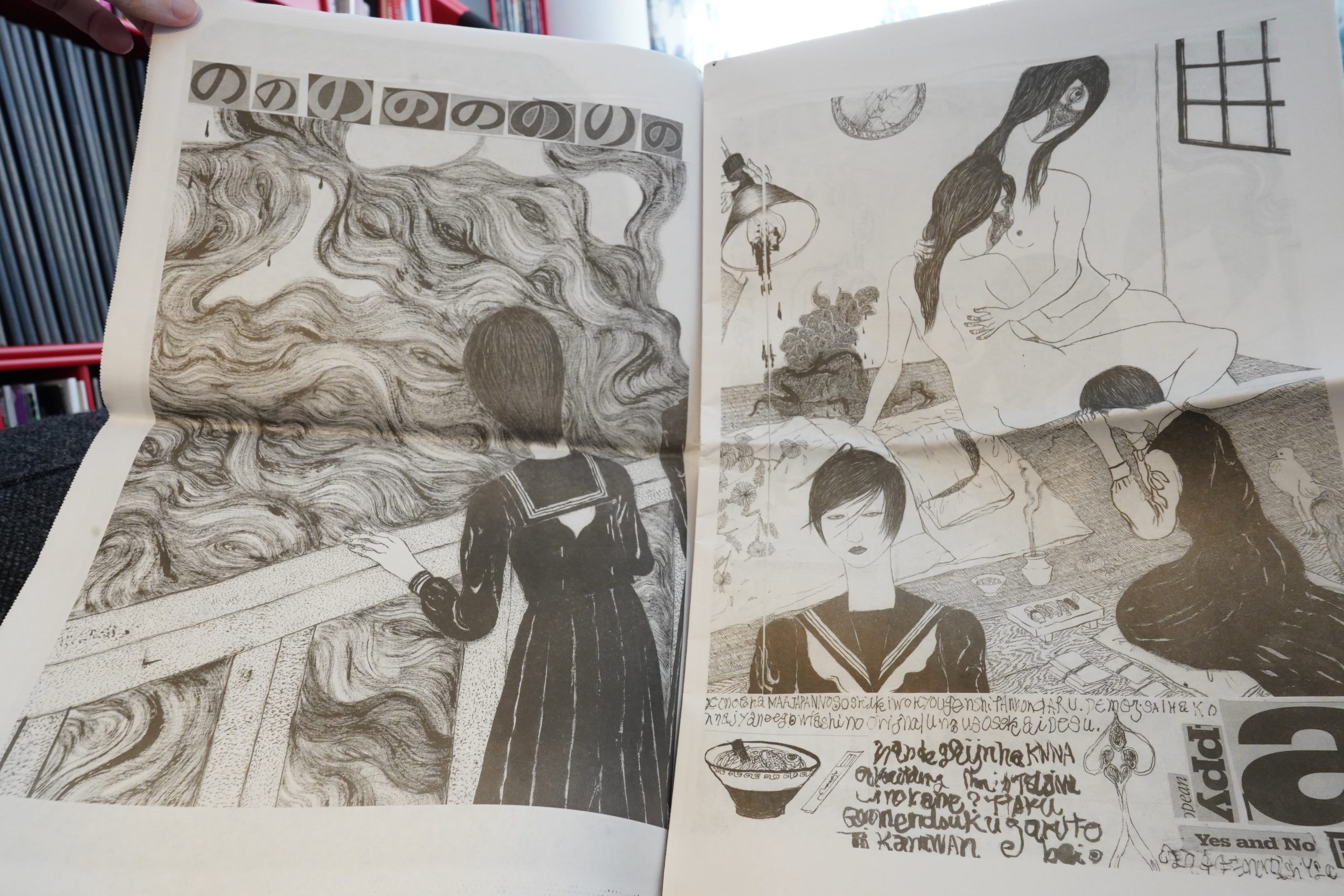
Have all the recent Smoke Signal issues been illustration instead of comics? Hm…
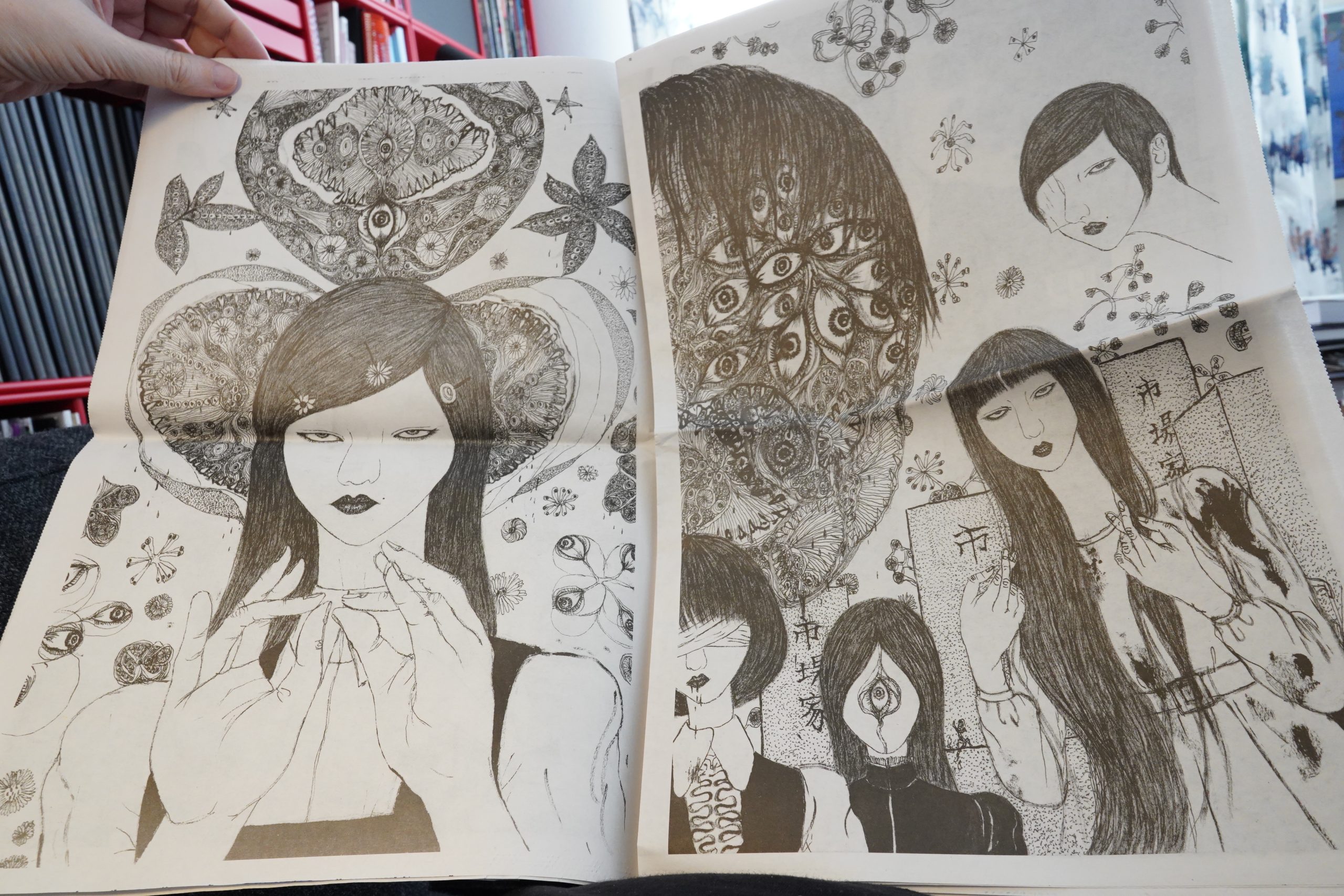
I mean, this looks great, but…
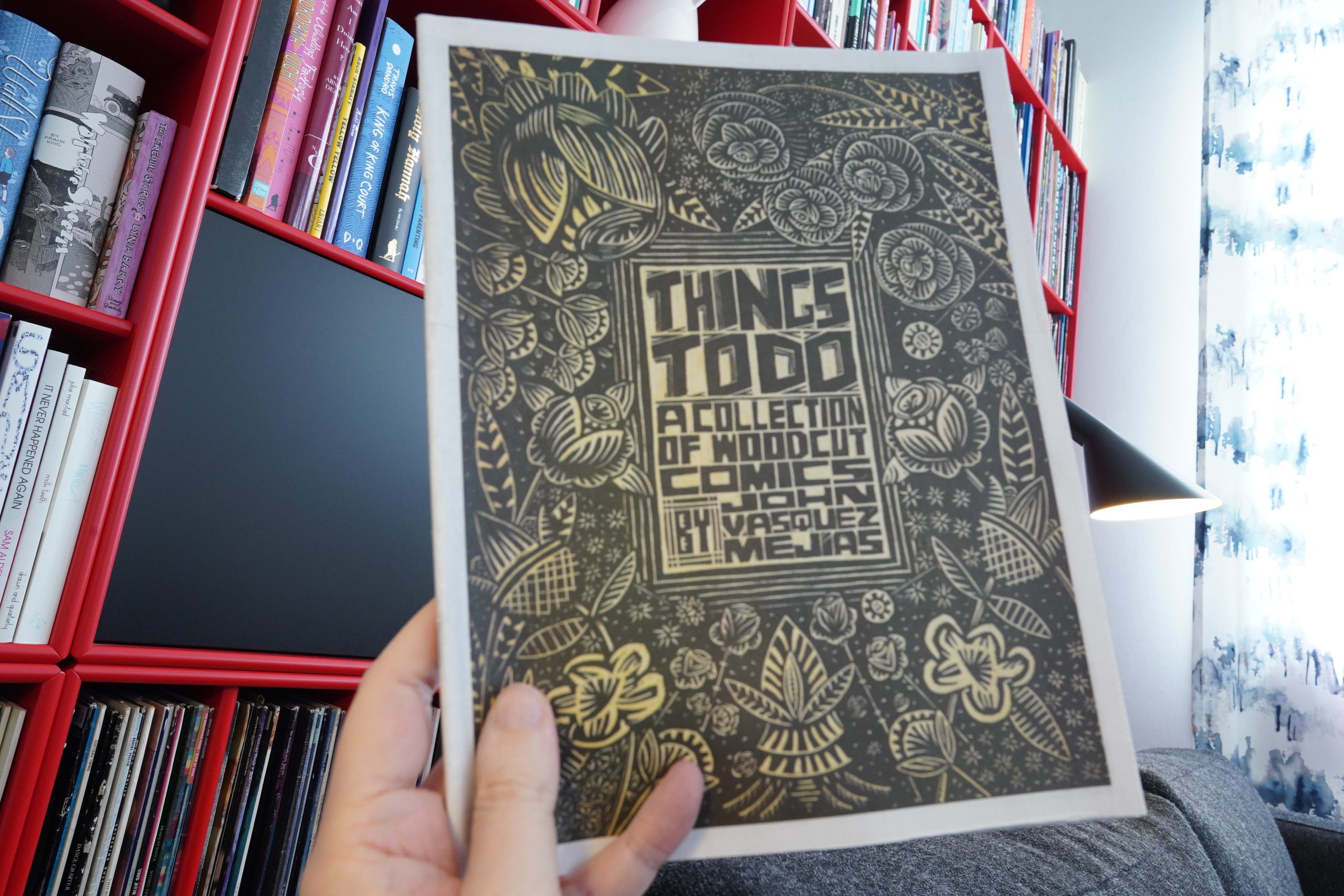
10:57: Things To Do by John Vasques Mejias
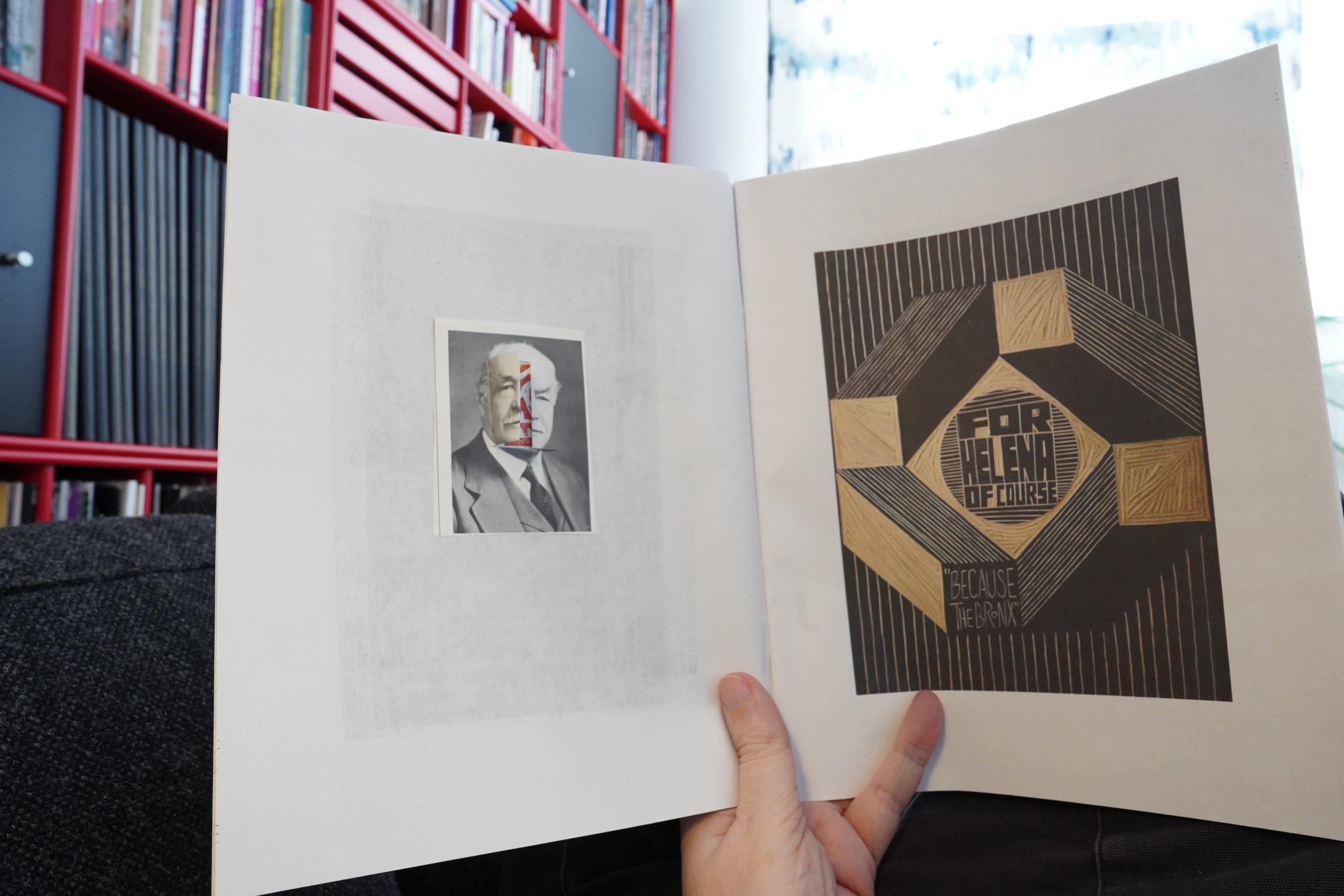
Heh. Fold out faces.
This is a collection of woodcut and lino comics, mostly autobio.
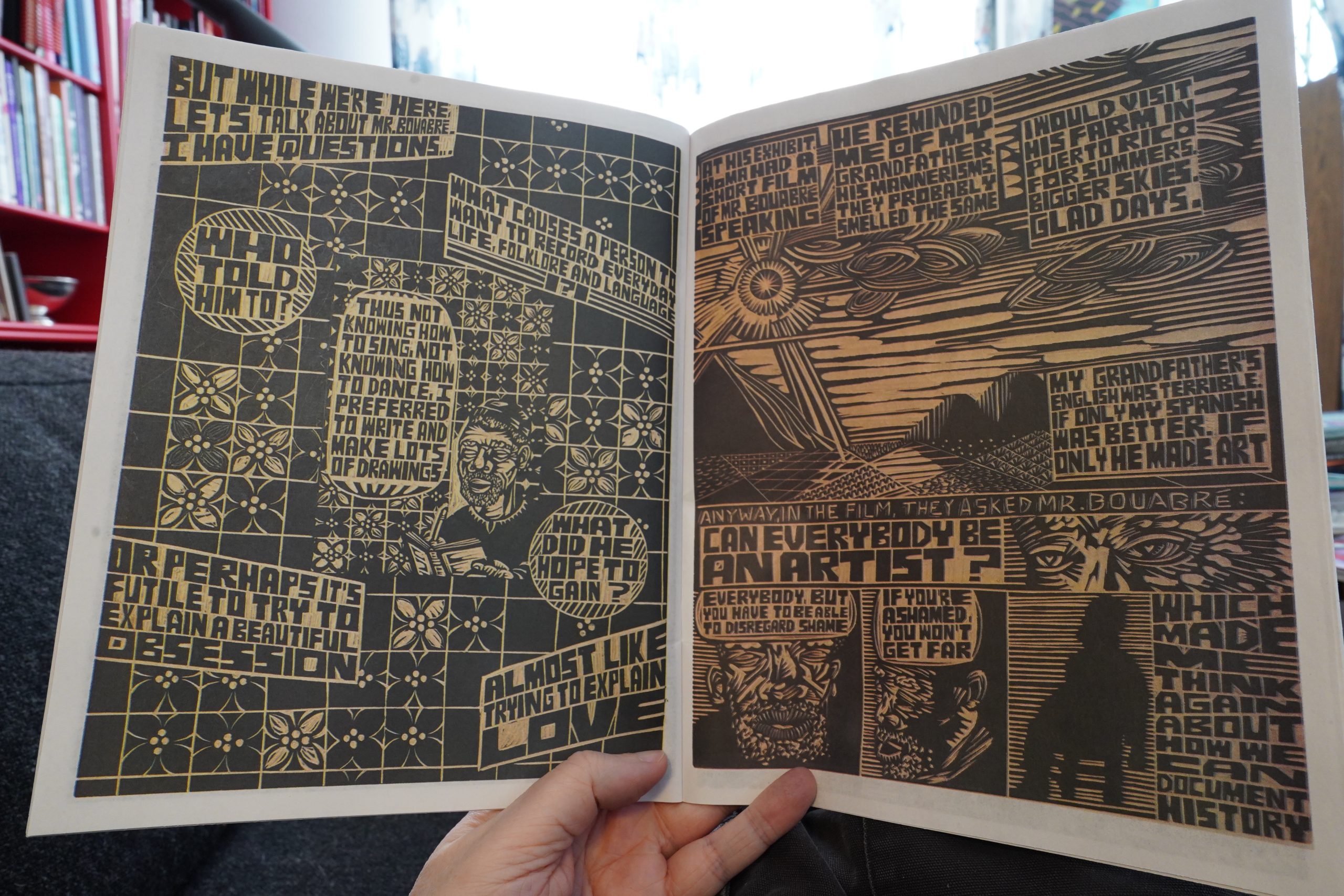
I like it, but the reproduction leaves a lot to be desired…
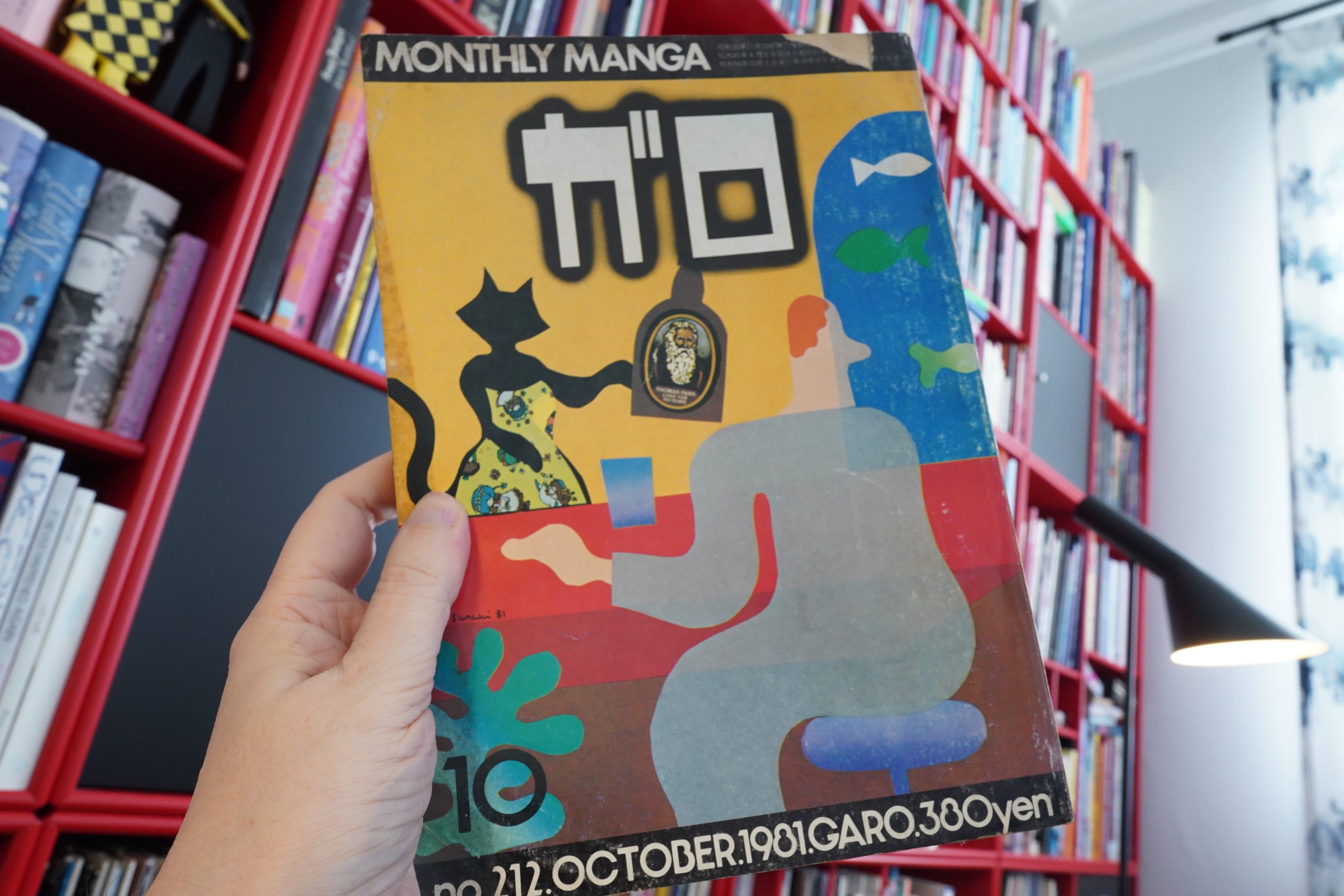
11:07: Garo no 212
Well, that’s random! An issue of Garo!? I don’t understand Japanese, but I’ve been wondering what these books look like. It seems like half of Japanese comics being translated these days (excluding comics for children, of course) are pilfered from Garo, so I’ve been wishing somebody would just get on with translating Garo in full. (I know that’s never going to happen.)
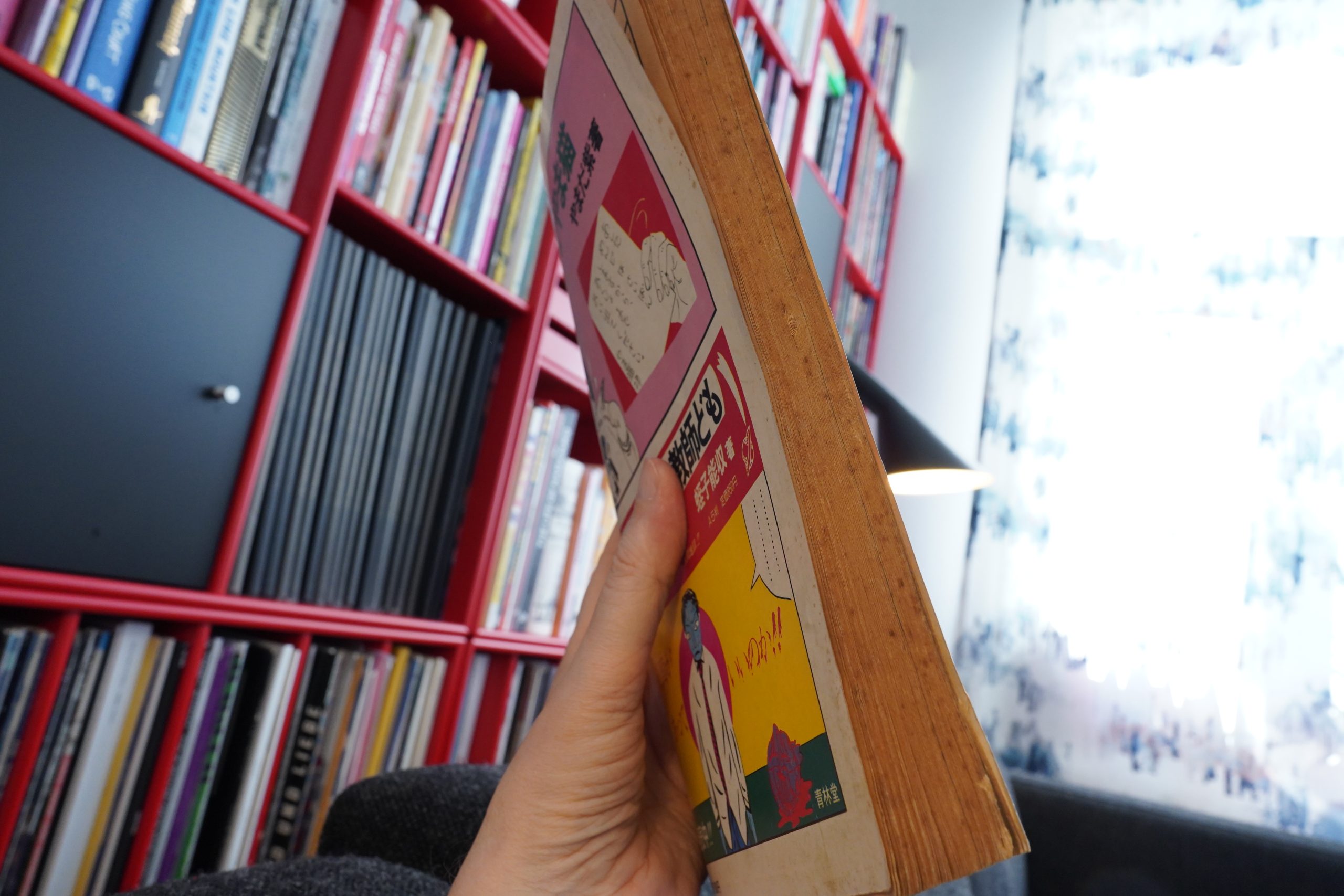
It’s much thicker than I thought it would be — 200 pages. And it was a monthly!? Geez.
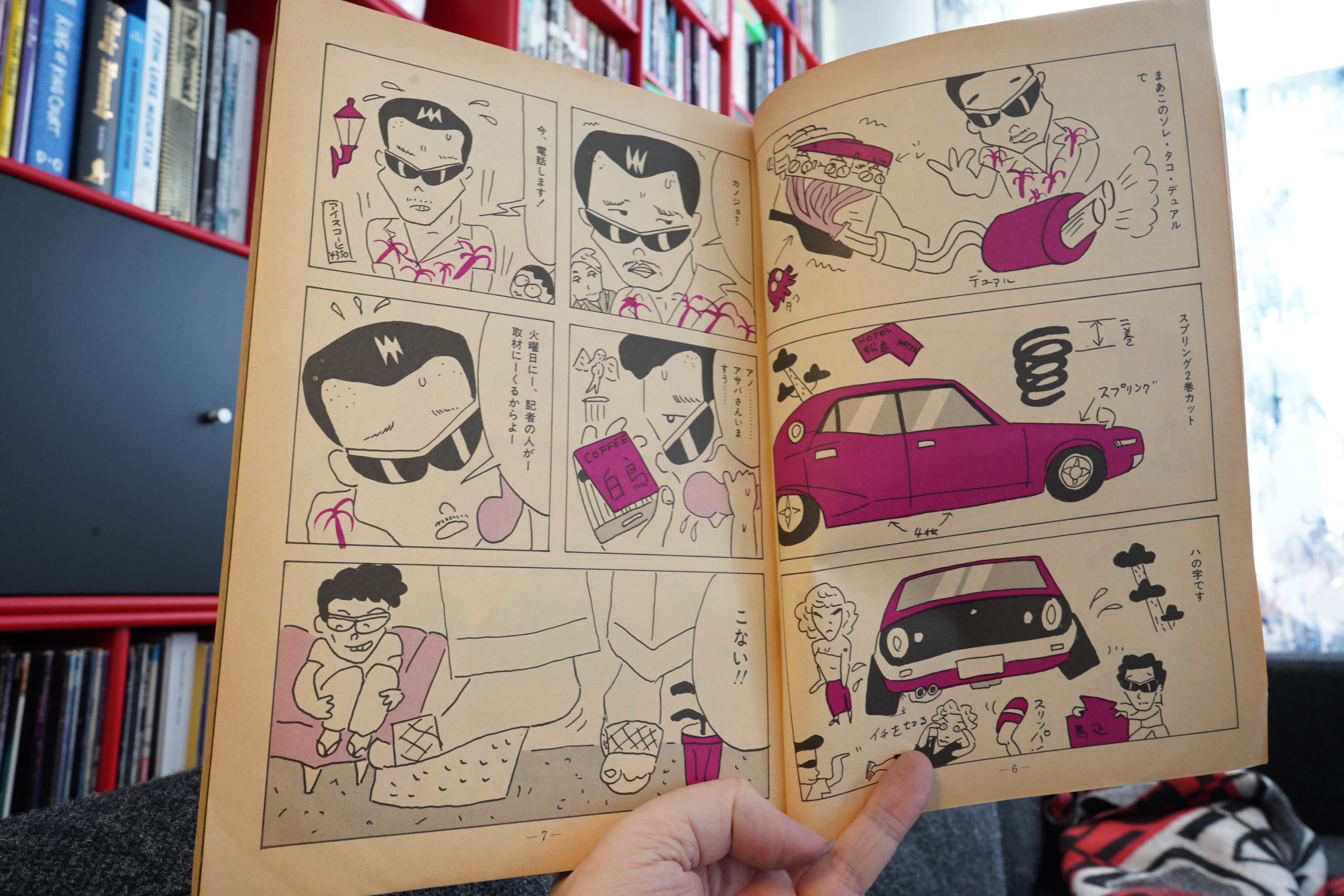
It’s mostly black and white, but there is some colour.
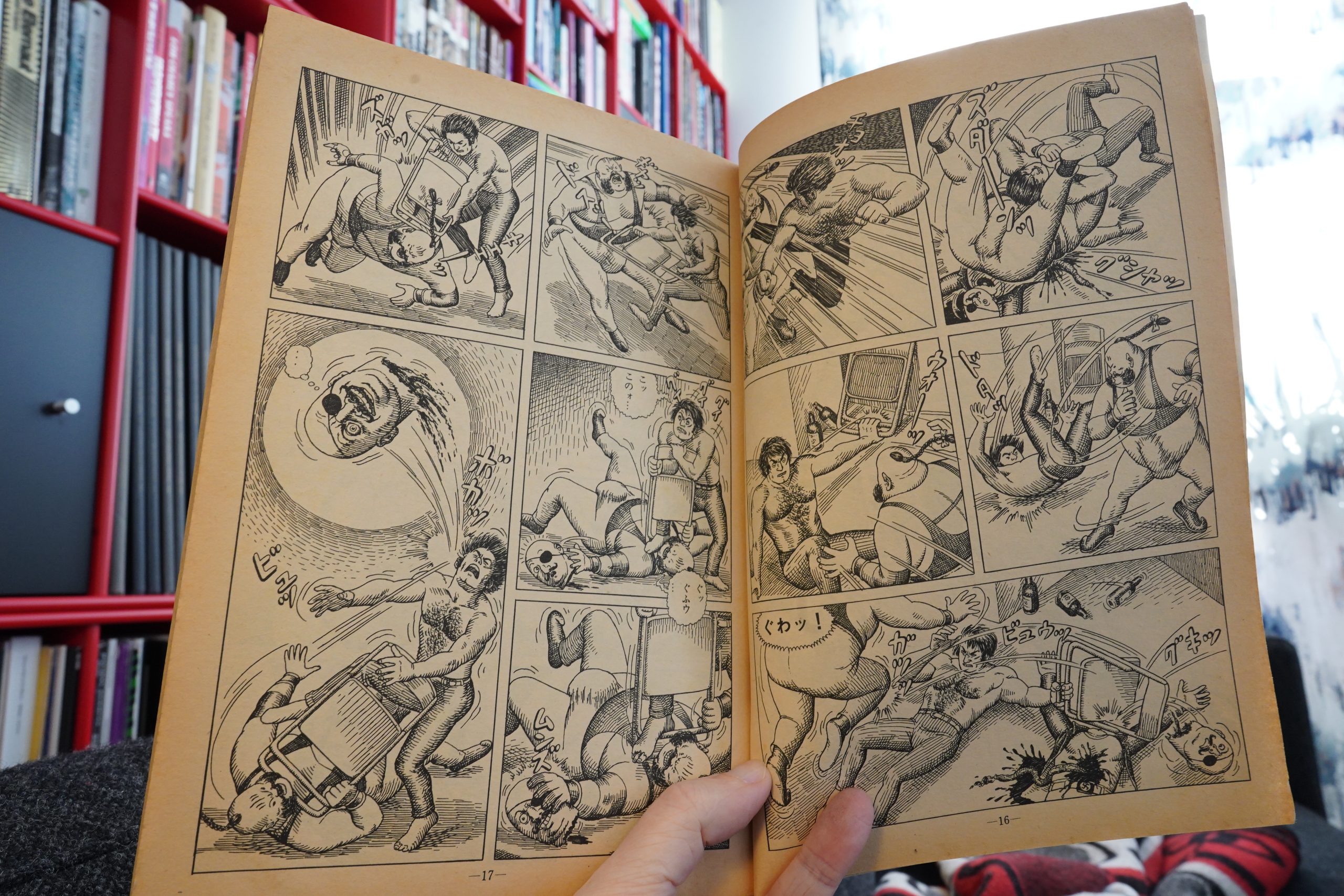
It’s even more varied than I thought it would be — only the “serious” artists are being translated, of course, but there’s a lot more stuff in here.
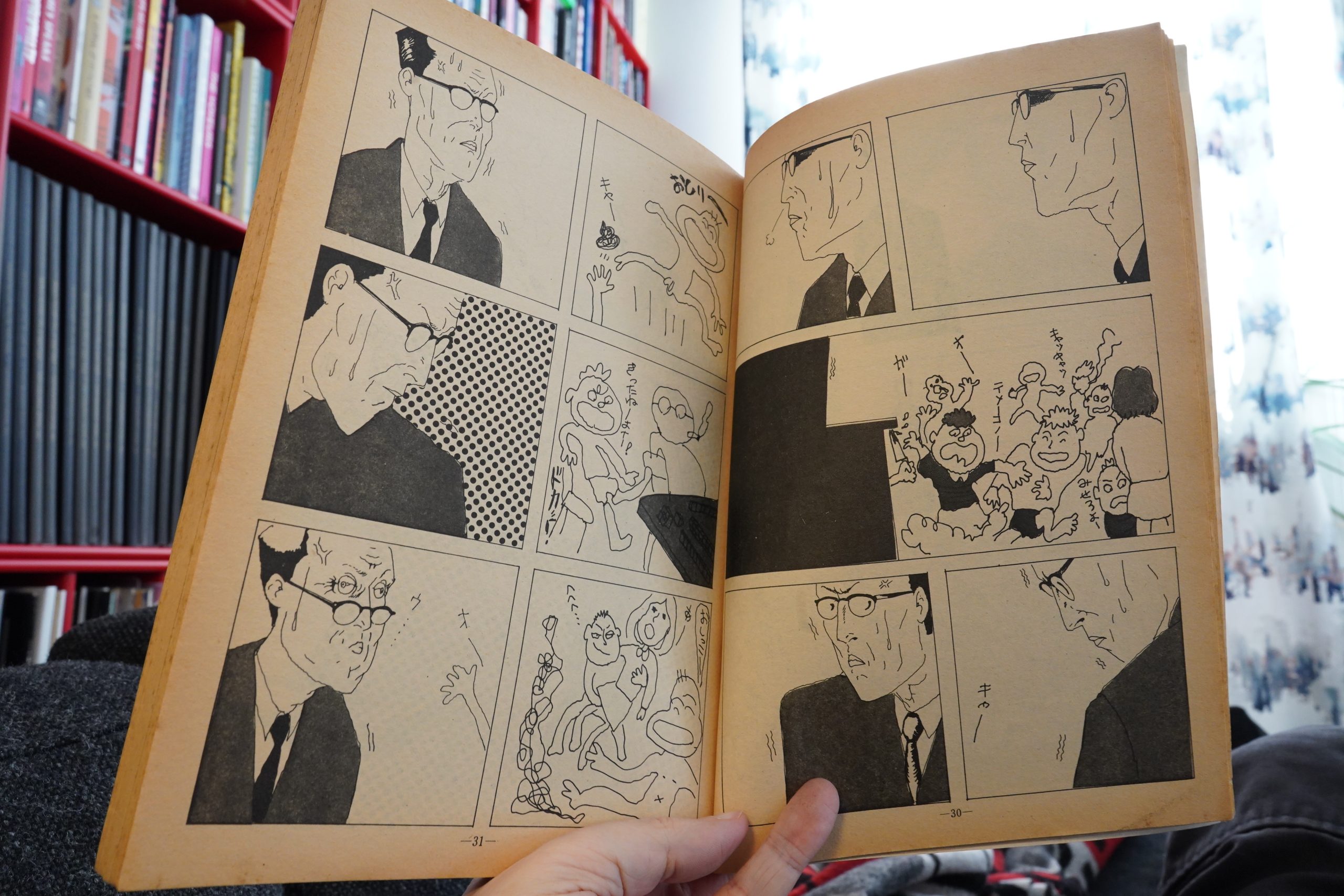
And lots of weird stuff.
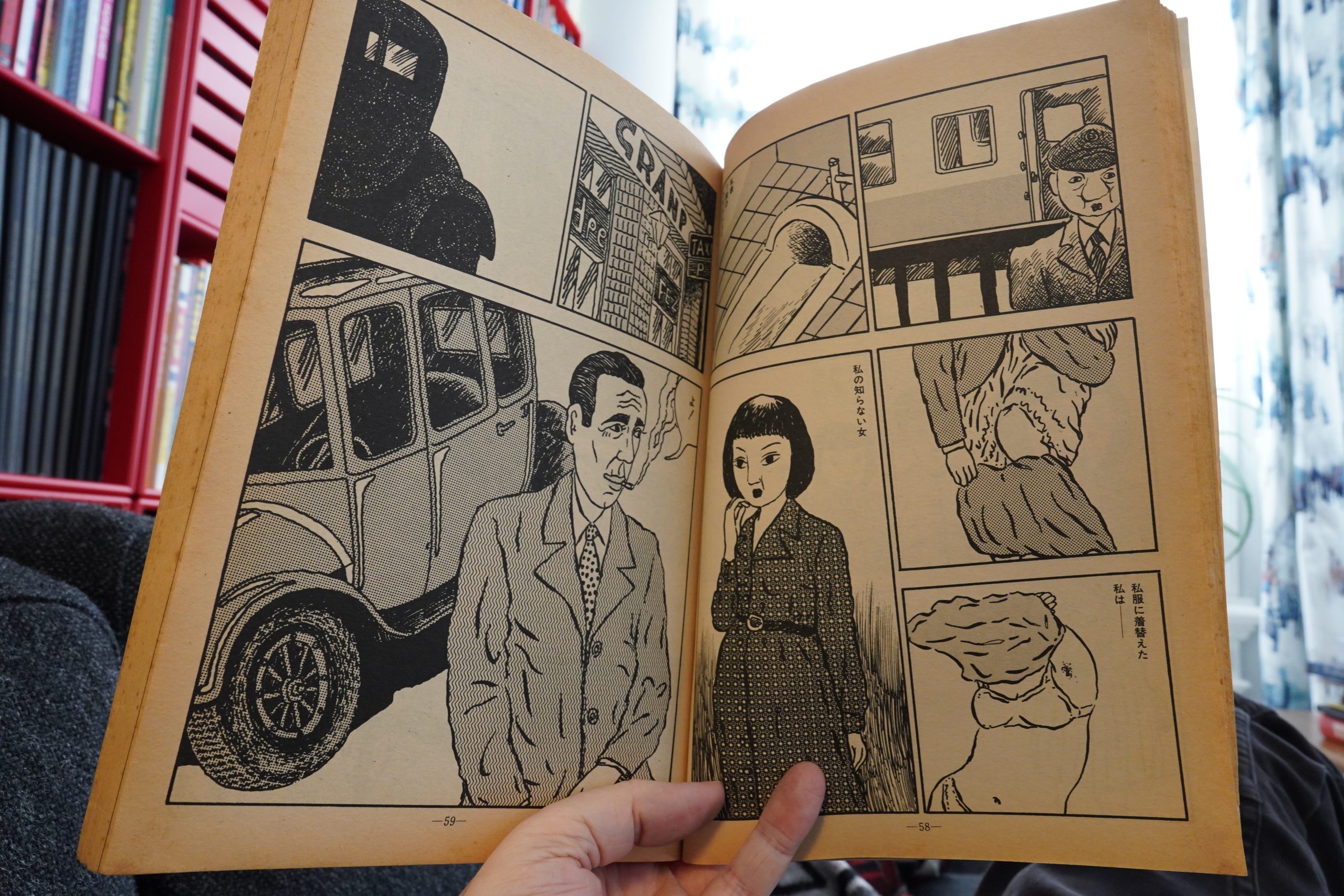
Lots of sex.
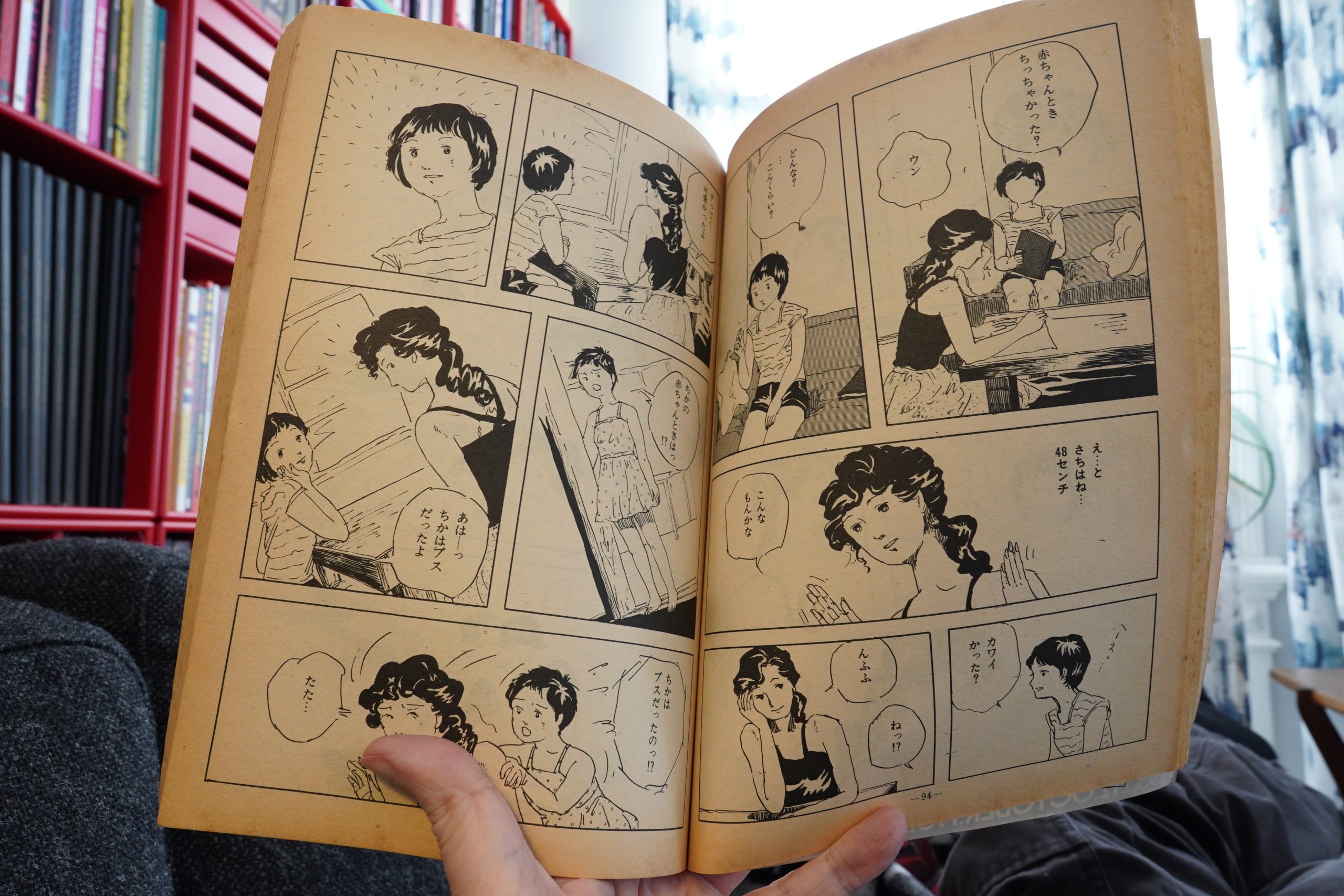
Hey, I recognise that art style… er… don’t know who it is.
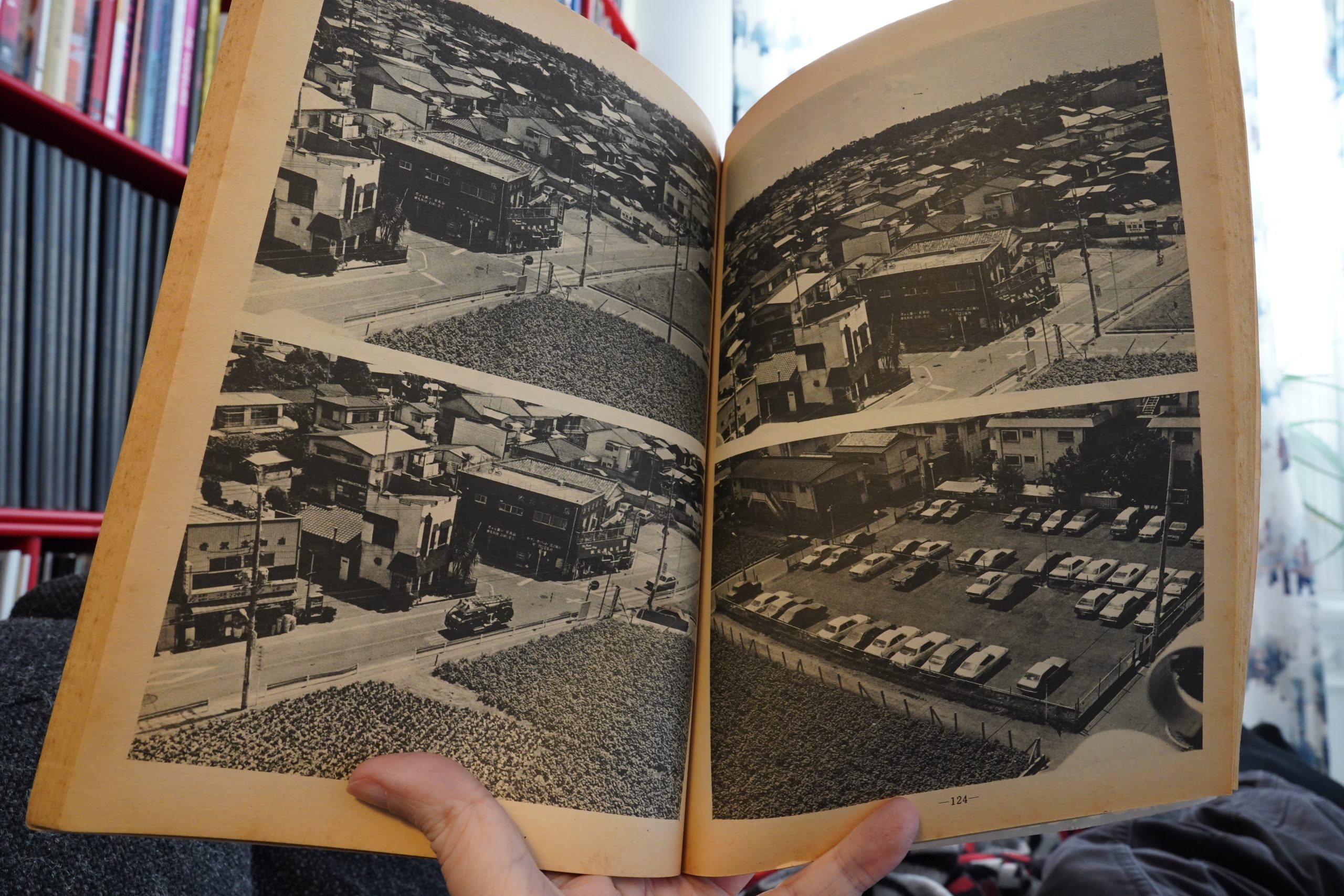
There’s also a portfolio of images in here.
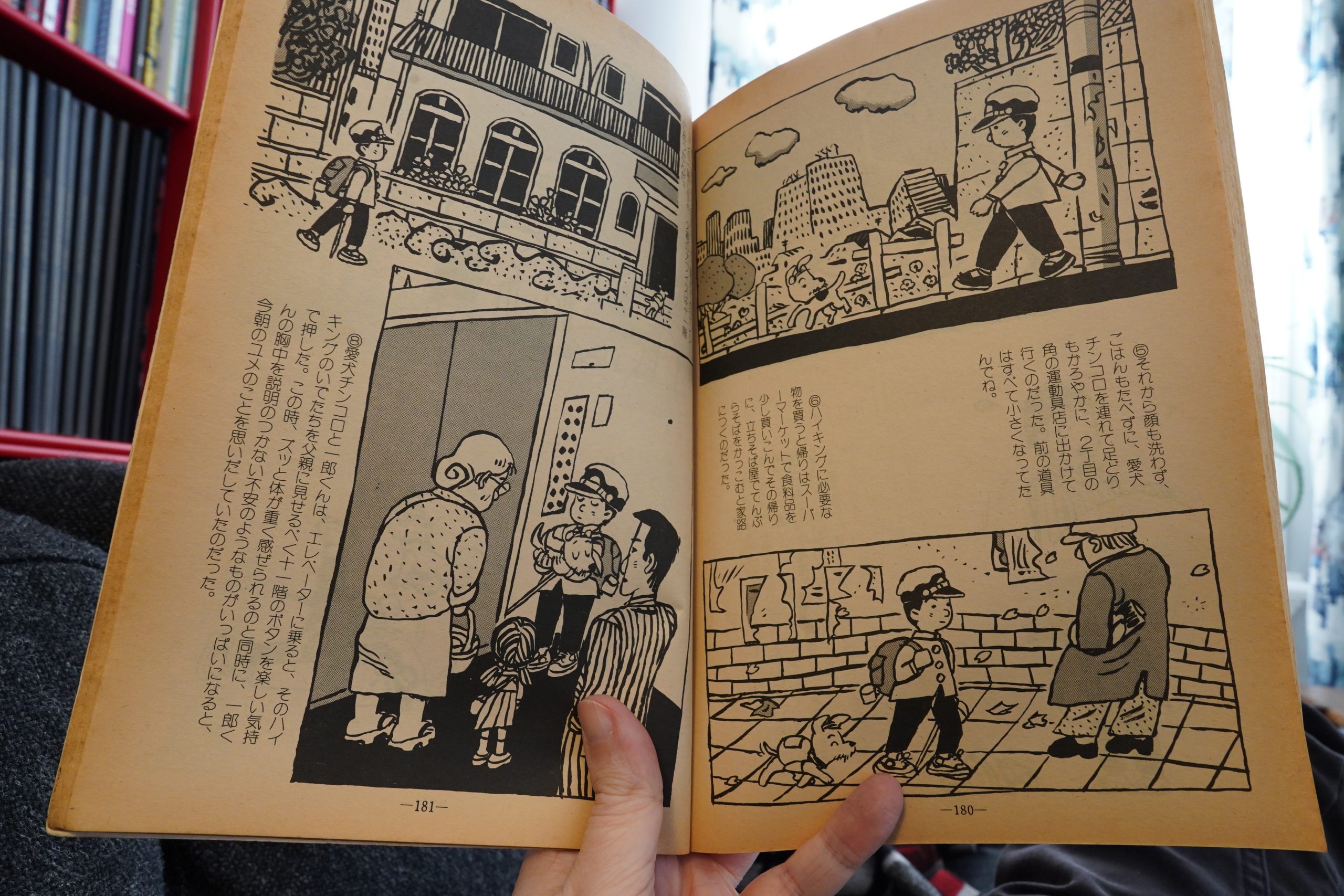
Is this something from the 50s, perhaps?
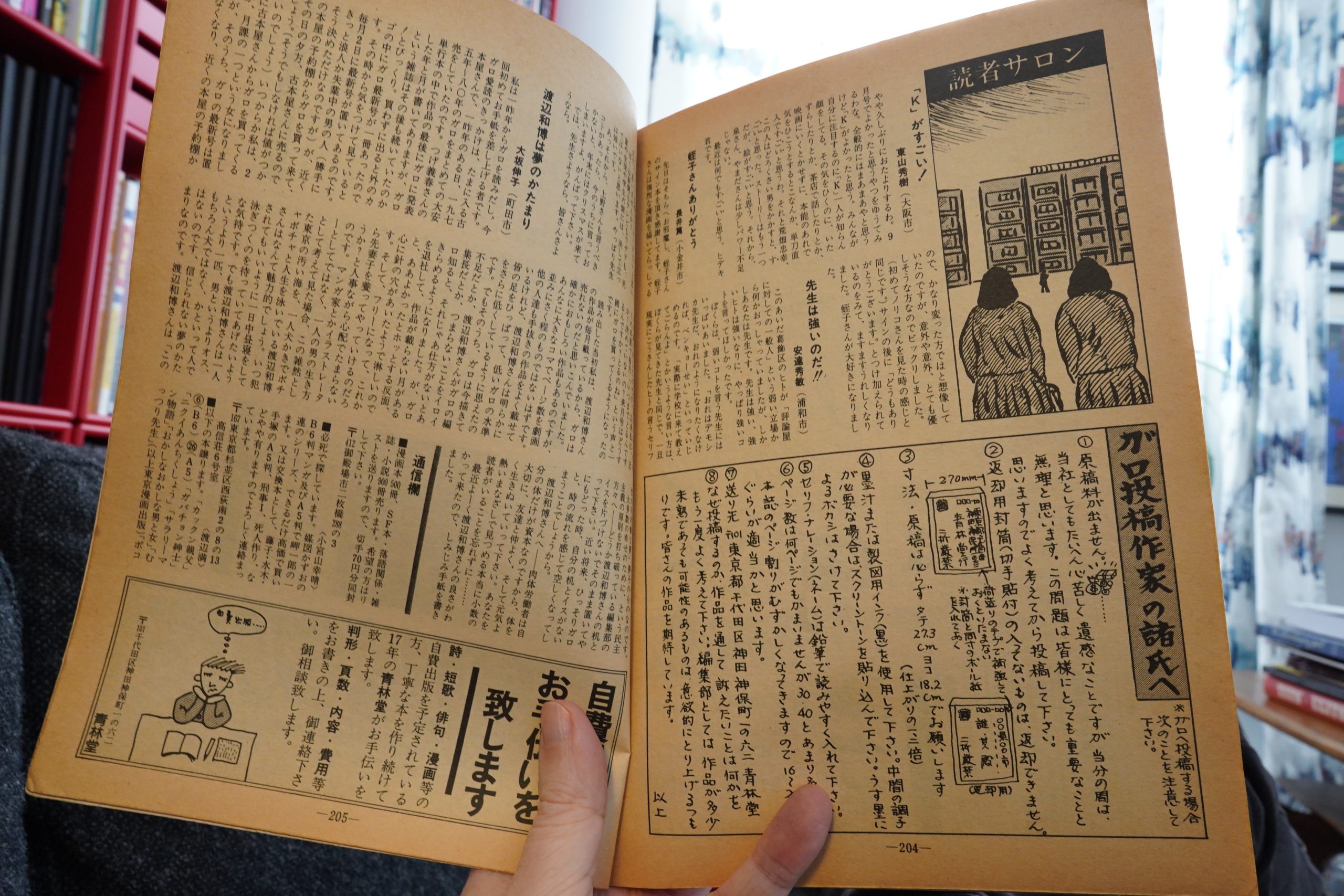
And the issue ends with a whole bunch of text. Letters pages, perhaps? Editorials?
Anyway, it’s interesting to flip through this thing, and it only makes me with even more that somebody would translate the entire series already. The current approach — to do collections of specific authors that have appeared in Garo — is fine, of course, but I really enjoy reading pieces in their original context.
Perhaps some pirate has already done illegal scanlations of Garo? I’m not into that scene at all, but I’d be up for reading those…
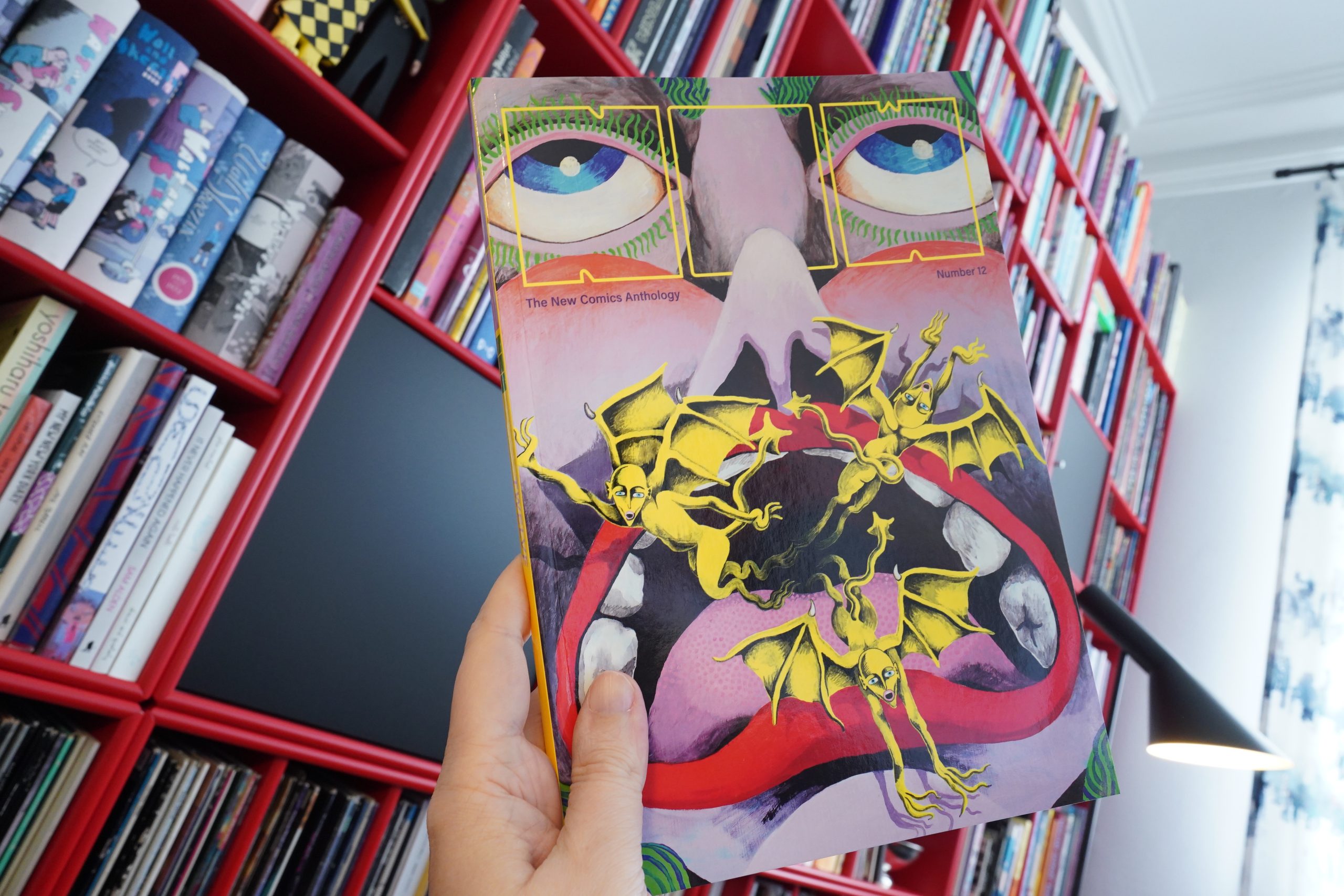
11:23: Now 12 edited by Eric Reynolds (Fantagraphics)
And this is the final thing in these two Desert Island boxes… and it’s something I’ve already bought. *pout* Oh, well. Haven’t read it yet, so I might as well do that now.
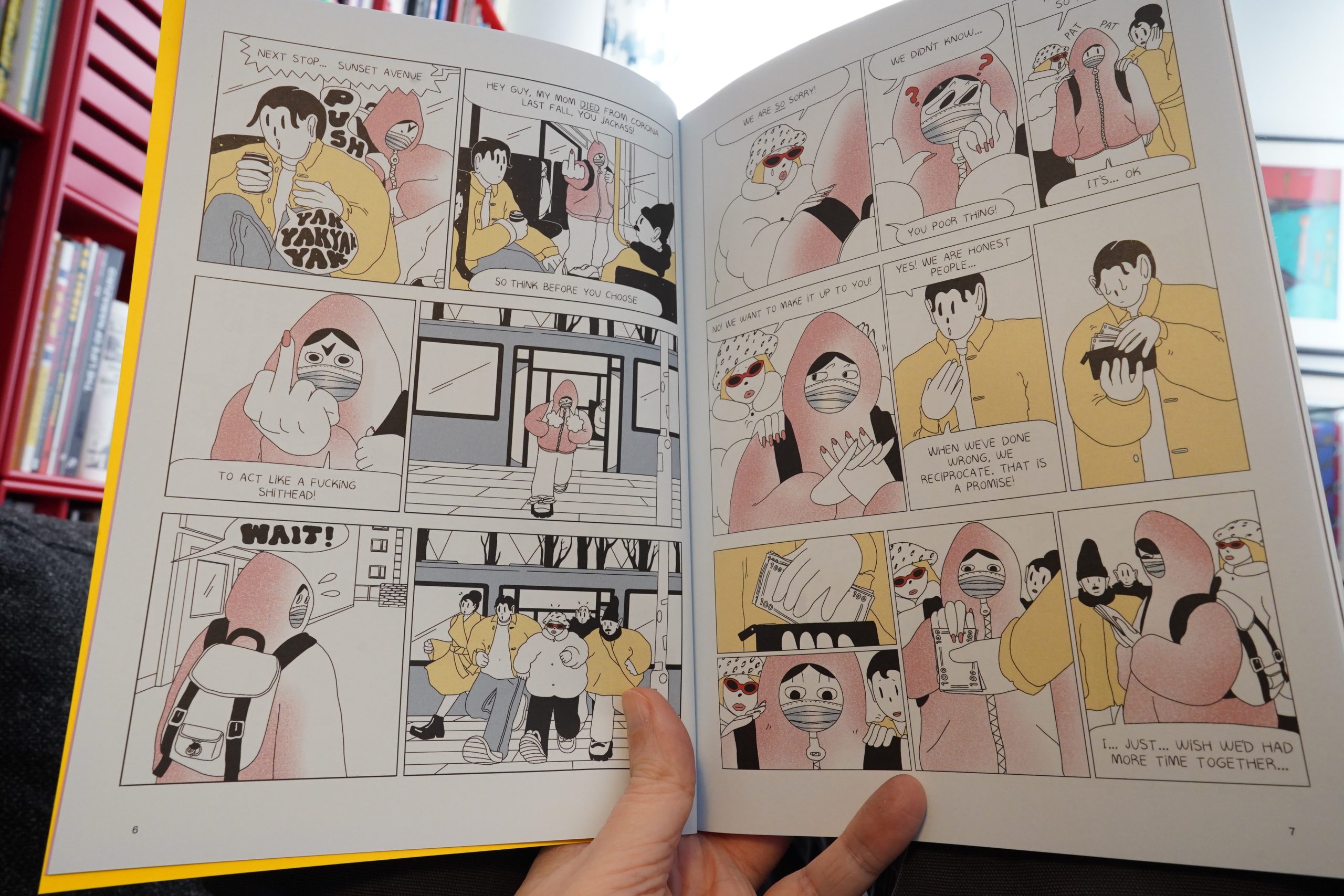
Hey! They’ve finally changed the paper stock? Now used to be printed on this thin, shiny, brittle paper, and that was the only thing I disliked about the anthology. But now it’s on proper matte paper, and the book feels a lot better.
And I think the contents are slowly changing, too — it feels younger (Cecilia Vårhed).
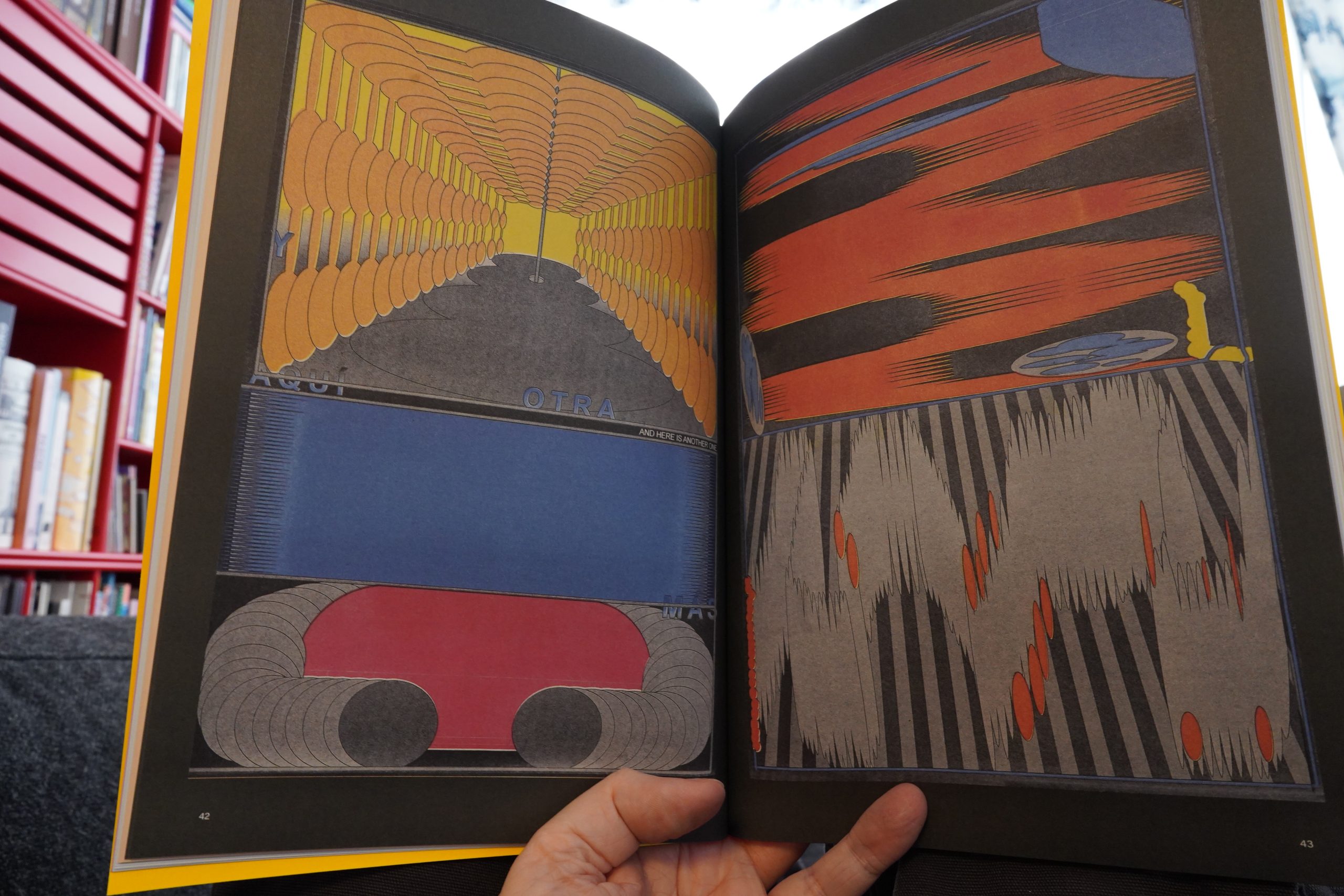
There’s also more pieces that are less clearly narrative (Cynthia Alfonso).
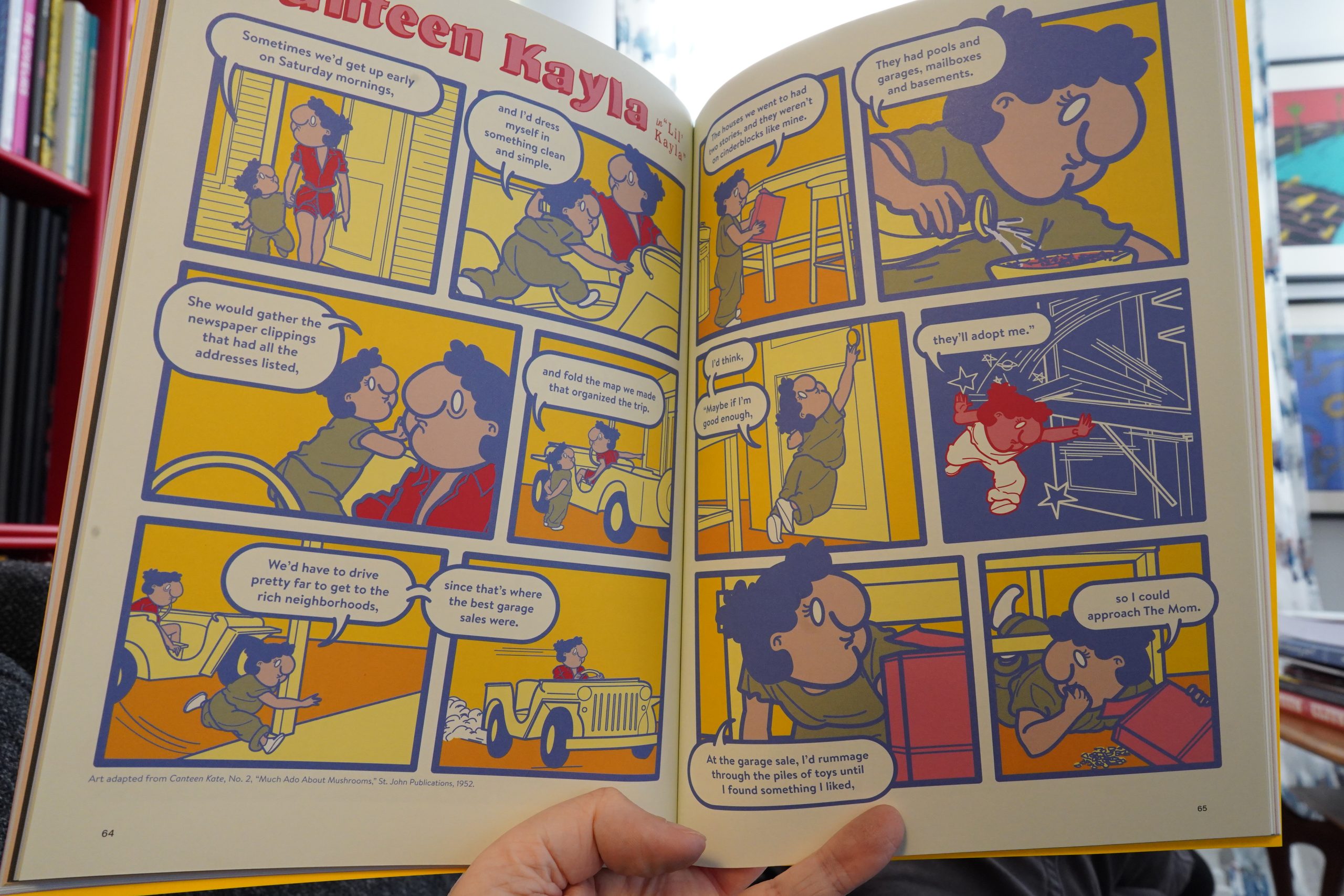
Everything in this issue is good, but I think that perhaps the standout piece is the series of heartbreaking vignettes by Kayla E. These wouldn’t have been out of place in Raw in the 80s, what with their mix of formal play and emotional wallop. Fantastic.
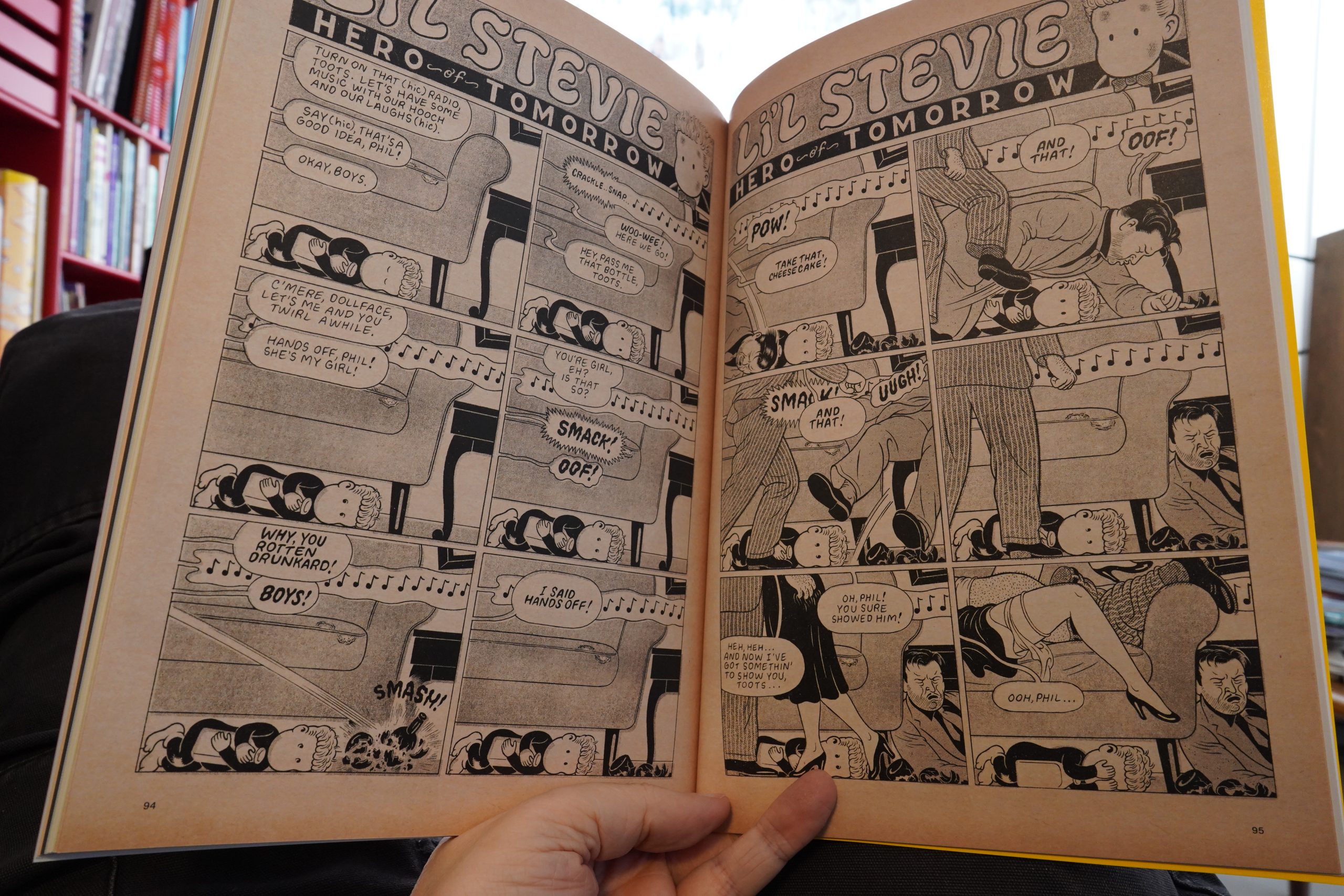
Huh. Is this Tim Lane? It doesn’t really look like Tim Lane… but it’s also outstanding.
Anyway, another strong Now issue.
| Yves Tumor: Praise A Lord Who Chews But Which Does Not Consume; (Or Simply: Hot Between Worlds) |  |
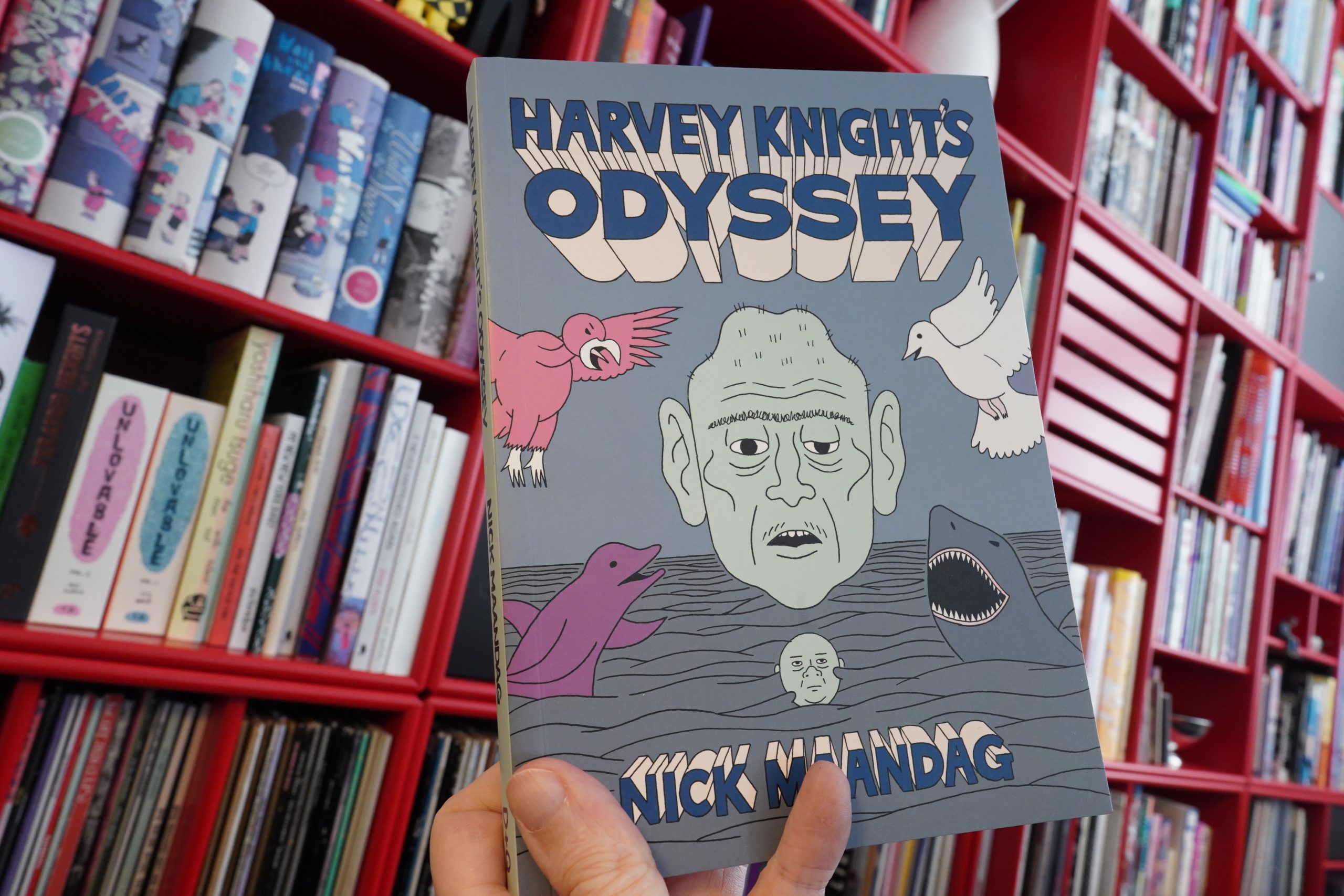
11:50: Harvey Knight’s Odyssey by Nick Maandag (Drawn & Quarterly)
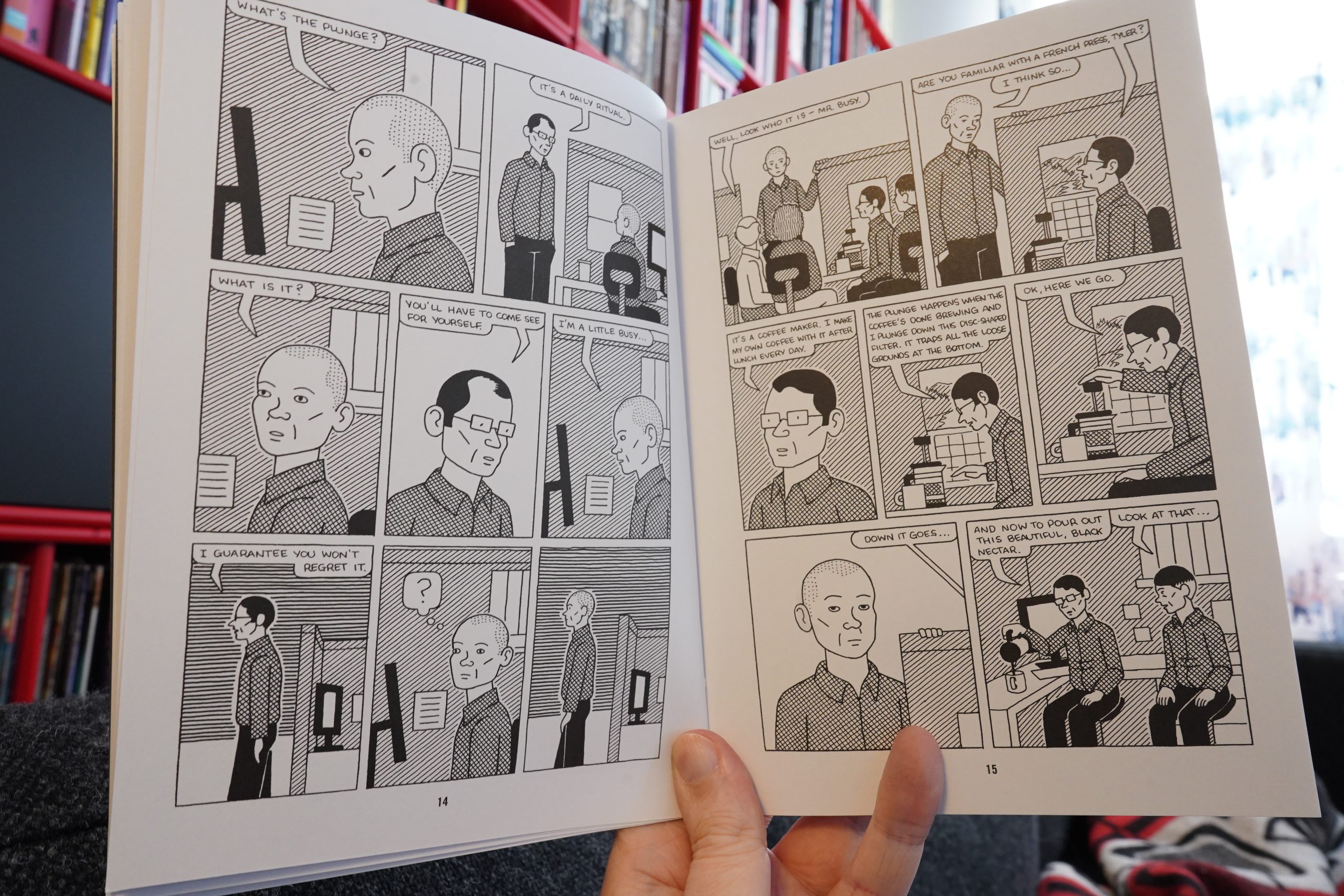
I’ve enjoyed Maandag’s extremely odd humour for many years now, and he’s upped the weirdness in this one. The first story reads like a slightly abstract parody of a workplace sitcom.
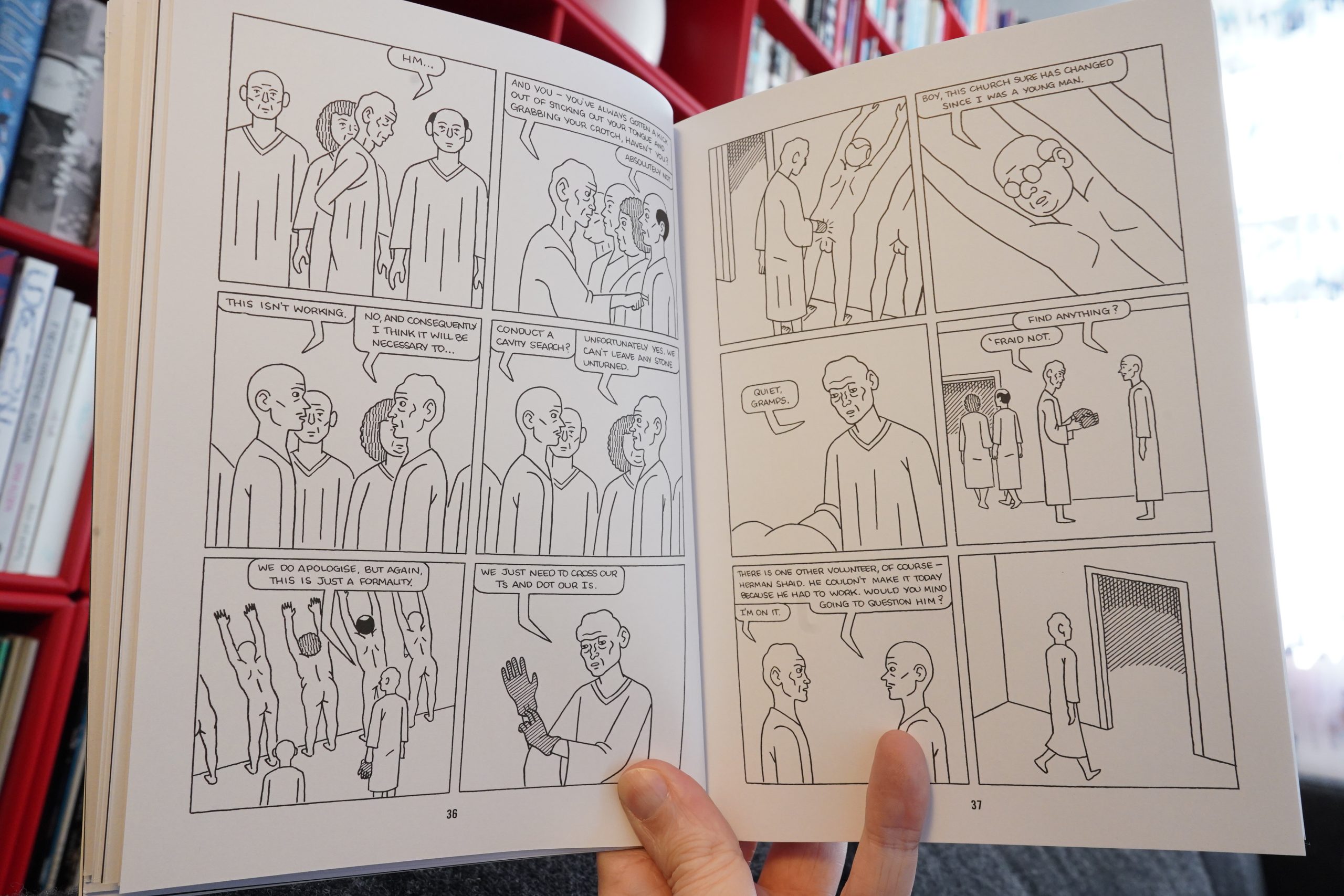
The main story reads like a parody of Nick Drnaso books — it’s all cults and strange happenings. But… I’m just not feeling it. The jokes keep on coming, and I’m just sitting here with my brain going “yes, I can see that’s a joke, and it’s well constructed” but without even smiling.
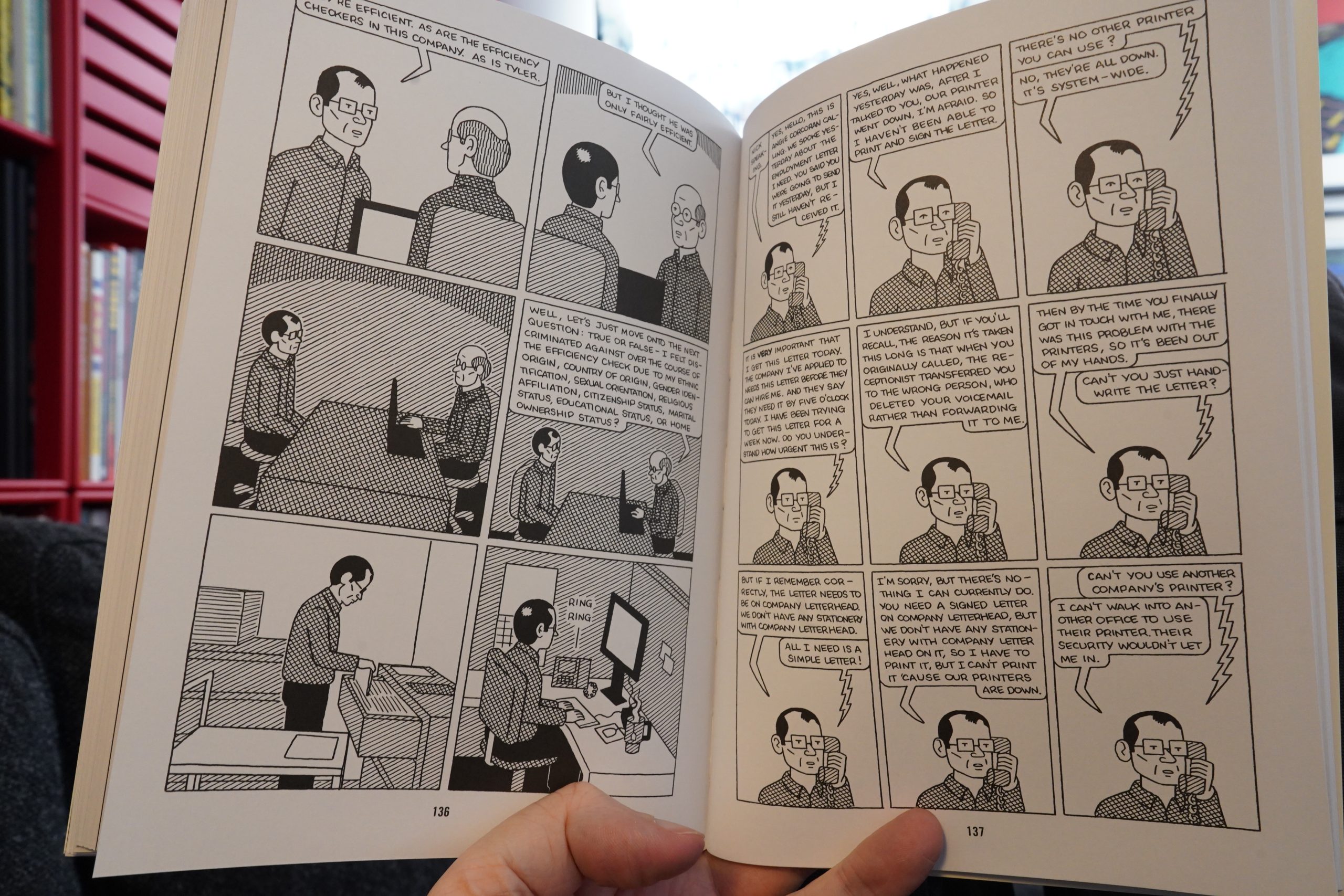
It’s probably just me.
| Tujiko Noriko: Crépuscule I & II | 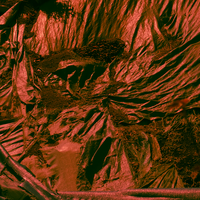 |
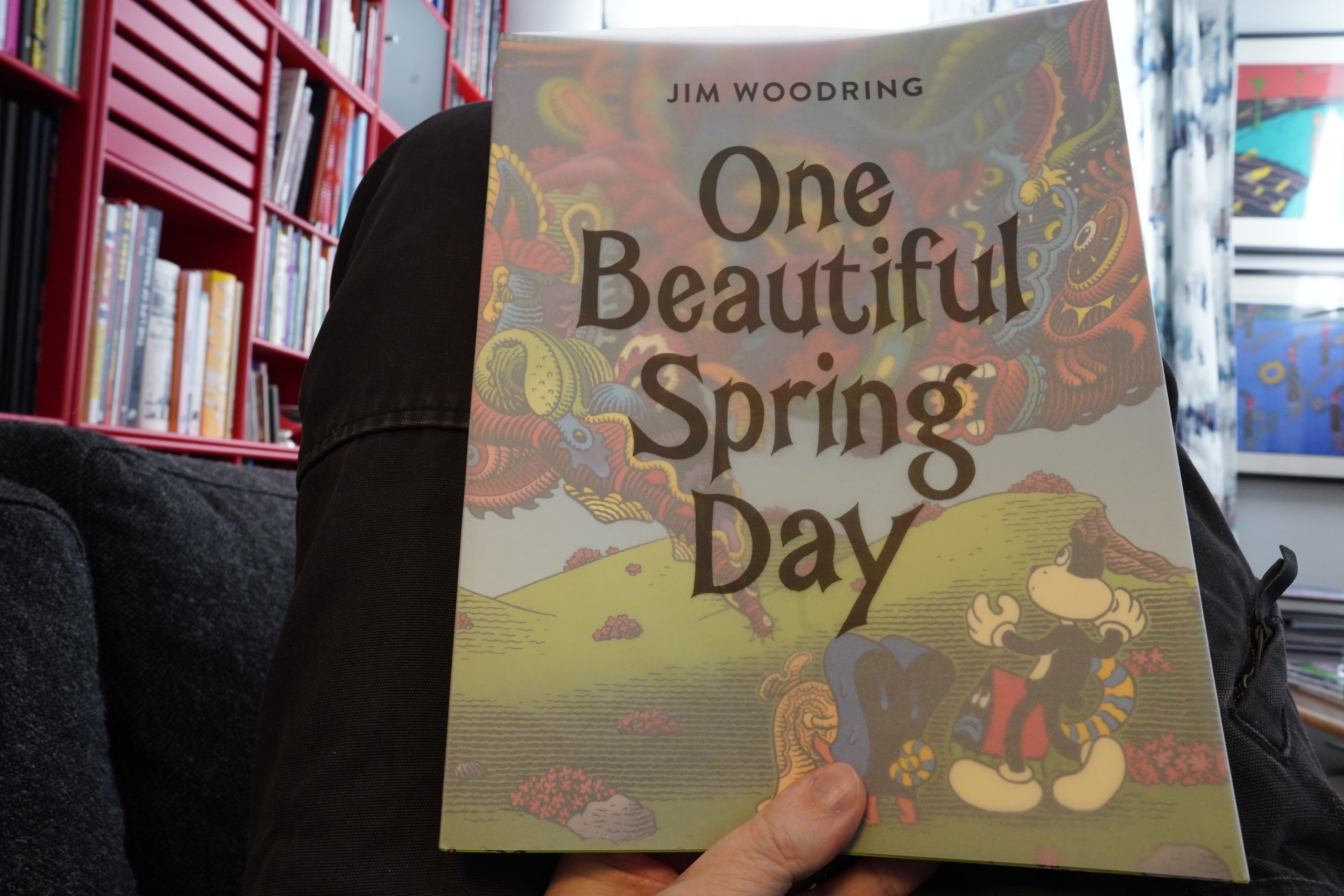
12:39: One Beautiful Spring Day by Jim Woodring (Fantagraphics)
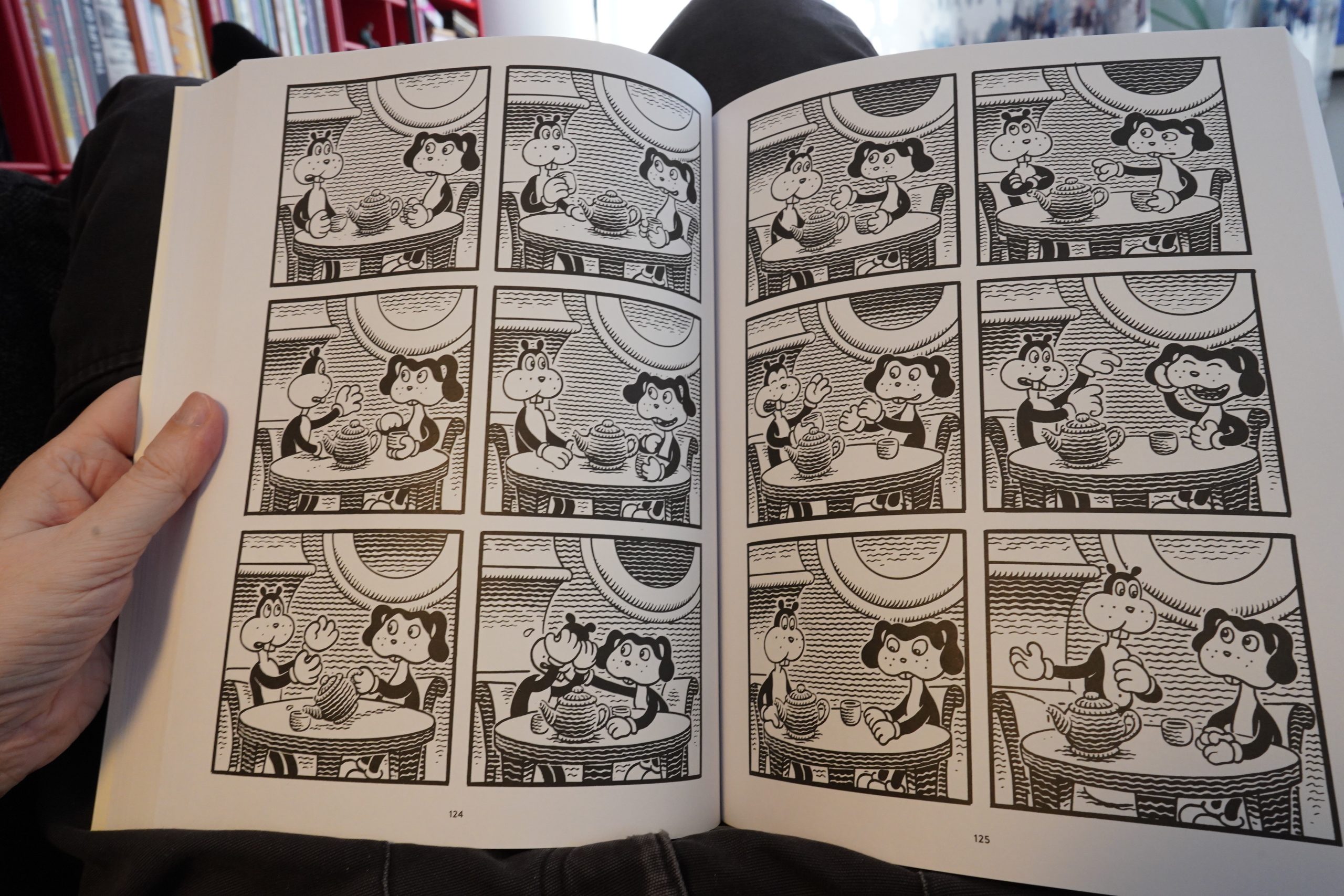
I somehow missed this book last year — it collects three of Woodring’s previous books, and adds another 100 pages, making this an absolute brick of a book. The artwork is beautifully reproduced at this size, but I wonder whether it would have been a more commercial choice to go slightly smaller on the page size?
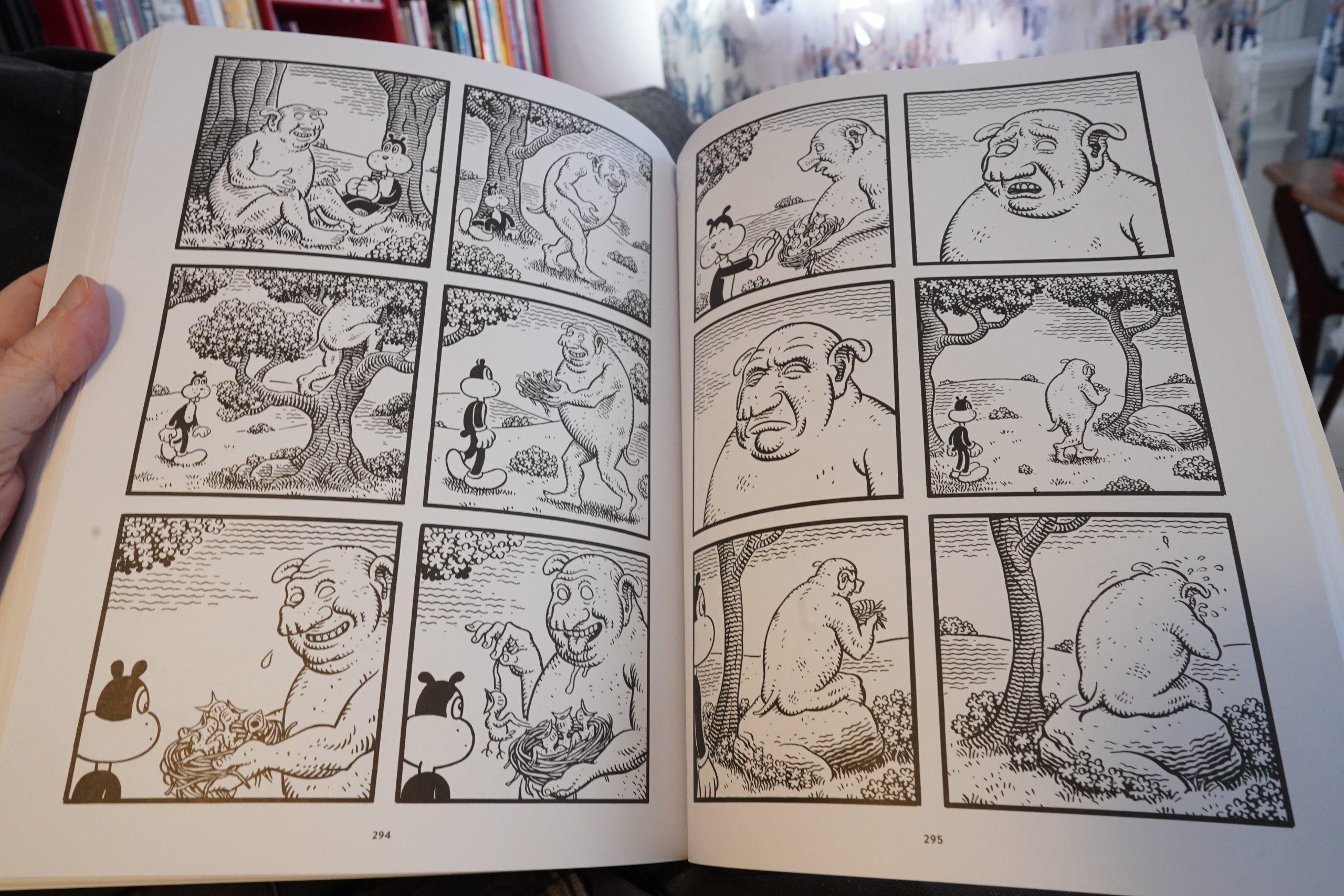
It’s a wonderful book — Woodring is a masterful storyteller, managing to imbue sequence after sequence with real emotional heft. There’s joy and sorrow and horror in here, and it’s emotionally draining to read.
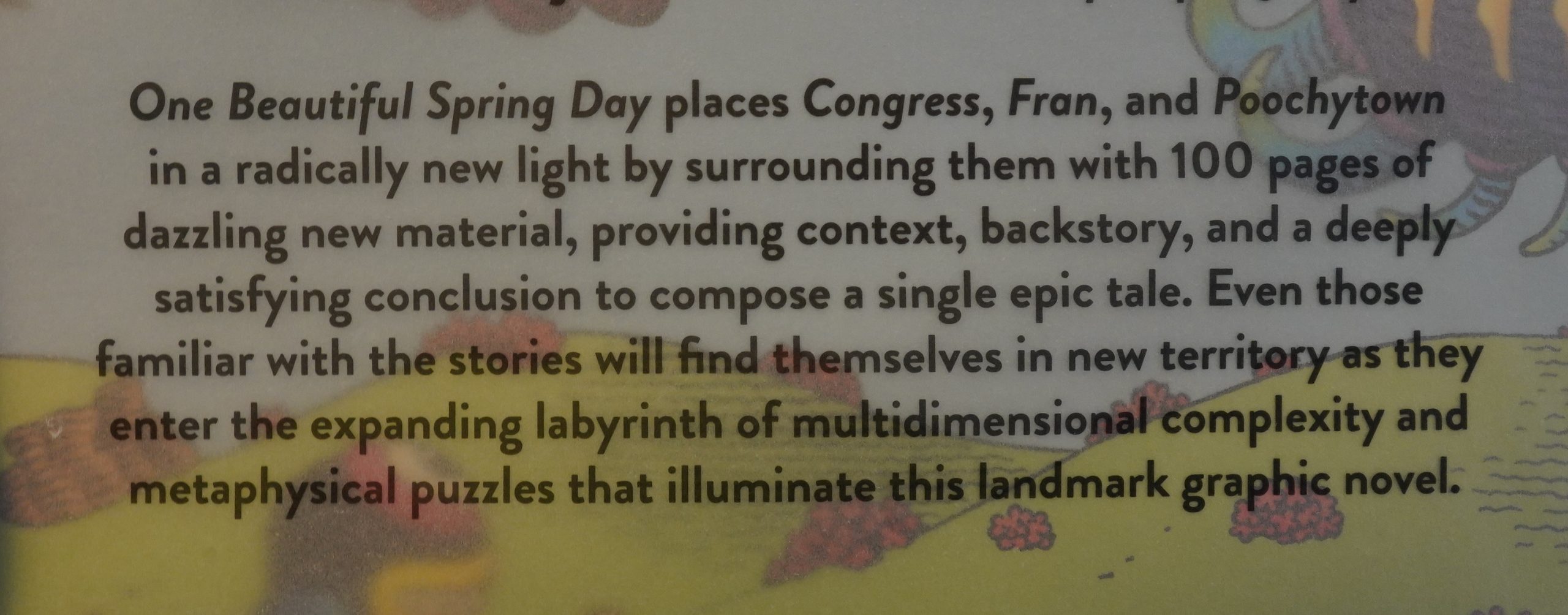
However… “deeply satisfying conclusion”? It’s more like “the oldest trick in the world when doing a fixer-upper on a story that doesn’t go where you want it to go”. It reads like what it is: A collection of separate stories that have been bound together, and then ends with something that will make some of the audience go “ooo” and the rest go “eeeh?”. (I did both.)
But I’m quibbling — Woodring makes the trick ending (well, trick framing) work. It’s a great book.
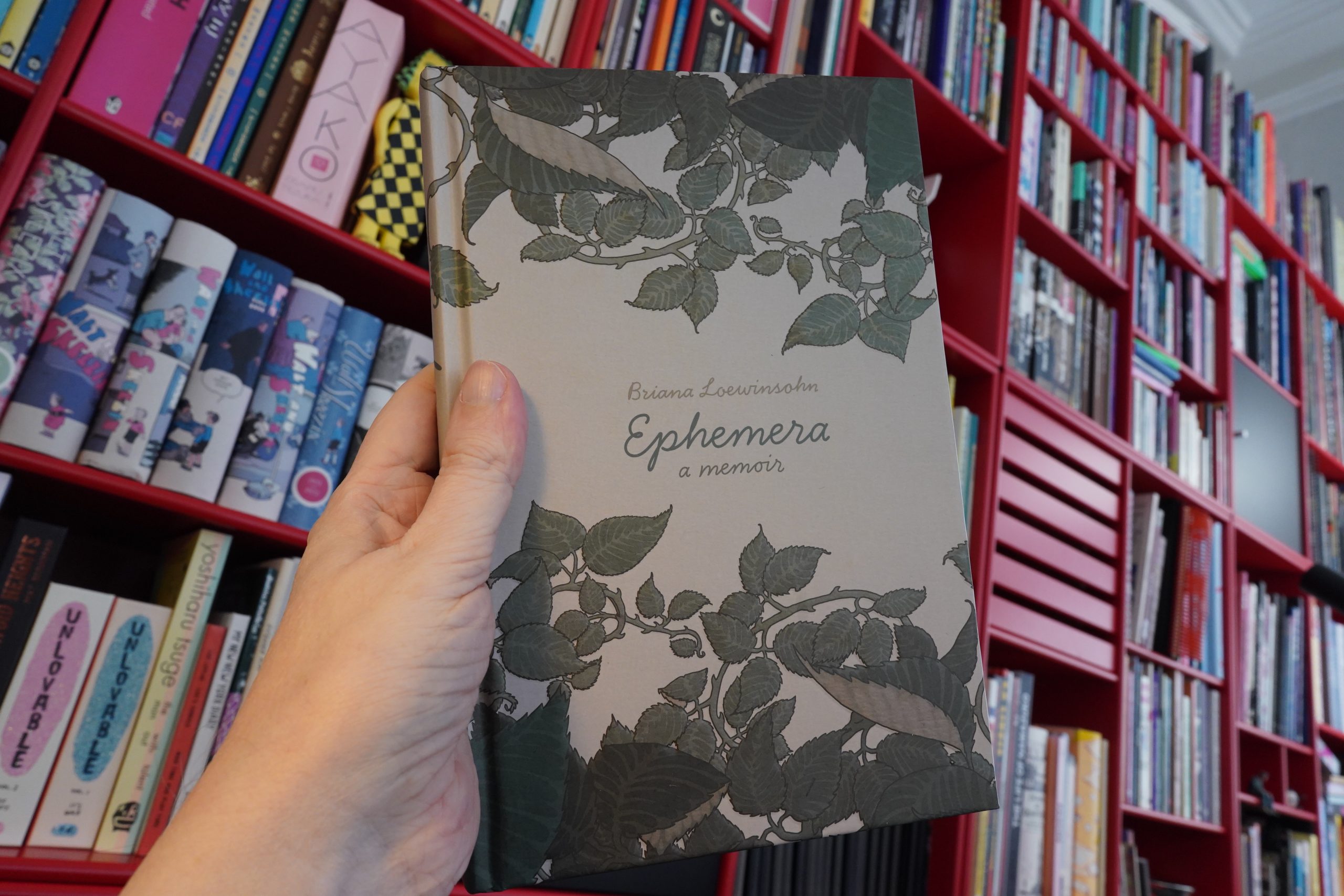
13:37: Ephemera by Briana Loewinsohn (Fantagraphics)
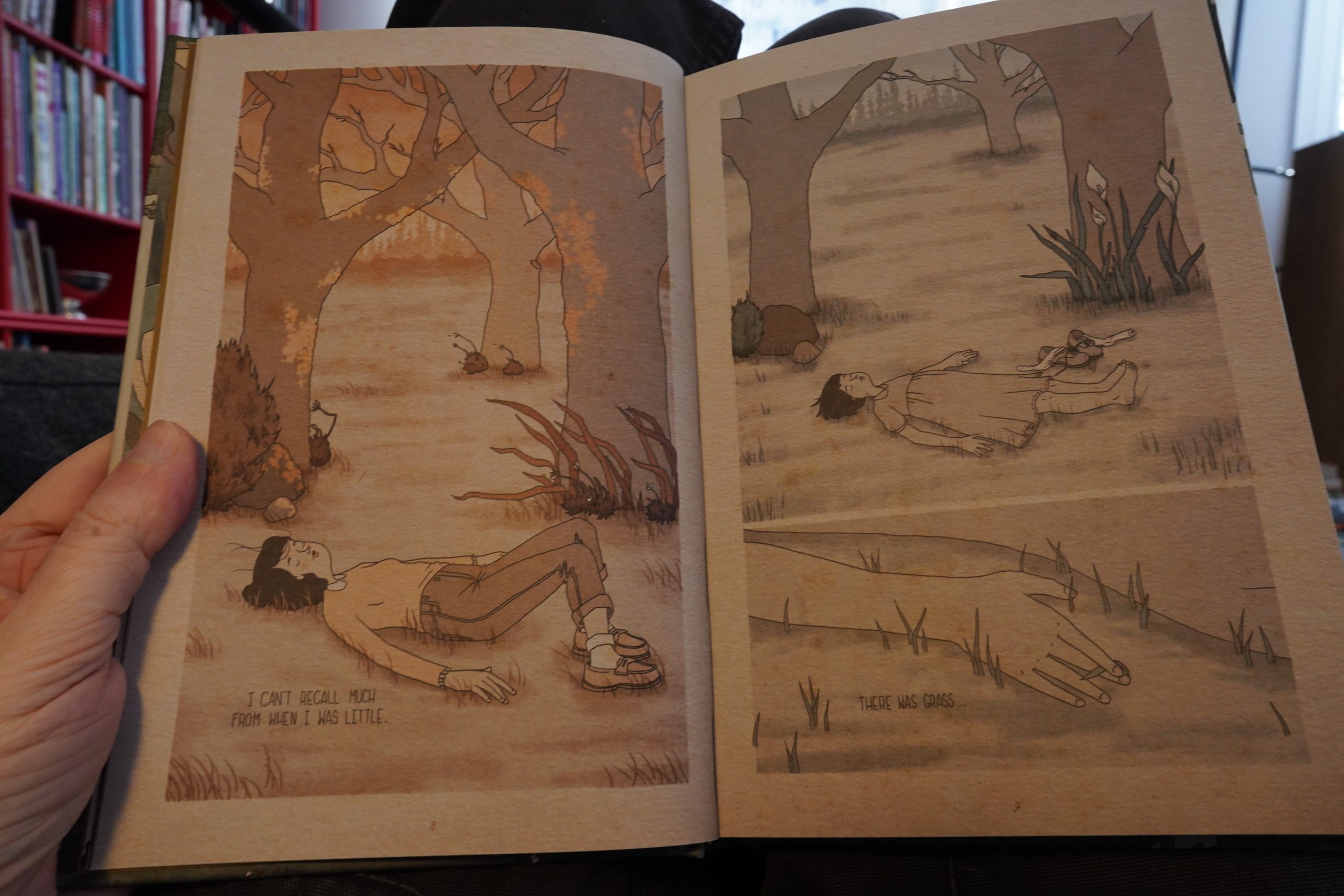
This is a very heartfelt memoir — it’s very decompressed, but hammers a few things home.
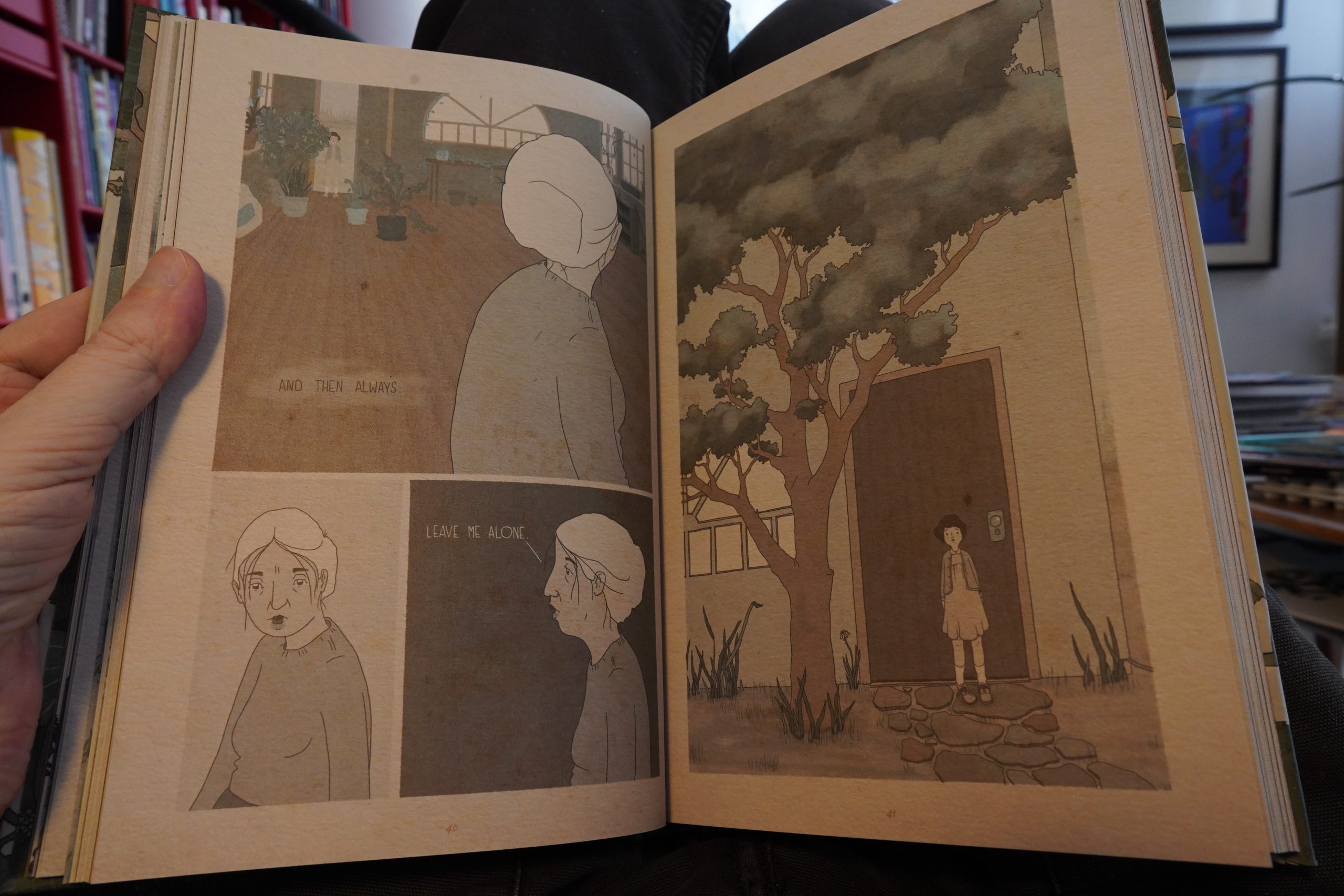
It’s very good. I’m not sure about the desaturated colour scheme… I guess it works? Memories are murky and all that, so it works that way. But the artwork, especially all the plants, is so lovely that it’d just be more pleasurable to look at a less subdued colouring job.
| Xiu Xiu: Haenim, People Ain’t No Good | 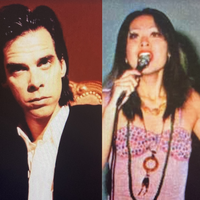 |
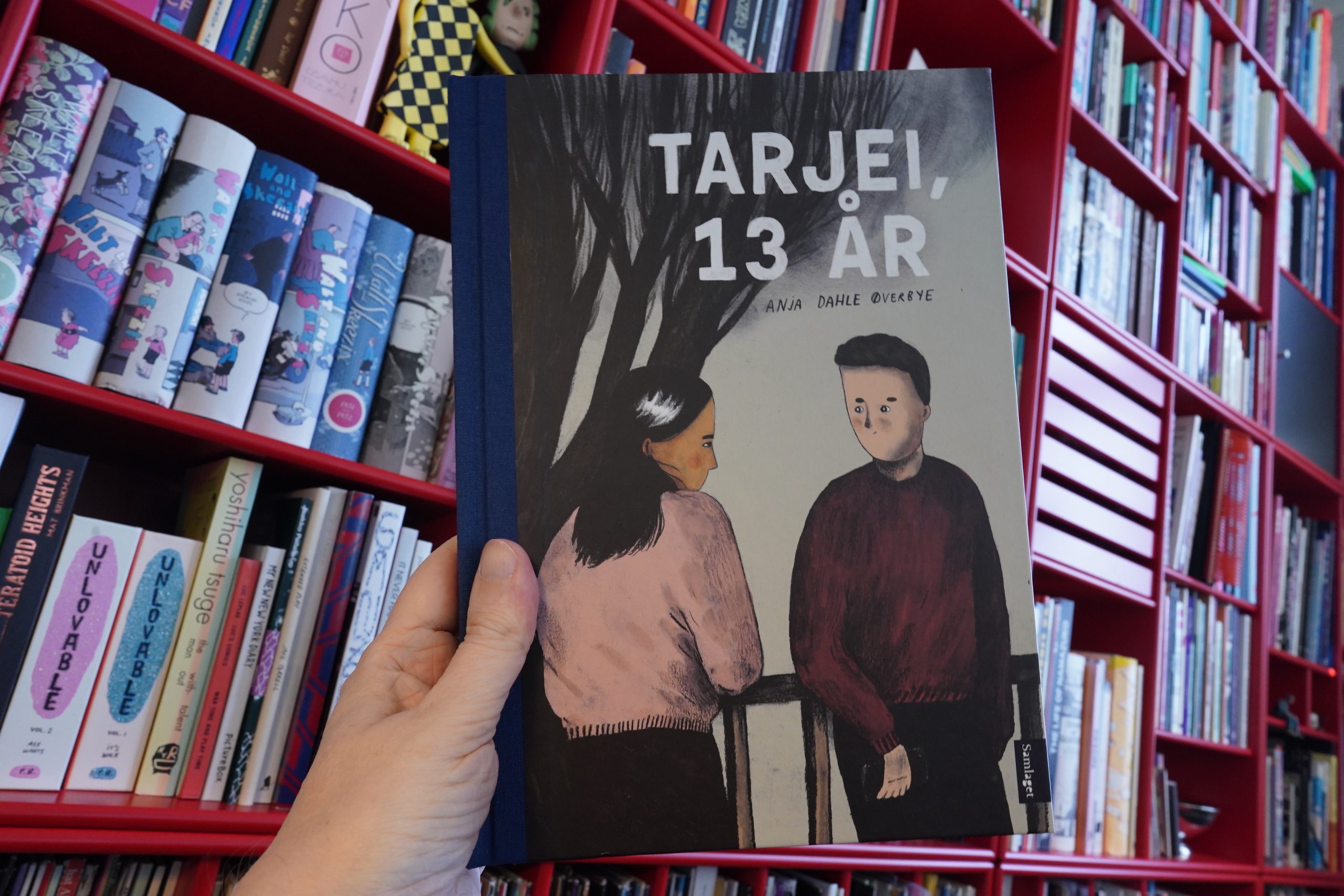
13:54: Tarjei, 13 år by Ana Dahle Øverbye (Samlaget)
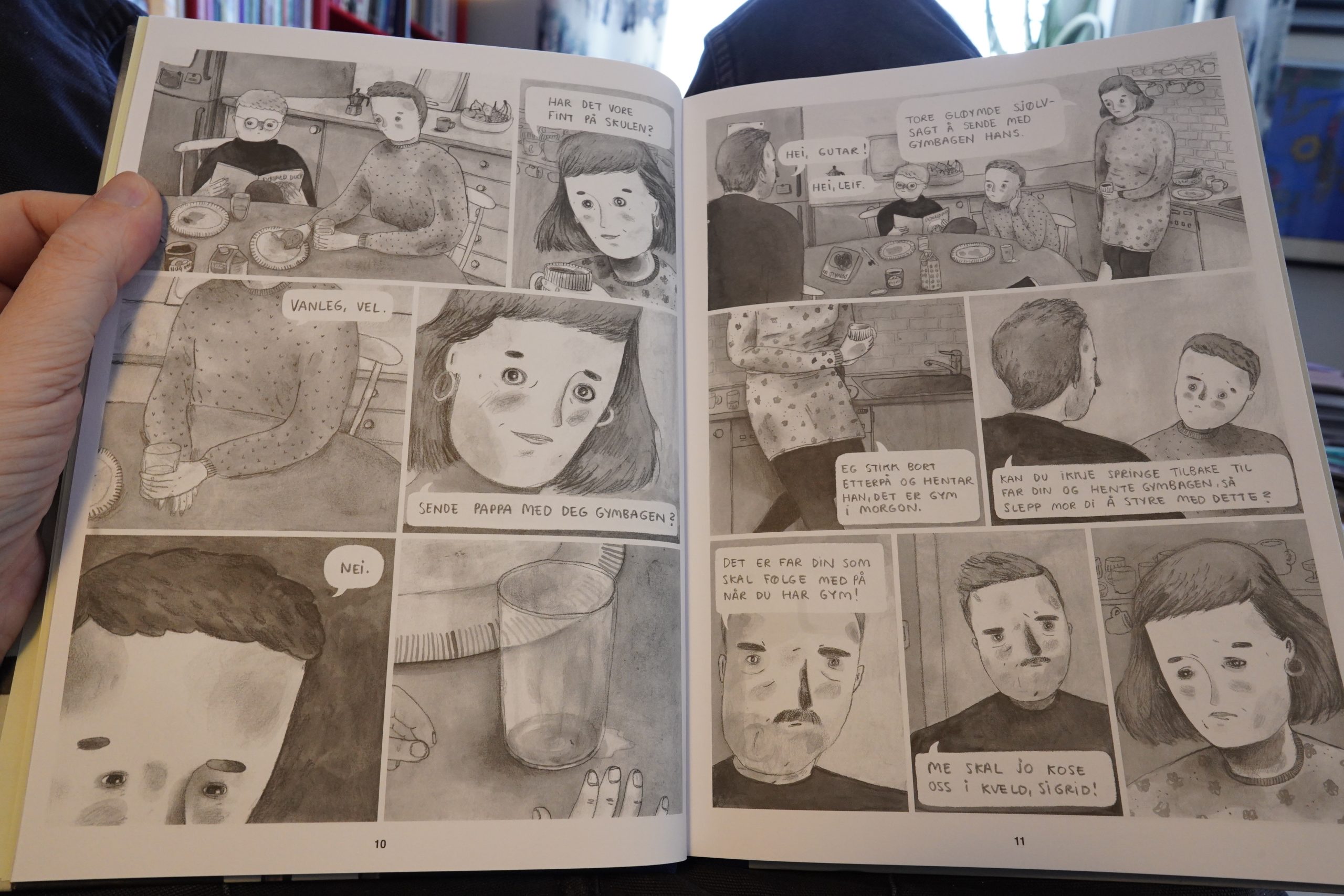
While the artwork is lovely, this is an extremely generic child-of-thirteen-with-divorced-parents-is-sad kind of book.
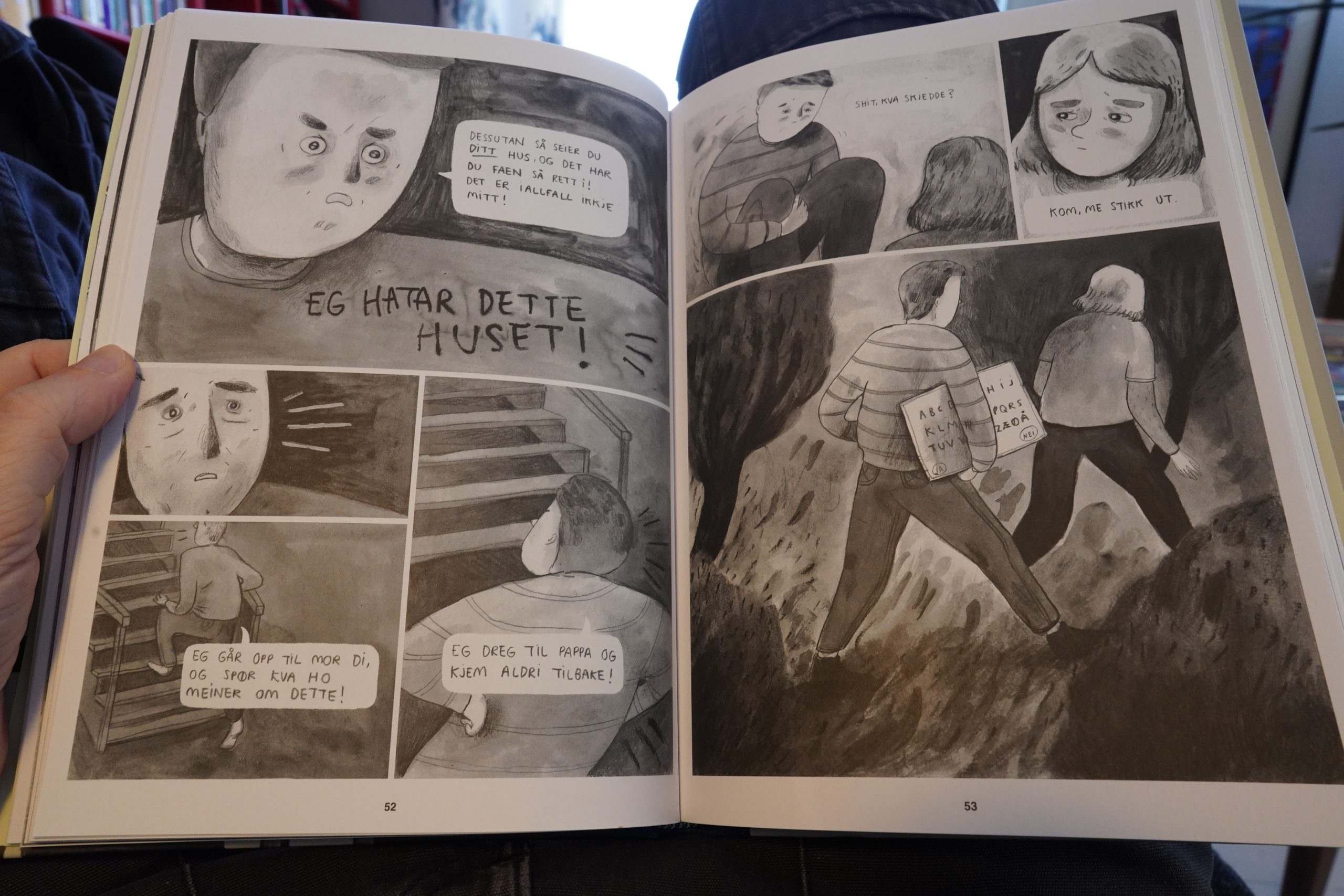
Everything feels extremely unlived — all the scenes seem cribbed from somewhere else. But I guess this book is aimed at children, really — a kind of “see, I’m not the only one with problems” kind of thing?
| Various: Fabric 70 (Apollonia) | 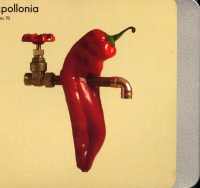 |
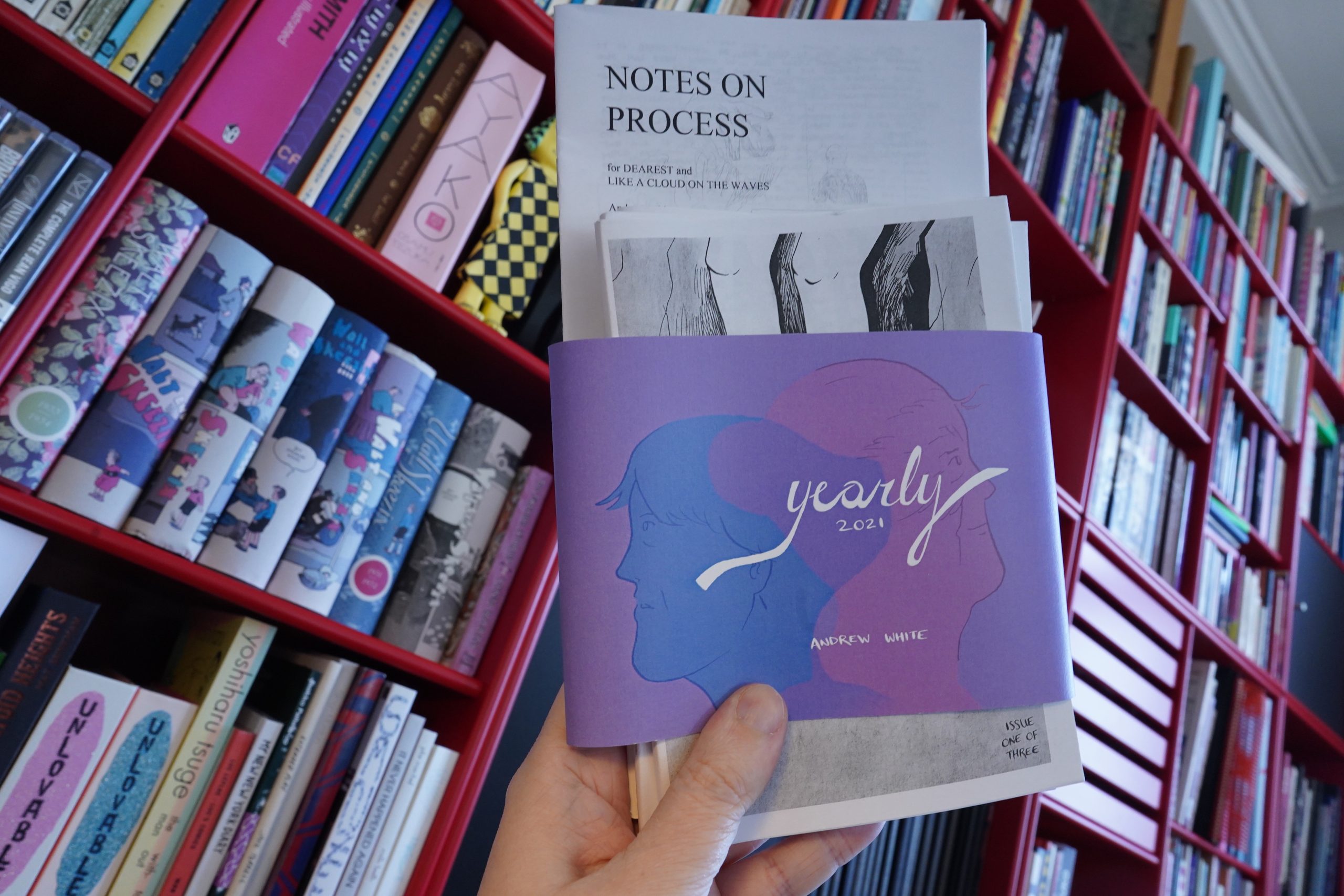
14:12: Yearly 2021 by Andrew White
This is a collection of three thickish booklets (and a bonus booklet).
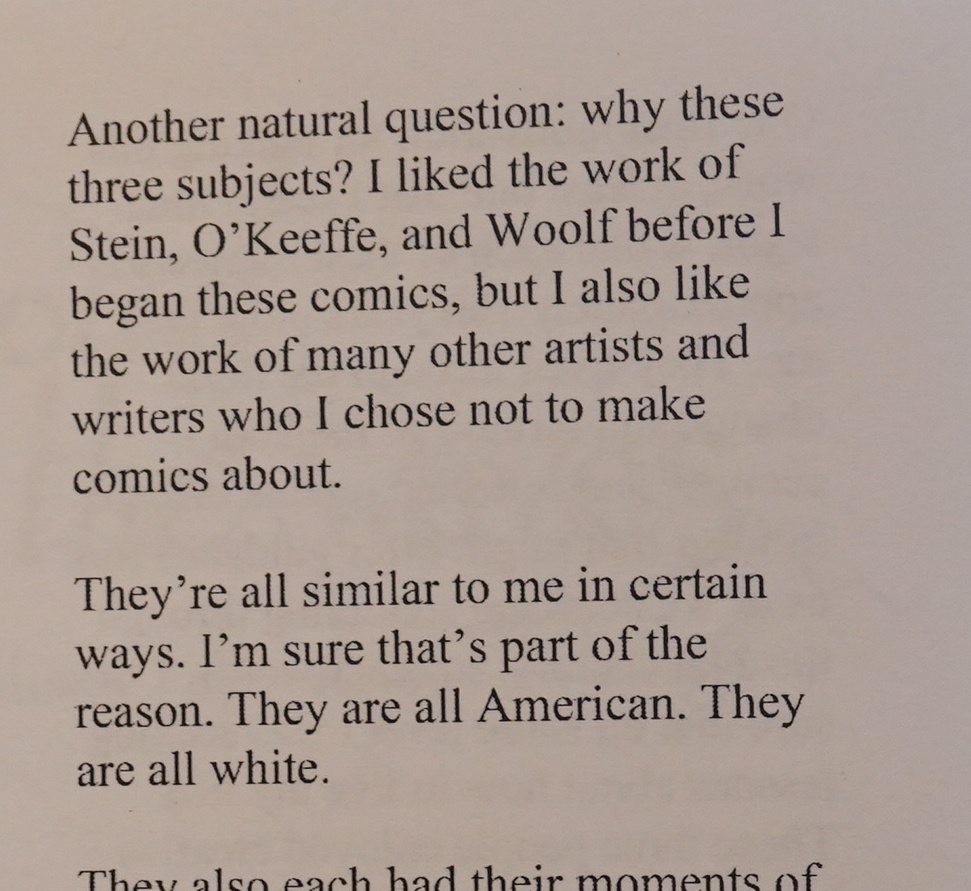
Err… Virginia Woolf American? I think White forgot an “or English” there?
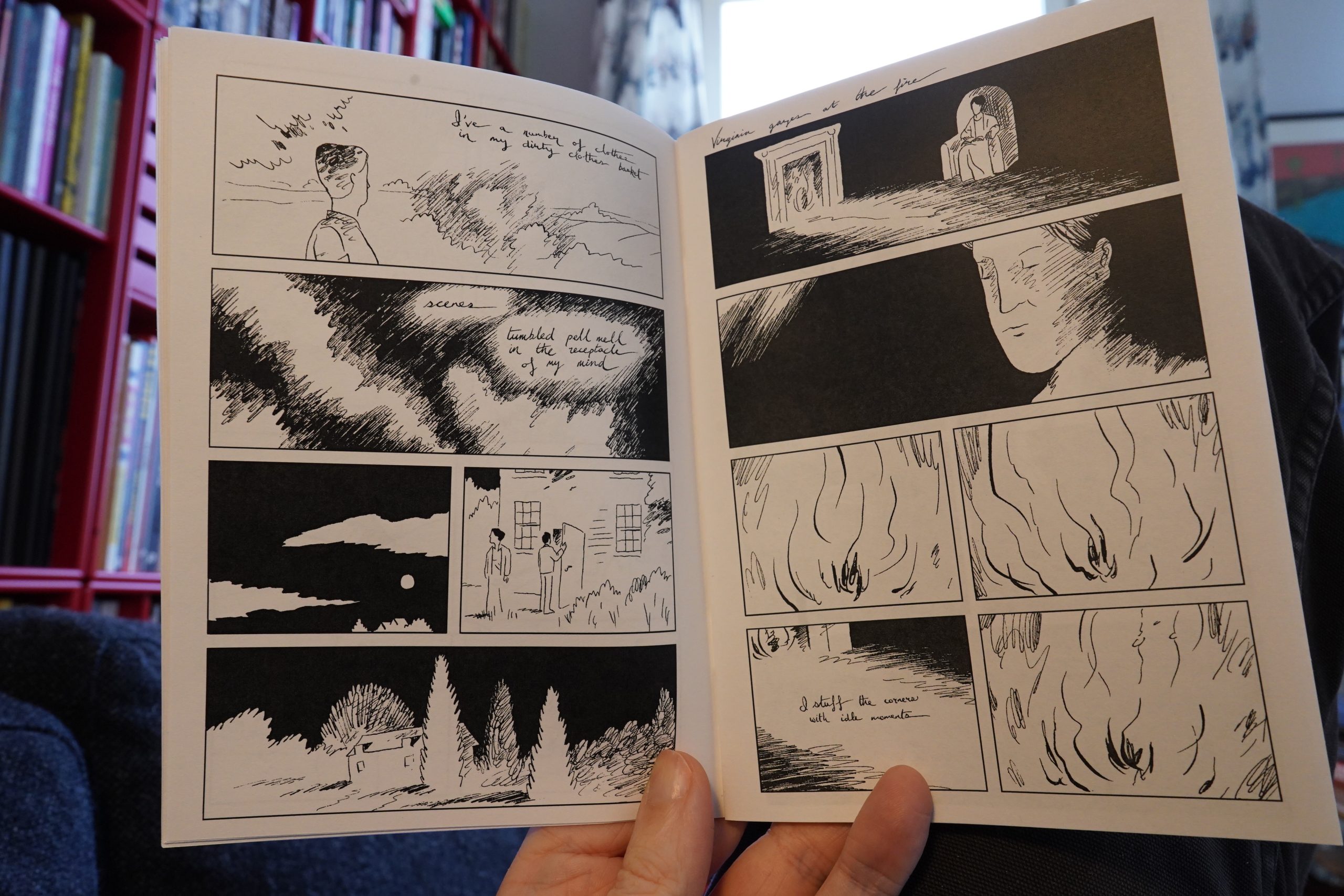
Anyway, we get two biographies, sort of — one of Virginia Woolf, and one of Georgia O’Keeffe. The Woolf one is absolutely fantastic: White uses a few excerpts from her diary extremely thoughtfully, and creates something kinda magical. I love White’s pacing and his landscape drawings; they’re outstanding.
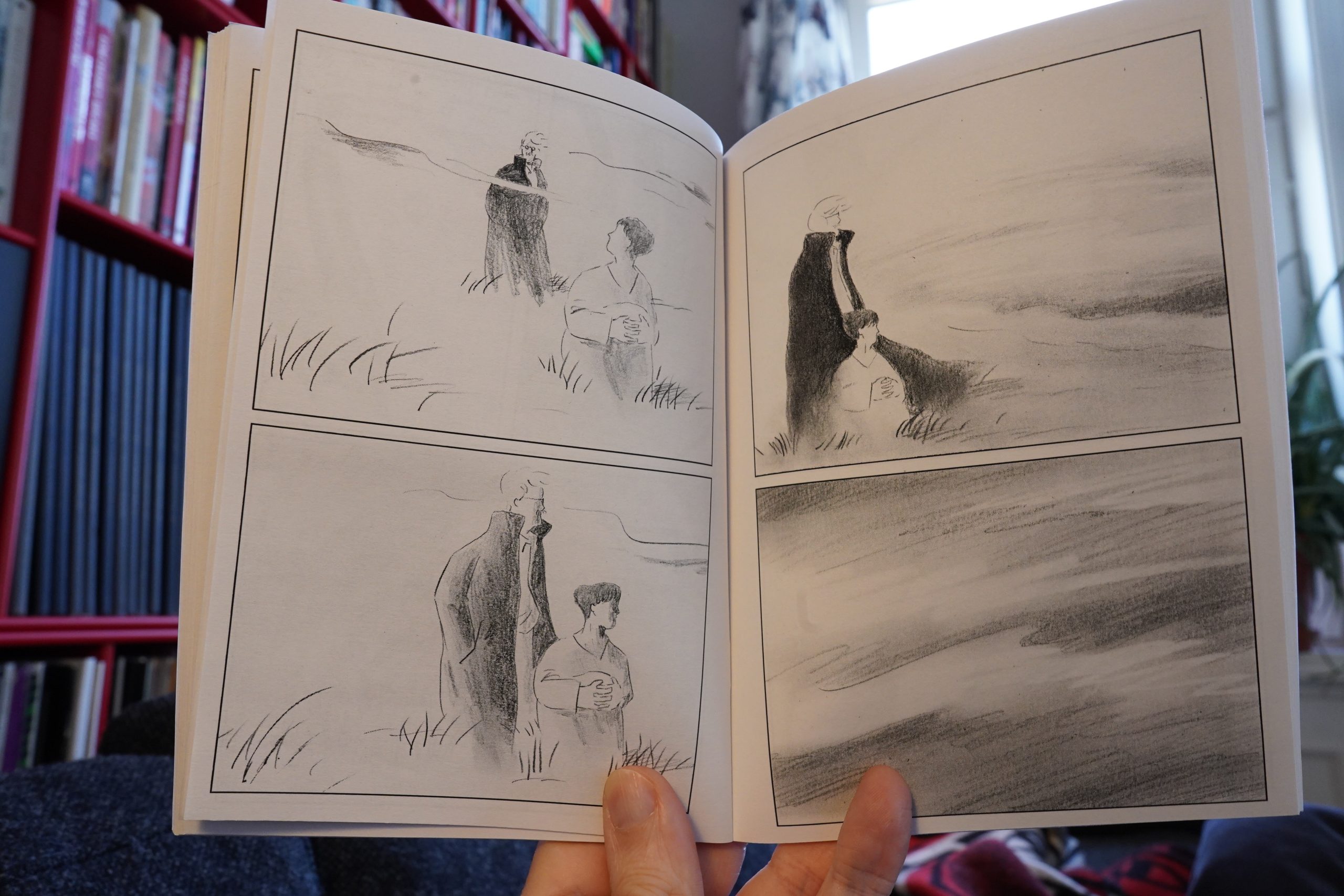
The O’Keeffe story is also very good, but seems more diffuse. The Woolf one has a really strong identify, but the O’Keeffe one sorta meanders around without cohering, in my opinion. It’s still lovely to read, but…
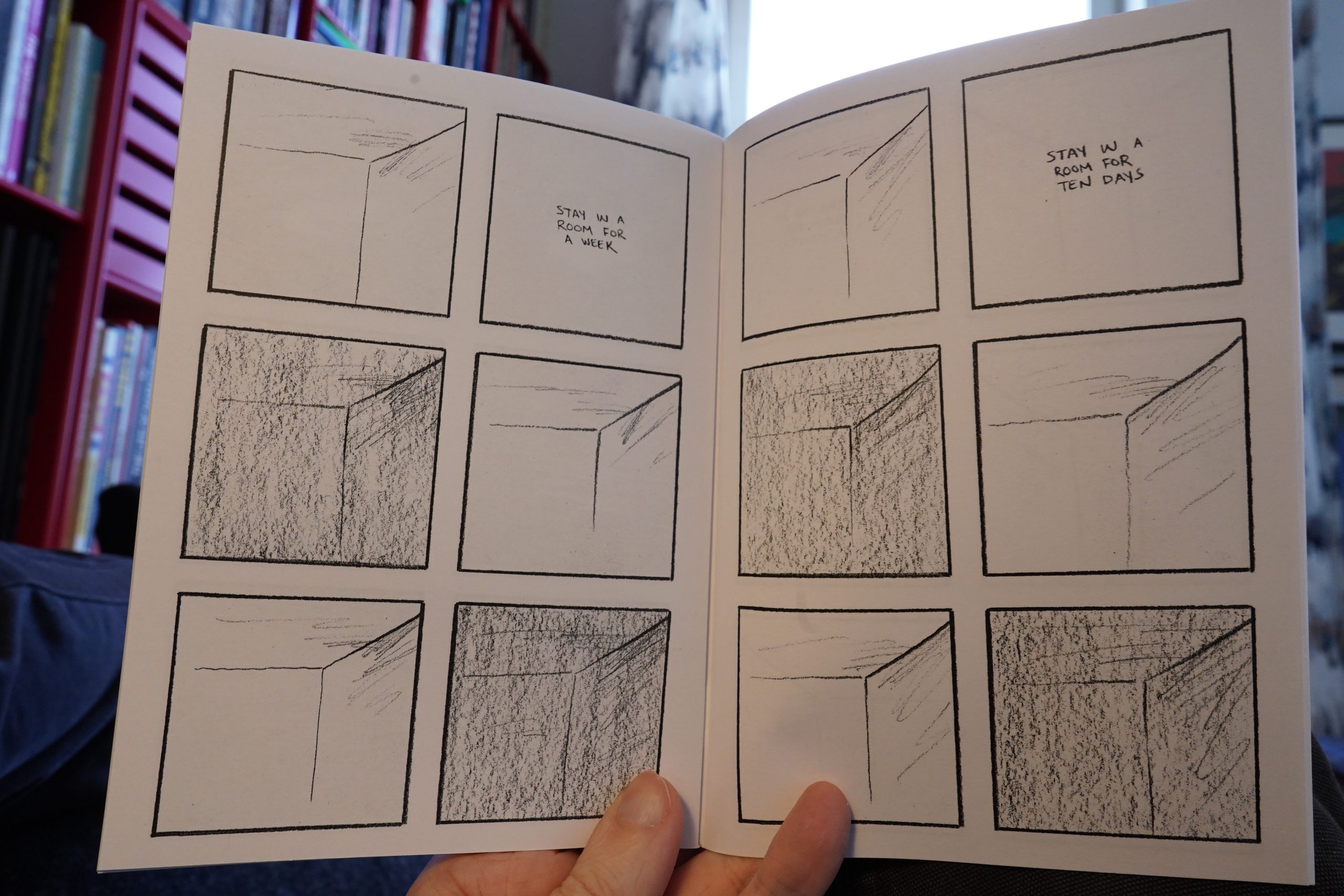
Finally, we have some of Yoko Ono’s instructions, and these also work really well on these pages.
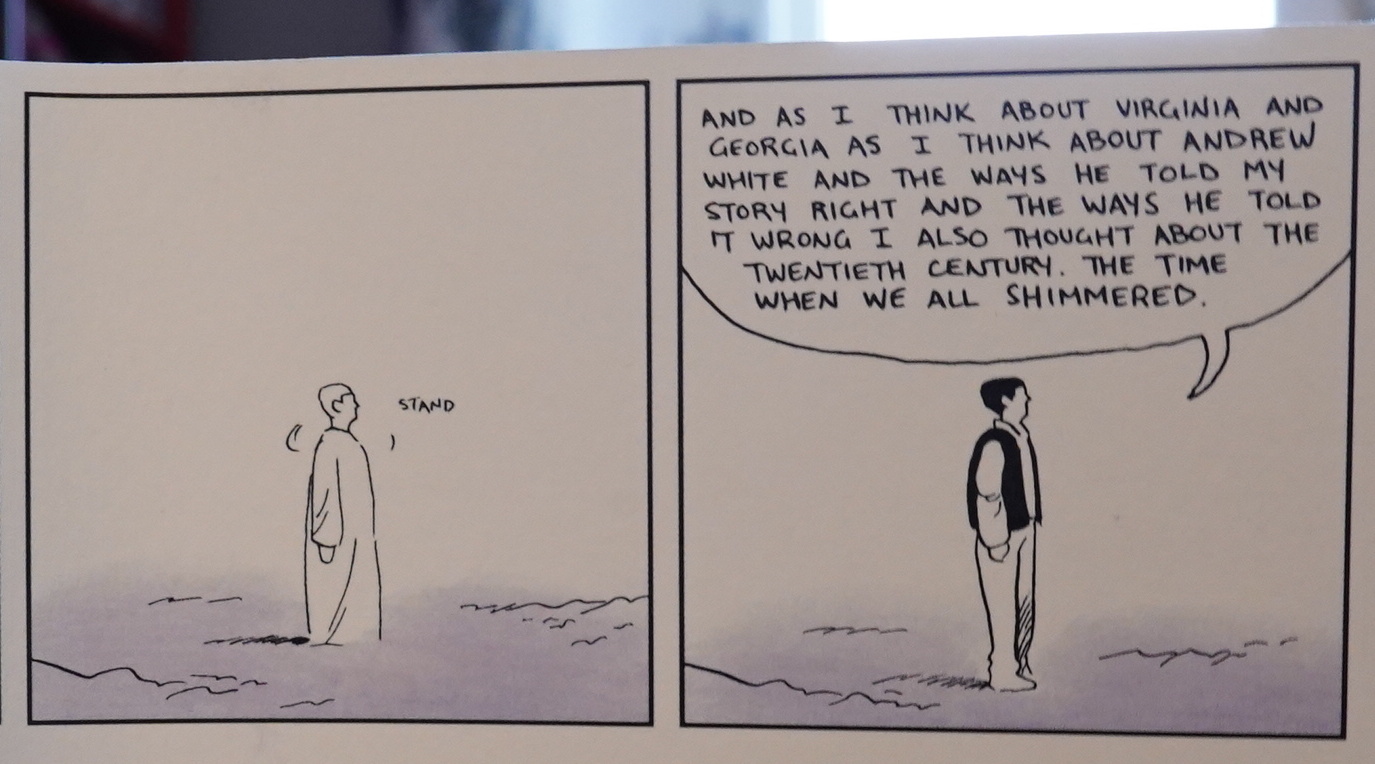
Heh. And there’s even a little Gertrude Stein thing on the inside of the paper strip around the booklets. What a nice little surprise.
White’s comics are so pure… comics. He uses the art form so precisely and thoughtfully.
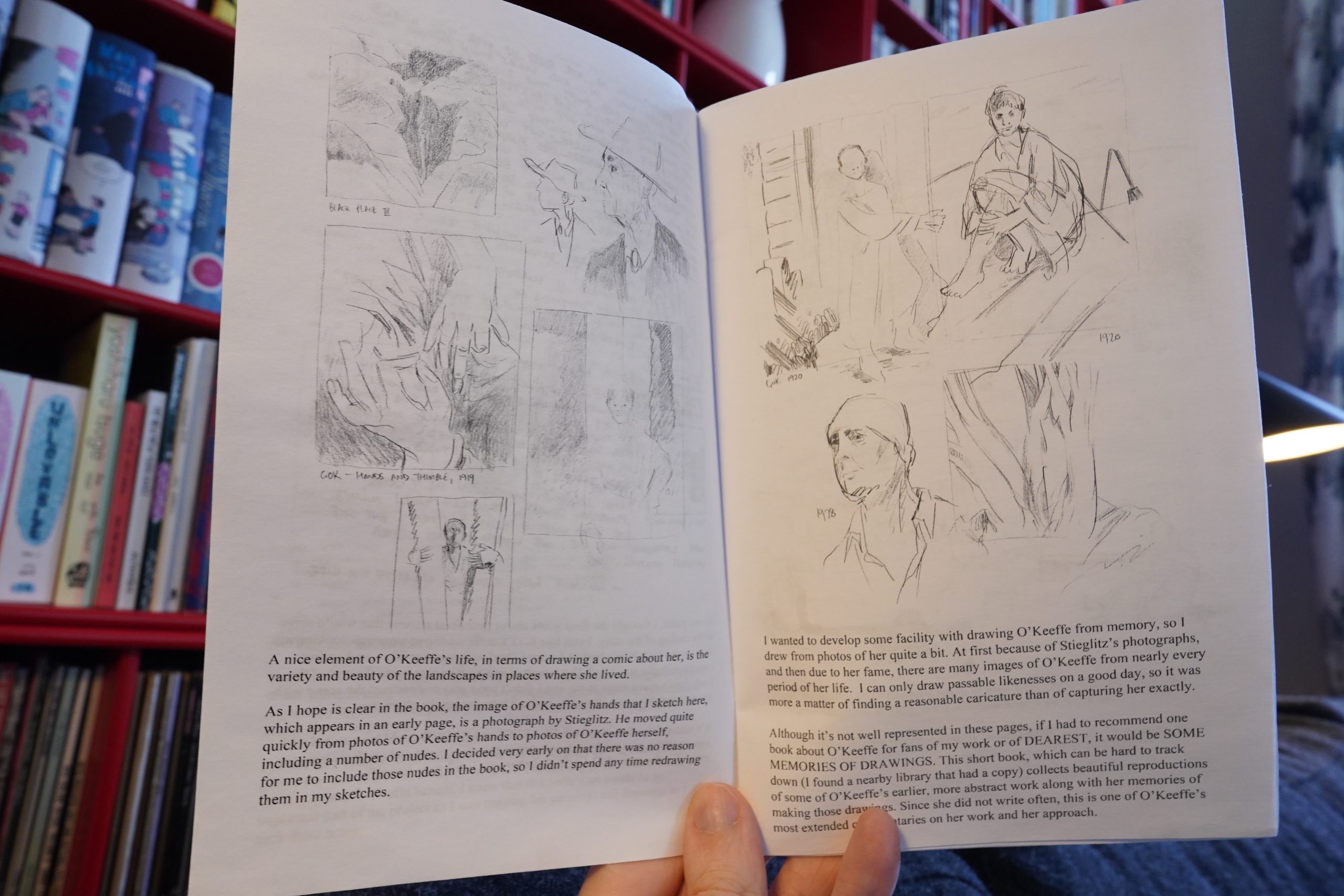
That O’Keefee book sounds interesting, so I just bought a copy off of ebay now.
Yearly 2021 is still available from White. Go there and shop wildly.
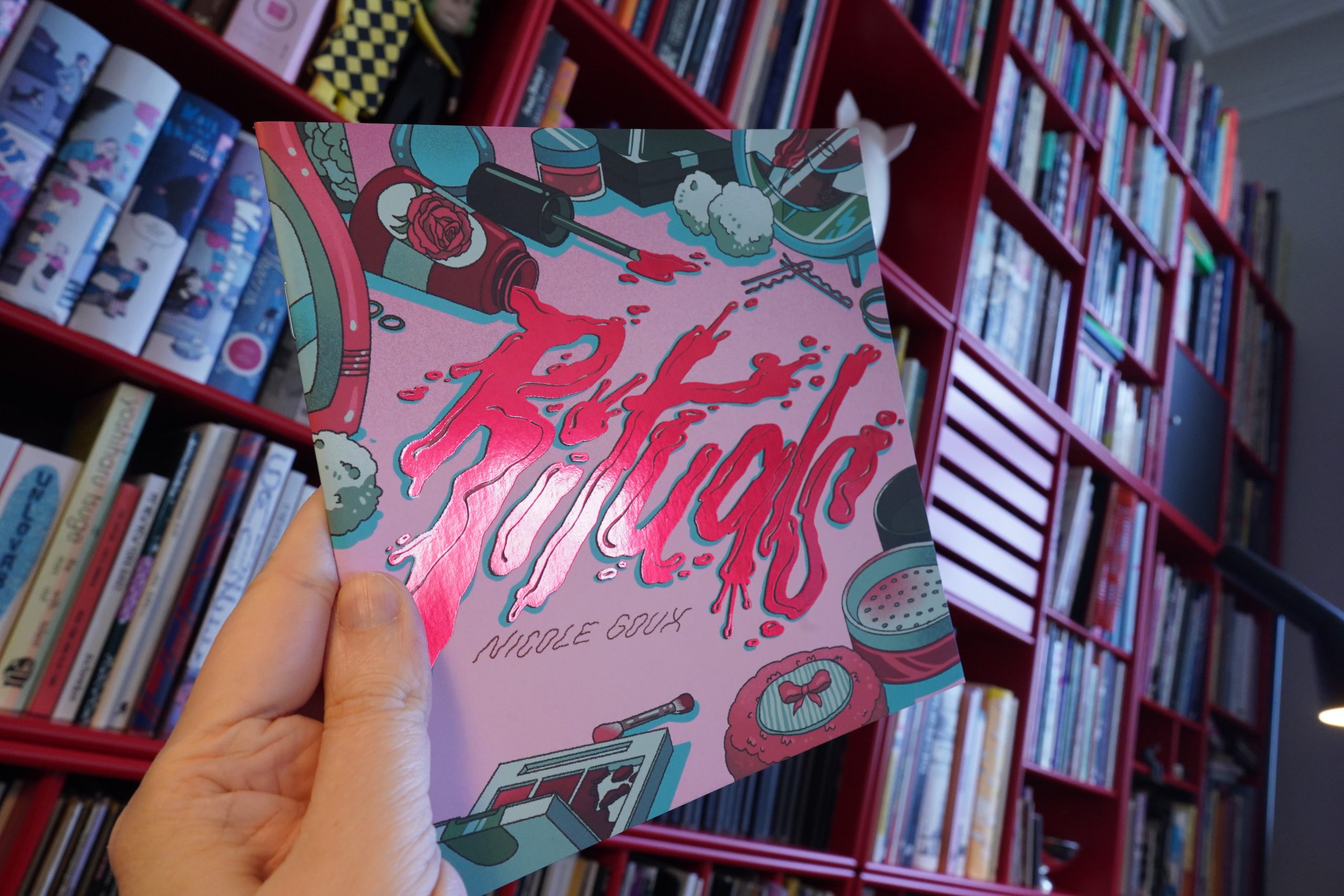
15:15: Rituals by Nicole Goux (Silver Sprocket)
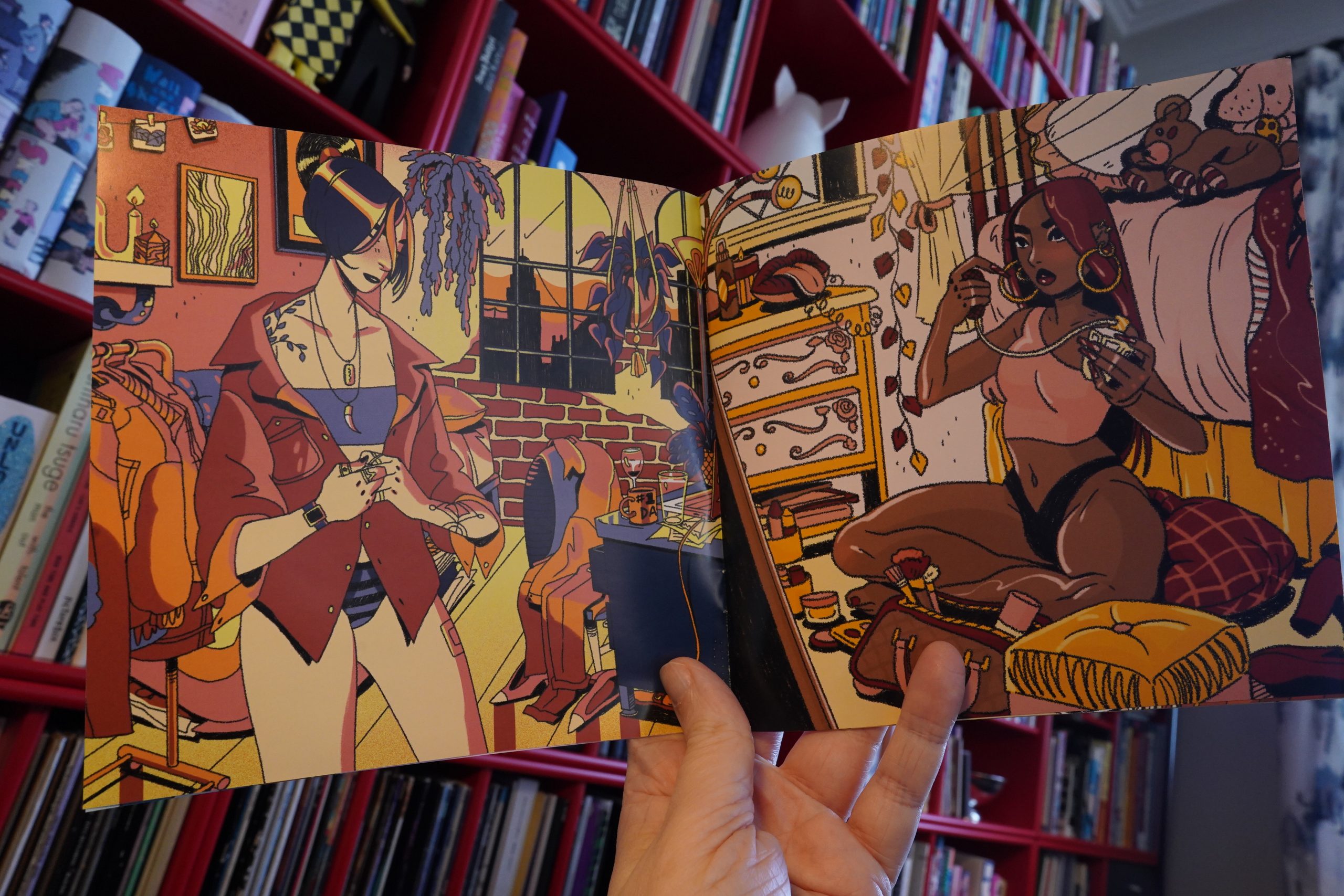
This is a collection of illustrations of people getting ready for a night out.
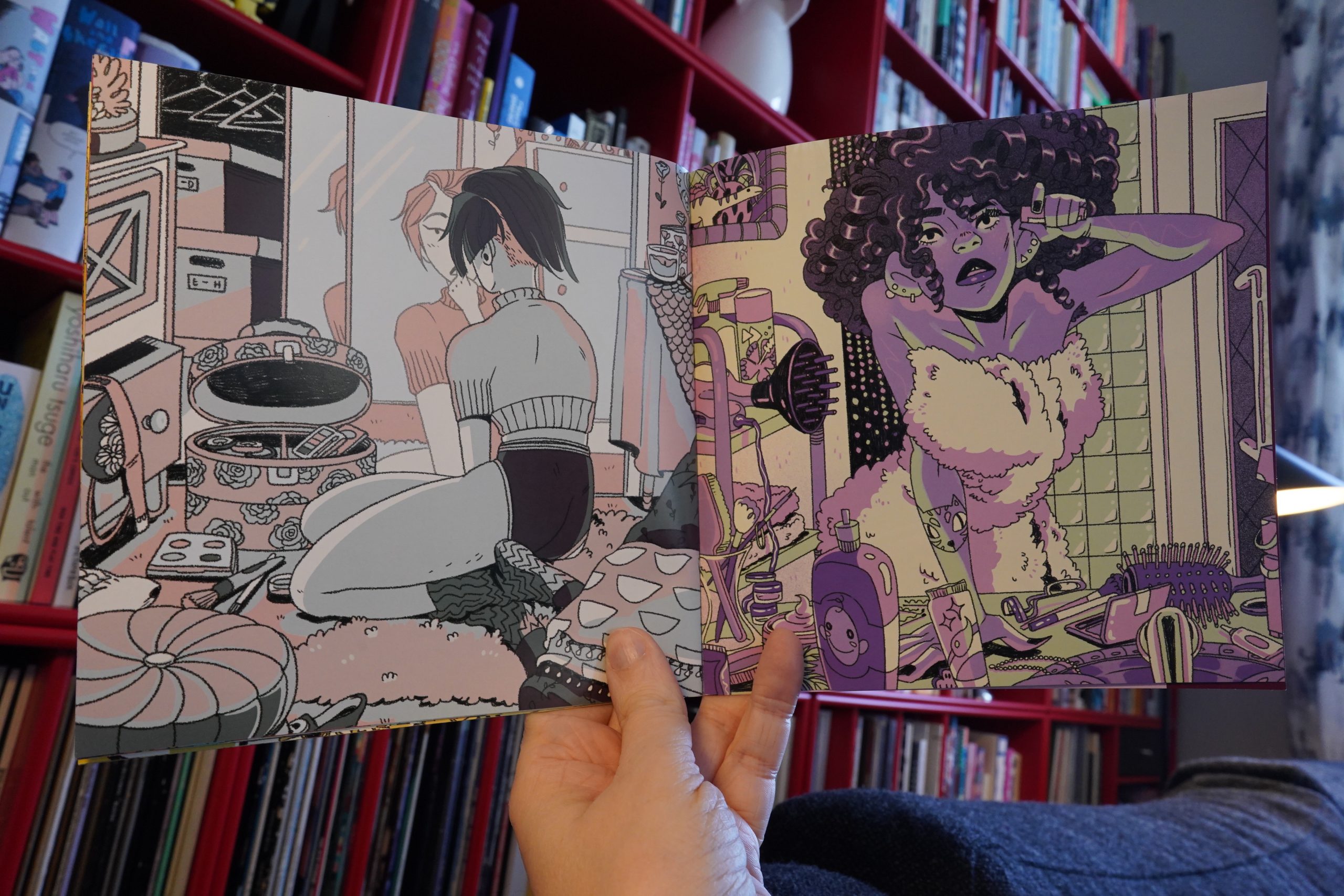
It’s nice.
Which reminds me:
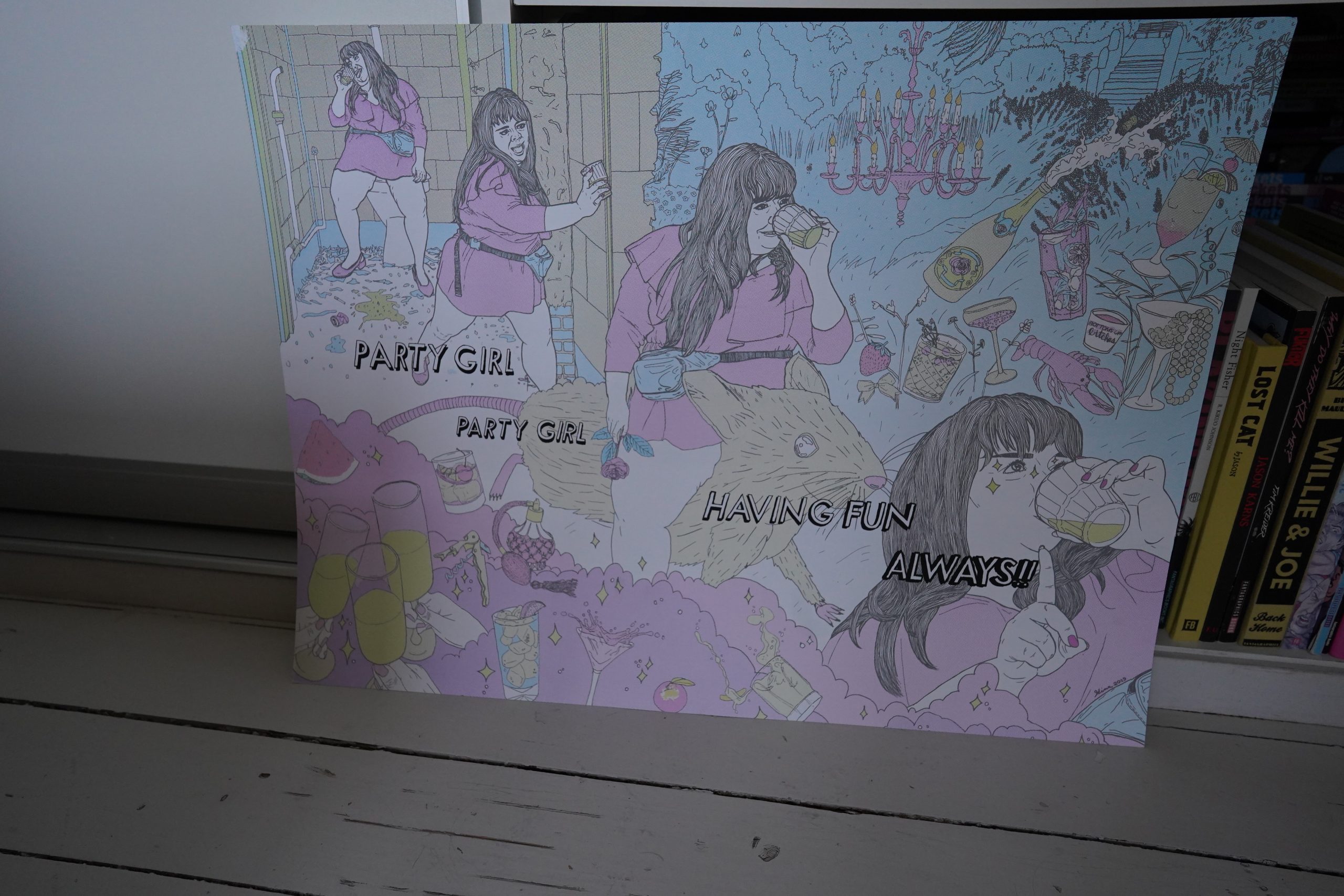
I also got this awesome print by Gina Wynbrandt the other day. I feel seen! This expresses my entire ethos in one print.
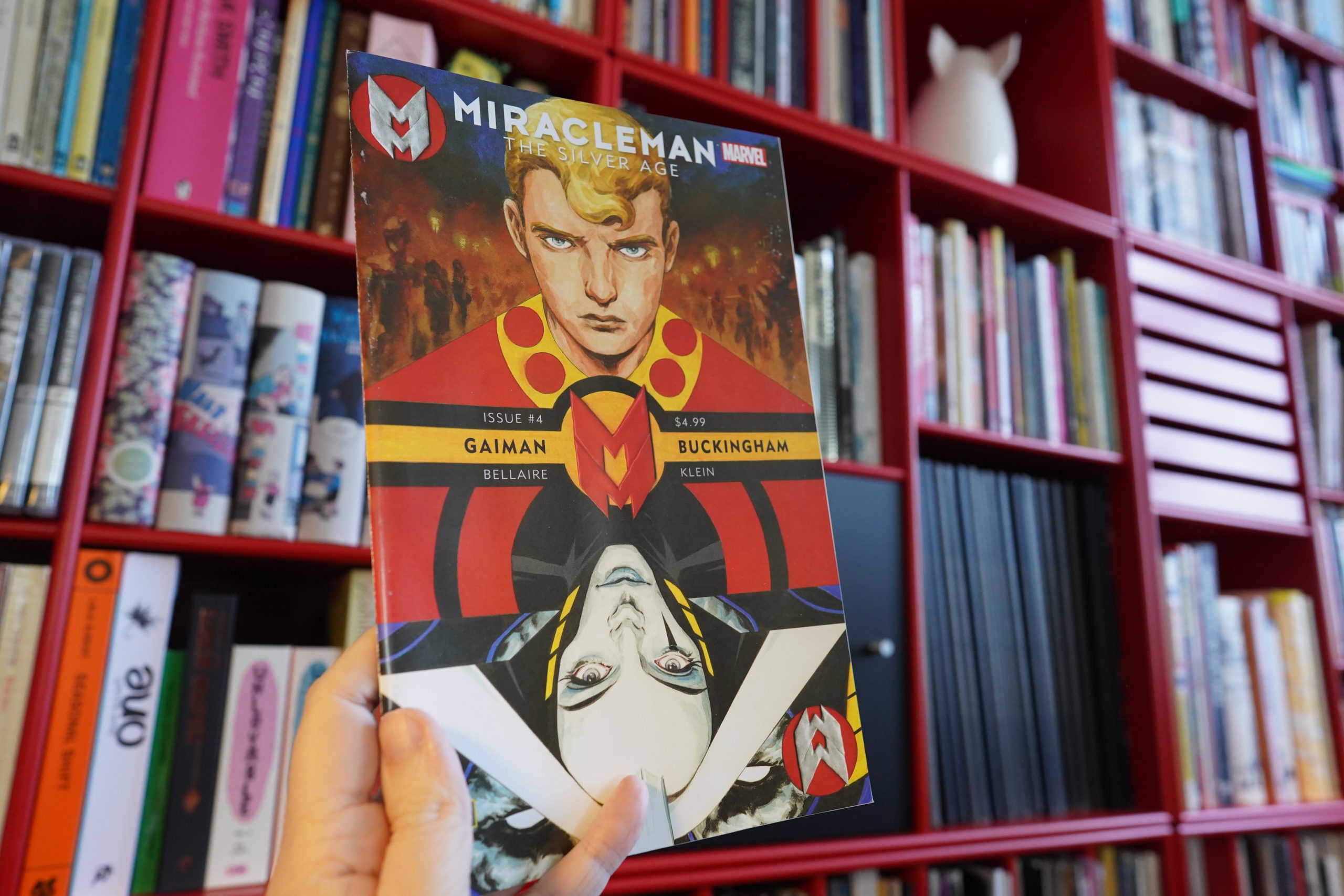
15:23: Miracleman: The Silver Age #4 by Neil Gaiman/Mark Buckingham (Marvel Comics)
This is it, isn’t it? The first actual new new new Miracleman book? The first two had already been published, the third was done at the time but not published, and while all three had been redrawn by Buckingham, this is the first one that Gaiman has written now? Or something?
… nope!!! This was also written back in the 90s. Well, at least the first seven pages, apparently.
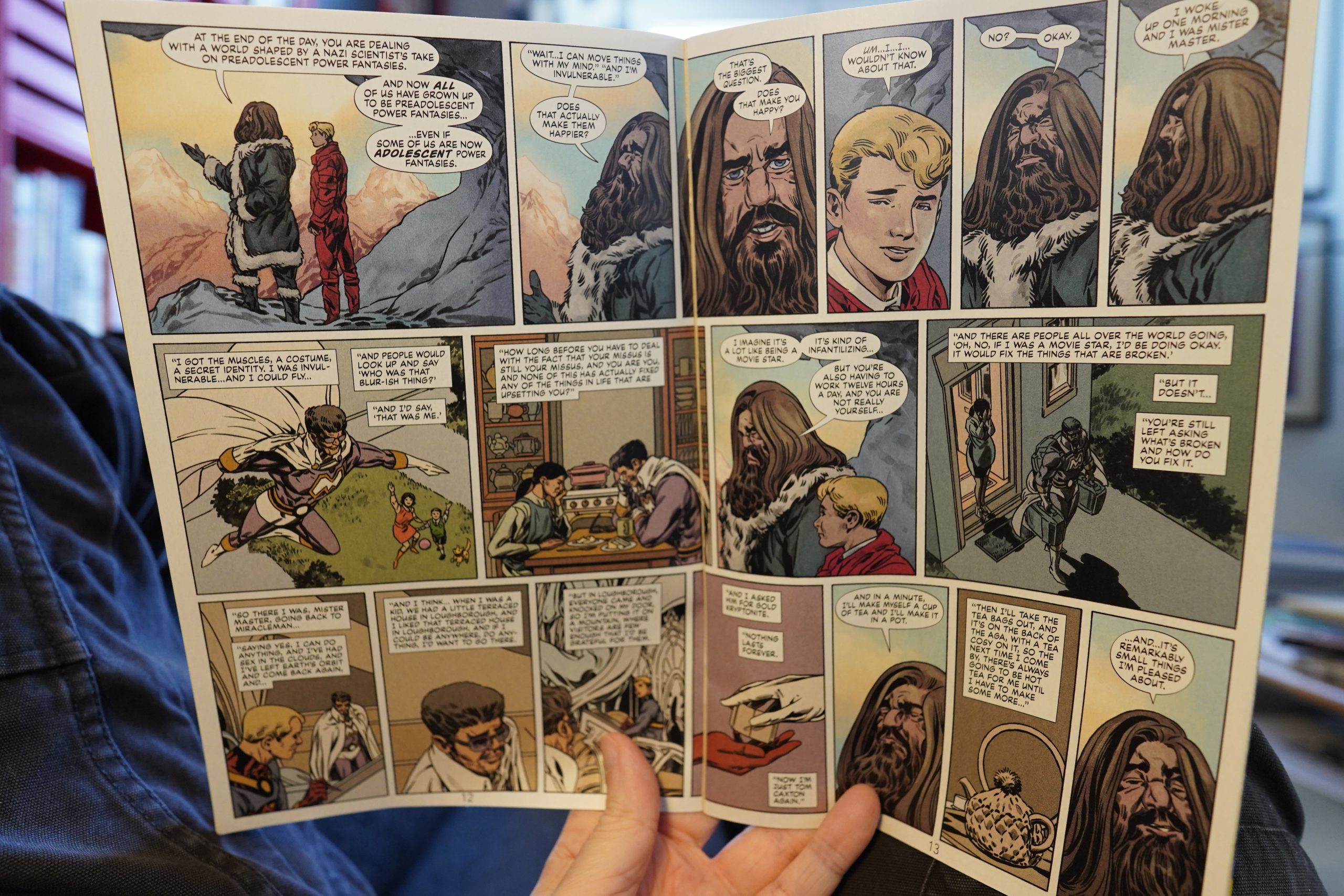
… and… it’s just kinda dopey. Most of the issue falls flat with a thud. Here’s one super-hero explaining that since super-heroing still meant that he had to do the dishes (or something), it’s better to live as a hermit on a mountain top.
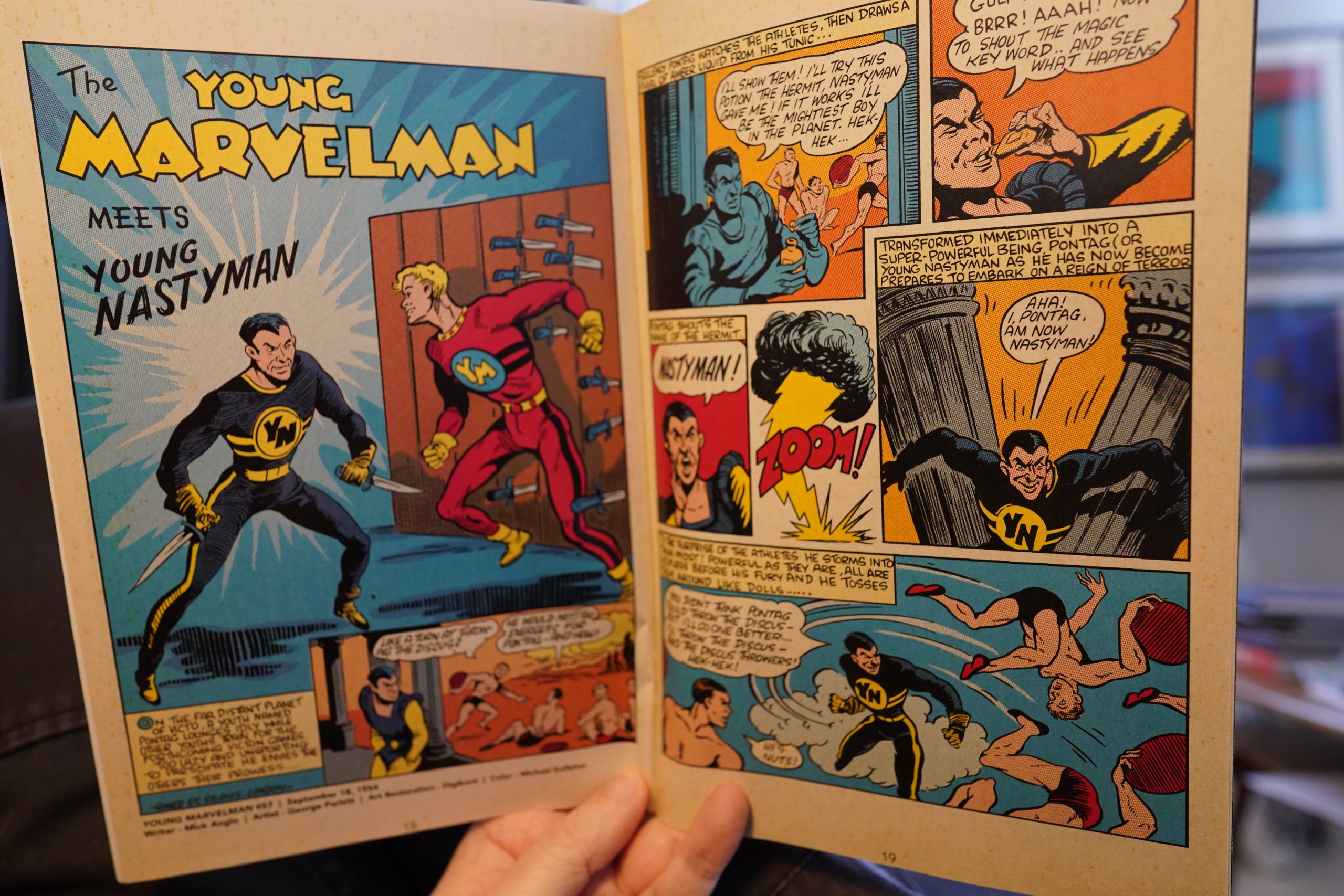
Nothing much happens, because there’s the chapter is only 16 pages long. The rest of the issue is pure filler — nigh-unreadable old Marvelman stuff by Mick Anglo.
What an incredible let-down of an issue.
| More Eaze & Claire Rousay: If I don’t let myself be happy now then when? | 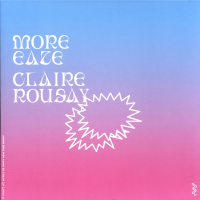 |
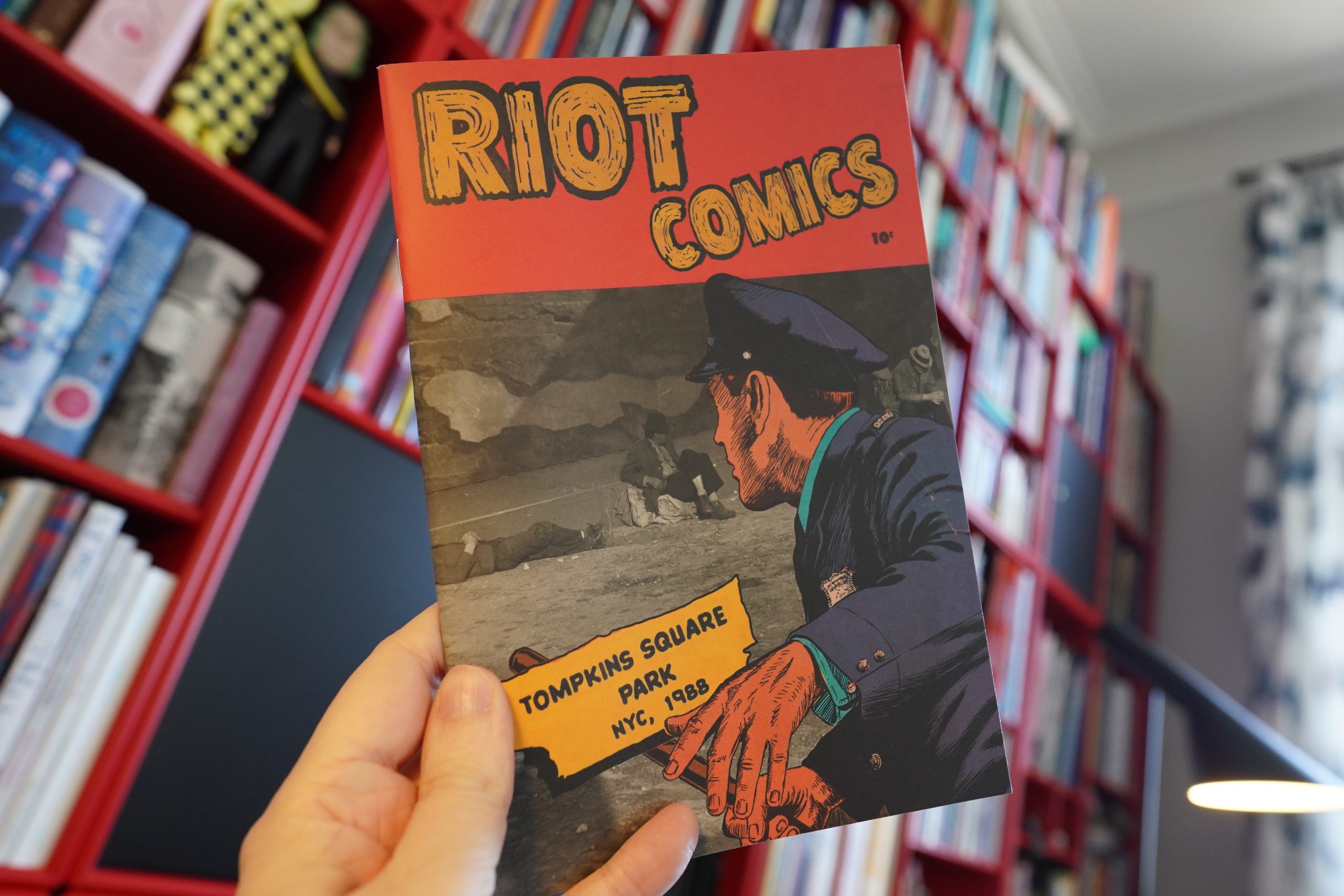
15:40: Riot Comics by Johnny Damm
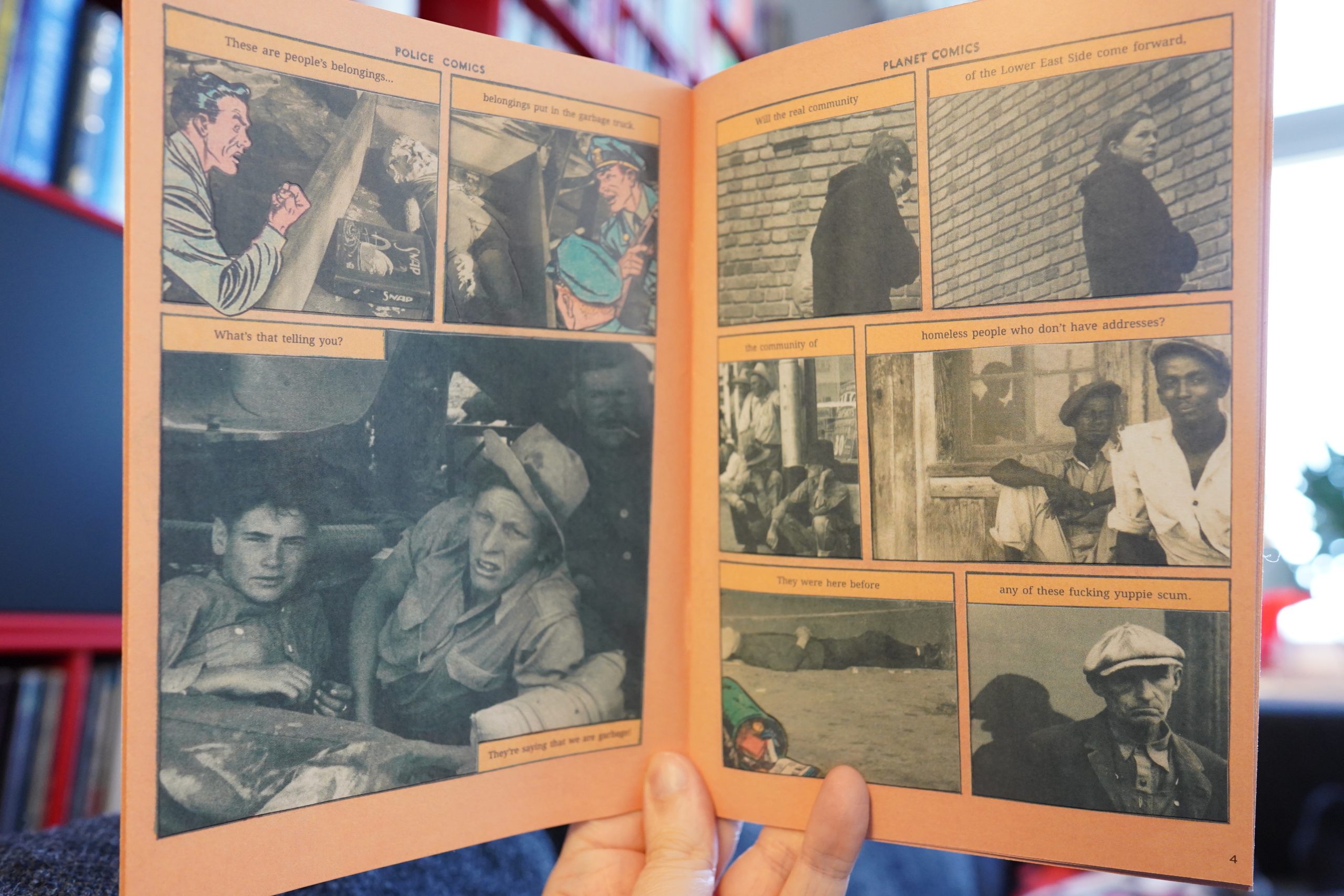
This is about the Tompkins Square Park protests, but doesn’t figure any depictions of that — instead it’s all 1930s snaps collaged with 40s comics.
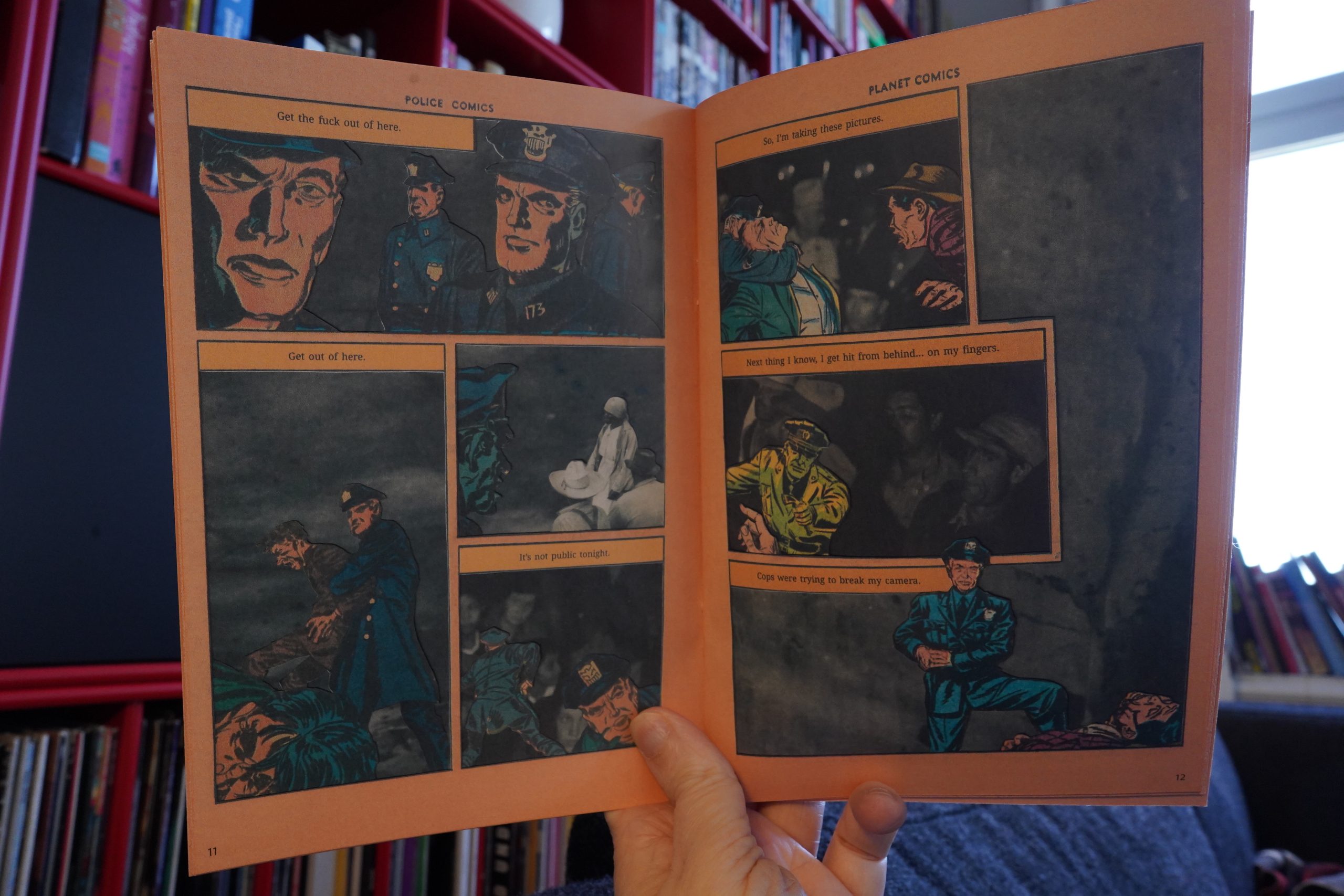
It’s pretty good. It works well.
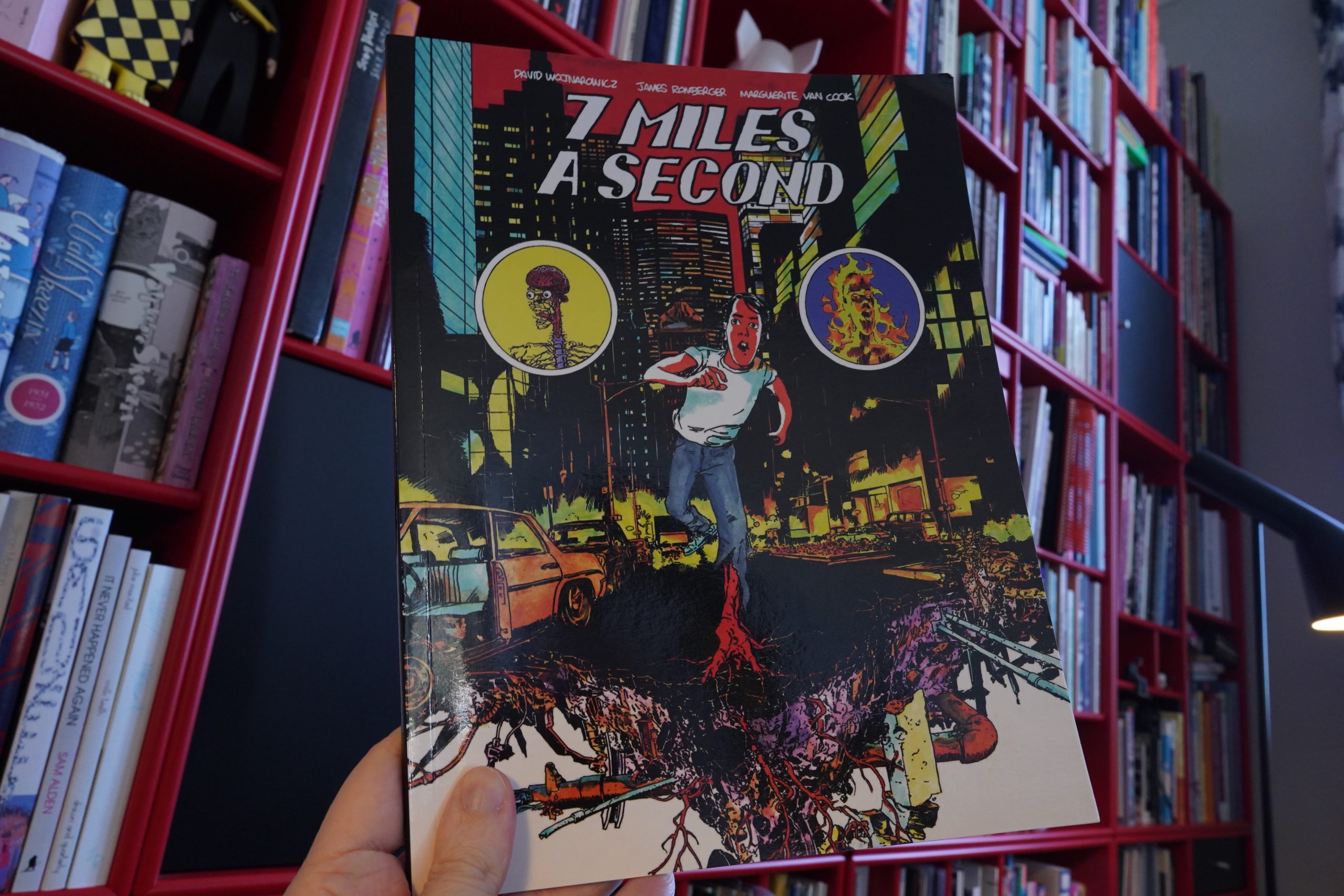
15:47: 7 Miles a Second by David Wojnarowicz, James Romberger, Marguerite van Cook (Ground Zero Books)
I thought I had this. I mean, I definitely have the original iteration of (some of) this material in World War 3 Illustrated, but I thought I had the DC album edition of this, too. But I’ve been (diffidently) looking for it for some time now, so I decided to just buy a new copy. This is from 2018. (Oh, and Fantagraphics did an edition in 2012?)
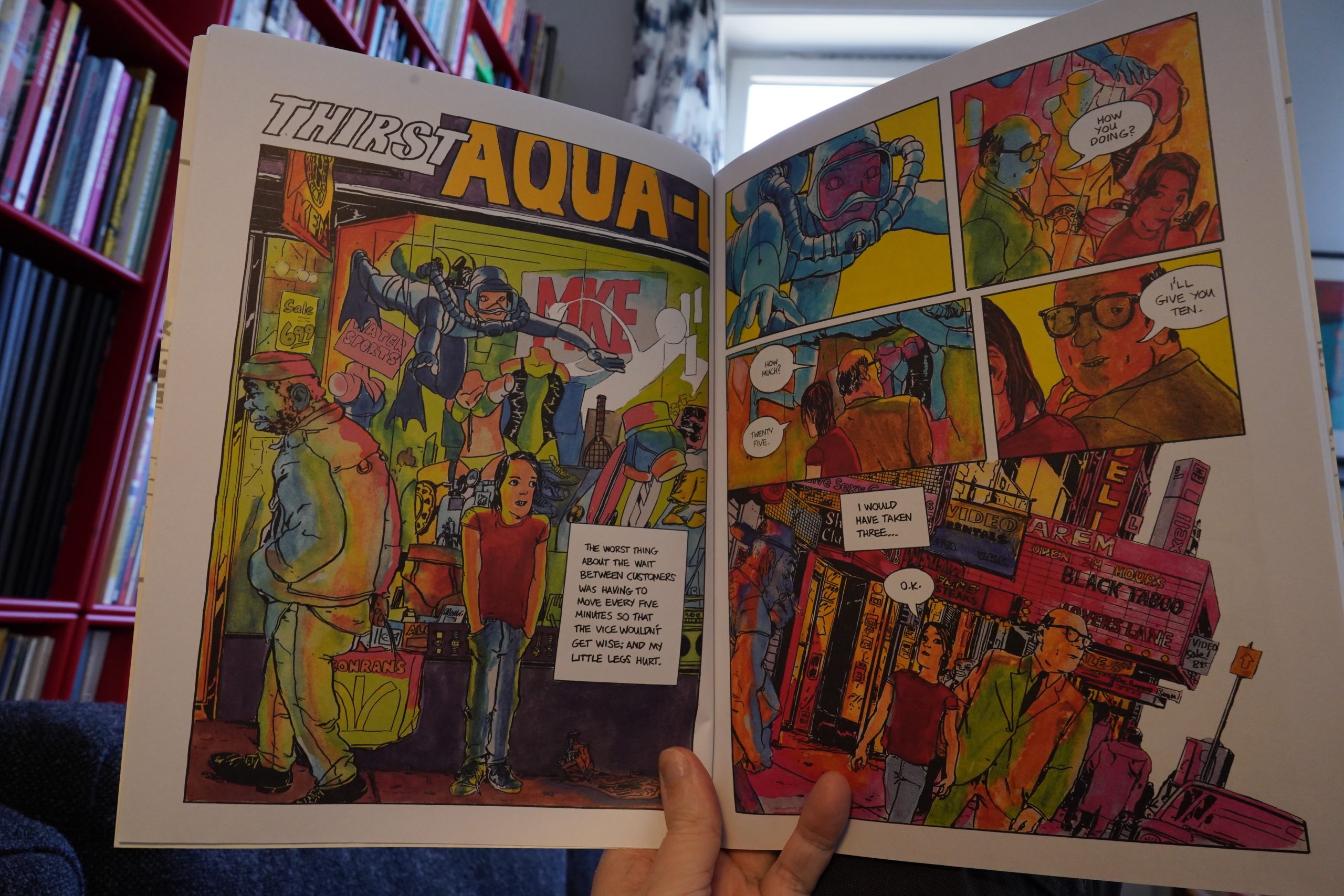
Wow, the colouring on this is absolutely insane. I love it!
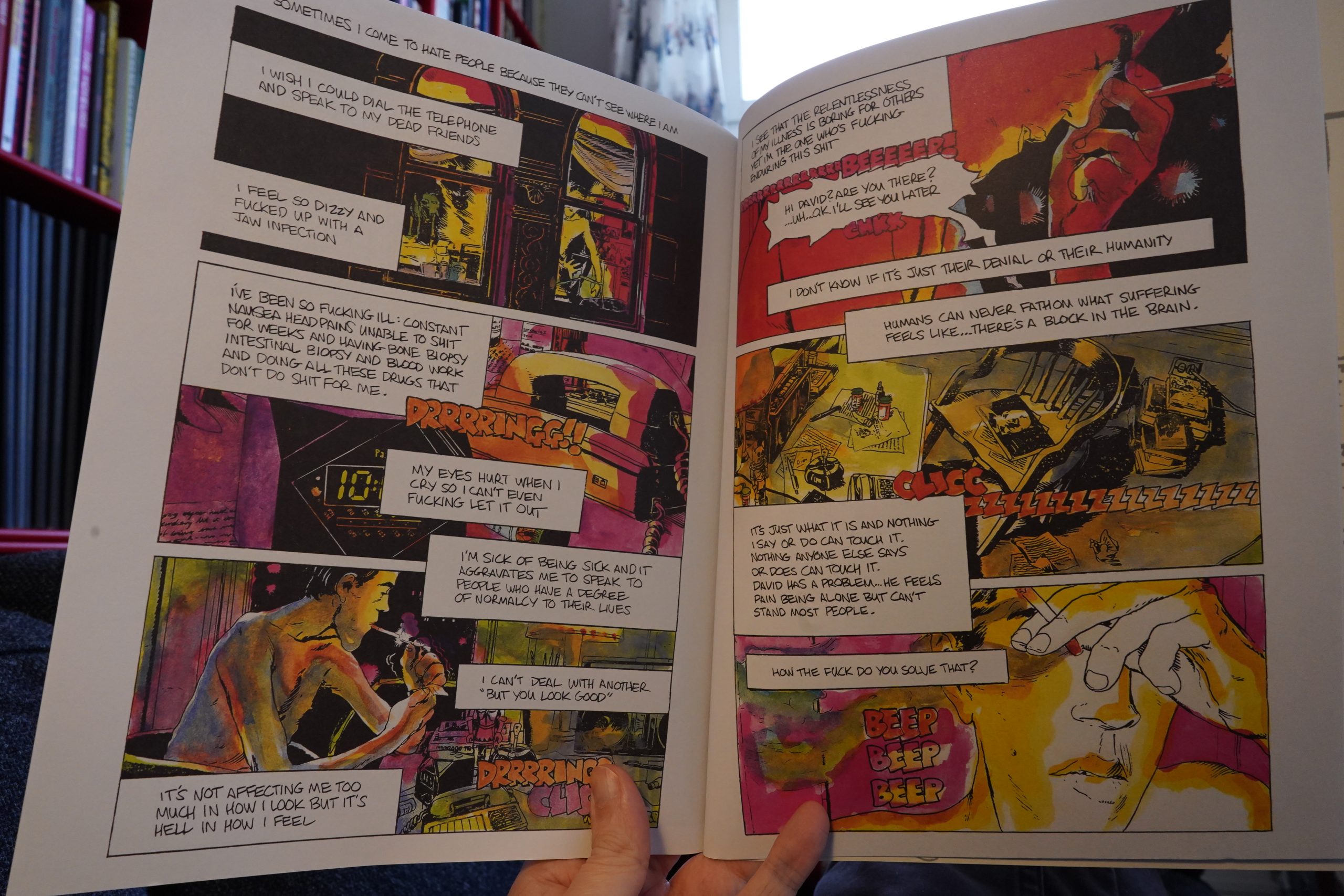
And I don’t think I’ve ever read this before. Romberger’s artwork is perfect — the storytelling flows wonderfully, and it packs a huge emotional wallop. Wonderful book.
| The Keith Tippett Group: How Long This Time? Live 1970 | 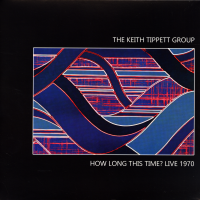 |
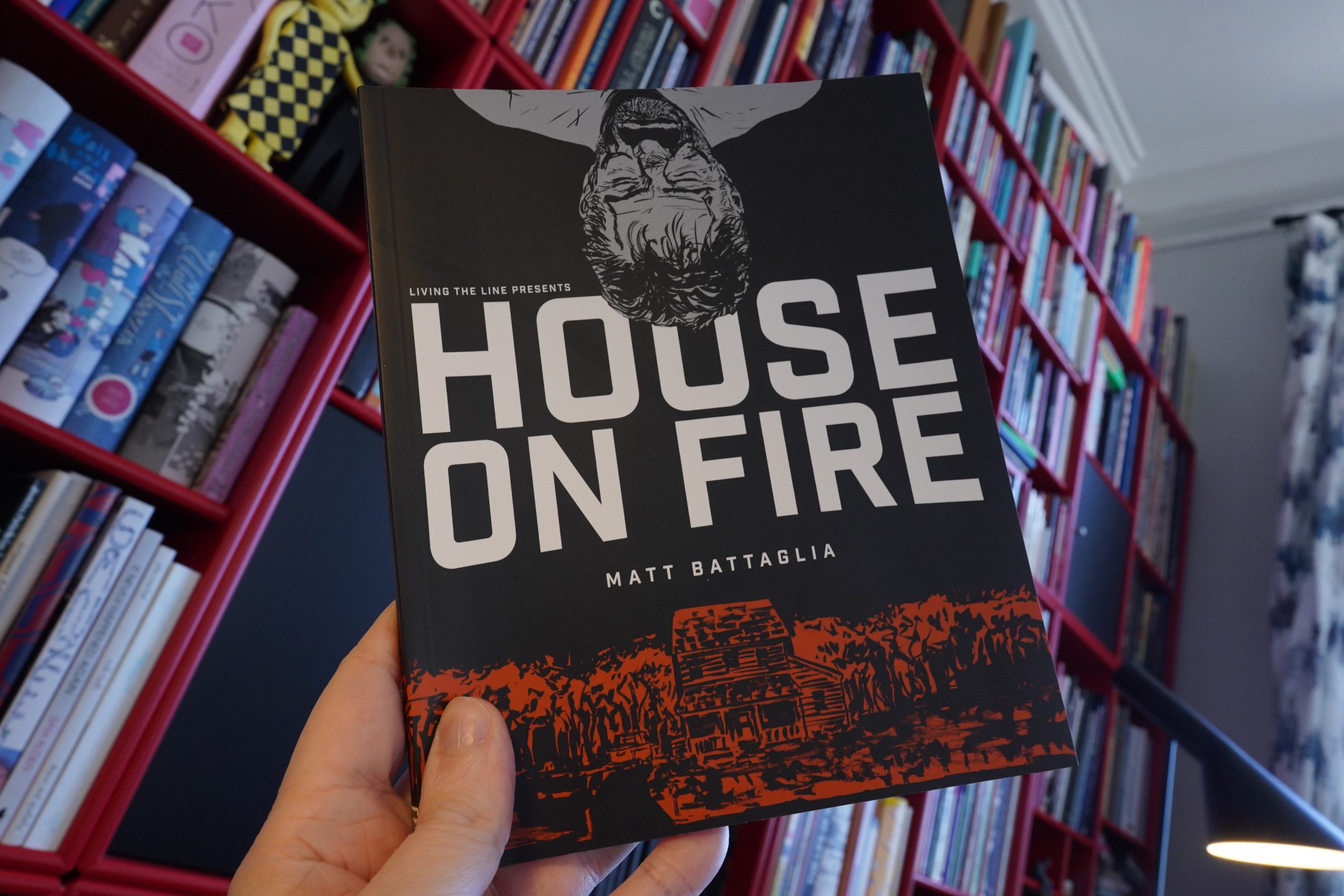
16:23: House on Fire by Matt Battaglia (Living the Line)
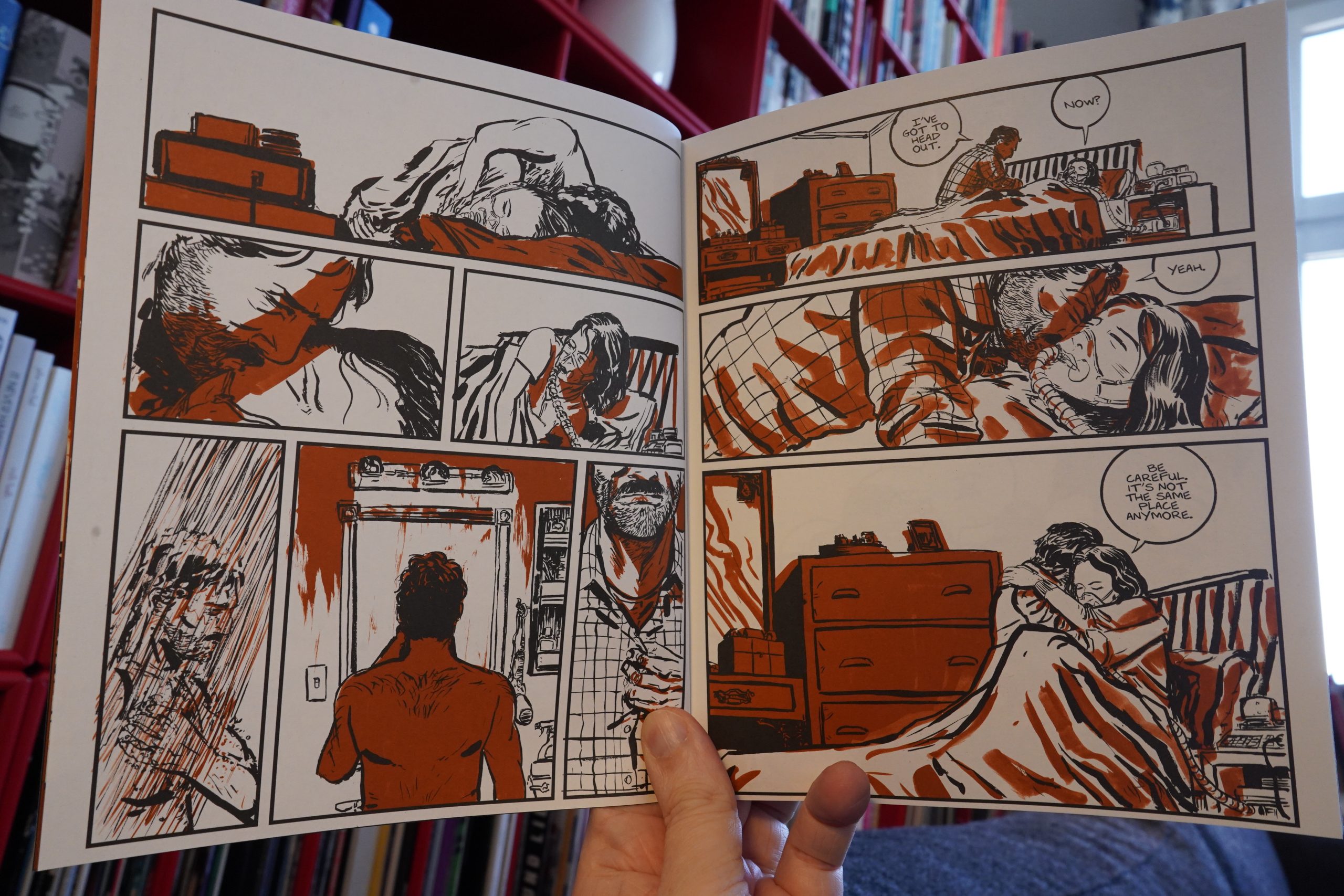
Well, that colour is certainly a choice. The publisher describes it (in the afterword) as “orange”. Perhaps he has strange LED bulbs at home?
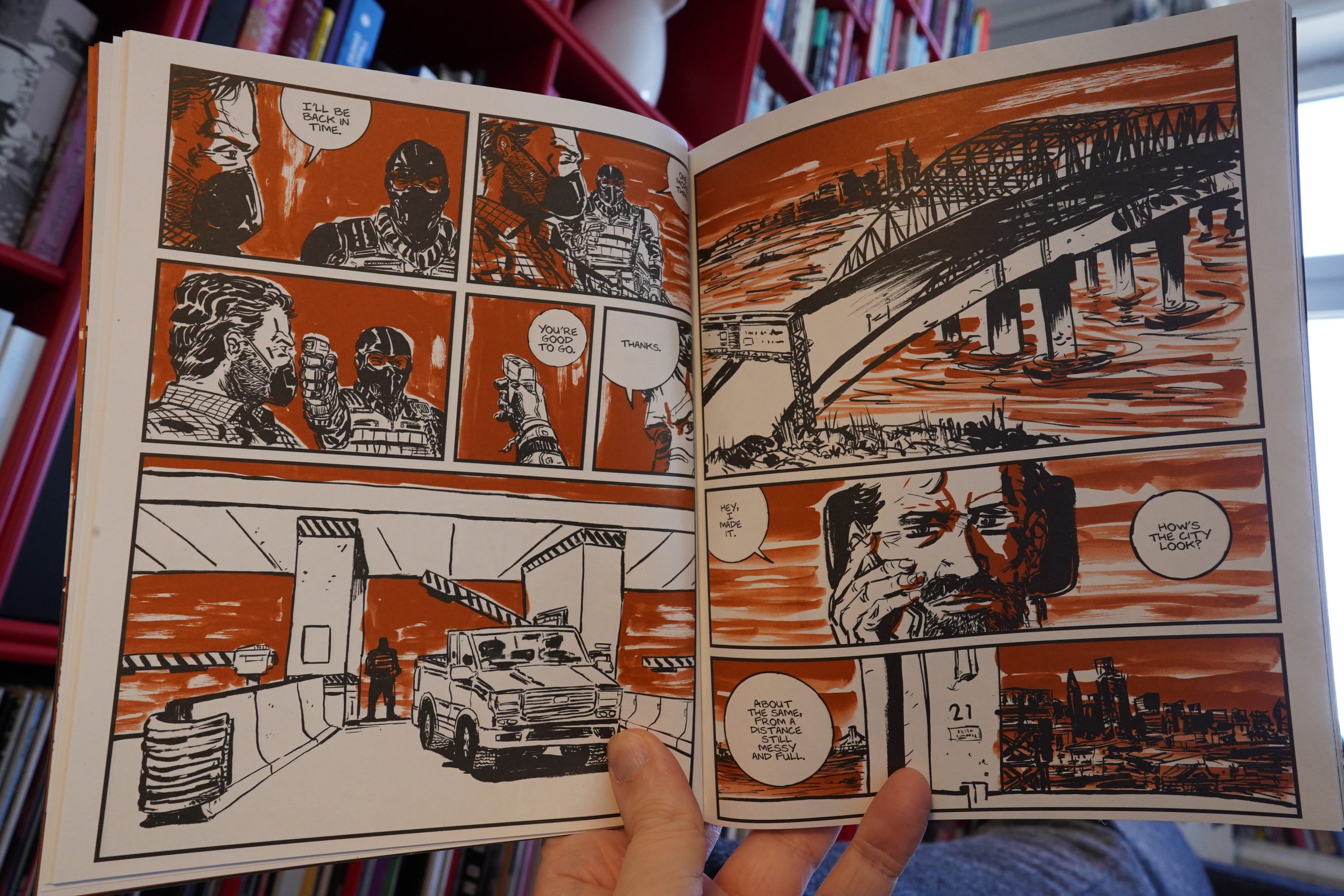
The story is a post-apocalyptic take on Corona, and… it’s barely there. I mean, the story. It’s well told, but not really… interesting?
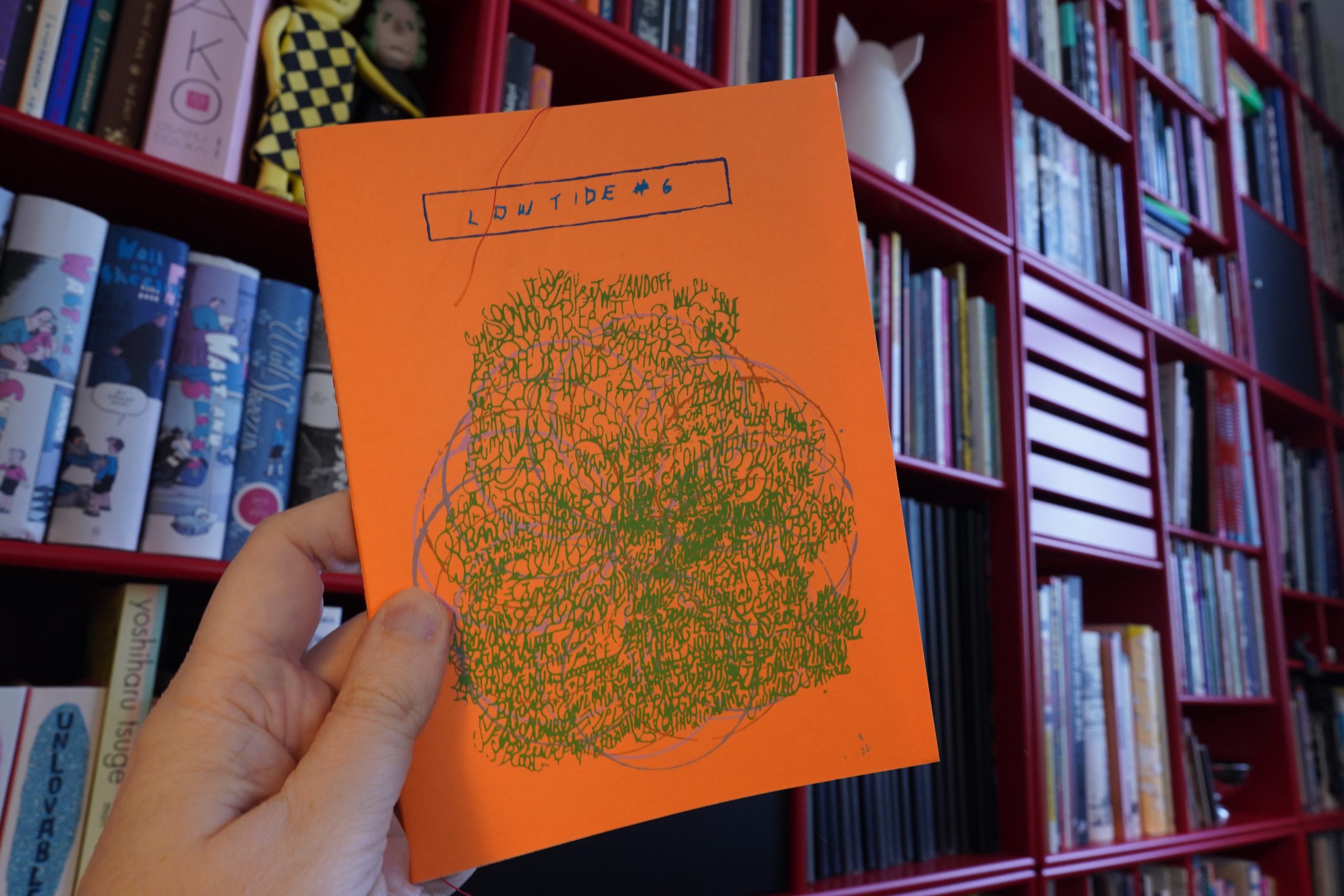
16:35: Low Tide #6 by Paper Radio
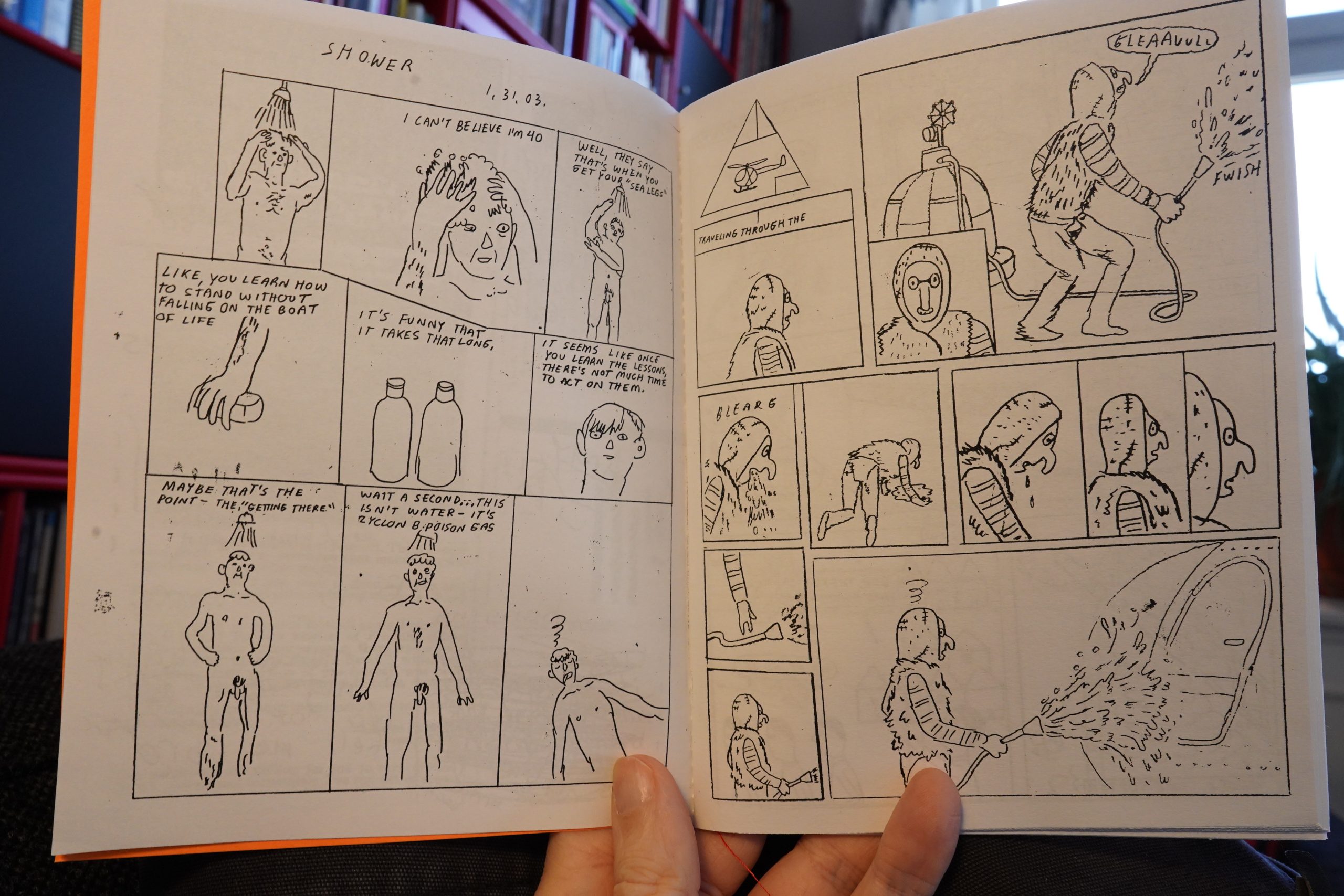
Hey… this is from 2003? Uhm… I must admit I have no recollection of buying this? Oh well.
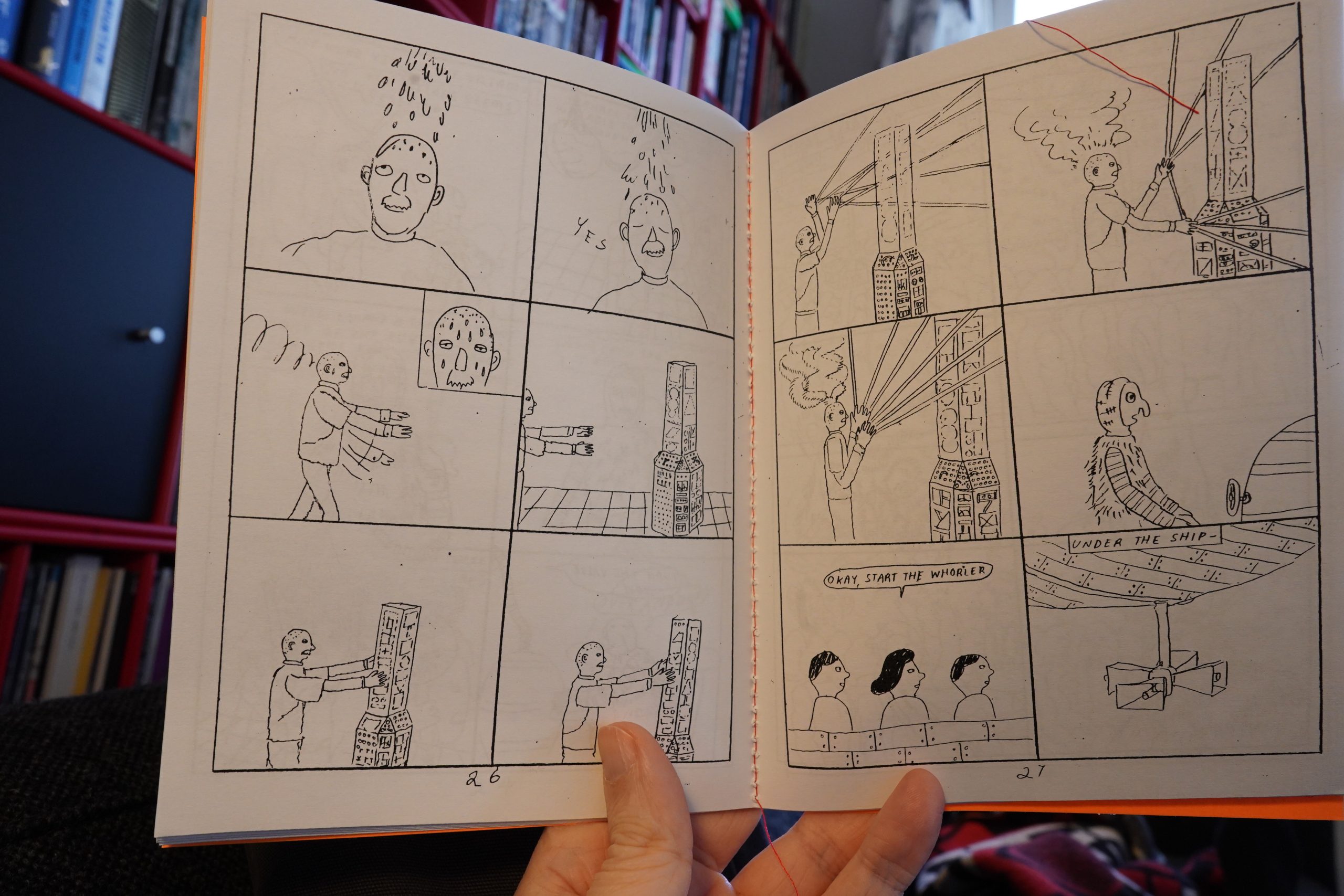
It’s great! Very oddball little story — freeflowing and loose, and “stapled” on a sowing machine, I guess?
OK, I should make something to eat now… back in a while.
| Charli XCX: Crash | 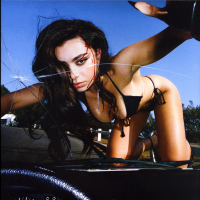 |
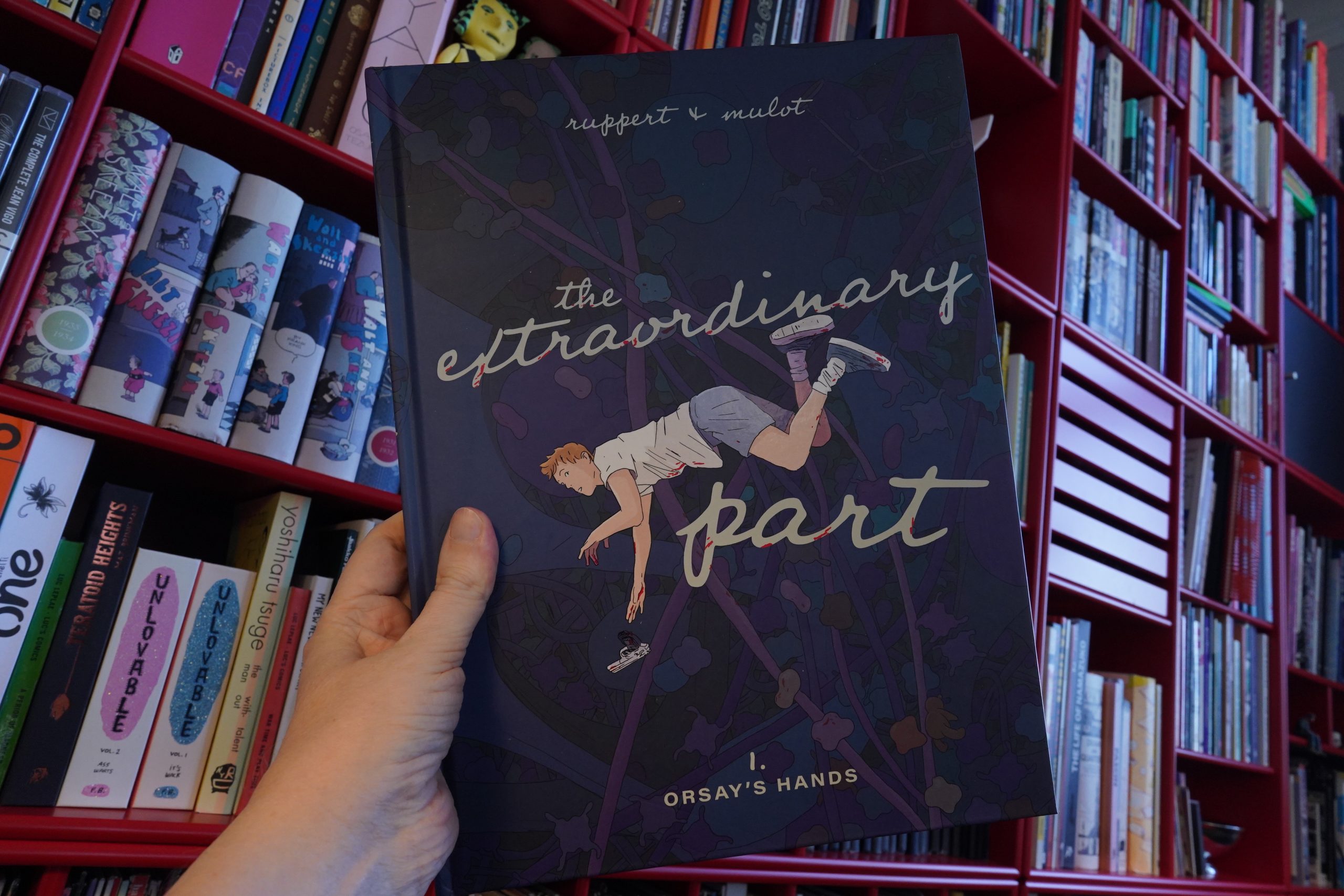
17:15: The Extraordinary Part I by Ruppert & Mulot (Fantagraphics)
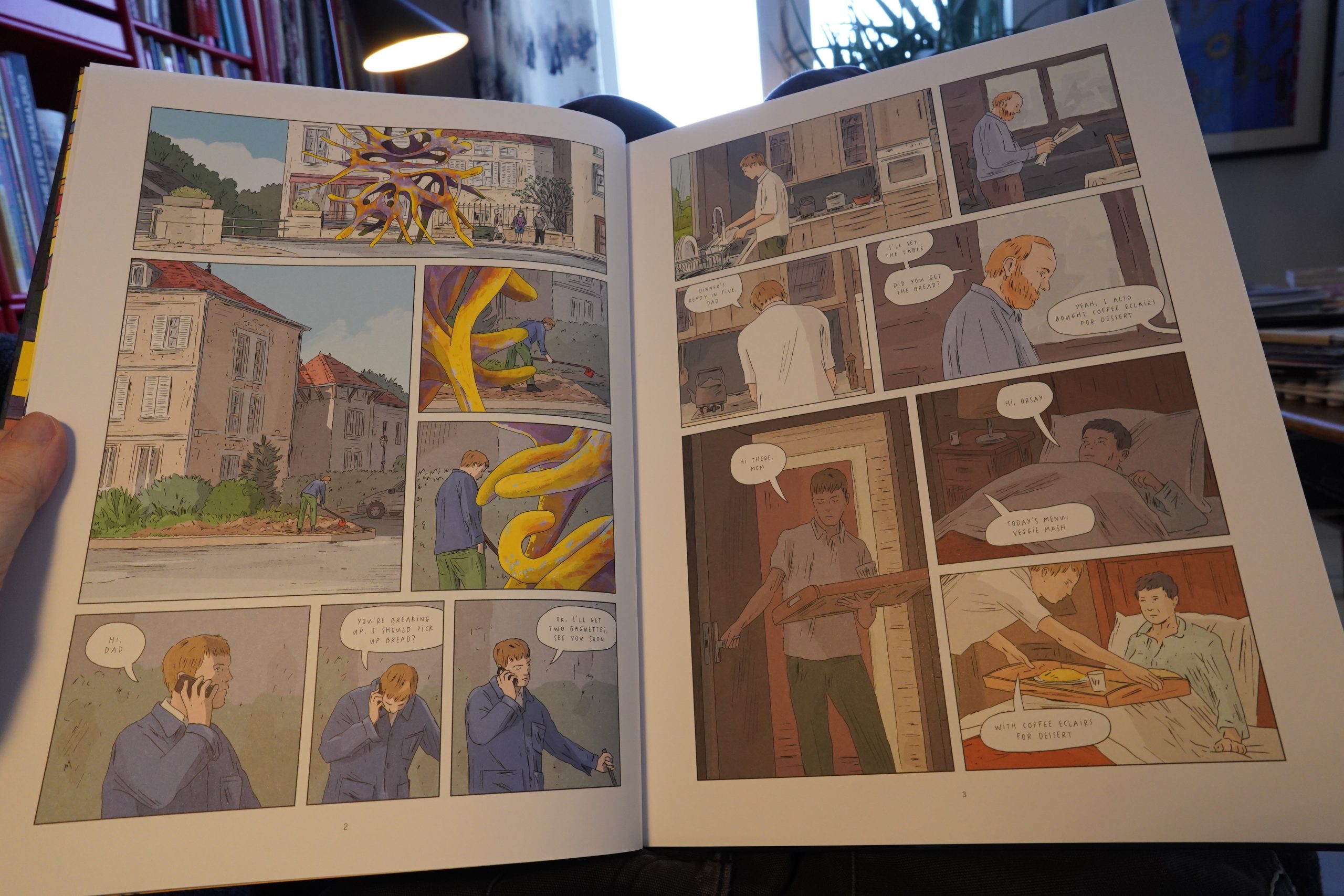
This isn’t what I expected from this pair at all. It starts off as a very down-to-earth kind of science fiction thing…
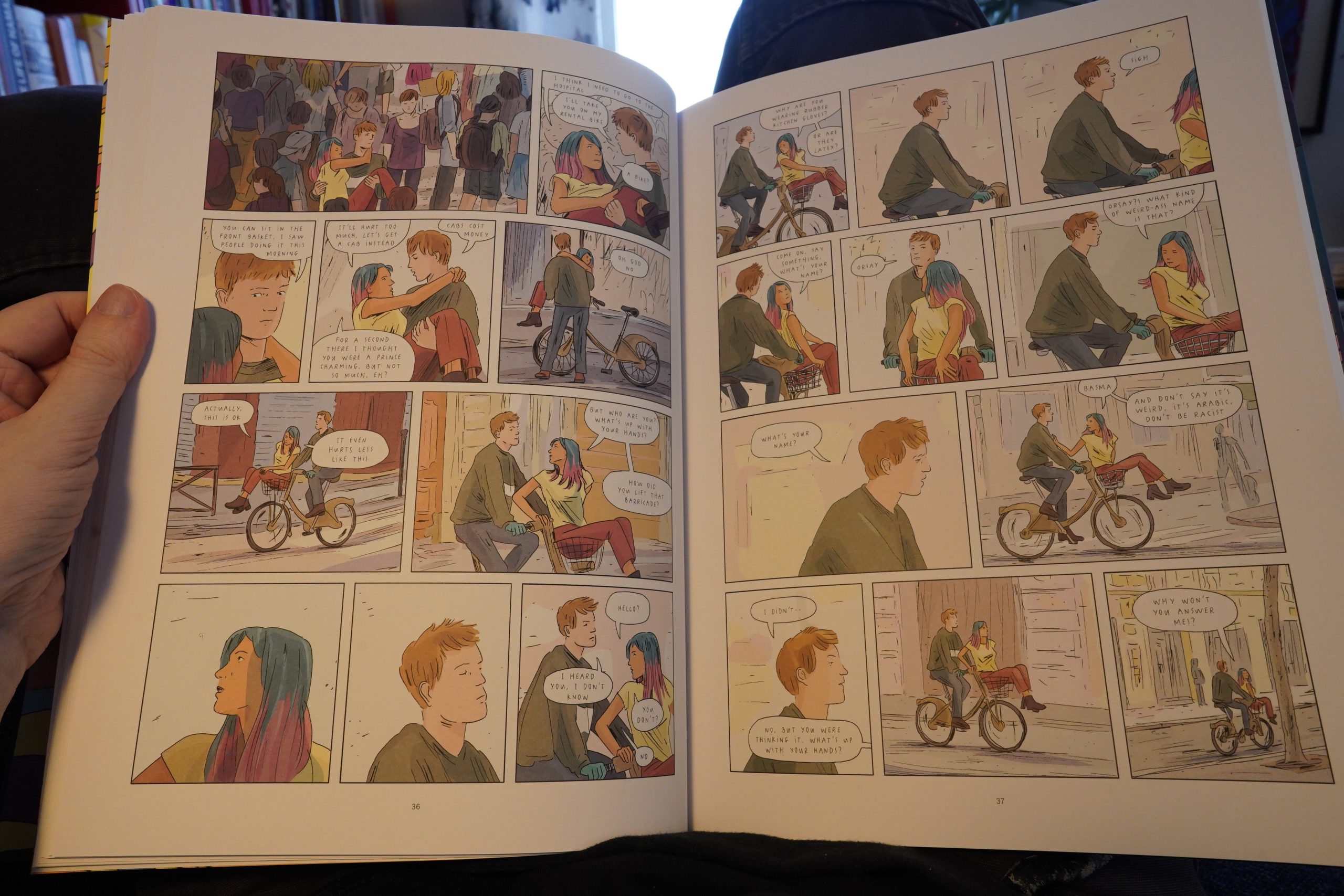
… but then turns into an action/adventure type of things. With super-heroes, I guess. It’s quite strange, and I’m not sure it’s altogether successful. It does have a good kind of atmosphere going, and while the storytelling is sometimes a bit on the choppy side, it’s quite likeable. (Especially the artwork — very sensitive colouring.)
| Burial: Hospital Chapel | 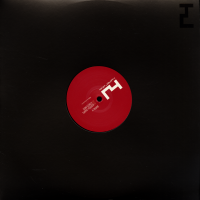 |
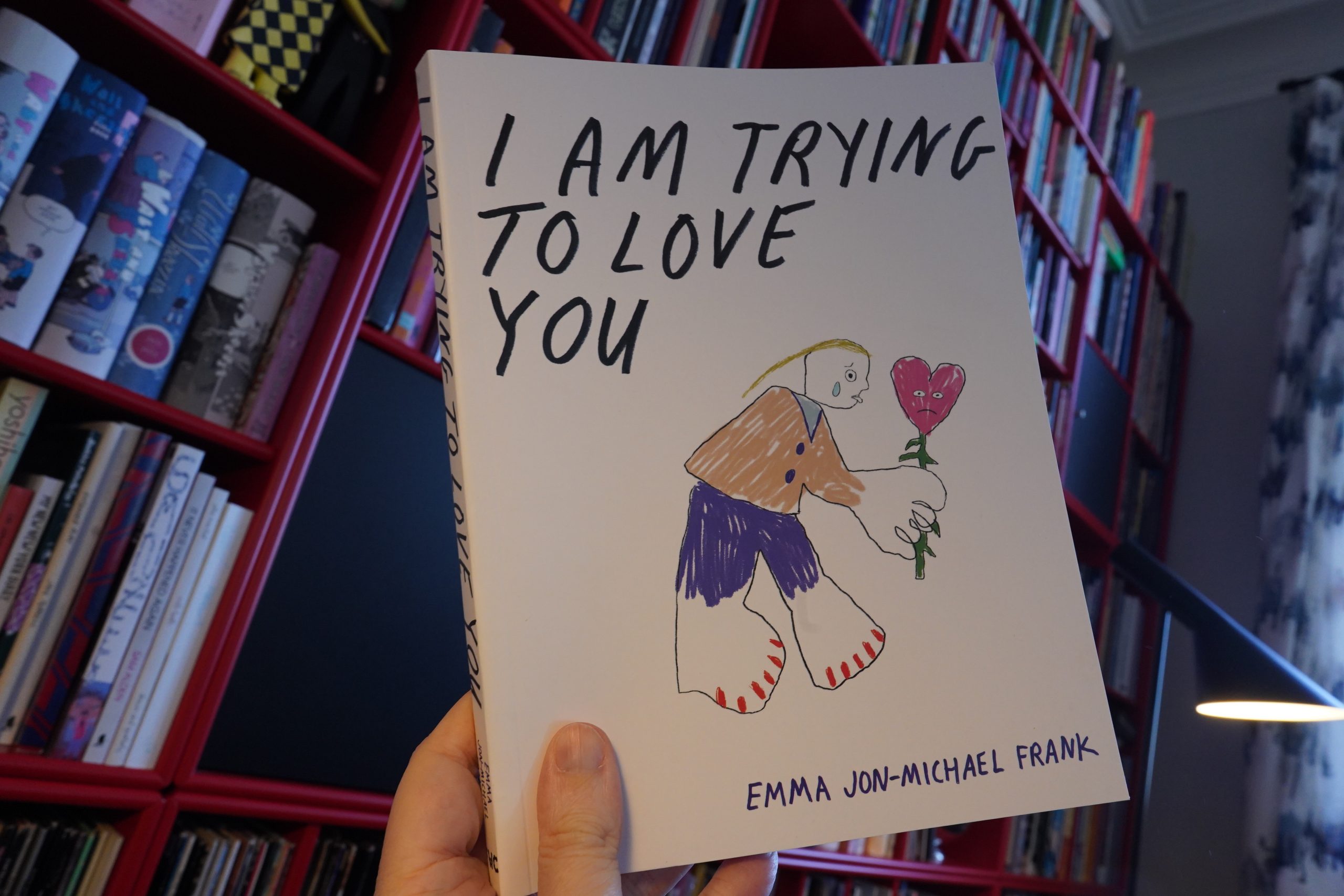
17:58: I Am Trying To Love You by Emma Jon-Michael Frank (Floating World)
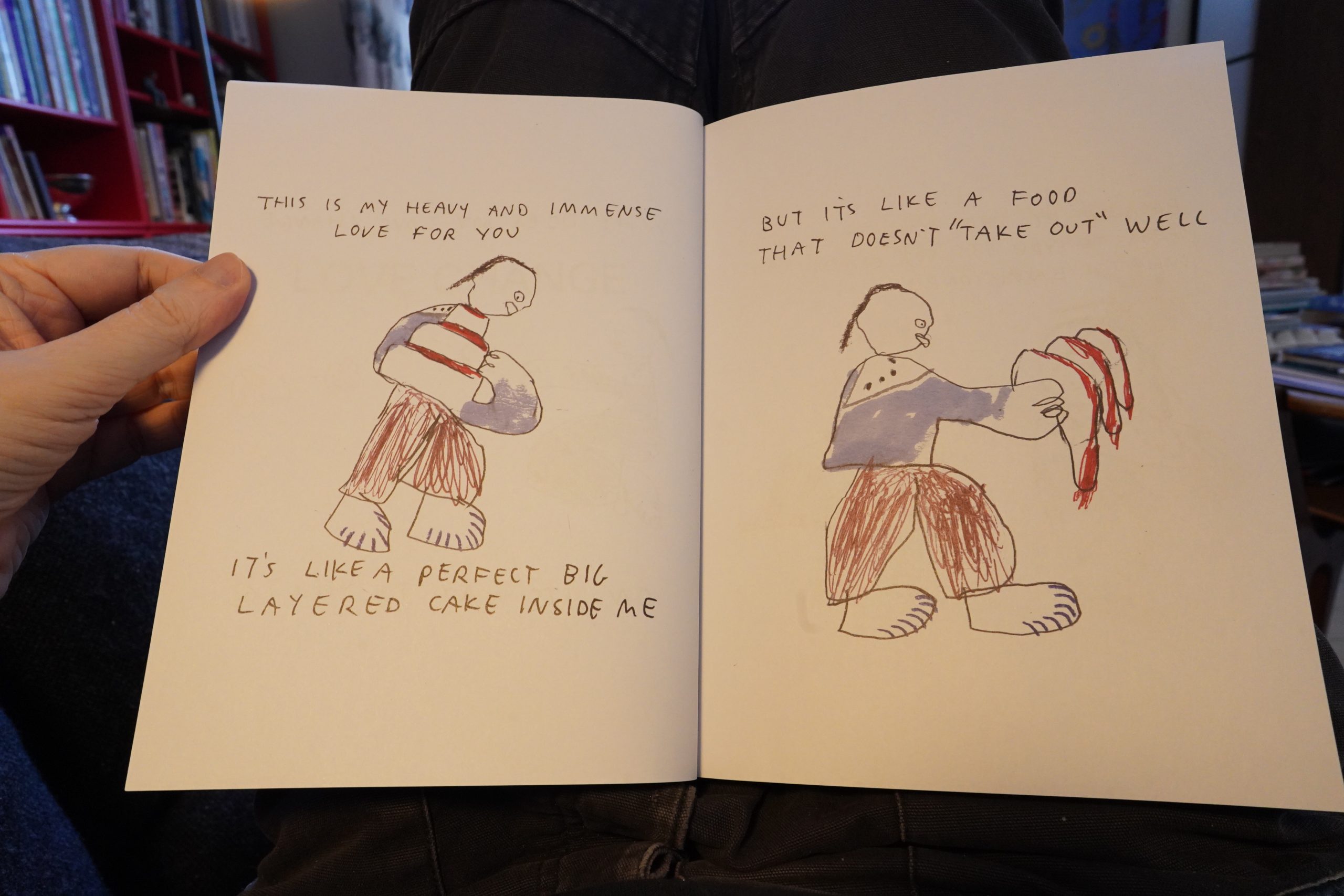
This isn’t really my kinda thing.
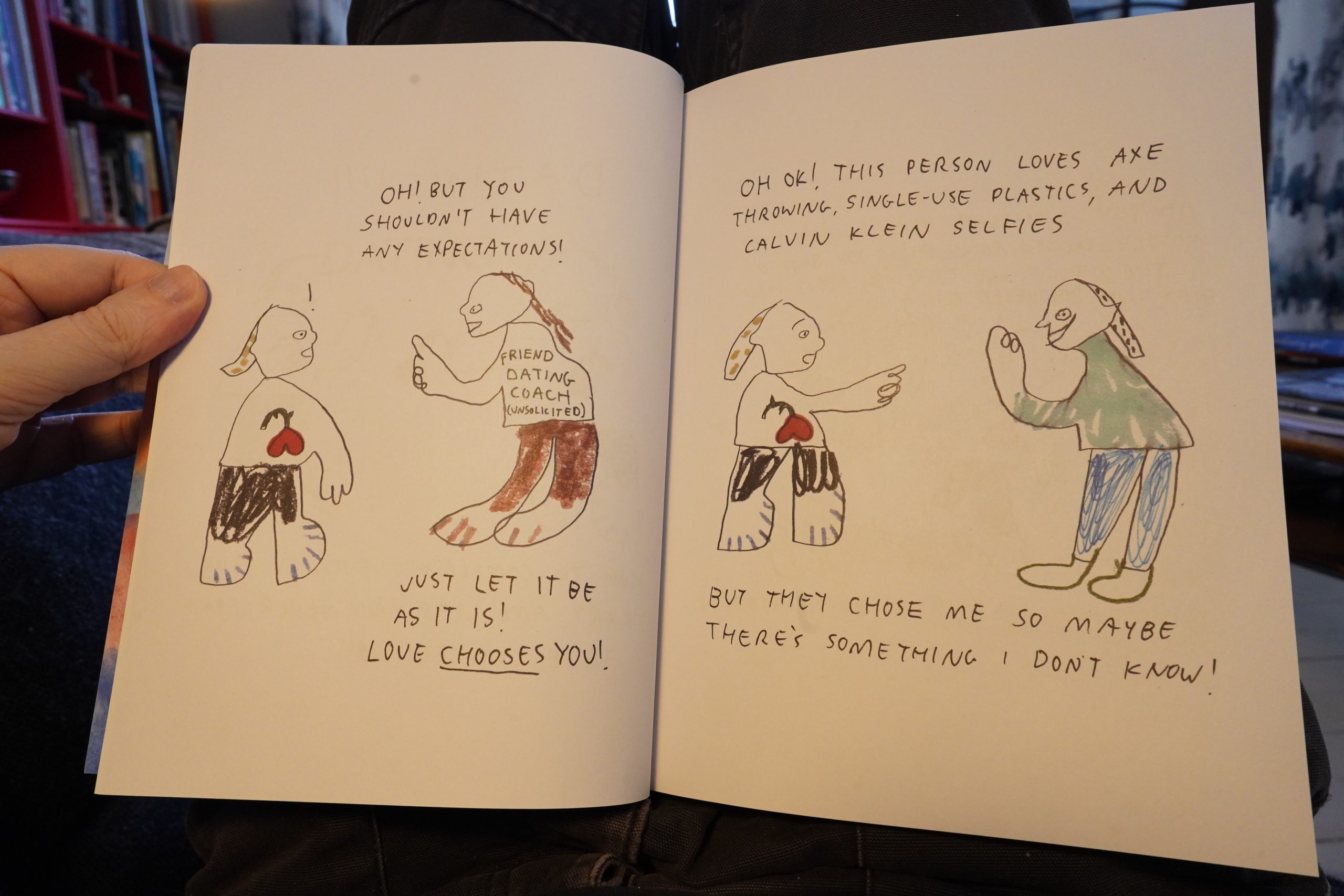
It seems heartfelt enough, but…
| E Ruscha V featuring Peter Zummo: Thinking a View | 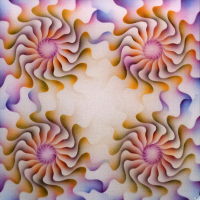 |
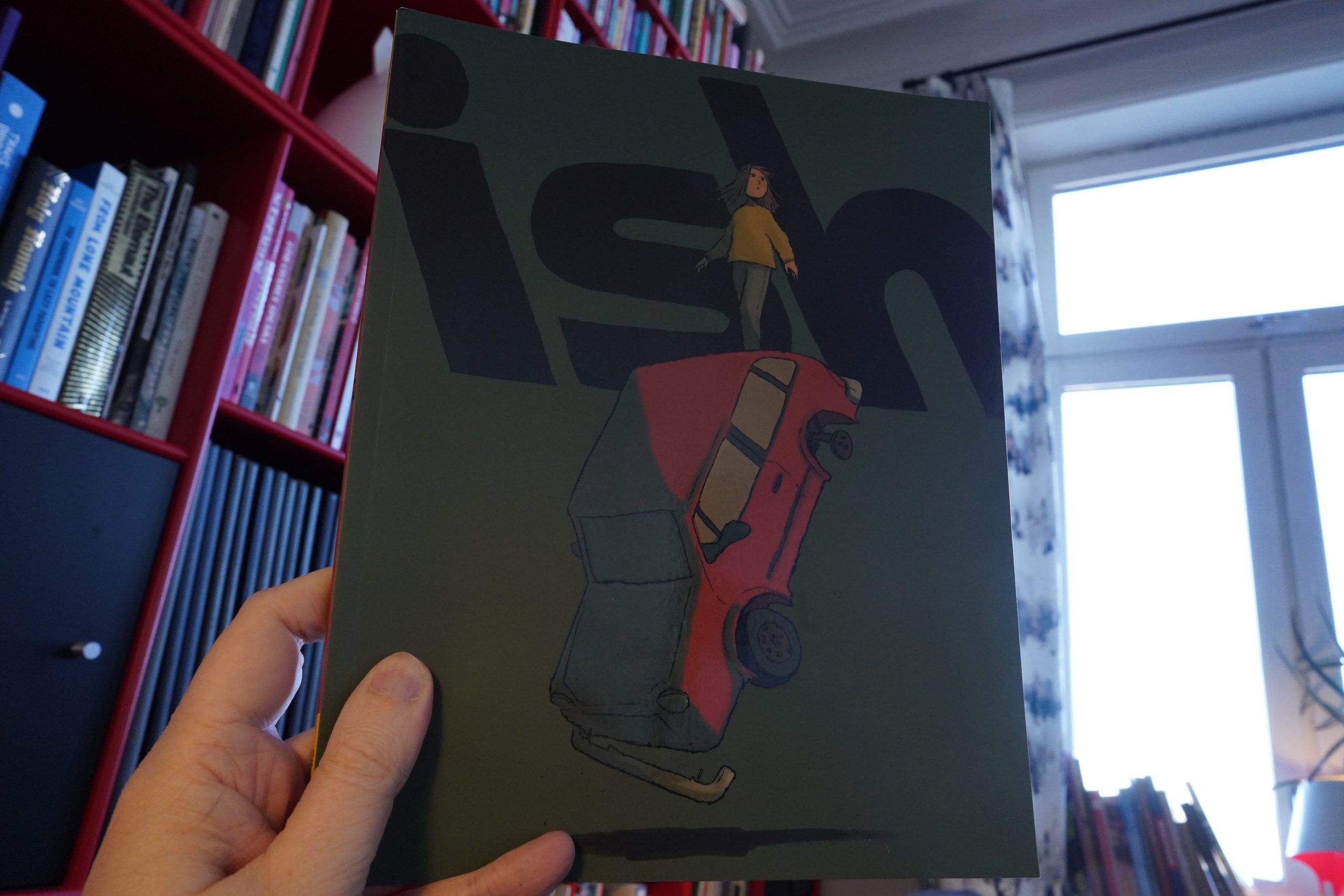
18:16: Ish by Adam de Souza (Silver Sprocket)
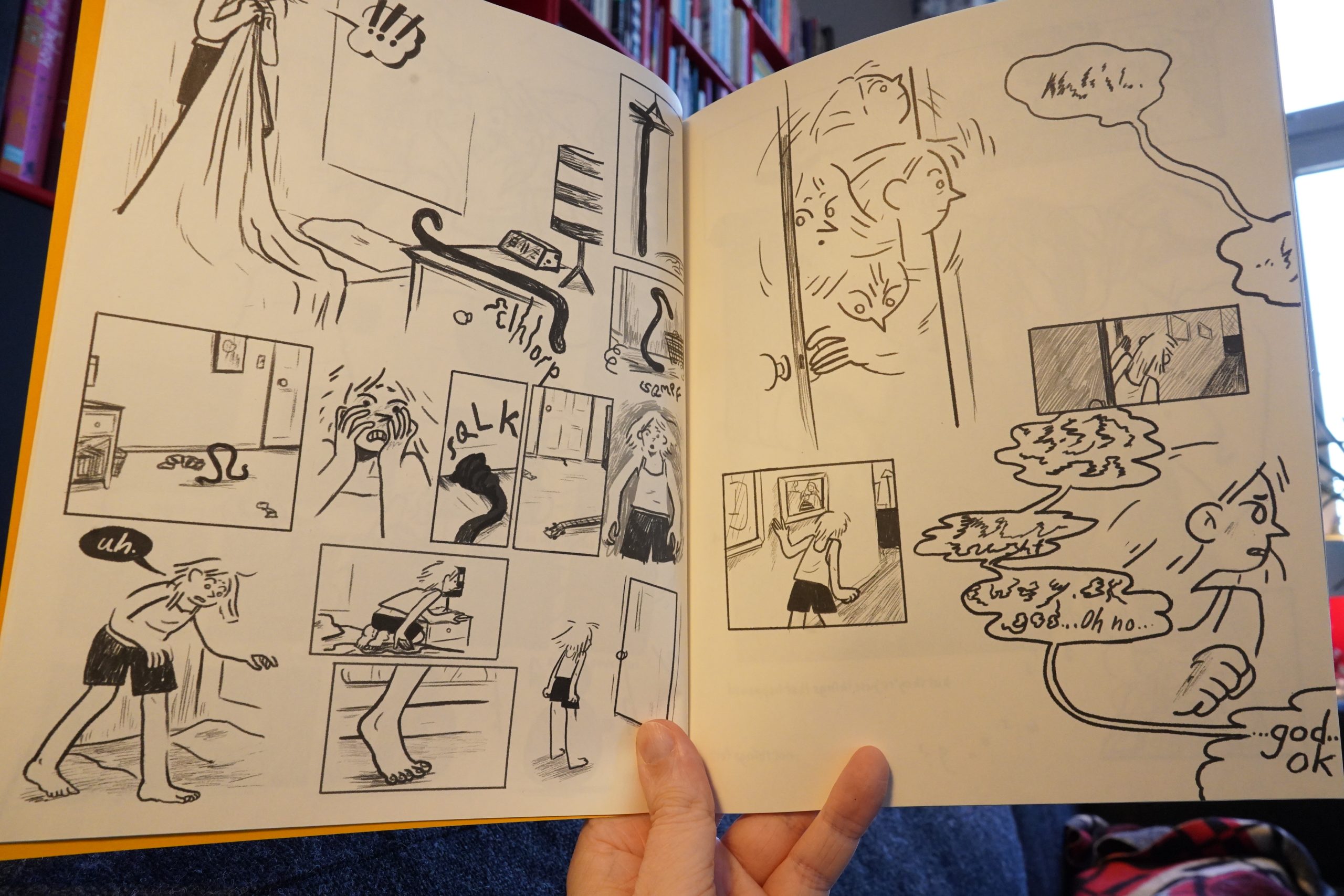
This is a collection of several previously published books, but it feels pretty cohesive anyway.
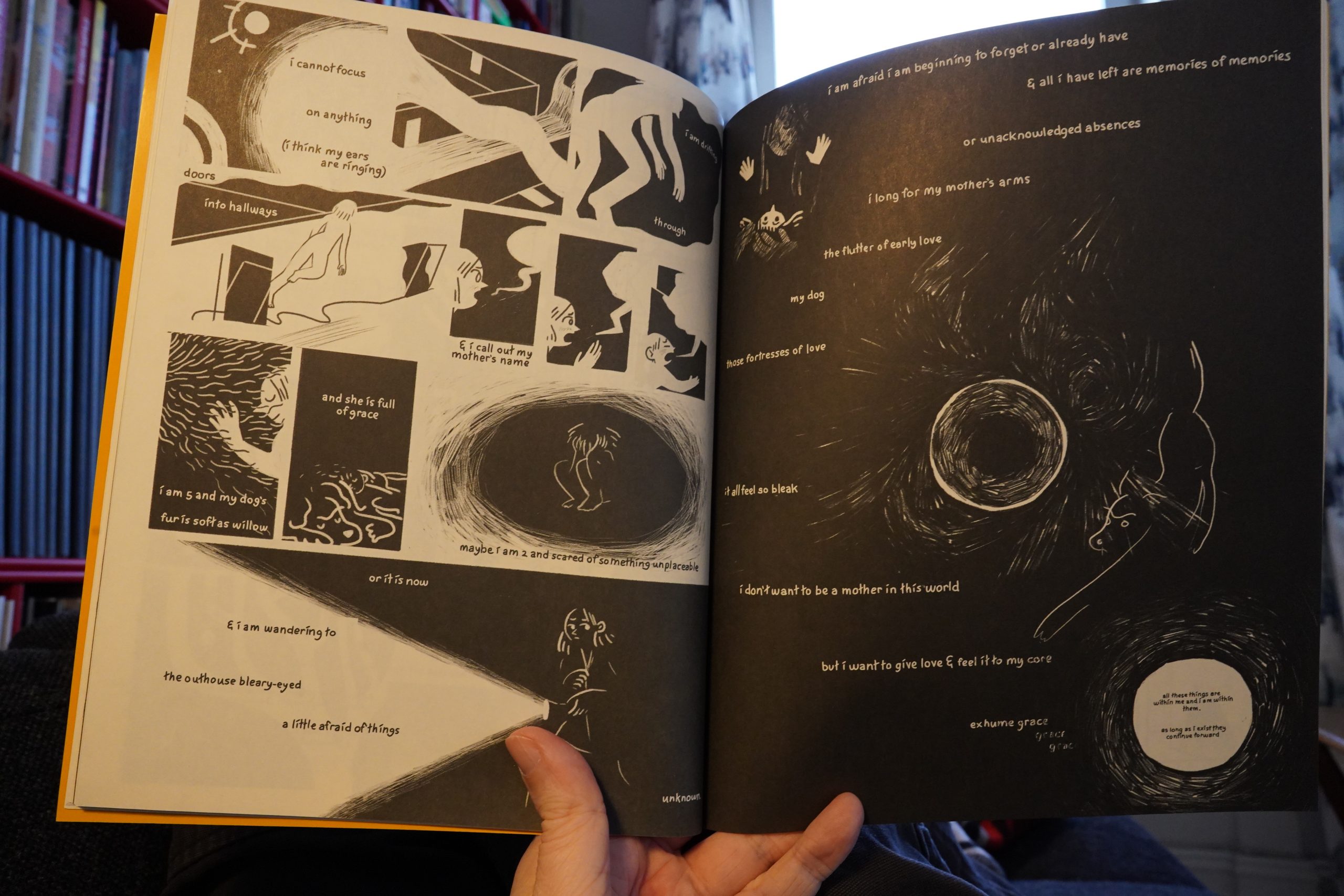
I like it. It’s got mood going on.
OK, I think I’m fading. Losing ability to form words. Perhaps just a couple more…
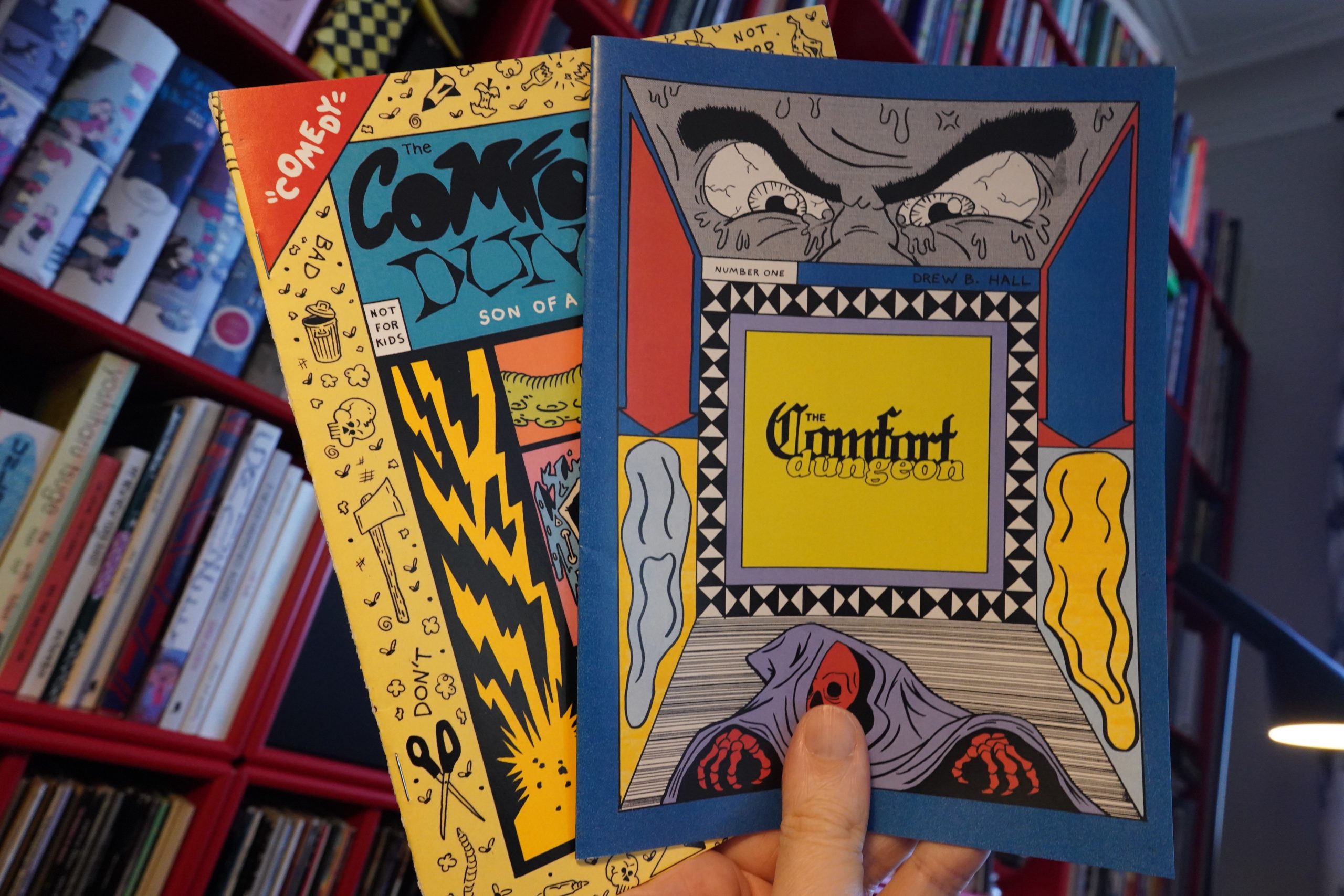
18:27: Comfort Dungeon #1-2 by Drew B. Hall
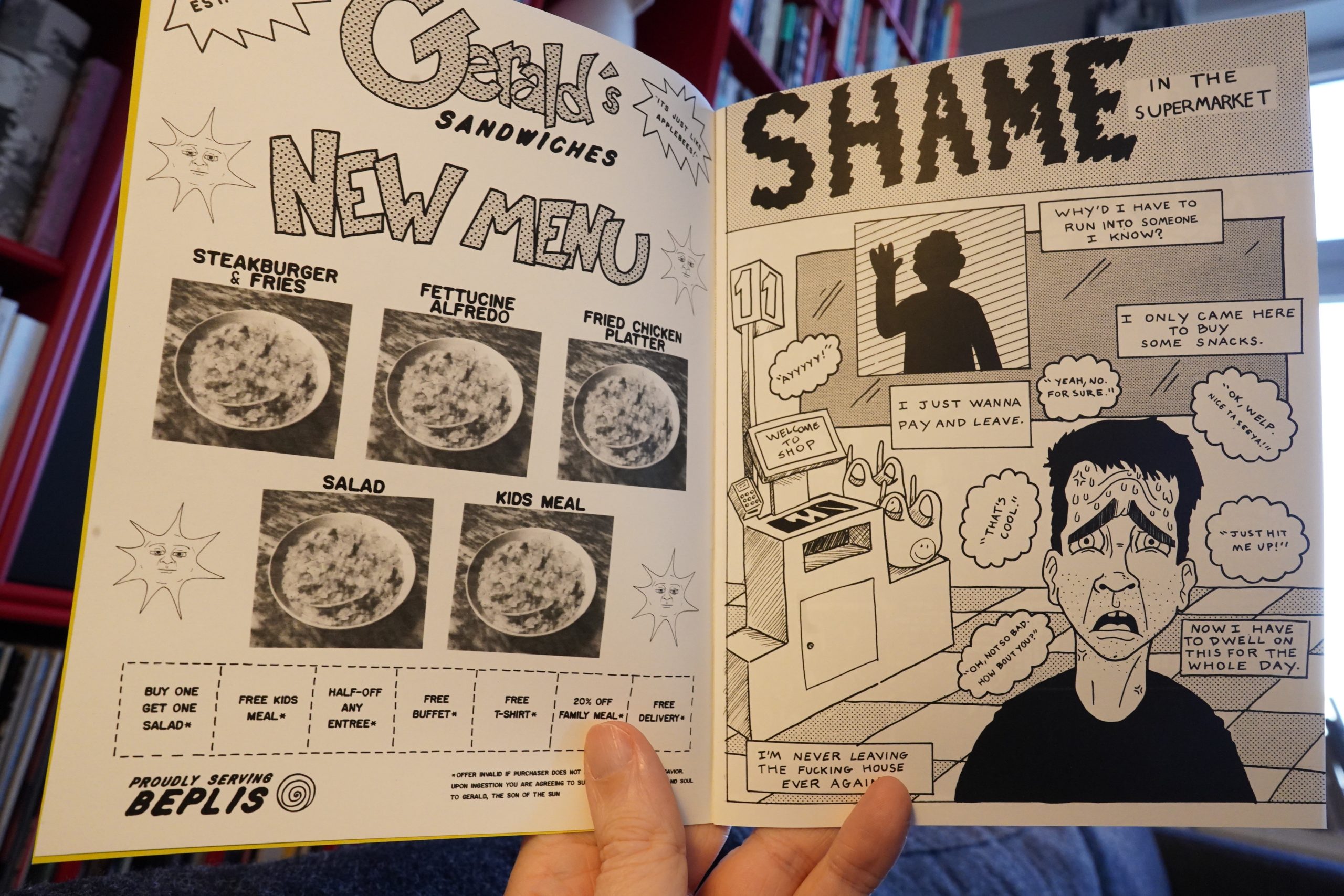
This is basically a collection of jokes… and it’s pretty amusing.
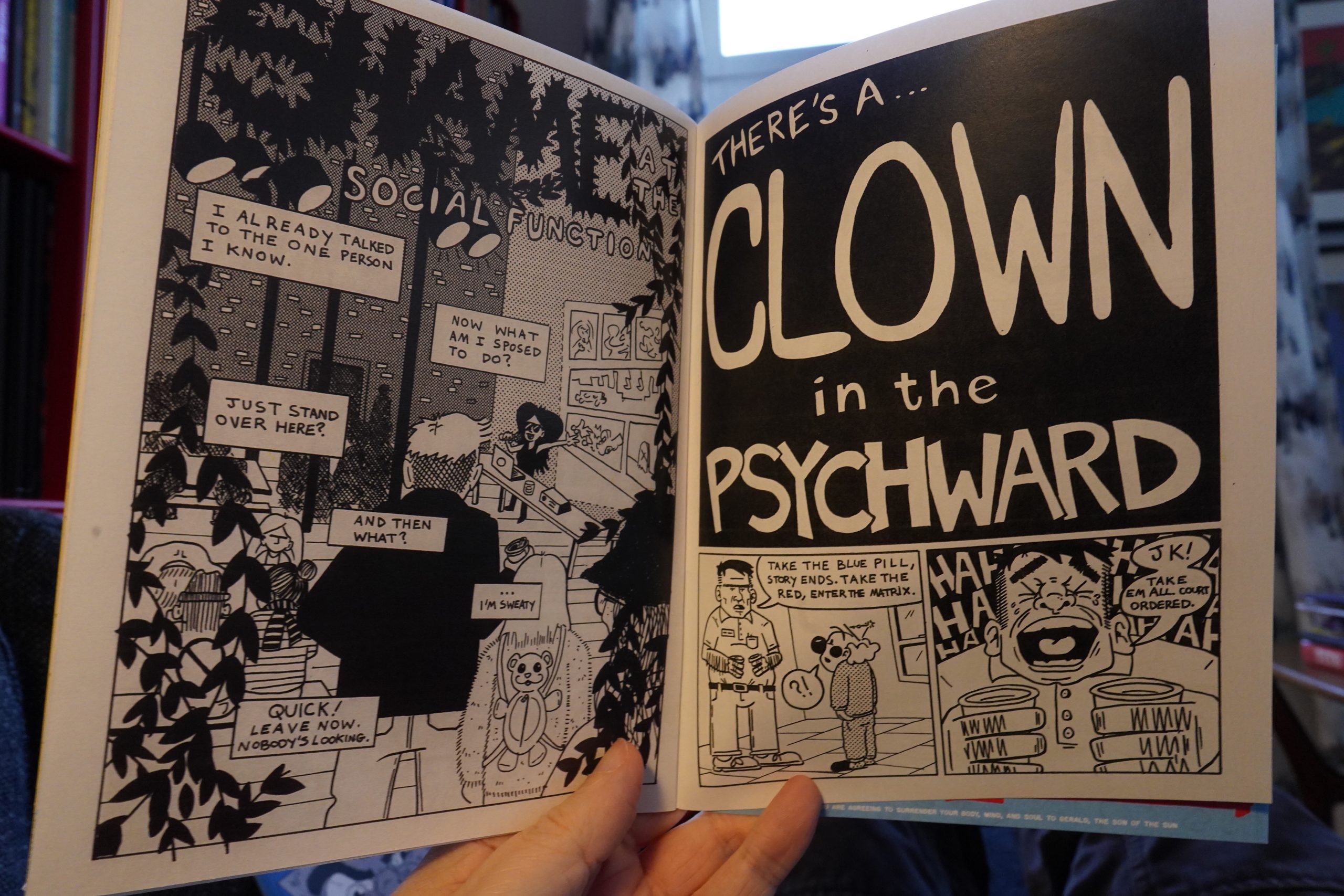
Lots of social anxiety, which is nice.
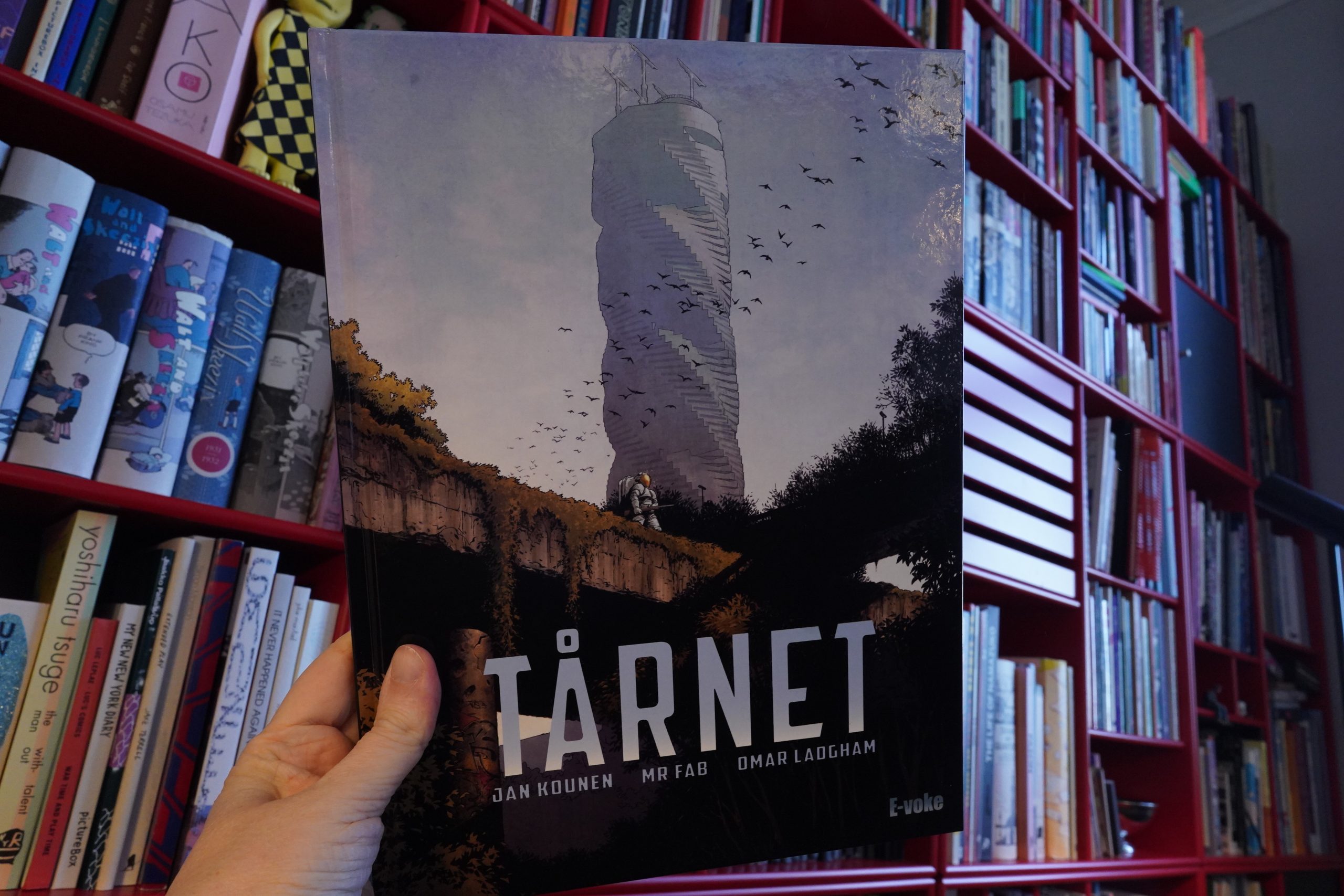
18:35: La tour 1 by Kounen/Mr Fab/Ladgham (E-Voke)
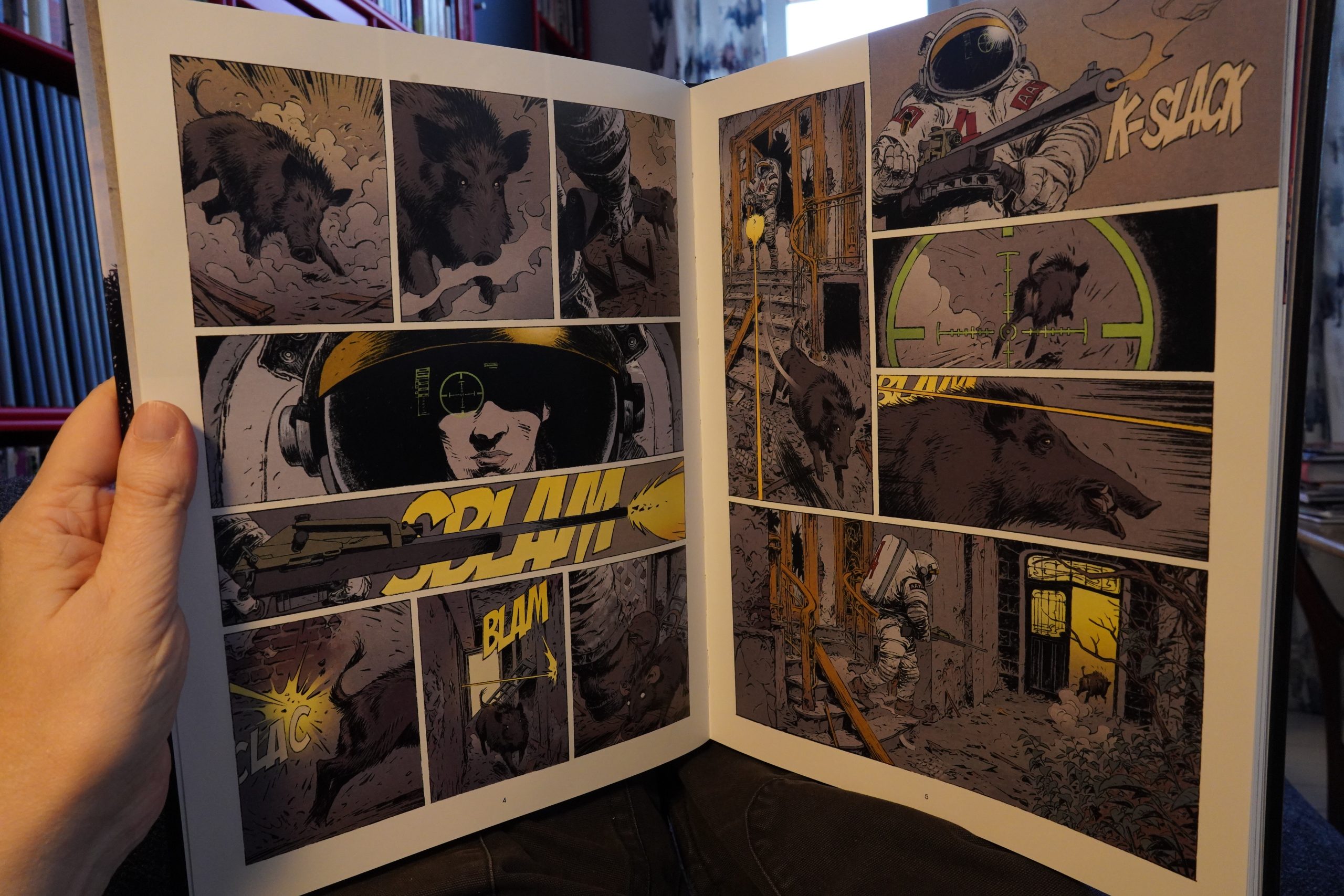
This is a post-apocalyptic thing that was originally going to be a TV series. I assumed the pitch was rejected, because it ended up being a comic book instead.
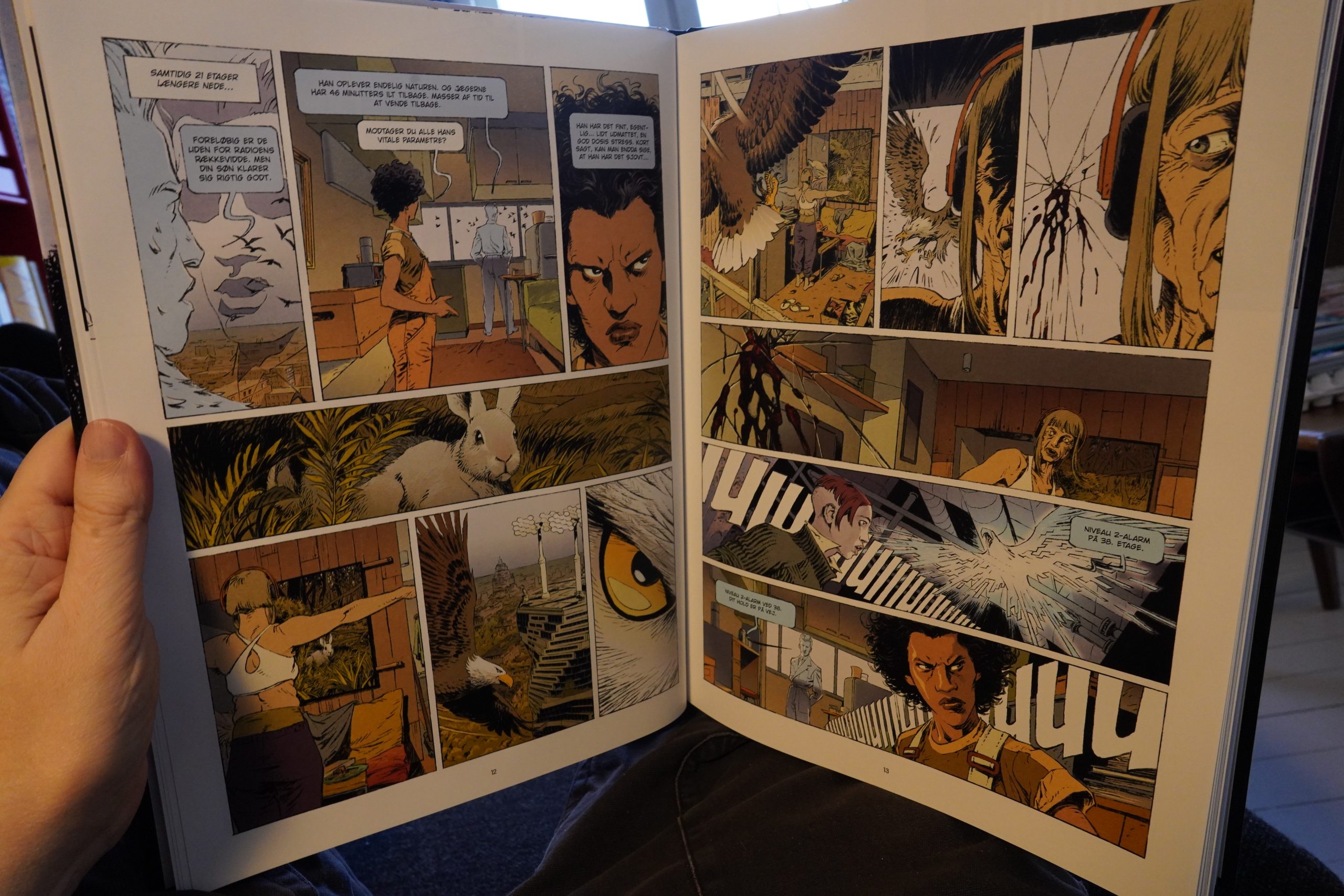
So my expectations for this was below zero, and… it turns out to be really well done! I’m flabbergasted. It does retain some TV series flavour — we’re introduced to a large number of characters very efficiently, and each character has er character, and all that jazz. But it’s just done so well, and we’re introduced to so many intriguing concepts so efficiently that it’s hard not to be dazzled.
So… three thumbs up?
| Sidsel Endresen & Jonas Fjeld: Etterlatte sanger | 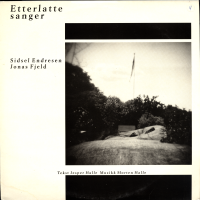 |
18:57: The End
Now my branes are all tired, so I’m gonna go vegetate with a novel a bit before going to bed.
